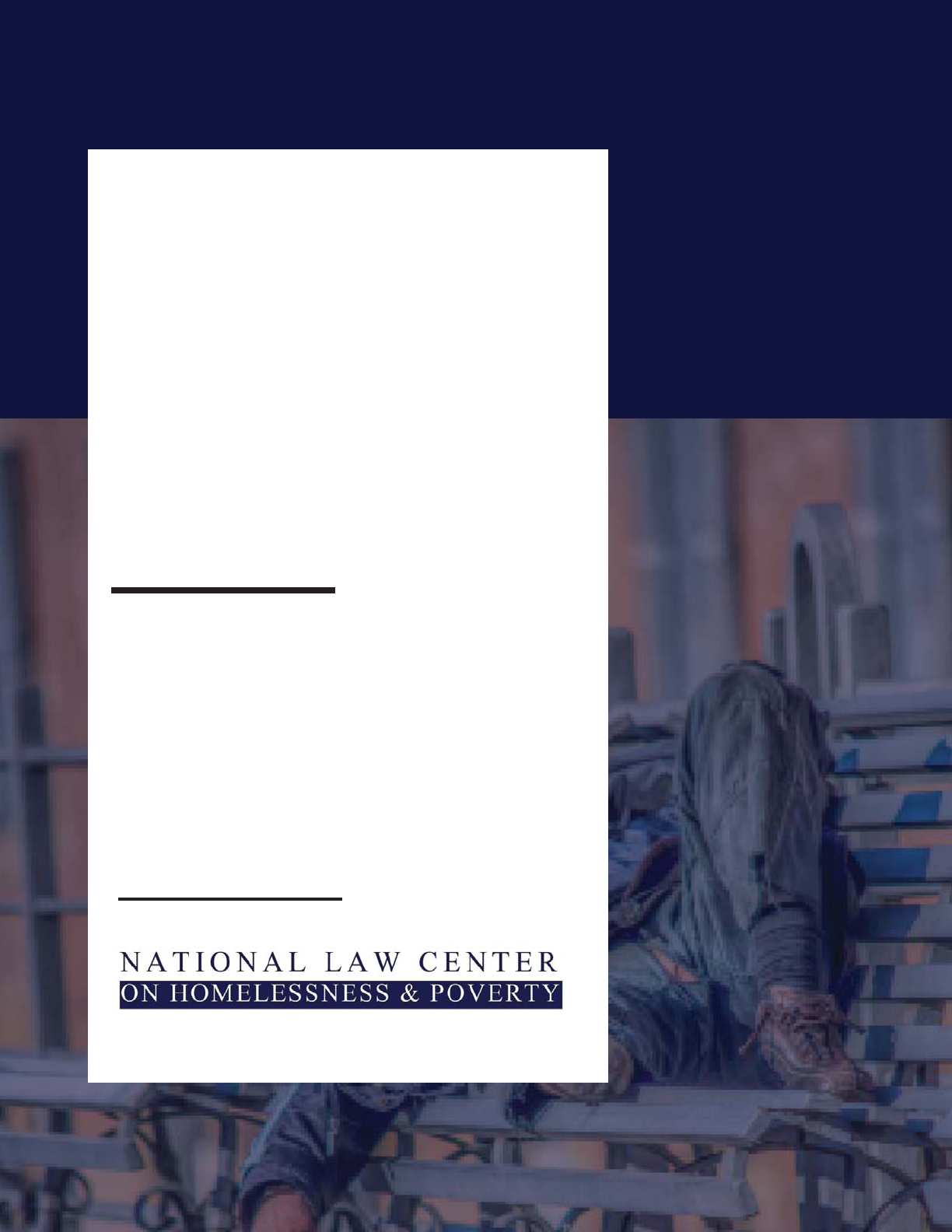
HOUSING
NOT
HANDCUFFS
2019
December 2019
Ending the Criminalization of
Homelessness in U.S. Cities

2
The National Law Center on Homelessness & Poverty (Law Center) is the only national organization
dedicated to using the power of the law to end and prevent homelessness. The Law Center works to expand
access to affordable housing, meet the immediate and long-term needs of those who are homeless or at
risk, and strengthen the social safety-net through policy advocacy, public education, impact litigation, and
legal training and support.
Our vision is for an end to homelessness in America. A home for every family and individual will be the
norm and not the exception, a right and not a privilege. For more information about the Law Center and
to access publications such as this report, please visit its website at www.nlchp.org.
LEGAL DISCLAIMER: The information provided in this publication is not legal advice and should not be
used as a substitute for seeking professional legal advice. It does not create an attorney-client relationship
between the reader and the Law Center.
ABOUT THE NATIONAL LAW CENTER
ON HOMELESSNESS & POVERTY

LAW CENTER BOARD OF DIRECTORS
LAW CENTER STAFF
Eric A. Bensky, Chair
Murphy & McGonigle PC
Julia M. Jordan, Vice-Chair
Sullivan & Cromwell LLP
Kirsten Johnson-Obey, Secretary
NeighborWorks
Robert C. Ryan, Treasurer
American Red Cross
Paul F. Caron
Microsoft Corporation
Bruce J. Casino
Attorney
Rajib Chanda
Simpson, Thacher, & Bartlett LLP
Dwight A. Fettig
Porterfi eld, Fettig & Sears, LLC
Deborah Greenspan
Blank Rome LLP
Steve Judge
Private Equity Growth Capital Council
(Retired)
Georgia Kazakis
Covington & Burling LLP
Pamela Malester
Offi ce for Civil Rights, U.S. Department
of Health and Human Services
(Retired)
Edward R. McNicholas
Ropes & Gray LLP
Tashena Middleton
Attorney
Matthew Murchison
Latham & Watkins LLP
G.W. Rolle
Missio Dei Church
Jeffrey A. Simes
Goodwin Procter LLP
Vasiliki Tsaganos
Franklin Turner
McCarter & English LLP
Robert Warren
People for Fairness Coalition
Khadijah Williams
Rocketship Public Schools
Maria Foscarinis
Founder & Executive Director
*Affi liations for identifi cation
purposes only
Rajan Bal
Housing Not Handcuffs Campaign
Manager
Karianna Barr
Director of Development &
Communications
Tristia Bauman
Senior Attorney
Maria Foscarinis
Founder & Executive Director
Jordan Goldfarb
Development & Communications
AmeriCorps VISTA
Crys Letona
Communications Associate
Kelly Miller
Development & Communications
Volunteer
Brandy Ryan
Staff Attorney
Deborah Shepard
Operations Manager
Eric Tars
Legal Director
3

ACKNOWLEDGEMENTS
The National Law Center on Homelessness & Poverty is grateful to the following individuals and
fi rms for their tremendous contributions to the research, writing, and layout of the report:
Law Center staff, fellows, and interns past and present, especially Tristia Bauman for serving as primary
author and editor; Rajan Bal, Karianna Barr, Maria Foscarinis, Brandy Ryan, and Eric Tars for drafting
and editing; Taylor de Laveaga, Joy Kim, Darren O’Connor, and Scott Pease for research and drafting
support; Crys Letona for design.
Dechert LLP, Kirkland & Ellis LLP, and Sullivan & Cromwell LLP, who committed staff and pro bono hours to
researching and updating the Prohibited Conduct Chart.
We also acknowledge with gratitude the generous support of the Oak Foundation, the Oakwood
Foundation, and the Herb Block Foundation. The Law Center would also like to thank AmeriCorps VISTA
for its support.
The Law Center woul
d like to thank our Lawyers’ Executive Advisory Partners (LEAP) member law fi rms:
Akin Gump Strauss Hauer & Feld LLP; Arent Fox LLP; Baker Donelson PC; Covington & Burling LLP; Dechert
LLP; Fried, Frank, Harris; Goldman Sachs and Co. LLC; Goodwin Procter LLP; Kirkland & Ellis LLP; Latham
& Watkins LLP; McCarter & English LLP; Microsoft Corporation; Sheppard Mullin Richter & Hampton LLP;
Sidley Austin LLP; Simpson Thacher & Bartlett LLP; Sullivan & Cromwell LLP; and WilmerHale.
4

TABLE OF CONTENTS
5
EXECUTIVE SUMMARY
BACKGROUND ON THE AFFORDABLE HOUSING CRISIS AND THE
RISE OF HOMELESSNESS
INTRODUCTION
Homelessness is a large and growing crisis
The gap between incomes and the cost of housing is a primary cause of homelessness
People of color face disproportionate housing cost burdens, eviction, and homelessness
People with disabilities are also disproportionately homeless
People experiencing homelessness have insuffi cient options for meeting their basic human needs
GROWTH OF LAWS CRIMINALIZING HOMELESSNESS
Camping Bans
Evictions of Encampments (“Sweeps”)
Sleeping Bans
Bans on Sitting and Lying Down
Restrictions on Living in Vehicles
Begging Bans
Bans on Loitering, Loafi ng, and Vagrancy
Restrictions on Food Sharing
Other Common Criminalization Laws
Storing personal property in public
Urination/Defecation
Rummaging/Scavenging/Dumpster Diving
Laws Criminalizing Homeless Youth
Status Offenses
Curfew Laws
Truancy Laws
ENFORCEMENT OF CRIMINALIZATION POLICIES
Arrest and Incarceration
Fines, Fees, and Debtors Prison
Warrants
Orders to “Move Along” from Public Space
9
11
27
28
29
32
33
33
37
38
40
41
42
43
44
45
46
46
48
50
50
52
52
53

TABLE OF CONTENTS
6
Privatization of Public Space
Hostile Architecture and Landscaping
Complaint Oriented Policing
HALL OF SHAME
Ocala, Florida
Sacramento, California
Wilmington, Delaware
Kansas City, Missouri
Redding, California
State of Texas
U.S. Government
CRIMINALIZING HOMELESSNESS PERPETUATES UNFOUNDED AND HARMFUL
STEREOTYPES ABOUT HOMELESS PEOPLE
Homeless people live outside because they lack better options
Homeless people work, but still cannot afford housing
The vast majority of homeless people do not abuse alcohol and/or drugs
CRIMINALIZING HOMELESSNESS IS INEFFECTIVE, HARMFUL, AND EXPENSIVE PUBLIC
POLICY
Criminalization policies fail to address the causes of homelessness, and instead
worsen the problem
Criminalization of homelessness harms public safety
Criminalization laws harm public health
Criminalization increases recidivism
Criminalization policies breed distrust between homeless individuals and law enforcement
Criminalization policies increase the risk of violence against homeless people
Criminalization is expensive and wasteful of limited public resources
The solution is cheaper than the problem
Cost savings associated with housing are grossly underestimated
Housing saves money by improving physical and mental health
Criminalization policies threaten federal funding for homeless services
53
54
56
57
60
60
61
62
63
63
65
67
71
73

TABLE OF CONTENTS
7
POLICIES CRIMINALIZING HOMELESSNESS ARE OFTEN ILLEGAL
Challenging Camping and Sleeping Bans and Sweeps
Right to be Free From Cruel and Unusual Punishment
Property Rights and Due Process
Right to Free Exercise of Religion
Challenging Restrictions on Living in Vehicles
Right to Due Process
Other Theories to Challenge Vehicle Tows and Impoundment
Challenging Loitering, Loafi ng, and Vagrancy Laws
Challenging Begging Bans
Right to Free Speech
Challenging Food Sharing Restrictions
Right to Free Religious Exercise
Right to Expressive Conduct
Challenging the Human Rights Violations of Criminalization
WE SHOULD SOLVE HOMELESSNESS, NOT PUNISH IT
Cities should invest in Permanent Housing Solutions using a Housing First model
Permanent Supportive Housing
Governments should expand access to affordable housing subsidies
Governments should dedicate funding streams to housing and services for homeless people.
Tax on gross receipts of large companies
Sales Tax
Social Impact Bonds
Solicit Corporate and Private Donations
Governments should utilize surplus property to provide housing and services
Governments should embrace innovative housing solutions
Accessory Dwelling Units
Tiny Home Communities
Community Land Trusts
Vehicle and RV Parking Options
75
75
79
80
80
81
81
85
85
87
89
90
91
92

TABLE OF CONTENTS
8
Governments should stop using punitive approaches to homelessness
Repeal, defund, and stop enforcing laws that criminalize homelessness
Prohibit the criminalization of homelessness through legislation
Stop sweeping encampments without offering adequate alternatives
Stop relying on police to be fi rst responders to homelessness
Improve police training and enforcement protocols
Governments should help homeless people meet basic human needs until housing is available.
Establish places where people can store their property
Provide access to toilets
Provide unhoused people with trash services
Provide people with shower and laundry services
Help people meet their need for shelter from the elements
Low-Barrier Emergency Shelters
Authorized Encampments
Safe Parking Lots
Help people access income
Governments should enact policies tailored to homeless youth needs
Governments should prevent homelessness before it happens
Enact “Just Cause” eviction protections and rent stabilization laws
Prohibit discriminatory housing policies
Guarantee a right to counsel in housing cases
CONCLUSION
Appendix A: Prohibited Conduct Chart by City
Appendix B: Encampment Principles and Best Practices
95
98
100
102
103
105
106
119
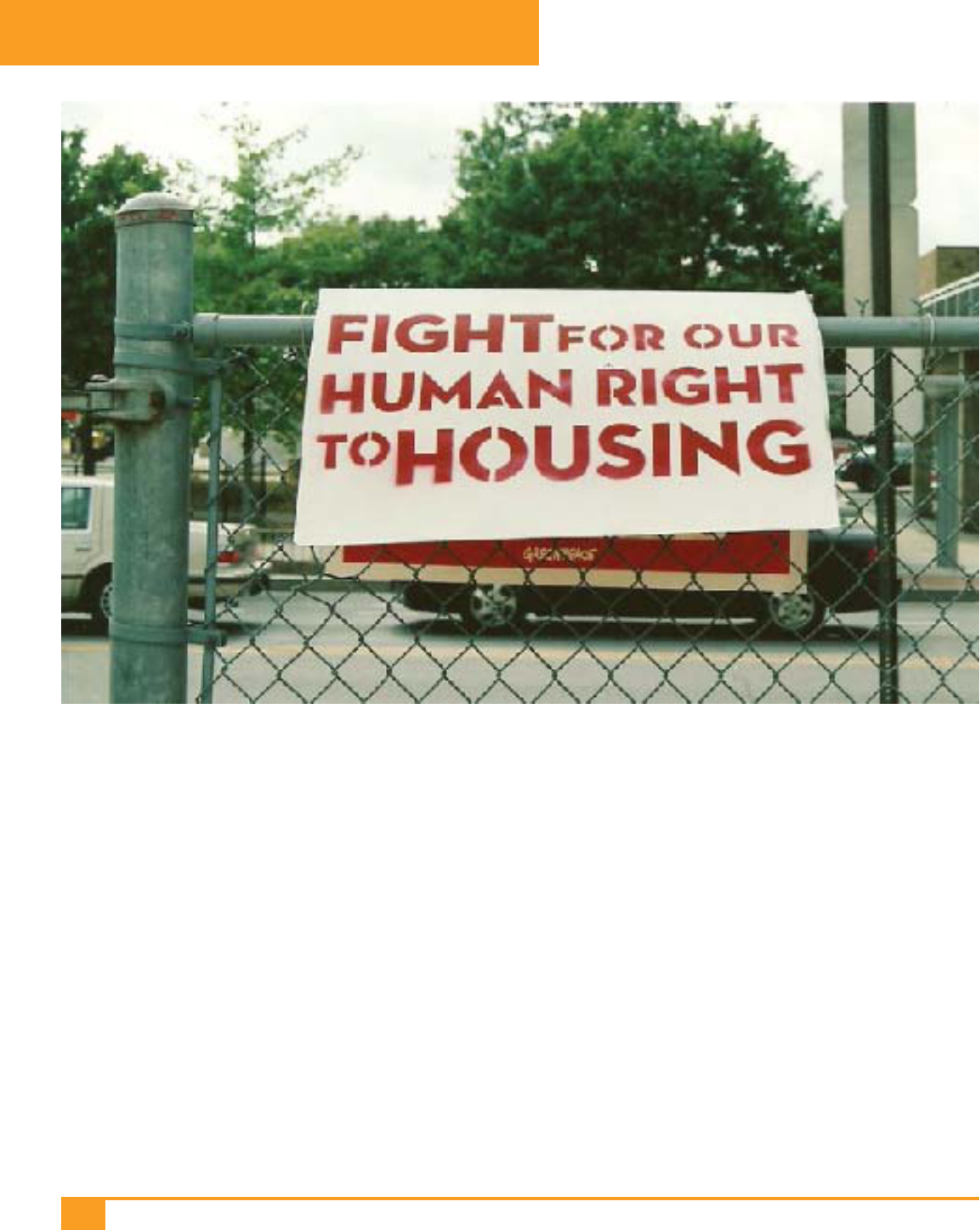
H
ousing is a human right. While three-quarters of Americans agree that housing is a human right, and an increasing
number of elected offi cials are addressing it as such, our country has not put in place the policies to ensure that
right, and as a consequence, millions of Americans experience homelessness in a national crisis that gets worse
each year. Many people experiencing homelessness have no choice but to live outside, yet cities routinely punish or harass
unhoused people for their presence in public places. Nationwide, people without housing are ticketed, arrested, and jailed
under laws that treat their life-sustaining conduct—such as sleeping or sitting down—as civil or criminal offenses. In addition,
cities routinely displace homeless people from public spaces without providing any permanent housing alternatives.
This report—the only national report of its kind—provides an overview of laws in effect across the country that punish
homelessness. With the assistance of the law fi rms Dechert LLP, Sullivan & Cromwell, and Kirkland & Ellis, the Law Center
examined the city codes of 187 urban and rural cities across the country. Through online research, we identifi ed laws that
restrict or prohibit different categories of conduct performed by homeless people, including sleeping, sitting or lying down,
and living in vehicles within public space. We refer to these policies and their enforcement collectively as the “criminalization
of homelessness,” even though these laws are punishable as both criminal and civil offenses.
The ordinances from our research group of 187 cities are listed in our Prohibited Conduct Chart in Appendix A. While the
chart catalogues the existence of these laws in different cities, actual enforcement of them may vary widely. Punishments also
9
EXECUTIVE SUMMARY
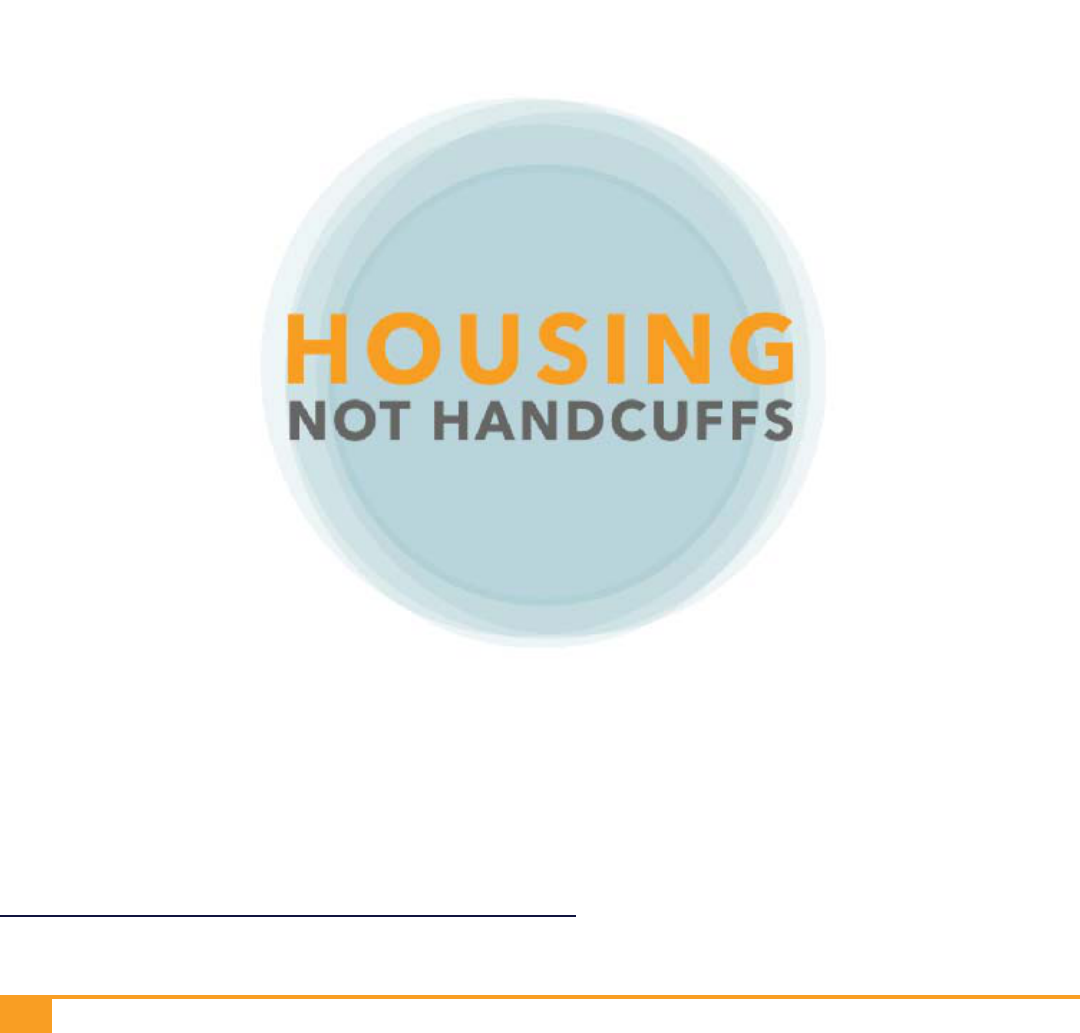
10
vary: some laws subject homeless people to as much as six months in jail, while some result in expensive fi nes, fees, and/
or displacement from public space. Threats of enforcement are also used to harass homeless people and to displace them
from location to location. It is important to note that these 187 cities are only a sampling; criminalization ordinances exist in
many more municipalities than just the ones covered here.
In addition to our survey of policies in force across the country, this report describes trends in criminalization laws and tracks
the signifi cant growth of these laws since we began tracking them thirteen years ago, and since the release of Housing Not
Handcuffs, our last report on the criminalization of homelessness in 2016.
1
This report also describes why criminalization
policies are ineffective, harmful, expensive to taxpayers, and often even illegal.
Because our end goal is not to protect the right to live on the streets, but rather to ensure that people need not live
without housing in the fi rst place, we also offer constructive alternative approaches to preventing and ending homelessness.
Included in our recommendations are model policies for federal, state, and local governments to address homelessness in
a cost-effective, humane, and legal way.
1 NAT’L L. CTR. ON HOMELESSNESS & POVERTY, HOUSING NOT HANDCUFFS: ENDING THE CRIMINALIZATION OF HOMELESSNESS IN U.S. CITIES (2016),
https://nlchp.org/wp-content/uploads/2018/10/Housing-Not-Handcuffs.pdf.

THE AFFORDABLE HOUSING CRISIS AND
THE GROWTH OF HOMELESSNESS
Rising rents, stagnant wages, historically low rental
vacancy rates, and the severe decline of federally
subsidized housing have led to a critical shortage of
affordable housing units. There is simply not enough
affordable and available housing for America’s millions of
low-income renters, leaving them at risk of homelessness.
Nationwide, there are only 35 units that are affordable and
available for every 100 extremely poor renter households
in need. The affordable housing gap is even more severe
in many of the nation’s large metropolitan areas. The result
is that low-income renter households are housing cost
burdened, meaning they are forced to pay more than they
can sustainably afford toward rent.
Housing cost burdens and eviction cause homelessness.
Recent studies have demonstrated the strong connection
between rental costs, housing cost burdens, and
homelessness. For example, one study predicted that
homelessness in New York City would increase by over
6,000 people if rents increase by 10%. Unaffordable rents
result in evictions for non-payment of rent, even after a
single late or missed payment. Eviction is not only a direct
cause of homelessness, a record of eviction can also bar
someone from becoming rehoused.
Housing cost burdens and eviction have contributed
to grossly disproportionate rates of homelessness
among people of color. People of color make up the
majority of housing cost burdened renters at risk of eviction,
and once housing is lost, racist housing practices prevent
people from becoming rehoused. It is thus unsurprising
that there is a heavy overrepresentation of people of color
in the homeless population. According to HUD’s most
recent point-in-time count, Black people make up 40%
of the homeless population yet only 13% of the general
population. Latinx, Native American, and Pacifi c Islander
rates of homelessness are also disproportionately high. In
total, people of color constitute over 60% of the nation’s
homeless population even though they make up only a third
of the general U.S. population.
People without housing lack options for meeting
their basic human needs for rest and shelter. Many
communities treat emergency shelters as the answer
to systemic shortages of permanent housing, and they
often justify enforcement of criminalization laws based
on alleged availability of emergency shelter beds. But
emergency shelters are not available in every community
with unhoused people, and even where shelters exist, they
are generally full and routinely turn people away at the front
door. Moreover, emergency shelters offer only temporary
shelter—sometimes only for a single night at a time—and
frequently require that people separate from their families,
beloved pets, and/or their property upon entry, or subject
themselves to religious proselytizing. Shelters may also
discriminate on the basis of sexual orientation or gender
identity, and/or fail to accommodate disability needs.
KEY FINDING: The criminalization of homelessness
is on the rise. The results of our research show that the
criminalization of homelessness is prevalent across the
country and has increased in every measured category
since 2006, when the Law Center began tracking these
policies nationwide. We also found a growth in laws
criminalizing homelessness since the release of our last
Housing Not Handcuffs report, released in 2016.
11
BACKGROUND
Punishing homelessness has
increased over the last 13 years.

Of the 187 cities measured by the Law Center, we found:
LAWS PROHIBITING CAMPING IN PUBLIC
“Camping” bans are often written to cover a broad range
of activities, including merely sleeping outside. They also
often prohibit the use of any “camping paraphernalia”
which can make it illegal for unhoused people to use even
a blanket. In 2019, 72% of our 187 surveyed cities have
at least one law restricting camping in public. Among our
surveyed cities:
• 37% of cities have one or more laws prohibiting
camping citywide.
• 57% of cities have one or more laws prohibiting
camping in particular public places.
• Both categories have signifi cantly increased over the
past 13 years:
• Since 2006, 33 new laws prohibiting camping
citywide were enacted, representing a 92%
increase. Since we released our last national report
on the criminalization of homelessness in 2016, nine
such laws were enacted, representing an increase
of 15%.
• Since 2006, 44 new laws prohibiting camping in
particular places were enacted, representing a 70%
increase. Since 2016, 14 such laws were enacted,
representing a 15% increase.
12
LAWS PROHIBITING SLEEPING IN PUBLIC
Sleeping bans outlaw sleep, which cannot be foregone
by any human being. In 2019, 51% of our 187 surveyed
cities have at least one law restricting sleeping in public.
Among our surveyed cities:
• 21% of cities have one or more laws prohibiting
sleeping in public citywide.
• 39% of cities have one or more laws prohibiting
sleeping in particular public places.
• Both categories have signifi cantly increased over the
past 13 years:
• Since 2006, 13 new laws prohibiting sleeping
citywide were enacted, representing a 50%
increase. Since we released our last national report
on the criminalization of homelessness in 2016, six
such laws were enacted, representing an increase
of 18%.
• Since 2006, 16 new laws prohibiting sleeping in
particular places were enacted, representing a 29%
increase. Since 2016, 22 such laws were enacted,
representing a 44% increase.
72% of cities have at least one
law prohibiting camping in
public.
City laws prohibiting
sleeping in public have
increased 50% since 2006.

13
LAWS RESTRICTING SITTING AND LYING
DOWN IN PUBLIC
Although every human being must occasionally rest, laws
restricting sitting and lying down in public punish people
experiencing homelessness for doing so. Of the 187 cities
surveyed for this report, our 2019 research reveals that:
• 55% of cities have one or more laws prohibiting sitting
and/or lying down in public.
• Such laws have signifi cantly increased over the past
13 years:
• Since 2006, 45 new laws prohibiting sitting and/
or lying down in public were enacted, representing
a 78% increase. Since we released our last national
report on the criminalization of homelessness in
2016, 15 such laws were enacted, representing a
17% increase.
LAWS PROHIBITING LOITERING, LOAFING,
AND VAGRANCY
Similar to historical Jim Crow, Anti-Okie, and Ugly laws,
these modern-day versions of those discriminatory
ordinances grant police a broad tool for excluding visibly
poor and homeless people from public places.
• 35% of cities have one or more laws prohibiting
loitering, loafi ng, and/or vagrancy citywide.
• 60% of cities have one or more laws prohibiting
loitering, loafi ng, and/or vagrancy in particular public
places.
• Such laws have signifi cantly increased over the past
13 years:
• Since 2006, 33 new laws prohibiting loitering,
loafi ng, and/or vagrancy citywide were enacted,
representing a 103% increase. Since we released
our last national report on the criminalization of
homelessness in 2016, six such laws were enacted,
representing an increase of 10%.
• Since 2006, 25 new laws prohibiting loitering,
loafi ng, and/or vagrancy in particular places were
enacted, representing a 28% increase. Since 2016,
13 such laws were enacted, representing a 13%
increase.
LAWS PROHIBITING BEGGING
In the absence of employment opportunities or other
sources of income, begging may be a homeless person’s
best option for obtaining the money that they need to
purchase food, public transportation fare, medication,
or other necessities. In 2019, 83% of our 187 surveyed
cities have at least one law restricting begging in public.
Among our surveyed cities:
• 38% of cities have one or more laws prohibiting
begging citywide.
• 65% of cities have one or more laws prohibiting
begging in particular public places, making it the most
common type of criminalization law.
• Such laws have signifi cantly increased over the past
13 years:
• Since 2006, 36 new laws prohibiting begging
citywide were enacted, representing a 103%
increase. Since we released our last national report
on the criminalization of homelessness in 2016, 21
such laws were enacted, representing an increase
of 42%.
• Since 2006, 14 new laws prohibiting begging
There has been a 103%
increase in city laws
prohibiting loitering,
loafi ng, and/or vagrancy
since 2006.
/
or vagranc
y
y
y
y
y
y
y
y
y
y
y
y
y
y
y
y
y
y
y
y
y
y
y
2006.

14
in particular places were enacted, representing a
13% increase. Since 2016, eight such laws were
enacted, representing a 7% increase.
LAWS RESTRICTING LIVING IN VEHICLES
Sleeping in one’s own vehicle is often a last resort for
people who would otherwise be forced to sleep on the
streets. Laws restricting living in vehicles often outlaw that
activity outright, but it is also common for these laws to take
the form of parking regulations that leave no lawful place
for people who live in their vehicles to park.
• 50% of cities have one or more laws restricting living
in vehicles.
• Such laws have signifi cantly increased over the past
13 years:
• Since 2006, 64 new laws restricting living in
vehicles were enacted, representing a 213%
increase. Since we released our last national report
on the criminalization of homelessness in 2016, 22
such laws were enacted, representing an increase
of 31%.
In addition to categories of prohibited conduct studied
by the Law Center since 2006, we have more recently
tracked additional categories of prohibited conduct. Our
research shows that the following categories of laws are
also prevalent in our 187 surveyed cities:
LAWS RESTRICTING FOOD SHARING
9% of cities prohibit or restrict sharing free food in public.
People experiencing homelessness often lack reliable
access to food, in part due to a lack of any place to
refrigerate or store food supplies. Despite the fact that food
access is extremely limited for homeless people, a growing
number of cities have restricted free food sharing. Since
2016, fi ve new laws restricting food sharing were enacted,
representing an 42% increase.
LAWS PROHIBITING PROPERTY STORAGE
55% of cities prohibit storing property in public places.
People experiencing homelessness often have no private
place to secure their personal possessions. Laws that prohibit
storing property in public space leave homeless people
at constant risk of losing their property, including property
needed for shelter, treatment of medical conditions, and
proof of identity.
LAWS PROHIBITING PUBLIC URINATION AND
D
EFECATION
83% of cities prohibit public urination and defecation.
People experiencing homelessness often lack access
to toilets, yet all human beings must expel bodily waste
when nature calls—often multiple times each day. Despite
this, the vast majority of cities prohibit public urination and
defecation even in the absence of public toilets. While cities
have a legitimate interest in preventing the accumulation
of urine and feces in public space, such interests cannot
be met by criminalizing unavoidable bodily functions. If
people do not have regular access to toilets, they will expel
their human waste in areas other than toilets—they have no
choice.
LAWS PROHIBITING SCAVENGING
76% of cities prohibit rummaging, scavenging, or “dumpster
diving.” People experiencing homelessness are under
resourced, and they may turn to scavenging in trash bins
or other refuse for items of value, such as usable clothing
or edible food. Yet, three in four cities prohibit scavenging.
60.4%
of surveyed cities
have one or more laws
restricting living in
vehicles.
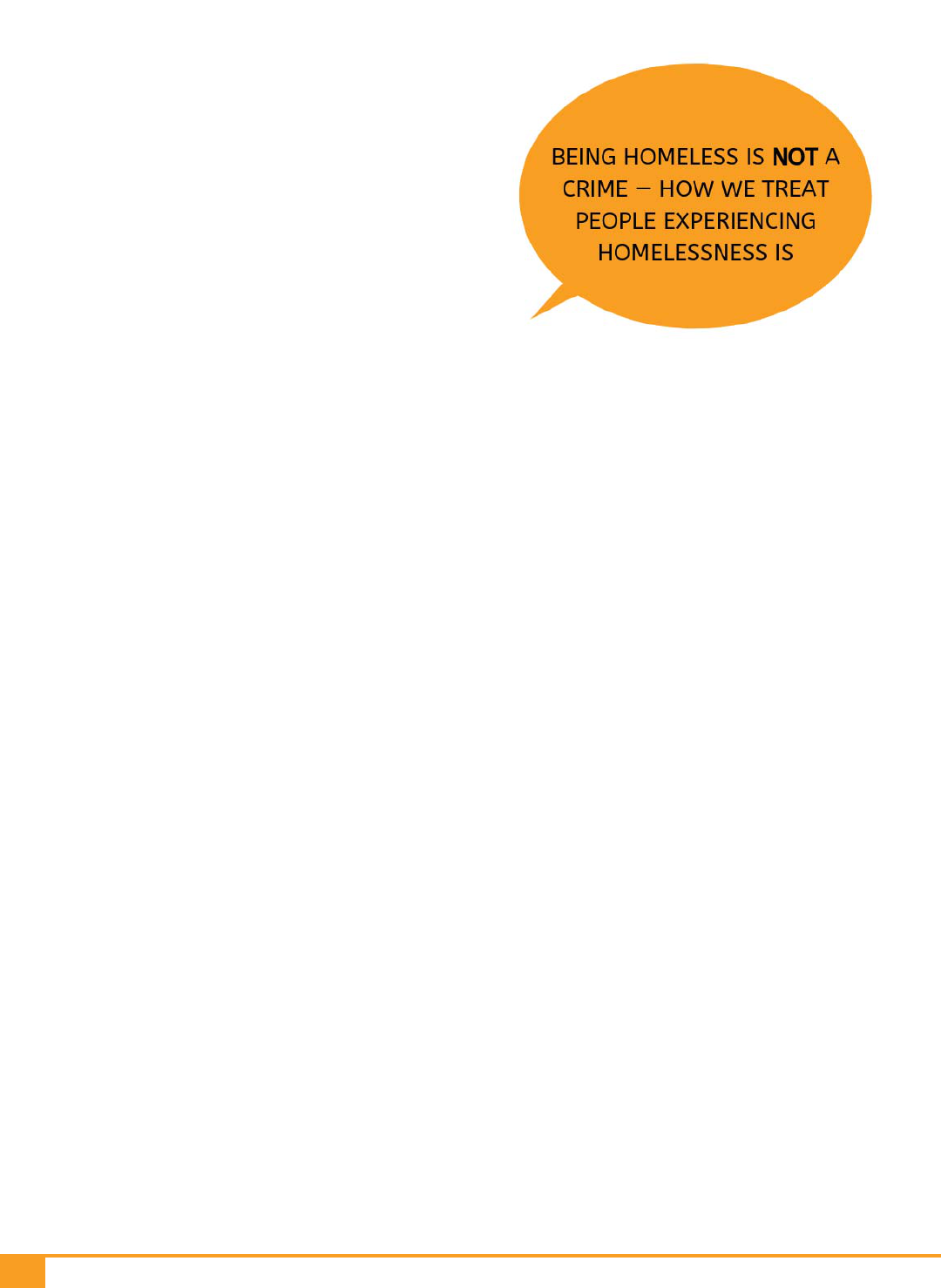
15
KEY FINDING: Laws criminalizing homelessness
are rooted in prejudice, fear, and misunderstanding,
and serve businesses and housed neighbors over
the needs of unhoused neighbors. It is critical
for lawmakers, policy advocates, and other key
stakeholders to understand the fundamental roots of laws
criminalizing homelessness: ignorance of the causes of
homelessness and deep-seated prejudice against and
fear of people experiencing it. The inaccurate belief
that homelessness is a result of poor life choices, mental
illness, and/or drug addiction motivates public calls for
punitive approaches to homelessness. Businesses and
commercial entities also drive criminalization policies
by lobbying for such laws and even by enforcing them
with private security personnel.
KEY FINDING: The effects of criminalization are devasting to people and communities. Criminalization
of homelessness contributes to mass incarceration and racial inequality, as homelessness is a risk factor for
incarceration, and incarceration makes it more likely that a person will experience homelessness. Over-policing of
homeless people, who are disproportionately people of color, also exacerbates racial inequality in our criminal
justice system. Indeed, unhoused people of color are more likely to be cited, searched, and have property taken
than white people experiencing homelessness. Those with multiple marginalized identities, like LGBTQ+ people of
color, are even more vulnerable to homelessness and laws criminalizing homelessness.
Criminalization of homelessness results in fines and fees that perpetuate the cycle of poverty. Financial
obligations, such as from fines for using a tent or vehicle to shelter oneself, can prolong the amount of time
that a person will experience homelessness, and can also leave homeless people less able to pay for food,
transportation, medication, or other necessities. Civil and court-imposed fines and fees can also prevent a person
from being accepted into housing, or even result in their incarceration for failure to pay them.
Criminalization of homelessness harms public safety. Criminalization policies divert law enforcement resources
from true street crime, clog our criminal justice system with unnecessary arrests, and fill already overcrowded jails.
They also erode trust between homeless people and police, heightening the risk of violent confrontations between
police and unhoused people, and leaving homeless people more vulnerable to private acts of violence without
police protection. This is why the federal Department of Justice has filed statement of interest briefs and issued
guidance arguing against the enforcement of criminalization ordinances in the absence of adequate alternatives.
Criminalization of homelessness and encampment evictions harm public health. City offi cials frequently cite concerns
for public health as reason to enforce criminalization laws and/or to evict homeless encampments, a practice often referred
to as a “sweep.” But such practices threaten public health by dispersing people who have nowhere to discard food waste
and trash, to expel bodily waste, or to clean themselves and their belongings to more areas of the city, but with no new
services to meet their basic sanitation and waste disposal needs. Moreover, sweeps often result in the destruction of
homeless people’s tents and other belongings used to provide some shelter from the elements, cause stress, and cause
loss of sleep, contributing to worsened physical and mental health among an already vulnerable population. Due to these
harms, the American Medical Association and American Public Health Association have both condemned criminalization
and sweeps in policy resolutions.

16
KEY FINDING: Criminalization isn’t just harmful,
it is ineffective, costly, and often illegal. Laws
punishing homelessness are ineffective at reducing
homelessness—they do not address underlying causes
of homelessness like the lack of affordable housing.
Instead, criminalization laws exacerbate homelessness
by creating barriers to housing, employment, and
services needed and these barriers to income and
housing can prolong a person’s homelessness or even
make it permanent.
Criminalization also wastes taxpayer dollars, taking
away resources that could be used on real solutions.
While cities often claim that proposed criminalization
measures will have no fiscal impact, the truth is that the
public costs of punitive approaches to homelessness
are staggering. A 2019 study of Santa Clara County,
California, estimated that homelessness cost Santa
Clara County $520 million annually from 2007 to 2012
(not including spending on accommodation and direct
services), and 34% of those costs were for criminal
justice related expenditures, such as probation, custody
mental health care, and jail/court costs. Sweeps are
also incredibly expensive—Los Angeles, for example,
spends $30 million a year on sweeps.
A growing number of courts have found that laws
criminalizing homelessness violate the Constitution
and anti-discrimination laws. In April 2019, the
U.S. Court of Appeals for the Ninth Circuit issued an
opinion in Martin v. City of Boise
2
—a case filed by the
Law Center, Idaho Legal Aid, and Latham & Watkins—
affirming that the Eighth Amendment of the U.S.
Constitution prohibits enforcement of laws criminalizing
sleeping, sitting, and lying down outside against people
with no access to indoor shelter. In deciding the merits
of the case, the Court concluded:
“[A]s long as there is no option of sleeping
indoors, the government cannot criminalize
indigent, homeless people for sleeping
outdoors, on public property, on the false
premise they had a choice in the matter.”
3
Criminalization policies and sweeps have also been
condemned by courts as violating Fourth Amendment
property rights, Fourteenth Amendment due process
rights, and First Amendment speech rights. Some state
courts have found that criminalization laws similarly
violate analogous rights under state constitutions.
Criminalization policies and sweeps may also violate
other federal laws, including the Americans with
Disabilities Act.
The criminalization of homelessness is also a matter of
serious concern under international law. Criminalization
of homelessness is discriminatory and constitutes cruel and
inhuman treatment, which violates our obligations under the
Convention Against Torture and the International Covenant
on Civil & Political Rights. Further, the criminalization of
homelessness has a disparate racial impact, in violation of
the International Convention on the Elimination of All Forms
of Racial Discrimination.
2 The Ninth Circuit issued its original opinion in Martin v. City of
Boise on September 4, 2018. The City of Boise then filed a petition
for rehearing en banc, which was denied in April 2019.
3 Martin v. City of Boise, 902 F.3d 1031 (9th Cir. September
4, 2019), amended by Martin v. City of Boise, 920 F.3d 584 (9th
Cir. Apr. 1, 2019). The City of Boise has petitioned the U.S. Supreme
Court for certiorari review.
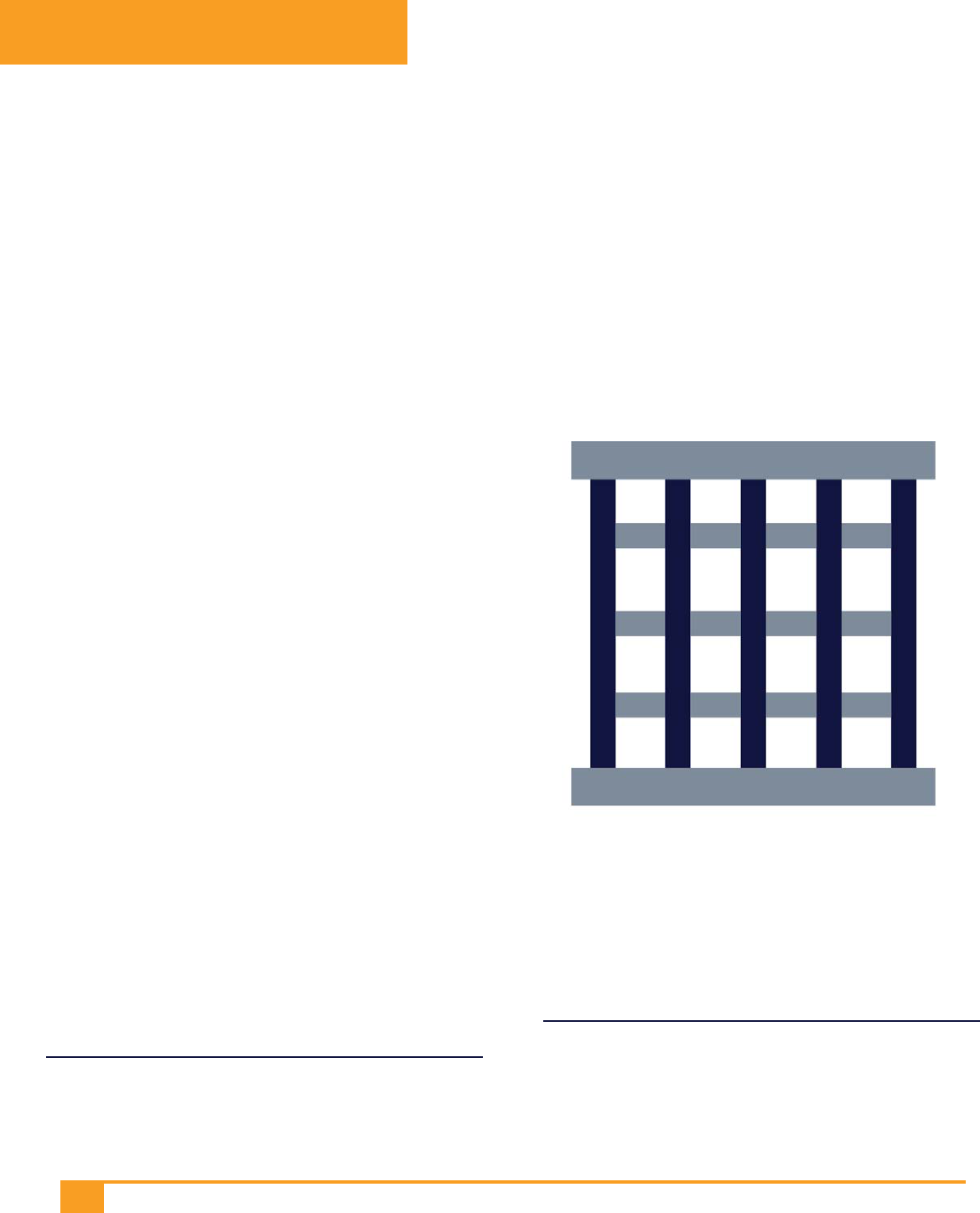
17
The Law Center recognizes that communities struggle
with difficult policy choices over how to reduce
homelessness and often pursue a combination of good
(constructive) and bad (destructive) policies. Rather
than call out individual governments for being the best
or worst, we have identified particularly bad policies
and/or practices of certain governments to include in
our Hall of Shame.
This year, the Law Center has identified seven especially
harmful policies, enacted by: Ocala, Florida;
Sacramento, California; Wilmington, Delaware;
Kansas City, Missouri; Redding, California; the State
of Texas; and the United States federal government.
These policies—ranging from food sharing to
involuntary detention to forced punitive measures—all
encapsulate the misuse of policies that only lead to
cyclical homelessness and poverty.
OCALA, FL: AGGRESSIVE ANTI-
HOMELESSNESS POLICING
In Ocala, Florida, homeless people are strictly policed
in accordance with Ocala’s draconian anti-homeless
ordinances. It is illegal to rest in the open on public
property, which has been heavily enforced by the city.
The city’s “Operation Street Sweeper” and aggressive
policing have even led to a federal lawsuit on behalf
of three unhoused residents. These three plaintiffs have
collectively spent 210 days in jail and been assessed
over $9,000 in fines, fees, and costs due to enforcement
of the trespass and unlawful lodging ordinance alone.
4
4 Complaint, McArdle v. Ocala, Case No. 5:19-cv-461 (M.D.
Fla. 2019).
SACRAMENTO, CA: AGGRESSIVE SWEEPS
AND BANISHMENT OF HOMELESS PEOPLE
The City of Sacramento consistently engages in practices
that seek to isolate and disperse homeless people, even in
the absence of adequate housing alternatives or available
shelters. The City has seized and destroyed encampment
residents’ personal property and caused some of the
residents’ personal injury; it has even fi led its own lawsuit
seeking to declare certain homeless individuals as public
nuisances and to have them banned from public space.
5
5 Sam Stanton et al., Drugs, Thefts, Assaults: Sacramento
Wants to Ban 7 People from Prominent Business Corridor, THE
SACRAMENTO BEE (Aug. 16, 2019, 11:48 AM), https://www.
sacbee.com/news/local/article234082757.html.
HALL OF SHAME
210 days in jail
$9,000+ in fi nes, fees, and costs
For three unhoused residents
under Ocala’s “Trespass and
unlawful lodging” ordinance.

18
KANSAS CITY, MO: FOOD-SHARING
REGULATIONS
Health department officials in Kansas City poured
bleach on chili, soup, and sandwiches being offered to
homeless residents by the organization Free Hot Soup.
Then-mayor Sly James posted on Twitter in support
of the actions conducted by the health department
officials..
6
REDDING, CA: PROPOSED INVOLUNTARY
DETENTION OF HOMELESS PEOPLE
Redding Mayor Julie Winter requested a state of
emergency over homelessness and calling for the
ability to, “hold [homeless] individuals accountable”
by, “[requiring] mental health treatment for the severely
mentally ill, up to and including conservatorship until
such time as the individual has demonstrated the
ability to care for themselves including managing
their finances.”
7
Mayor Winter also wishes to build
a shelter where she can force people experiencing
homelessness to stay for up to 90 days.
“[It] might be a low-security
facility, but it’s not a facility you
could just leave because you
wanted to…You need to get clean,
you need to get sober, you need to
demonstrate self-sufficiency. And
once you do that, you’re free to
go.”
8
6 @MayorSlyJames, TWITTER (Nov. 5, 2018), https://twitter.
com/MayorSlyJames/status/1059549161945743375
7 Letter from Julie Winter, Mayor of City of Redding, to
Honorable Gavin Newsom, Governor of State of California, C
ITY
OF R
EDDING (Nov. 19, 2019), available at https://drive.google.
com/file/d/1lR0NSzB4B-Hr-SZHWuqYg8Vvlnug17ug/view.
8 Emma Ockerman, This California City Wants to Build a
Homeless Shelter That’s Basically a Jail, VICE (Nov. 22, 2019, 4:39
PM), https://www.vice.com/en_us/article/mbmz94/a-california-
mayor-wants-to-build-a-homeless-shelter-thats-basically-a-jail.
WILMINGTON, DE: IMPROPER USE OF NO
CONTACT / STAYAWAY ORDERS
Wilmington has engaged in practices with the intention
of keeping its homeless residents away from certain parts
of town by seeking a “no contact” order with the entire
city as a condition of bail. In Wilmington, the police have
requested that judges issue “no contact” orders prohibiting
direct or indirect contact with the entire City of Wilmington,
the “alleged victim.” Vulnerable residents are thus forced to
choose between agreeing to unreasonable conditions of
release or remaining in jail until their case is resolved.
In November
2018, Health
department
offi cials in
Kansas City, MO,
poured bleach
on food given
to homeless
people.
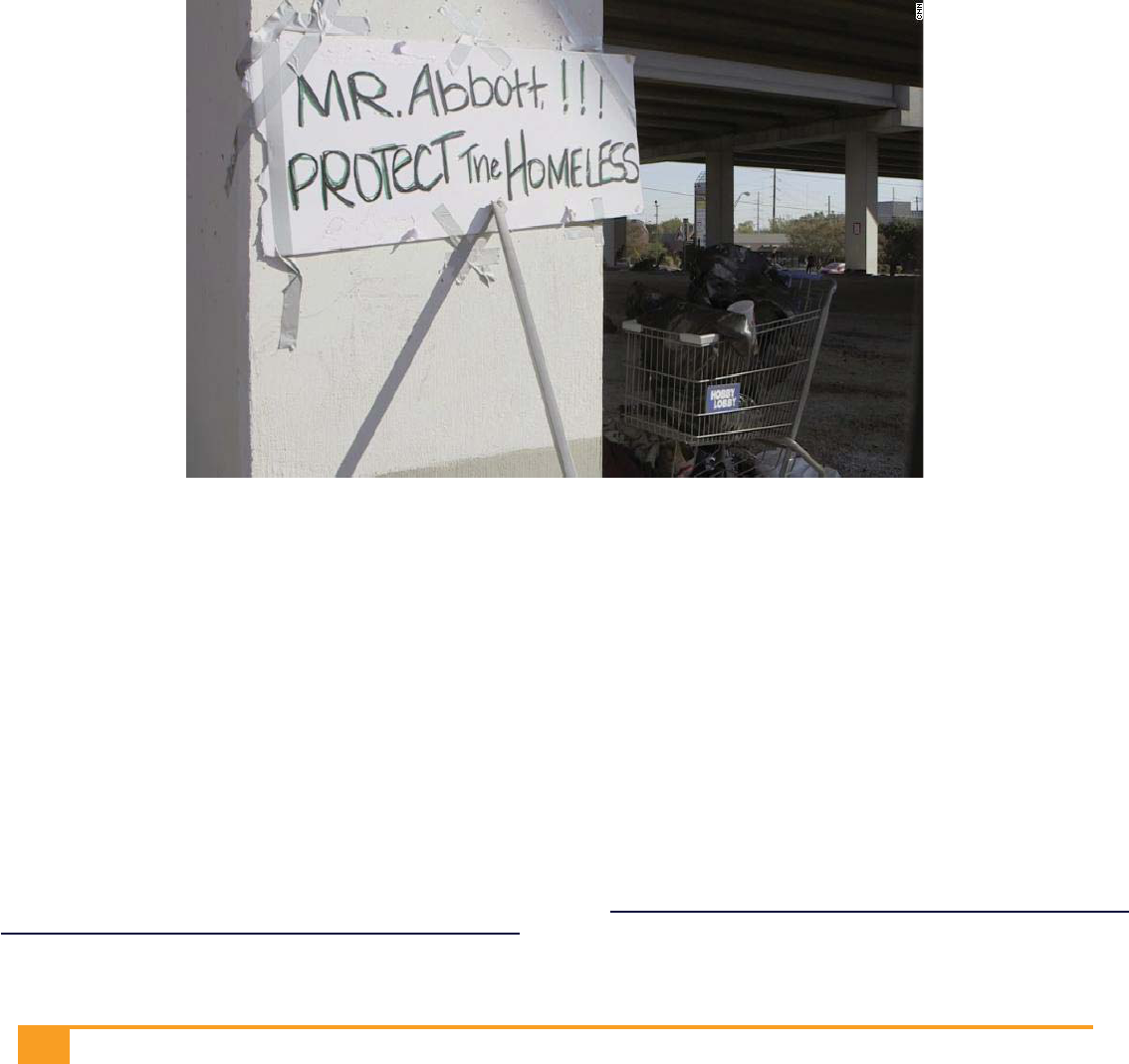
THE U.S. GOVERNMENT: CREATING AND
WORSENING THE NATION’S HOMELESS CRISIS
Dramatic cuts to federal funding for subsidized housing
led to the modern homeless crisis, and today funding is so
inadequate that only one in four people who are eligible
for housing supports actually receives it. In September 2019,
the Trump Administration’s Council of Economic Advisors
released a white paper claiming that homeless people
remain so because they are “too comfortable” living on the
streets, and calling for policing as a tool, “to help move
people off the street and into shelter or housing…”
10
10 COUNCIL OF ECON. ADVISORS, THE STATE OF HOMELESSNESS
IN AMERICA (2019), https://www.whitehouse.gov/wp-content/
uploads/2019/09/The-State-of-Homelessness-in-America.pdf.
19
STATE OF TEXAS: FORCING PUNITIVE
APPROACHES TO HOMELESSNESS
Austin amended its camping ordinance in June 2019,
and Texas Governor Greg Abbott rebuked Austin for the
positive law changes and threatened to intervene if the city
did not return to the more draconian version of the ban.
Governor Abbott warned that “all state-imposed solutions”
were on the table, and then ordered Texas Department
of Transportation staff to sweep homeless encampments
from underneath highways in the Austin area.
9
The sweeps
have continued on a weekly basis since the Governor fi rst
ordered them to begin on November 4, 2019.
9 @GregAbbott_TX, TWITTER (July 1, 2019), https://twitter.com/
GregAbbott_TX/status/1145930 019451146245

BEST PRACTICES IN HOUSING, NOT HANDCUFFS
There are
constructive policy
alternatives to
criminalization that
will solve, not punish,
homelessness.
Criminalization is
not an effective
solution for cities
that are concerned
about homelessness.
There are sensible,
cost-effective, and
humane solutions
to homelessness, which a number of communities have
pursued. The Law Center recommends the following policy
and program solutions to homelessness, and highlights
examples where these policies have been implemented,
at least in part. These include long-term solutions that must
be taken to end homelessness, as well immediate and
intermediate term approaches for helping to reduce harm
for the high numbers of people currently living in unsheltered
conditions and encampments:
BEST LONG-TERM SOLUTIONS
HOUSING FIRST AND PERMANENT
SUPPORTIVE HOUSING
Housing is a proven solution to homelessness. Housing
First is premised on the idea that pairing people with
immediate access to their own apartments – without barriers
and without mandated compliance with services - is the best
way to sustainably end their homelessness. One form of
Housing First, Permanent Supportive Housing (PSH), which
combines affordable housing assistance with voluntary
support services demonstrates signifi cant reductions in
criminal justice involvement, with corresponding reduced
costs. In fact, PSH always produces gross savings for
chronically homeless populations.
Four communities have effectively ended chronic
homelessness: In 2017, Bergen County, New Jersey,
became the fi rst, joined since then by Rockford, Illinois,
20
Lancaster, Pennsylvania, and the jurisdictions in the
Southwest Minnesota Continuum of Care.
• 78 communities and three states have effectively
ended veteran homelessness: New Orleans,
Louisiana, was the fi rst city in 2014, Virginia was the
fi rst state in 2015.
• Since 2017, Marin County, California, has reduced
chronic homelessness by an impressive 28% and
overall homelessness by 7% using a system-wide
Housing First approach.
• In Charlotte, North Carolina, permanent supportive
housing reduced arrests of residents by 82%.
• A study of Housing For Health, a division of the Los
Angeles County Department of Health Services
found that the PSH program not only saved over $6.5
million by the second year of its implementation, but it
also reduced emergency room visits by 70% and kept
people off of the streets.
• A 2015 report on permanent supportive housing in
Massachusetts showed that using a Housing First
model saved an average of $9,339 per formerly
homeless person.
• A study of chronically homeless individuals in Seattle,
Washington, found that costs decreased by 60%
per individual after one year in housing—even after
factoring in the cost of housing and supportive services.
82%
70%
60%
Charlotte, NC:
Permanent supportive
housing reduced
arrests of residents.
Seattle, WA: Costs
decreased per
individual after one
year in housing.
S
S
i
n
Los Angeles County,
CA: Permanent
supportive housing
reduced emergency
room visits.
HOUSING FIRST
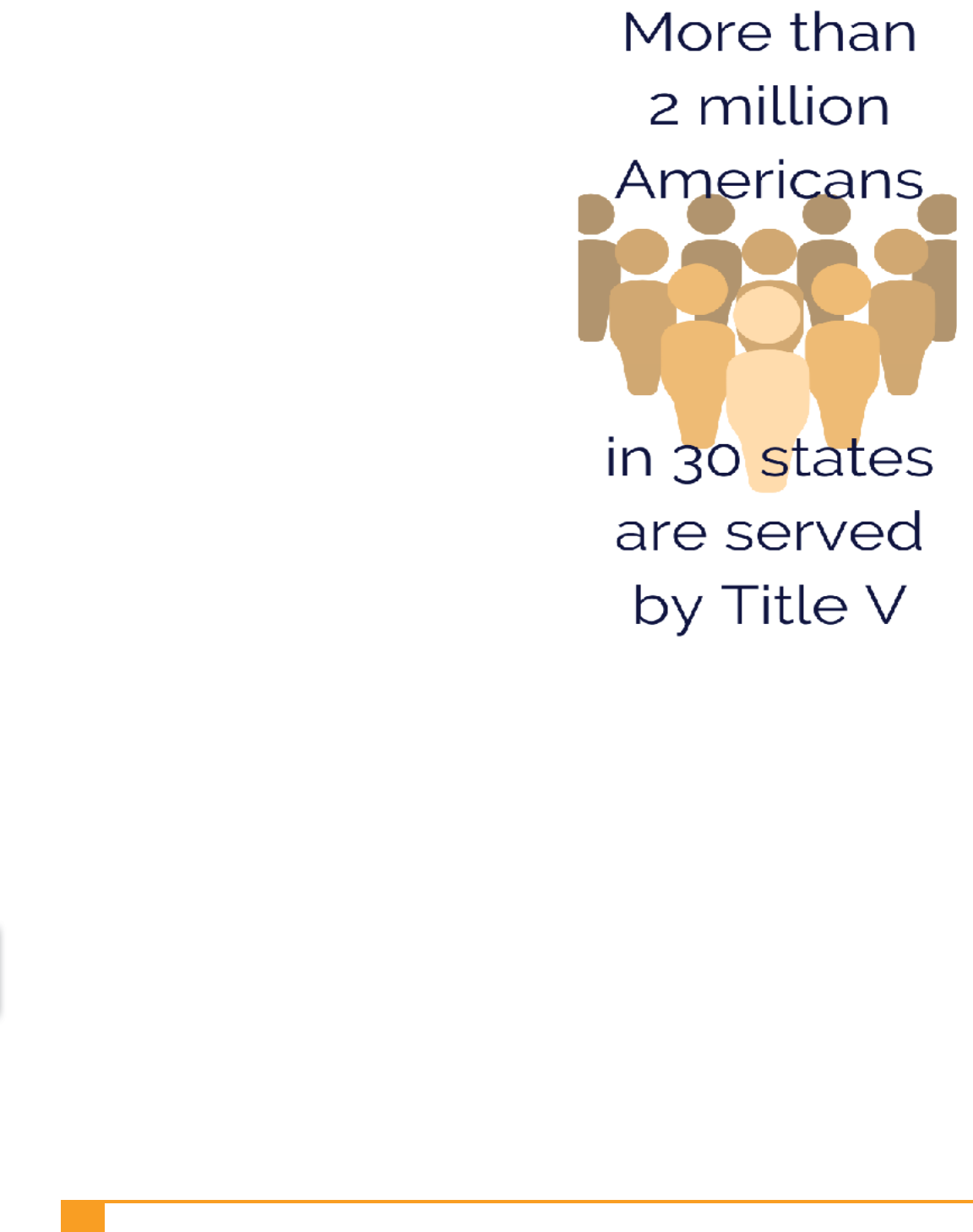
21
USING VACANT AND SURPLUS PROPERTY
FOR HOUSING AND SERVICES
Governments should use their vacant and surplus
property in their community to provide housing and
needed services to homeless people. All levels of
government own real property that is vacant and/or
surplus to their governmental needs. These unused assets
can be turned to productive use if they are made available
to provide needed housing, shelter, and services to people
experiencing homelessness.
• The federal Title V program, authorized under the
McKinney-Vento Homeless Assistance Act, grants
states, local governments, and 501(c)(3) non-profi t
organizations with a right of fi rst refusal to free federal
surplus property for homeless housing and services.
More than two million Americans in 30 states are
served by Title V property conveyances, which have
provided access to approximately 500 buildings
on nearly 900 acres of land in 30 states across the
country.
DEDICATED FUNDING FOR HOUSING AND
S
ERVICES
Local governments are dedicating funding to housing
and services to people without housing. Examples
include:
• In November 2018, San Francisco, California, voters
approved Proposition C, which places an average
0.5% gross receipts tax on companies earning in
excess of $50 million each year to fund homeless
housing and emergency services. The voter measure is
estimated to raise as much as $300 million each year
for housing, mental health, and emergency services
from as many as 400 companies.
• Measure H, a sales tax approved by Los Angeles,
California, voters in 2017, raises sales tax by one-
quarter of a cent, and it is expected to raise about
$355 million annually for ten years to fund homeless
services, including health care and job training.
• The Miami-Dade County, Florida’s Homeless and
Domestic Violence Tax in Miami-Dade County, FL,
imposes a 1% tax on all food and beverage sales by
establishments licensed by the state to serve alcohol on
the premises, excluding hotels and motels. 85% of the
tax receipts go to the Miami-Dade County Homeless
Trust, and it raises some $20 million a year to fund
emergency, supportive, and transitional housing in
Miami-Dade County.
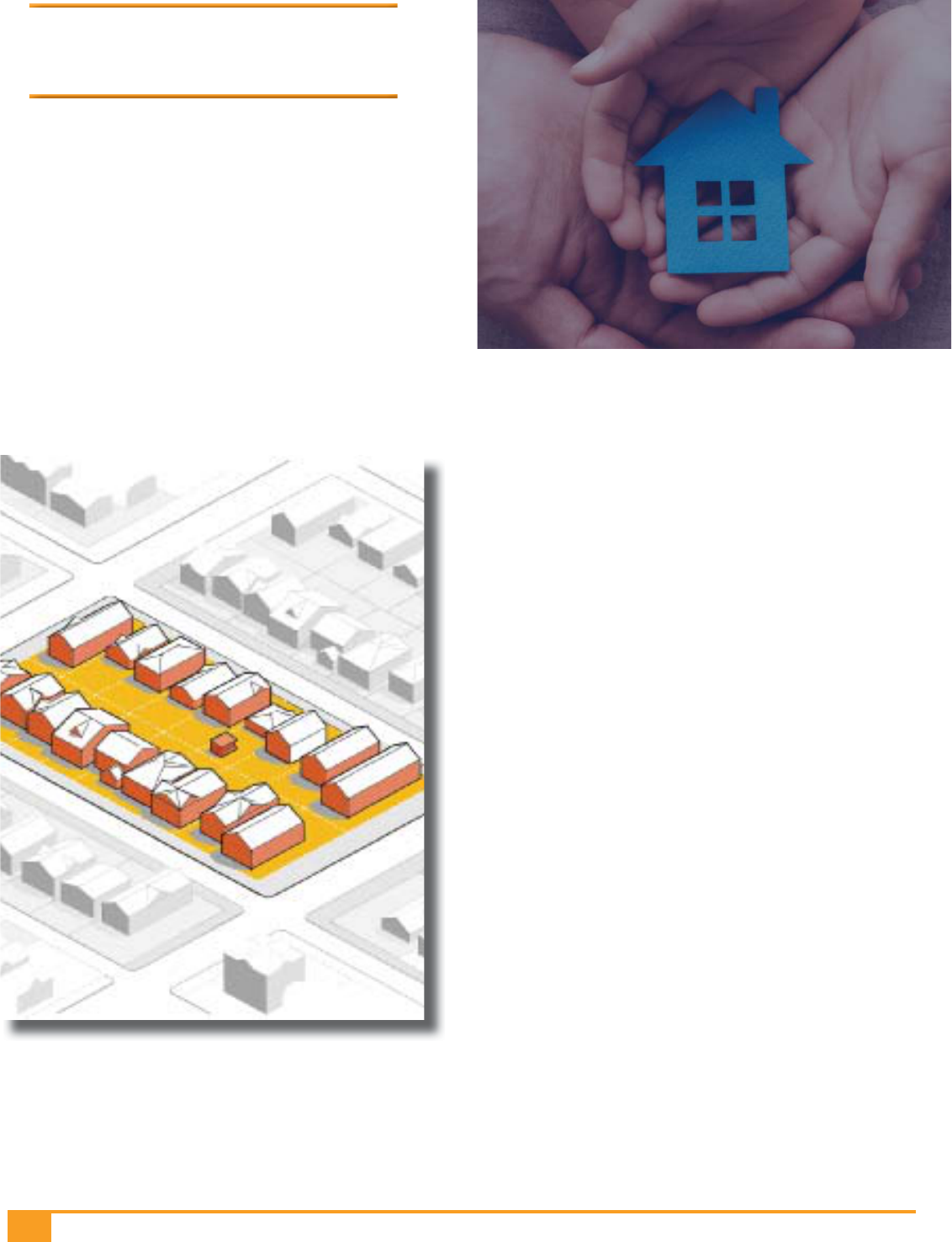
BEST INTERMEDIATE-TERM
PRACTICES
TINY HOME IN-FILL
Tiny homes, while not a total solution to homelessness,
are a rapidly implementable method of providing people
experiencing homelessness with immediate access to
private, indoor space. Accessory dwelling units (“ADUs”),
one type of tiny home, are independent living units sited
on the property of a single-family home. In addition to
providing an affordable housing option, ADUs can also
increase access to high-quality neighborhoods near to
educational and employment opportunities and public
transportation.
• The BLOCK Project in Seattle, Washington, is
a good example of an ADU model that takes
a community-building approach to homeless
housing by placing a pre-fabricated tiny home on
single-family residential lots. The tiny homes are
125 square feet and designed to be self-suffi cient,
including a kitchen, bathroom, sleeping area,
solar-panels, greywater system, and composting
toilet. The BLOCK project relies on volunteer
homeowners, and uses a questionnaire to match
hosts and residents and provides ongoing support
through a social worker. Residents have an
indefi nite rental contract, allowing them to take
as much time as they need to transition to other
housing, or to stay if they need to. Residents pay
30% of their income on rent, divided between
the host family, a maintenance program, and
reinvestment into building new homes.
22
“The BLOCK Project builds communities of com-
passion throughout Seattle, engaging individuals
and their neighborhoods to welcome someone
experiencing homelessness into their lives.”
-The BLOCK Project

23
TINY HOME VILLAGES
Tiny home “villages” are another housing model that can
provide at least temporary housing and/or shelter to
people who lack it. These villages offer residents spaces
that are often more comfortable and private than traditional
shelters, can often better accommodate persons with
disabilities who cannot live in congregate shelters, are
more fl exible to construct, signifi cantly less expensive, and
require less land.
• Seattle, Washington, maintains nine villages of tiny
homes as part of a multifaceted partnership with faith-
based organizations, building trade organizations,
and the Low Income Housing Institute. These villages
allow the City of Seattle to house 283 homeless
residents and they boast exit rates to permanent
housing comparable to other shelter programs.
• In October 2019, Denver, Calorado, unanimously
voted to allow 70 square foot tiny home communities
as a matter of right in industrial, commercial, and
mixed-use areas. Church parking lots and residential
areas can also host a village, and permits can be
renewed yearly at the same location for up to four
years, after which they village must move to a new
location.
BEST IMMEDIATE STEPS TO
REDUCE HARM
TEMPORARY SHELTER FACILITIES
Many cities have downtowns with commercial spaces that
are vacant while they await new renters or remodeling.
Private owners can donate these spaces for use as shelter
while they are vacant in order to help alleviate unsheltered
homelessness, and cities can help facilitate the process.
• Portland-Multnomah County, Oregon, is
working with local businesses to facilitate using
temporarily vacant commercial spaces for
immediate sheltering purposes. The city works with
businesses that have vacant space available for
at least a few months to inspect and evaluate the
property and make any modifi cations necessary
to safely house at least 100 people experiencing
homelessness at a time.
TEMPORARY ENCAMPMENTS
Temporary authorized encampments can help people
experiencing homelessness enjoy a secure, private place
to shelter themselves and cities manage their public spaces.
It is critical that temporary encampments should only be
undertaken with an explicit plan for how people living in
the encampment will eventually be placed into permanent
housing.
Encampments are not fully adequate housing, and we
should not accept the existence of permanent encampments
as part of the American cityscape. It is also critical that
the existence of authorized encampments not be used
as an excuse to criminalize those for whom they may not
be appropriate. That said, authorized encampments can
help bring order and services to otherwise unorganized
unsheltered homelessness, benefi ting both its temporary
residents and housed residents in the surrounding community.
A full set of case studies and best practices can be found in
our Tent City USA report.
11
11 NAT’L L. CTR. ON HOMELESSNESS & POVERTY, TENT CITY,
USA: THE GROWTH OF AMERICA’S HOMELESS ENCAMPMENTS
AND HOW COMMUNITIES ARE RESPONDING 8 (2017), http://
nlchp.org/wp-content/uploads/2018/10/Tent_City_USA_2017.

24
For cities interested in establishing temporary outdoor
encampments as an interim solution to homelessness,
the Law Center developed a set of guiding principles
for addressing temporary encampments (available at
Appendix B), based on case studies and nationally
recognized best practices. The U.S. Interagency Council
on Homelessness has also released guidance that can help
cities to regulate temporary outdoor encampments as an
interim solution to unsheltered homelessness.
12
• The Mesilla Valley Community of Hope in Las Cruces,
New Mexico, hosts a permanent encampment with
a co-located service center, providing expanded
shelter capacity and a safe space for a self-governing
encampment.
• Washington State permits religious organizations to
temporarily host encampments on their property and
places limits on the number of restrictions municipalities
can impose.
pdf [hereinafter TENT CITY, USA].
12 See Ending Homelessness for People Living in Encampments:
Advancing the Dialogue, UNITED STATES INTERAGENCY
COUNCIL ON HOMELESSNESS, https://www.usich.gov/tools-
for-action/ending-homelessness-for-people-in-encampments/
(Aug. 13, 2015); Caution is Needed When Considering “Sanctioned
Encampments” or “Safe Zones”, UNITED STATES INTERAGENCY
COUNCIL ON HOMELESSNESS, https://www.usich.gov/tools-
for-action/caution-is-needed-when-considering-sanctioned-
encampments-or-safe-zones/ (May 25, 2018).
CLEAR PROCEDURES FOR CLOSING
E
NCAMPMENTS THROUGH HOUSING
Understanding the need for communities to regulate public
spaces, encampments should only be removed through
clear processes, with adequate notice, and a requirement
that the affected persons be provide adequate alternative
housing. Putting into law the commitment to closing
encampments through housing the individuals living there
encourages communities to take an approach that will
permanently end the need for the encampments.
• Settlements in Orange County, California, helped
resolve an 800-person encampment through
rehousing and sheltering rather than arrests. Permanent
features of the settlement limits anti-camping and
loitering enforcement against homeless people until
cities within Orange County establish suffi cient shelter
space to meet their needs. The offered shelter beds
must be available within the same zone of the county
as where the person subject to enforcement lives,
and the offers must be appropriate to the individual’s
medical needs, otherwise the encampment can remain
in place. The settlement also sets forth countywide
standards for shelters, including a grievance process.
Seattle houses
283 homeless
residents through
tiny homes

25
• Charleston, South Carolina, ensured adequate time
for planning, outreach, housing and services to close
a 100-person encampment through housing most of its
residents, without a single arrest.
• Indianapolis, Indiana, adopted an ordinance
requiring residents be provided with adequate
alternative housing before an encampment can be
evicted, and mandates at least 15 days’ notice of
planned evictions to encampment residents and
service providers.
• Charleston, West Virginia, settled litigation by
adopting an ordinance requiring that encampment
evictions cannot proceed unless residents are provided
with adequate alternative housing or shelter, and
providing 14 days’ notice to encampment residents
and service providers of planned evictions, and that
storage facilities will be made available for homeless
individuals.
SAFE PARKING LOTS
Governments should establish safe and accessible
places for people to park vehicles used as shelter. To
accommodate the growing number of people residing
in vehicles, some communities have taken initial steps to
provide safe, legal lots for people living in vehicles to park
them.
• Eugene, Oregon, allows public and private entities to
host up to six vehicles for overnight parking. Each site
must ensure availability of sanitary facilities, garbage
disposal services, and a storage area for campers to
store any personal items so that they are not visible
from any public street.
• In June 2019, Oakland, California, established the
fi rst Safe Lot for RVs in the Bay Area. The new city-
sponsored lot will host as many as 50 RVs for up to
six months, and it provides hookups for electricity and
water. It also has on-site toilets and security.
Encampments should
only be removed
through clear
processes, with
adequate notice

26
PREVENT HOMELESSNESS BEFORE IT
H
APPENS
Cities should prevent homelessness by expanding
protections for low-income renters. While many
communities across the country are working to end
homelessness, infl ows into homelessness exceed the pace
at which homeless people become rehoused. To end our
homelessness crisis, we must prevent housing loss before
it happens. Strong renters’ rights can be immediately
implemented to reduce housing instability, remove barriers
to housing access, and prevent homelessness.
• In many states, renters in privately owned rental
housing may be evicted after their lease has expired,
even if they are responsible tenants. In February 2019,
the Oregon state legislature enacted Senate Bill 608
—the fi rst statewide just cause and rent stabilization law
in the country. The bill limits rent increases to 7% each
year, and it requires landlords to have good cause
for evicting renters. Just cause eviction laws limit the
reasons by which renters may be legally evicted from
their housing, and they are most effective when paired
with rent stabilization policies which limit annual rent
increases to a reasonable amount.
• In late 2017, New York City, New York, became
the fi rst city to guarantee a right to counsel for low-
income tenants in housing court. Reversing a trend in
favor of evictions, with counsel, 84% of tenants remain
in their homes. Moreover, a study done on behalf of
the New York City Bar Association’s Pro Bono and
Legal Services Committee found that providing free
legal counsel to low-income tenants at risk of eviction
would result in a net savings to the city of $320 million
each year.
With state and local budgets stretched to their limit, rational,
cost-effective policies are needed—not ineffective, punitive
measures that waste precious taxpayer dollars. Local and
state governments should redirect resources currently spent
on criminalizing homelessness toward proven solutions to
homelessness.
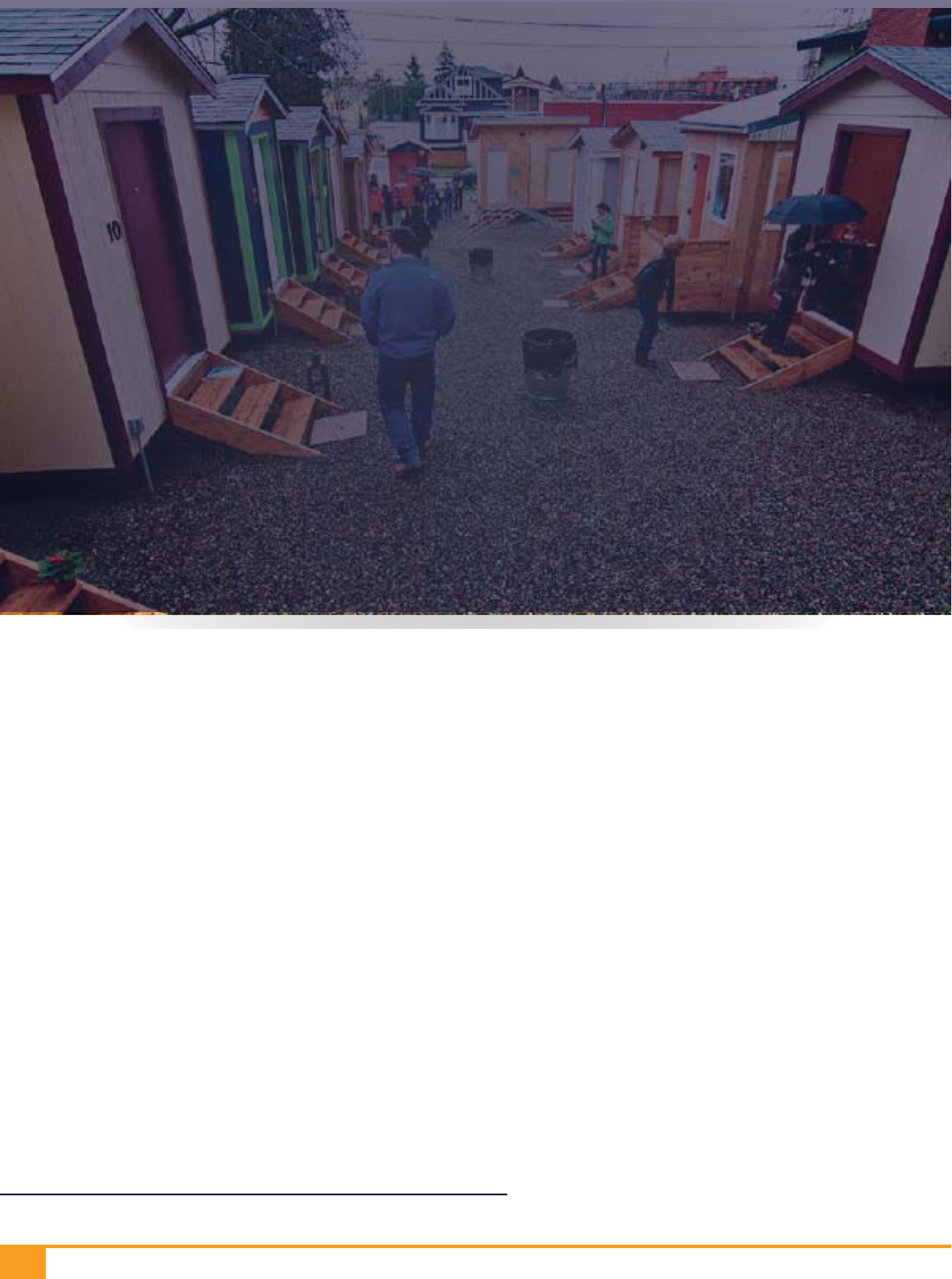
27
H
omelessness is a national crisis that affects communities in all parts of the country. But we can
solve it. There is ample and growing evidence that housing is the solution to the national crisis
of homelessness. Housing people who lack it saves public money. It improves public health. It
improves public safety. And, it improves the lives—or even saves the lives—of people who would otherwise
struggle for survival in shared public space for lack of any other options.
Even though we know what solves homelessness, and despite the success of at least 78 communities and
three states in effectively ending local veteran homelessness through housing and supportive services, all
levels of government have failed to invest in housing solutions. Instead, a growing number of cities have
taken punitive approaches to homelessness that fail to reduce the number of people living on the streets,
waste limited taxpayer dollars, compromise public health and safety, and cause acute human suffering in
the process. Policies that punish homeless people for living outside—even when they have no other place
to live—refl ect the worst of our prejudices and fears. Moreover, the policies wholly fail to address the
systemic causes of homelessness that have driven the crisis and, if corrected, can solve it.
This report discusses a thirteen-year trend in laws that criminally or civilly punish homelessness, using data
from 187 cities across the country.
13
It also describes common practices aimed at displacing, or even
banishing, homeless people from public space. We discuss why this troubling legal trend harms cities,
exacerbates racial and other social inequities, and wastes money and energy on cruel, often illegal,
policies that are doomed to fail.
13 The 187 cities featured in our research were chosen in 2006 based on their geographic diversity (e.g. they include urban and rural
communities in all regions of the country), and the availability of the cities’ municipal codes online.
INTRODUCTION

HOMELESSNESS IS A LARGE AND GROWING
CRISIS
The U.S. Department of Housing and Urban Development
(HUD) estimates that roughly 553,000 people experienced
homelessness in 2018,
14
with over one third of those living
in an unsheltered environment.
15
This represents a growth
in overall homelessness, and the third year in a row that
unsheltered homelessness has increased nationwide. Most
of the largest increases in unsheltered homelessness were
reported in Western states. Indeed, between 2015 and
2017, California and Washington together accounted for
over half of all people sleeping unsheltered in the country.
16
Even these stark numbers signifi cantly understate the problem.
Obtaining an accurate count of the number of homeless
people in America has proven to be a nearly impossible
task due to multiple factors—including inconsistent local
implementation of the count methodology and the failure to
count homeless people in places where they may be living.
17
Homeless people who are incarcerated, for example, are
excluded from most offi cial counts of people experiencing
homelessness which can severely compromise count data
in an era of increasing criminalization of homelessness
and mass incarceration. The Continuum of Care (CoC)
for Houston, Texas, performed an “expanded” Point-in-
Time count in 2017 which included homeless individuals in
county jails. Including the incarcerated homeless population
increased the total number of homeless individuals counted
14 U.S. DEP’T OF HOUS. & URBAN DEV., THE 2018 ANNUAL HOMELESS
A
SSESSMENT REPORT (AHAR) TO CONGRESS 4 (2018), https://www.
hudexchange.info/resources/documents/2018-AHAR-Part-1.pdf
[hereinafter AHAR]. The point-in-time (“PIT”) count is conducted for
one night during the last ten days of January each year, with the
goal of estimating the number of people experiencing homelessness
as well as within particular populations. Id. at 6.
15 Id. at 10. HUD defines unsheltered homelessness as “people
whose primary nighttime location is a public or private place
not designated for, or ordinarily used as, a regular sleeping
accommodation for people (for example, the streets, vehicles, or
parks).” Id. at 3.
16 Exploring the Crisis of Unsheltered Homelessness,
N
AT’L ALLIANCE TO END HOMELESSNESS (June 20, 2018), https://
endhomelessness.org/exploring-crisis-unsheltered-homelessness/.
17 See generally NAT’L L. CTR. ON HOMELESSNESS & POVERTY, DON’T
C
OUNT ON IT: HOW THE HUD POINT-IN-TIME COUNT UNDERESTIMATES
T
HE HOMELESSNESS CRISIS IN AMERICA (2017), https://nlchp.org/wp-
content/uploads/2018/10/HUD-PIT-report2017.pdf [hereinafter
DON’T COUNT ON IT].
28
by 57%.
18
These shortcomings warn against relying on HUD
data to present a realistic picture of the homeless crisis, or
even to demonstrate trends.
19
Other data sets present a more accurate view of the size
and nature of the homelessness crisis. According to the
U.S. Department of Education,
20
almost 1.4 million school
children experienced homelessness during the 2016-
2017 school year.
21
Some of these children were among
the estimated 4.4 million poor people in 2017 who were
temporarily sleeping on the fl oors or couches of family or
friends because they could not afford their own housing.
22
A 2001 study using administrative data collected from
homeless service providers estimated that the annual
number of homeless individuals is 2.5 to 10.2 times greater
than can be obtained using a Point in Time count.
23
18 Id. at 12.
19 Id. at 6; see also Kim Hopper et al., Estimating Numbers
of Unsheltered Homeless People Through Plant-Capture and
Postcount Survey Methods, 98 A
M. J. PUB. HEALTH 1438, 1442
(2008), ht tp://ajph.aphapub lications.org/doi/abs/10. 2105/
AJPH.2005.083600; Maria Foscarinis, Homeless Problem Bigger
than Our Leaders Think: Column, USA T
ODAY (Jan. 16, 2014, 7:35
PM), http://www.usatoday.com/story/opinion/2014/01/16/
homeless-problem-obama-america-recession-column/4539917/.
20 The U.S. Department of Education uses a different definition of
homelessness than HUD.
21 National Overview, NAT’L CTR. FOR HOMELESS EDUC., http://
profiles.nche.seiservices.com/ConsolidatedStateProfile.aspx (last
visited Nov. 19, 2019).
22 State of Homelessness, NAT’L ALL. TO END HOMELESSNESS,
https://endhomelessness.org/homelessness-in-america/
homelessness-statistics/state-of-homelessness-report/ (last visited
Nov. 19, 2019).
23 Stephen Metraux et al., Assessing Homeless Population Size
Through the Use of Emergency and Transitional Shelter Services in
1998: Results from the Analysis of Administrative Data from Nine US
Jurisdictions, 116 PUB. HEALTH REP. 344 (2001).
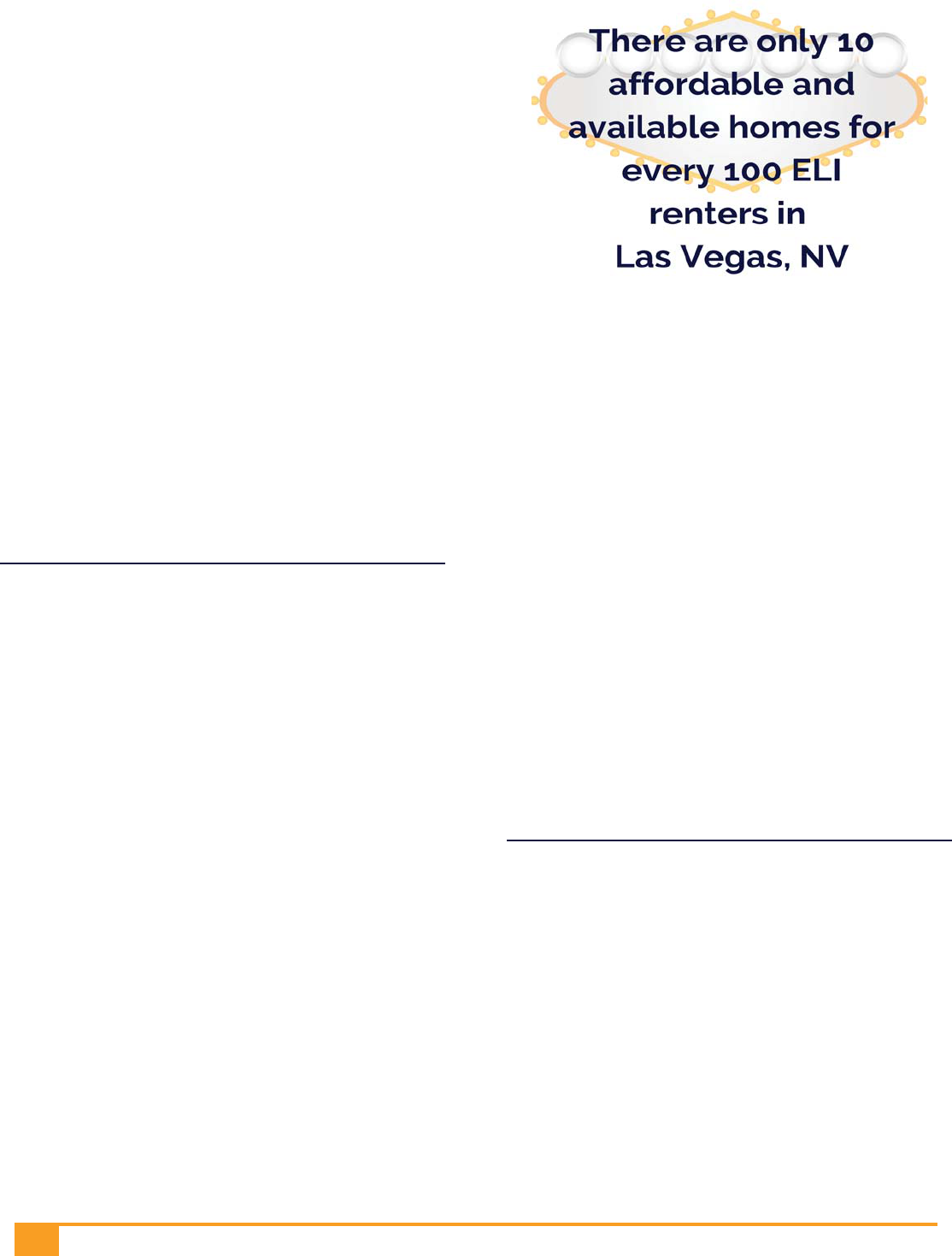
29
THE GAP BETWEEN INCOMES AND THE
COST OF HOUSING IS A PRIMARY CAUSE OF
HOMELESSNESS
Rising rents,
24
historically low rental vacancy rates,
25
and
the decline of federally subsidized housing
26
have led
to a critical shortage of affordable housing units.
27
This
affordability crisis is further exacerbated as wages remain
relatively stagnant alongside skyrocketing housing costs. In
Santa Clara County, California, for example, household
incomes at 30% of area median income grew by 15%,
while rental prices in the least expensive quartile of units
grew by 36%.
28
According to the National Low Income Housing Coalition,
which publishes an annual report on the affordable housing
gap, there are only 35 available, affordable housing
units for every 100 extremely low income (“ELI”) renter
households.
29
This housing gap is even more severe in many
of the nation’s large and growing metropolitan areas. In
Los Angeles, California, for example, there are only 17
affordable and available units for every 100 ELI renter
24 The U.S. average rent is $1,465 as of June 2019, increasing
2.6%since the beginning of the year. At the end of 2018, the
national average rent was $1,419, a 3.1%increase from the year
prior. Drastic rent increases are not confined to major cities such as
New York and San Francisco; small cities experienced the most rent
fluctuation in 2018, with double digit rent increases in Odessa, TX,
Midland, TX, and Reno, NV. Balazs Szekeley, 2018 Year End Rent
Report, RENT CAFE BLOG (Dec. 13, 2018), https://www.rentcafe.
com/blog/rental-market/2018-year-end-rent-report/.
25 Low vacancy rates keep rents high. The national vacancy rate
dropped to 4.4% for both owner-occupied and rental units in 2018,
the lowest point since 1994. J
T. CTR. FOR HOUS. STUDIES OF HARVARD
UNIV., THE STATE OF THE NATION’S HOUSING 1, 27 (2019), https://www.
jchs.harvard.edu/sites/default/files/Harvard_JCHS_State_of_
the_Nations_Housing_2019.pdf [hereinafter S
TATE OF THE NATION’S
HOUSING].
26 Since the mid-1980’s, our nation has lost subsidized housing
units at a rate of approximately 10,000 per year. Ed Gramlich,
Public Housing, N
AT’L LOW INCOME HOUS. COAL. (2017), https://nlihc.
org/sites/default/files/AG-2017/2017AG_Ch04-S04_Public-
Housing.pdf. We cannot recover from the homelessness crisis
without significant reinvestment in federally subsidized housing for
low-income people.
27 See e.g., Freddie Mac: Rapidly Growing Metros are Losing
Affordable Housing at Alarming Rates, FREDDIE MAC, https://
freddiemac.gcs-web.com/news-releases/news-release-details/
freddie-mac-rapidly-growing-metros-are-losing-affordable-
housing (last visited Nov. 27, 2019).
28 BAY AREA ECON. INST., BAY AREA HOMELESSNESS: A REGIONAL VIEW
OF A REGIONAL CRISIS 22 (2019).
29 Households defined as extremely low income (“ELI”)
have incomes at or below the Poverty Guideline or 30% of AMI,
whichever is higher. NAT’L LOW INCOME HOUS. COAL., A SHORTAGE OF
AFFORDABLE HOMES 2 (2018), https://reports.nlihc.org/sites/default/
files/gap/Gap-Report_2018.pdf.
households. In Las Vegas, Nevada, that number drops to
only 10 affordable and available homes.
30
The private market has not been a source for solutions; in
fact, local incentives are further skewing the market. Las
Vegas, which already has a dearth of affordable housing,
is funding development incentives that resulted in 100%
of new apartment developments in 2017 being high-end,
luxury units, rather than affordable housing.
31
This is in
line with national statistics that close to 78% of new units
constructed in 2017 and 87% of new units in 2019
32
were
luxary units.
Paying market rents is a diffi cult-to-impossible task.
33
A full-
time worker earning the federal minimum wage of $7.25
would need to work approximately 103 hours per week
for all 52 weeks of the year—the equivalent of two and
a half full-time jobs—just to afford a one-bedroom home
at the national average fair market rent.
34
There is no state,
metropolitan area, or county where a worker earning
minimum wage can afford market rents by working a
30 Id. at 9. These numbers only count households that are currently
renting and therefore do not account for persons experiencing
homelessness.
31 8 Out of 10 New Apartment Buildings Were High-End in 2017,
Trend Continues in 2018, RENT CAFE BLOG (Sept. 21, 2018), https://
www.rentcafe.com/blog/rental-market/luxury-apartments/8-out-
of-10-new-apartment-buildings-were-high-end-in-2017-trend-
carries-on-into-2018/.
32 Id.
33 As rents have risen, wages of low-income American workers
have declined. From 1979 to 2013, while the hourly wages of
high-wage workers rose 40.6% and those of middle-wage workers
grew 6.1%, the wages of low-wage workers fell 5.3%, according
to the Economic Policy Institute. E
LISE GOULD, ECON. POLICY INST.,
WHY AMERICA’S WORKERS NEED FASTER WAGE GROWTH—AND WHAT WE
C
AN DO ABOUT IT 4 (2014), https://www.epi.org/files/2014/why-
americas-workers-need-faster-wage-growth-final.pdf.
34 N
AT’L LOW INCOME HOUS. COAL., OUT OF REACH 1 (2019),
https://reports.nlihc.org/sites/default/files/oor/OOR_2019.pdf
[hereinafter OUT OF REACH].
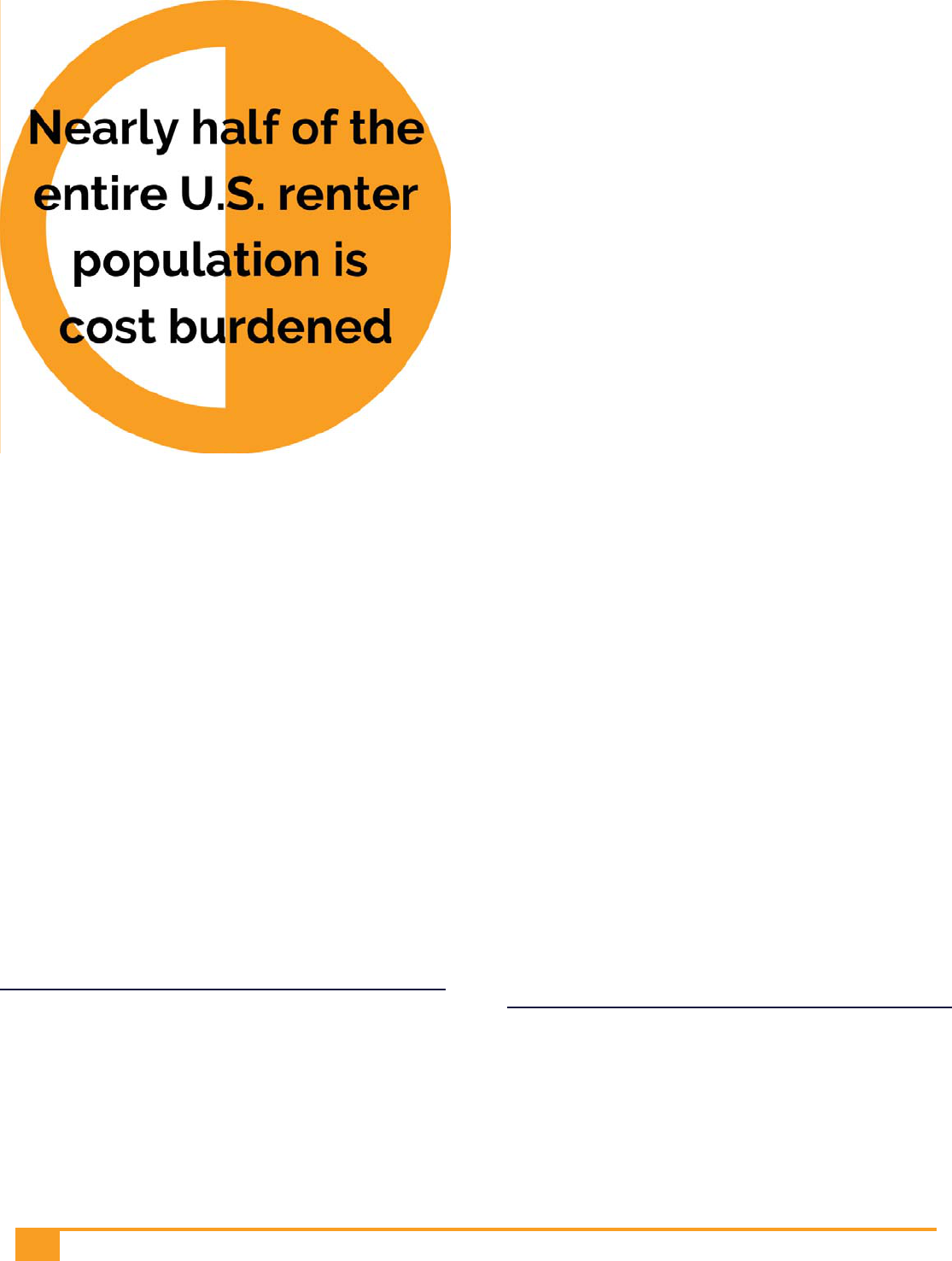
30
standard 40-hour per week job.
35
People who are on fi xed
incomes, such as retired seniors and people with disabilities,
are also priced out of the market.
Millions of renters pay more than they can afford
to keep a roof over their heads, and are at risk of
homelessness.
36
According to a June 2019 report by the
Joint Center for Housing Studies at Harvard University,
nearly half of the entire U.S. renter population is “cost
burdened”, meaning that they pay more than 30% of
their incomes toward housing costs.
37
While housing
cost burdens affect renters of multiple income levels,
our nation’s poorest renters feel housing cost burdens
most acutely. Indeed, renters are considered severely
cost-burdened when they spend more than 50% of their
incomes on housing.
38
Today, 71% of ELI households
are severely cost burdened.
39
Housing cost-burdened renters are left with little
income for other necessities like food, medicine,
child care, and transportation. They have no financial
35 Id. at 2. This statistic is for 2-bedroom units at fair market rent.
36 The majority of renter households are low-income, with
53%of all renter households earning less than $35,000 annually,
and 60% of those earning less than $15,000 each year. JT. CTR. FOR
HOUS. STUDIES OF HARVARD UNIV., AMERICA’S RENTAL HOUSING 1 (2017),
https://www.jchs.harvard.edu/sites/default/files/harvard_jchs_
americas_rental_housing_2017_0.pdf.
37 STATE OF THE NATION’S HOUSING, supra note 26, at 4.
38 The Gap: A Shortage of Affordable Rental Homes, NAT’L LOW
INCOME HOUSING COALITION, https://reports.nlihc.org/gap/about
(last visited Nov. 19, 2019).
39 Id.
cushion against emergencies or sudden interruptions in
income from job loss, divorce, or other destabilizing
life events. Meanwhile, federal housing subsidies have
shrunk dramatically in recent decades, and only 24%
of people eligible for housing assistance receive it.
40
In this environment, low-income renters face a constant
risk of housing loss and homelessness.
People of color are especially harmed by the affordable
housing gap. Approximately half of all renters in this
country are people of color. According to the 2019
Harvard Report, the cost-burdened share is highest
among Black renters at 54.9%, followed closely by
Hispanics at 53.5%.
41
The rates for Asians and other
minorities are lower at 45.7%, but still above the white
share of 42.6%. Among homeowners, 30.2% of Blacks,
29.6% of Hispanics, and 27.3% of Asian/others were
cost burdened in 2017, compared with 20.4% of White
homeowners.
42
A growing body of research demonstrates the causal link
between unaffordable rental housing and homelessness.
A recent study from UCLA found that housing costs are a
signifi cant factor in California’s homeless crisis.
43
The study
compared homeless rates and housing costs in all 50 states
and Washington, DC, and found that, in general, states
with higher housing costs have higher homeless rates. The
study also found that states with higher incomes and more
housing supply had lower rates of homelessness.
A similar study, Dynamics of Homelessness in Urban
America, examined the relationship between housing
costs and homelessness in the 25 largest U.S. metropolitan
areas, drawing on data from the U.S. Census Bureau,
HUD, and the housing website Zillow.
44
The study found
a strong correlation between homelessness and rental
costs. The study also predicted marked increases in
homelessness with rising rental costs. For example, the study
predicted over 6,000 more people would experience
homelessness in New York City if rents increased by 10%;
in Los Angeles, the increase would be over 4,000 more
40 Erika C. Poethig, One in Four: America’s Housing Assistance
Lottery, URB. INST. (May 28, 2014), https://www.urban.org/urban-
wire/one-four-americas-housing-assistance-lottery.
41 STATE OF THE NATION’S HOUSING, supra note 26, at 32.
42 Id.
43 Andrew Khouri, High Cost of Housing Drives Up Homeless
Rates, UCLA Study Indicates, L.A. TIMES (June 13, 2018, 5:00 AM),
https://www.latimes.com/business/la-fi-ucla-anderson-forecast-
20180613-story.html.
44 CHRIS GLYNN & EMILY B. FOX, DYNAMICS OF HOMELESSNESS IN
URBAN AMERICA 1 (July 28, 2017).

people.
45
Unaffordable rents result in evictions for non-
payment of rent, which is a direct cause of homelessness.
The Boston Bar Association Task Force on the Civil Right
to Counsel reported that 45% of households that enter the
Massachusetts shelters gave eviction as the reason they
were homeless or at risk of homelessness.
A study of Washington State found similar results and
described how quickly housing can be lost; over half of
renters facing eviction in Seattle, Washington’s largest city,
owed less than one month’s rent before receiving eviction
notices.
46
Smaller communities in Washington State are
in a similar predicament. A 2017 survey conducted by
St. Martin’s University also found eviction to be a leading
cause of homelessness in Puyallup, Washington—a small
community with no year-round emergency shelter.
47
Eviction is not only a direct cause of homelessness; it also
triggers a fl ood of other problems that increase the risk of
homelessness.
48
The scramble to fi nd replacement housing
can force people to pay more than they can afford, often for
substandard housing in worse neighborhoods. An eviction
on someone’s record can also bar them from becoming
rehoused. Private landlords and even some public housing
authorities deny admission and assistance to tenants with
histories of eviction.
Evictions can result in job loss.
49
In Milwaukee, displaced
renters were 20% more likely to lose their jobs.
50
45 Id. at 21.
46 Heidi Groover & Vernal Coleman, Evictions in Seattle, Often
Over a Month’s Rent or Less, Add to Homeless Crisis, Report Finds,
THE SEATTLE TIMES (Sept. 21, 2018, last updated Sept. 24, 2018),
https://www.seattletimes.com/seattle-news/homeless/evictions-
in-seattle-often-over-a-months-rent-or-less-add-to-homeless-
crisis-report-finds/.
47 Emily F. Coyle, Experiencing Homelessness in Puyallup (2017)
(unpublished study, Saint Martin’s University), available at https://
www.stmartin.edu/news-events/saint-stories/hearing-homeless.
Also, Puyallup, Washington was added to our Hall of Shame in
our Housing Not Handcuffs report released in 2016. See NAT’L L.
CTR. ON HOMELESSNESS & POVERTY, HOUSING NOT HANDCUFFS: ENDING
THE CRIMINALIZATION OF HOMELESSNESS IN U.S. CITIES 29 (2016),
https://nlchp.org/wp-content/uploads/2018/10/Housing-Not-
Handcuffs.pdf.
48 N
AT’L L. CTR. ON HOMELESSNESS & POVERTY, PROTECT TENANTS,
PREVENT HOMELESSNESS 17 (2018), http://nlchp.org/wp-content/
uploads/2018/10/ProtectTenants2018.pdf [hereinafter P
ROTECT
T
ENANTS, PREVENT HOMELESSNESS].
49 See Breezy Schmidt, North Dakota Case Study: The
Eviction Mill’s Fast Track to Homelessness, 92 N.D. L. REV. 595
(2017), available at https://law.und.edu/_files/docs/ndlr/pdf/
issues/92/3/92ndlr595.pdf.
50 Matthew Desmond, Unaffordable America: Poverty, Housing,
and Eviction, 22-2015 Fast Focus 5 (2015).
31
Evictions also carry serious health and education
consequences.
In Matt Desmond’s Pulitzer Prize winning
book Evicted, he reveals that mothers who experienced a
recent eviction are over twice as likely to report poor health
in their children, as well as higher rates of depression.
51
Moreover, an eviction can affect a child’s ability to
succeed in school.
52
Not only does their ability to attend
school become tenuous, it is also “diffi cult for children to
concentrate at school when they have lost their clothes and
toys and do not know where they will sleep that night.”
53
This contributes to poorer school performance and lower
graduation rates of homeless students compared to their
housed classmates—problems that can limit their options
and have profound effects throughout their entire lives.
54
Once housing is lost, it can be diffi cult to replace. In addition
to a competitive rental market where affordable units are
few and far between, low-income renters must also contend
with multiple housing policies that discriminate against them.
Landlords may have policies that automatically exclude
prospective renters with eviction records, criminal records,
or a lack of recent rental history due to homelessness. These
policies may apply even when the underlying events are
old, wholly unrelated to the prospective renter’s ability to
pay rent or abide by reasonable lease terms, or even when
the record at issue is inaccurate. In addition, landlords may
refuse to rent to tenants based on their source of income,
such as a Section 8 voucher, or based on other prejudices.
These barriers all diminish the choices of low-income renters,
forcing them into worse housing at higher costs. Once a
renter is trapped in this cycle, homelessness becomes more
and more likely.
There are other contributors to homelessness beyond the lack
of affordable housing. Trauma and violence, for example,
are highly correlated with homelessness. More than 80% of
women with children who experience homelessness have
experienced domestic violence. Nearly half of women
51 MATTHEW DESMOND, EVICTED: POVERTY & PROFIT IN THE AMERICAN
C
ITY, 298 (2016).
52 N
AT’L L. CTR. ON HOMELESSNESS & POVERTY, NO BARRIERS: A
LEGAL ADVOCATE’S GUIDE TO ENSURING COMPLIANCE WITH THE EDUCATION
PROGRAM OF THE MCKINNEY-VENTO ACT 10 (2d ed. 2016), https://
nlchp.org//wp-content/uploads/2018/10/NoBarriers-1.pdf.
53 Breezy Schmidt, North Dakota Case Study: The Eviction
Mill’s Fast Track to Homelessness, 92 N.D. L. REV. 595, 619
(2017), available at https://law.und.edu/_files/docs/ndlr/pdf/
issues/92/3/92ndlr595.pdf.
54 NAT’L L. CTR. ON HOMELESSNESS & POVERTY, NO BARRIERS: A
L
EGAL ADVOCATE’S GUIDE TO ENSURING COMPLIANCE WITH THE EDUCATION
P
ROGRAM OF THE MCKINNEY-VENTO ACT 10 (2d ed. 2016), https://
nlchp.org//wp-content/uploads/2018/10/NoBarriers-1.pdf.

with a history of homelessness also experienced childhood
sexual abuse.
55
Our broken mental health system,
56
inadequate addiction
treatment options,
57
mass incarceration,
58
and climate
change
59
have also contributed to the current crisis. But it is
important to note that while fi xing these issues can help ease
homelessness rates, any solutions to homelessness must
address its primary cause: a lack of affordable, available,
and adequate housing.
PEOPLE OF COLOR FACE DISPROPORTIONATE
HOUSING COST BURDENS, EVICTION, AND
HOMELESSNESS
A long, inglorious history of housing and zoning policies
creating racial and socioeconomic segregation has led
to disproportionate representation of people of color
among the nation’s homeless population. Laws that are
discriminatory or have discriminatory impact, as well as
discrimination in real estate and lending practices, have
resulted in neighborhood segregation along racial lines
and concentrated poverty. Today, 70% of poor Blacks and
63% of poor Hispanics live in high-poverty communities as
compared with only 35% of poor Whites.
60
Concentrated poverty contributes to impoverished social
networks. Poor individuals and families whose social
networks are similarly impoverished may lack the ability to
live, even temporarily, with others because their friends and
family lack the resources to accommodate them.
61
55 DEPT. OF HEALTH & HUMAN SERVICES, FAMILY & YOUTH SERVICES
BUREAU, DOMESTIC VIOLENCE AND HOMELESSNESS STATISTICS (2016),
https://www.acf.hhs.gov/fysb/resource/dv-homelessness-
stats-2016.
56 One-third of the U.S. homeless population is comprised of
individuals with untreated psychiatric illnesses. Anthony H. Normore
et al., The Defragmentation of Mental Health Services, Police, and
the Homeless, 10 POLICING 134, 135 (2015).
57 See id. at 137 (discussing the complex relationship between
substance use treatment and mental health conditions).
58 LUCIUS COULOUTE, PRISON POLICY INITIATIVE, NOWHERE TO GO:
HOMELESSNESS AMONG FORMERLY INCARCERATED PEOPLE, https://www.
prisonpolicy.org/reports/housing.html.
59 In January 2018, 3,900 people were staying in sheltered
locations specifically for people displaced by presidentially
declared national disasters. AHAR, supra note 15, at 1; see generally
Brodie Ramin & Tomislav Svoboda, Health of the Homeless and
Climate Change, 86 J. URB. HEALTH 654 (2009).
60 STATE OF THE NATION’S HOUSING, supra note 26, at 16.
61 JEFFREY OLIVET ET AL., CENTER FOR SOCIAL INNOVATION, SUPPORTING
PARTNERSHIPS FOR ANTI-RACIST COMMUNITIES: PHASE ONE STUDY FINDINGS
32
Poor families of color, particularly Black women with
children, have been the subject of disproportionately high
rates of eviction. And once housing is lost, racist practices
prevent people from becoming rehoused. According to
data from HUD, people of color are shown fewer rental
units and are more often denied leases based on credit
history compared to White people. Black and Hispanic
renters are also quoted higher rental prices than White
renters and told less frequently that deposits and other
move-in costs can be negotiated.
62
With fewer options, people of color are also more likely to
have worse housing and to pay more for it. Data from the
National Housing Survey revealed that Black people are
24% less likely to live in safe, adequate housing than white
people. Hispanic people are 12% less likely.
63
Racist housing policies contribute to disproportionate
rates of homelessness among people of color, even when
controlling for poverty.
64
Black people make up 40%
of the homeless population, yet only 13% of the general
population. Latinx, Native American, and Pacifi c Islander
rates of homelessness are also disproportionately high. In
total, people of color constitute over 60% of the nation’s
homeless population even though they make up only a third
of the general U.S. population.
12 (2018), https://center4si.com/wp-content/uploads/2016/08/
SPARC-Phase-1-Findings-March-2018.pdf.
62 PROTECT TENANTS, PREVENT HOMELESSNESS, supra note 49, at
13; see also Shaila Dewan, Discrimination in Housing Against
Nonwhites Persists Quietly, U.S. Study Finds, N.Y. TIMES (June
11, 2013), http://www.nytimes.com/2013/06/12/business/
economy/discrimination-in-housing-against- nonwhites-persists-
quietly-us-study-finds.html (“Taking into account fees, deposits, and
rents, apartments were more likely to cost whites slightly less in the
first year of rental than Blacks might pay.”).
63 PROTECT TENANTS, PREVENT HOMELESSNESS, supra note 49, at 13
(citing Kusum Mundra & Amarendra Sharma, Housing Adequacy Gap
for Minorities and Immigrants in the U.S.: Evidence from the 2009
American Housing Survey (2014), https://kmundra.newark.rutgers.
edu/files/2013/11/MS-HousingQualityRevJHRJune102014.pdf).
64 See George R. Carter III, From Exclusion to Destitution:
Race, Affordable Housing, and Homelessness, 13 C
ITYSCAPE 33
(2011), https://www.huduser.gov/portal/periodicals/cityscpe/
vol13num1/Cityscape_March2011_from_exclusion.pdf.
Many communities
treat temporary
emergency shelters
as the answer

“You can’t solve the housing issue on private
terms. As long as there is a price on shelter, it will
be inaccessible to millions of people. Compound
that with the federal government’s resistance to
public housing, and you end up in a situation
where a signifi cant portion of the population can
never be adequately housed. When it’s just left
up to the market to determine the fl oor on
housing prices, it will go as high as humanly
possible. That’s what we’re experiencing now—
historically high rents, historically high levels of
housing insecurity.” - Keeanga-Yamahtta Taylor
PEOPLE WITH DISABILITIES ARE ALSO
DISPROPORTIONATELY HOMELESS
People experiencing homelessness are signifi cantly more
likely to have disabilities compared to either the U.S.
population or individuals living in poverty.
65
1 in 85 adults
with disabilities experienced sheltered homelessness
compared to 1 in 344 adults without disabilities.
66
Among
adults in families with children in shelters, nearly 22% have
a disability. Disability rates are also 8% higher among
children and youth experiencing homelessness compared
to their peers.
While people with disabilities may qualify for certain income
supports, they often face challenges when applying for
them.
67
Moreover, disability income supports, like SSI, are
too low to pay for market rate housing in many American
cities. Indeed, the national average rent for a modest one-
bedroom apartment is equal to 113% of the average SSI
disability benefi t for a single individual.
68
65 U.S. INTERAGENCY COUNCIL ON HOMELESSNESS, HOMELESSNESS IN
AMERICA: FOCUS ON INDIVIDUAL ADULTS 6 (2018), https://www.usich.
gov/resources/uploads/asset_library/HIA_Individual_Adults.pdf
[hereinafter FOCUS ON INDIVIDUAL ADULTS].
66 Id.
67 Housing and Homelessness as a Public Health Issue, AM. PUB.
HEALTH ASS’N (2017), https://apha.org/policies-and-advocacy/
public-health-policy-statements/policy-database/2018/01/18/
housing-and-homelessness-as-a-public-health-issue (“People
experiencing homelessness face many challenges when applying
for disability benefits, including inconsistent treatment, difficulty in
locating medical records, lack of a stable address or telephone
number for contact with Social Security, and difficulty in
understanding complex and fragmented application processes.”).
68 FOCUS ON INDIVIDUAL ADULTS, supra note 65, at 6.
33
PEOPLE EXPERIENCING HOMELESSNESS HAVE
INSUFFICIENT OPTIONS FOR MEETING THEIR
BASIC HUMAN NEEDS
Once a person becomes homeless, they have exceedingly
limited options for meeting their basic human needs,
like the need for shelter from the outdoor elements. Only
a few jurisdictions guarantee a right to shelter, and even
these communities struggle with unsheltered homelessness
because shelter alone does not end homelessness.
69
Two-thirds of people experiencing chronic homelessness
are staying outdoors, in abandoned buildings, or other
locations not suitable for human habitation.
Many communities treat temporary emergency shelters as
the answer to systemic shortages of permanent housing,
but this is misguided and harmful. Because homelessness
is driven by a large and critical shortage of affordable
housing, many individuals and families need help not just
for one or two nights, but for longer periods of time. Indeed,
exits to permanent housing from emergency shelters are
abysmally low—the majority of people who enter into
shelter from streets and jails exit right back to the streets.
For example, an investigative report of the Pinellas Safe
Harbor shelter in Pinellas County, Florida, found that only
7% of shelter residents transitioned into permanent housing.
In contrast, 70% of shelter residents ended up at another
shelter or an “unknown location.”
70
Nonetheless, emergency shelters are an important part
of the crisis response to homelessness. Yet, even this
limited resource is overstretched. Nationwide, shelters are
operating at or near maximum capacity. Indeed, homeless
service providers are only able to offer temporary beds to
approximately 70% of people experiencing homelessness
captured in the (signifi cantly underinclusive) Point-in-Time
count.
71
This problem is faced not only by large, urban
69 New York, Massachusetts, West Virginia, and Washington
DC guarantee a right to shelter to certain homeless individuals.
The right to shelter, however, has not ended homelessness in those
communities. The New York State Supreme Court ruling in Callahan
v. Carey led New York City to build shelters for 95% of the its
homeless population, but “this shelter capacity has helped to create
the nation’s largest concentration of homelessness in New York
City.” BAY AREA ECON. INST., supra note 29, at 29.
70 Arthur Delaney, A Traveling Consultant Helps America Hide
the Homeless, HUFFINGTON POST (Mar. 9, 2015, 9:12 PM), https://
www.huffpost.com/entry/robert-marbut_n_6738948.
71 State of Homelessness, NAT’L ALL. TO END HOMELESSNESS,
https://endhomelessness.org/homelessness-in-america/
homelessness-statistics/state-of-homelessness-report/ (last visited
Nov. 19, 2019).

communities and states with relatively high homeless
populations; it is widespread and affects states in every
corner of the nation.
Some cities expand emergency shelter capacity during
inclement weather months, but even these “overfl ow” beds
are routinely at capacity. As a result, emergency shelters
routinely turn people away and back into public space in
cities across the country. Indeed, in many cities, there are
long waiting lists even for overnight emergency shelter in
crowded rooms that offer only an overnight mat on the fl oor.
Even when shelter beds are open, they may be functionally
unavailable to people living outside. A broad range of
practical barriers make emergency shelters inaccessible
or inappropriate settings for homeless people. Some key
barriers to emergency shelter access, even when beds are
technically open, are:
• Gender: Most emergency shelters serve only a single
gender, most often single adult males. This poses a
problem for women, who have fewer options for
shelter, and for gender non-conforming people who
may be excluded from shelters entirely.
• Age: Most emergency shelters serve only adults.
Adults with minor children have far fewer shelter
options; unaccompanied youth have the fewest of all.
• Identifi cation Requirements: Restrictive ID
requirements prevent people from accessing shelters.
Maintaining identifi cation documents is diffi cult for
unhoused people who have no place to store their
personal property.
• Family Composition: Most shelters serve single adults
and generally separate members of the opposite sex.
As a result, adult married couples or parents of adult
34
children (or even teenaged male children) may be
separated when entering shelter.
• Addiction: Most shelters do not accommodate people
who are under the infl uence of a controlled substance.
• Lack of Storage: Most emergency shelters do not have
capacity to store their clients’ personal possessions.
Thus, someone entering shelter must fi nd a secure
place to store their property or risk losing it while they
are in the shelter overnight.
• Lack of Stability: Many shelters do not commit to
providing clients with a bed for more than one night
at a time, and those wishing to claim beds must line
up hours in advance. This creates challenges for those
trying to maintain employment, and forces people
experiencing homelessness to ‘’choose” between
the possibility of a bed and simply maintaining their
own ability to shelter themselves. Where they cannot
do both, the rational “choice” may be to remain
unsheltered.
• Pet Ownership: Most shelters do not accommodate
pets or even service animals.
• Lack of Autonomy: Many shelters have strict rules
governing curfew, the freedom to come and go during
shelter hours, and/or even use of personal property,
such as cell phones.
• Lack of Privacy: Most emergency shelters are in
congregate settings, and they are often crowded.
• Physical Disability: Many shelters exclude people
who have mobility issues or other physical disabilities.
• Mental Health: Many shelters exclude people with
severe mental illness or impose rules or conditions
that people with mental health disabilities cannot
reasonably follow. For example, people with Post
Traumatic Stress Disorder are often unable to access
shelter as a result of that condition.
• Religion: A large number of emergency shelters are
offered as part of religious ministries, and the religious
environment may exclude homeless people with
confl icting beliefs.

• LGBTQ+ Identity: Some shelters exclude people who
identify as LGBTQ+.
• Immigration Status: In an era of increasing ICE
raids, immigrants have good reason to fear contact
with emergency homeless shelters.
72
Indeed, despite
guidance indicating enforcement should not be
undertaken at sensitive locations like shelters, ICE raids
at shelters have been reported in a number of cities.
73
• Sanitation Concerns: Overcrowded conditions at
emergency shelters contribute to disease transmission
between shelter residents. Bed bug and other
infestations are common.
• Safety Concerns: Property theft and violence between
shelter residents deter people from using emergency
shelter.
As a result of these real and practical barriers to shelter
access, shelters are not necessarily adequate alternatives
to unhoused people’s tents and/or vehicles. Moreover,
most emergency shelter beds are available only overnight,
and thus provide only temporary shelter. Tents and vehicles,
on the other hand, can be accessed both day and night—
72 David F. Brand, Cities Take Steps to Protect Homeless
Immigrants from Immigration Agents, P
ROGRESSIVE (May 23, 2018),
https://progressive.org/dispatches/cities-protect-homeless-
immigrants-from-ICE-180523/.
73 See, e.g., Tanvi Misra, Lessons from New York’s
Immigration Raids, C
ITYLAB (July 23, 2018), https://www.citylab.
com/equity/2018/07/lessons-from-new-yorks-immigration-
raids/565847/.
35
this is important for controlling ambient temperature and
protecting oneself from the rain, sun, wind, bugs, and rats.
Tents and vehicles also offer privacy and autonomy—such
as the freedom to stay together with family and friends—
that congregate shelter settings do not offer.
Beyond the unmet need for shelter, homeless people often
struggle to meet other basic human needs. Examples of
unmet needs include:
• Lack of access to water: Homeless people often lack
access to clean water to use for drinking, washing,
and bathing. According to a report by the Safe Water
Alliance, Environmental Justice Coalition for Water,
and the International Human Rights Law Clinic at the
University of California at Berkeley, homeless people
are dramatically affected by lack of water access. The
report noted that cities contribute to this problem by
closing or restricting the hours of public restrooms and
capping drinking fountains in parks:
“As a result, homeless people
are either left without access to
water or are forced to use unsafe
sources, such as river water,
which can cause diarrhea and
other health impacts. This is
especially difficult for homeless
people with disabilities because
the limited sources of potable
water may be located miles
away from the encampment
where they reside.”
74
74 SAFE WATER ALLIANCE, BARRIERS TO ACCESS TO SAFE AND AFFORDABLE
WATER FOR DISADVANTAGED COMMUNITIES IN CALIFORNIA 7 (2015)
(submission to the United Nations Universal Periodic Review of
United States of America), https://www.law.berkeley.edu/wp-
content/uploads/2015/04/Shadow-Report-on-Right-to-Water-
JS25-150511.pdf.
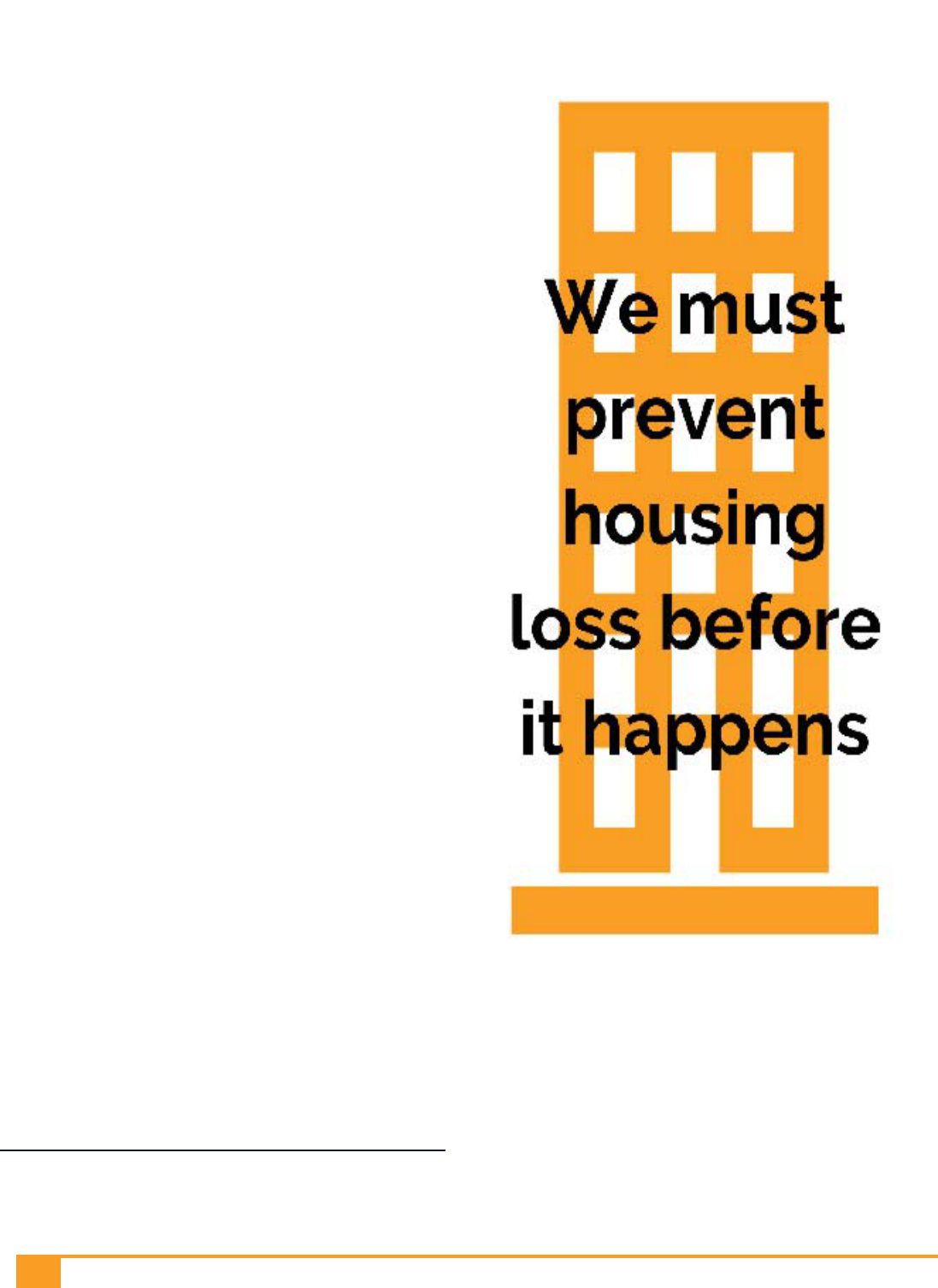
• Lack of access to food: A U.S. Conference of Mayors
Hunger and Homelessness survey found that in nearly
half of all surveyed cities, emergency kitchens and
food pantries had to reduce the amount of food given
to each individual and nearly a third of cities had to
limit the number of visits to local food pantries to try to
stretch their resources.
75
Despite these tactics, 47% of
cities had to turn hungry people away.
76
• Lack of access to places to store personal property:
Homeless people lack places to store their property.
The lack of any space to secure needed personal
belongings—such as clothing, medication, and legal
documents—is a daily stressor that leaves homeless
people in constant risk of losing their few possessions.
This property loss can result in serious and enduring
harm, yet few cities offer any form of free storage. For
example, only 11% of cities have policies requiring
property storage after an encampment has been
swept.
77
• Lack of access to toilets, shower, and laundry:
Homeless people lack regular access to toilets—a
signifi cant public health problem that has contributed
to the spread of disease, such as hepatitis A. Indeed,
a June 2018 Issue Brief from The Network for Public
Health law reported that the U.S. is in the midst of the
“worst multistate hepatitis A outbreak” in over two
decades due to a nationwide shortage of public
toilet, hand washing, shower, and laundry facilities
accessible to people experiencing homelessness.
• Lack of access to trash services: Homeless people
lack trash services, leading to the accumulation of
trash, food waste, and other debris in and around
places where homeless people live. Rather than
provide regular trash services, most cities wait until
the accumulation of trash has become a public health
problem to remove the debris—and often homeless
people’s property with it.
75 U.S. CONFERENCE OF MAYORS, A STATUS REPORT ON HOMELESSNESS
AND HUNGER IN AMERICA’S CITIES (2016), https://endhomelessness.
atavist.com/mayorsreport2016.
76 Id.
77 TENT CITY, USA, supra note 12, at 8
36
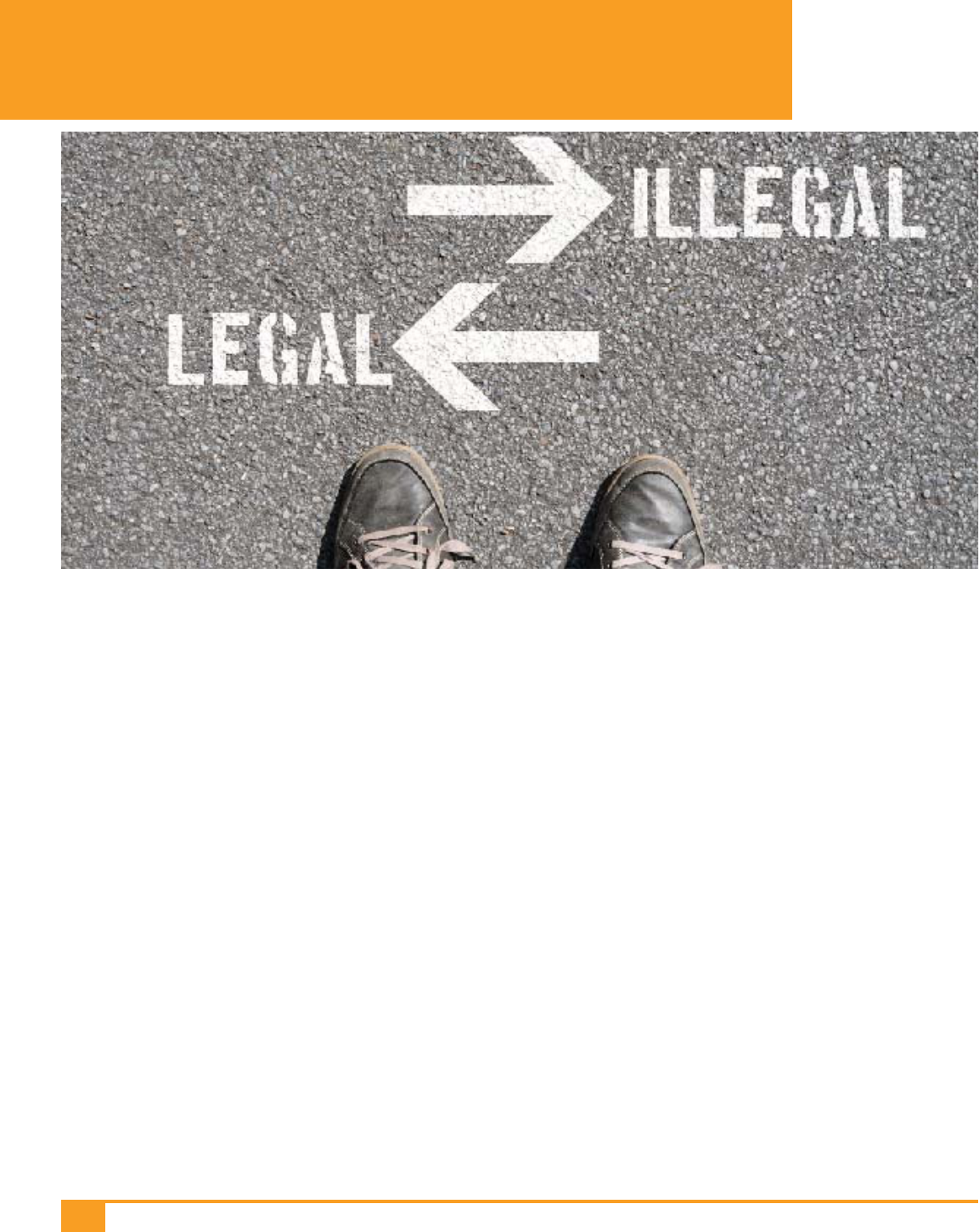
D
espite a lack of affordable housing and emergency
shelter space, and perhaps directly because of the
growth of highly visible unsheltered homelessness,
many cities have chosen to criminally or civilly punish
people living on the street for doing what any human being
must do to survive. Cities continue to threaten, arrest, and
ticket homeless people for living in public space.
With the assistance of the law fi rms Sullivan & Cromwell,
Dechert, and Kirkland & Ellis, the Law Center examined the
city codes of 187 cities across the country, which are listed
in our Prohibited Conduct Chart in Appendix A. Through
online research, we identifi ed laws that restrict or prohibit
multiple different categories of conduct disproportionately
performed by homeless people, including sleeping, sitting
or lying down, and living in vehicles within public space. It is
important to note that while the chart notes the existence of
these laws in different cities, actual enforcement may vary
widely.
37
While incarceration for criminal offenses is arguably the most
severe punishment faced by homeless people struggling for
survival in public, some of the policies discussed in this report
result in harsh, purely civil punishments such as expensive
fi nes. Sometimes enforcement of these policies results in the
destruction of outdoor encampments and/or displacement
of homeless people from public space, and in some cases
threats of enforcement are used to harass and cause
homeless people to “move on” from their current location.
We refer to these policies and practices collectively as the
“criminalization of homelessness.”
The Law Center has tracked the same 187 cities since
2006 to determine the relative increase or decrease of
criminalization laws over time. Our research reveals that
laws punishing the life-sustaining conduct of homeless
people have increased in every measured category since
that time, and in some cases dramatically so.
Since the release of our last report in 2016, rates of growth
in criminalization policies has been large despite mounting
THE GROWTH OF LAWS PUNISHING
HOMELESSNESS

court victories and expanding federal and grassroots
pressure to end criminalization policies and practices. This
growth in criminalization is correlated with a growth in
unsheltered homelessness nationwide.
Proponents of criminalization often base their support on the
premise that criminalization methods will effectively reduce
visible homelessness; however, they cannot point to any
studies which actually show that criminalization enforcement
has an impact on economic activity. In contrast, advocates
for housing can point to numerous studies showing the
cost-effectiveness of housing fi rst solutions in permanently
resolving homelessness.
The following is a review of laws prohibiting life-sustaining
conduct in public space, along with a description of how
these laws have grown over the past ten years.
CAMPING BANS
One common form of criminalization measure is to prohibit
“camping” in public. These laws are often written broadly to
encompass a wide range of living arrangements, and they
punish people for using any resource to protect themselves
from the outdoor elements, no matter the weather. Indeed,
these laws often prohibit merely sleeping in public space.
• Of the 187 cities surveyed for this report, our 2019
research reveals that:
• 72% of cities have at least one law restricting
camping in public.
• 37% of cities have one or more laws prohibiting
camping citywide.
• 57% of cities have one or more laws prohibiting
camping in particular public places.
• Both categories have signifi cantly increased over the
past 13 years:
• Since 2006, 33 new laws prohibiting camping
citywide were enacted, representing a 92%
increase. Since we released our last national report
on the criminalization of homelessness in 2016, nine
such laws were enacted, representing an increase
of 15%.
• Since 2006, 44 new laws prohibiting camping
in particular places were enacted, representing
an70% increase. Since 2016, 14 such laws were
enacted, representing an 15% increase.
Camping bans typically prohibit sheltering oneself in a
tent or other temporary structure. In Minneapolis, MN, it
is unlawful to use a tent or other temporary structure as a
shelter on, “any public street or on any public or private
premises or street in the city.”
78
Camping bans are also often written so broadly that they
make it unlawful to use any resource to protect oneself
from the outdoor elements. In Eugene, Oregon, unlawful
camping is defi ned as simply using a blanket.
79
Camping bans may also prohibit even just sleeping outside.
In Columbia, South Carolina, it is unlawful to sleep “in a
single place for any substantial prolonged period of time”
under the city’s citywide camping ban.
80
Even when laws are not written as sleeping bans, they may
be enforced as such. The Law Center and the ACLU of
Colorado issued a report in 2018, A Year Without Sleep, that
analyzed camping citations issued in Durango, Colorado
between August 2017 and July 2018.
81
Our research
revealed that Durango police consistently enforced its
no-camping ordinance against people sleeping outside
without any form of shelter.
During the twelve-month period, police issued only
three citations to individuals taking cover beneath a tarp
or in a tent. In contrast, 45 citations (46% of total) were
issued to people who were sleeping under a blanket or
in a sleeping bag, and 32 citations (33% of total) were
issued to people sleeping on the ground without any cover
whatsoever.
We also noted a clear pattern of police waking people up
who were peacefully sleeping in an open space or park
to tell them that “sleeping” outdoors is illegal in Durango
city
78 MINNEAPOLIS, MINN. CODE § 244.60(a) (2013).
79 E
UGENE, OR. CODE §§ 4.815(1)(b), 4.816 (2013).
80 C
OLUMBIA, S.C. CODE § 14-105(a)(1) (2007).
81 ACLU COLO. & NAT’L L. CTR. ON HOMELESSNESS & POVERTY, A YEAR
WITHOUT SLEEP: THE CRIMINALIZATION OF SLEEP IN DURANGO, COLORADO
2 (2018), https://acluco-wpengine.netdna-ssl.com/wp-content/
uploads/2018/12/A-YEAR-WITHOUT-SLEEP-web.pdf.
38

limits. Durango police would then either order the individual
to move on or ticket that person for “camping.”
82
Sometimes camping bans are so vague that it is up to
offi cers in their individual, often unguided discretion
to determine whether a violation occurred. This allows
for selective enforcement against people who appear
homeless or who have been complained about for
appearing homeless. In Tulsa, Oklahoma, it is unlawful to
“take up one’s abode” upon any public property within
the city.
83
Whether this provision will be enforced to forbid
someone from simply resting temporarily in public space is
left to an individual offi cer’s interpretation of the ordinance’s
vague restriction.
Camping bans can cover both public and private property,
leaving literally no place for homeless people to lawfully
rest. 9% of cities have laws that prohibit “camping” or
sleeping on all public and private property. In Glendale,
Arizona it is a misdemeanor to “camp upon any public
or private land.”
84
These camping bans interfere with the
freedom of faith-based organizations and other private
citizens to use their own property to provide homeless
people with a safe place to camp. These laws may even
subject consenting private property owners to fi nes and
other legal penalties for allowing homeless people to camp
on their property.
The problems associated with camping bans have led to
two presidential candidates condemning them, and even
lobbying against a then-proposed, but now enacted,
camping ban in Las Vegas, Nevada, which makes it
illegal to camp or sleep downtown and in residential
areas.
85
First, Democratic candidate and former HUD Secretary
Julian Castro attended a protest outside the Las Vegas City
Hall and said, “To some people it may seem that if you get
homeless folks out of sight, and perhaps out of mind, that
that’s an improvement. But that’s a lie,” he said.
82 Id.
83 TULSA, OKLA. CODE § 1800(A)(2) (2018).
84 G
LENDALE, ARIZ. CODE art. VIII § 25-90(a) (2018)
85 Brenda Richardson, Las Vegas Adopts a Controversial
Ban on Homeless Camping or Sleeping in Public Areas,
F
ORBES (Nov. 7, 2019, 8:19 AM), https://www.forbes.com/
sites/brendarichardson/2019/11/07/las-vegas-adopts-a-
controversial-ban-on-homeless-camping-or-sleeping-in-public-
areas/#74f12b004536.
He continued to explain why some people experiencing
homelessness in Las Vegas would not be able to seek
shelter in the city’s Courtyard Homeless Resource Center,
which is an outdoor facility serving as a temporary shelter.
86
“There are people that are afraid to stay in the courtyard.
There are people with other needs that compel them not to
go to that homeless courtyard,” Castro said. “You shouldn’t
treat them like criminals. You should continue to work with
them so they get their needs met.”
87
Later, Democratic Presidential candidate and Massachusetts
Senator Elizabeth Warren also denounced the proposed
Las Vegas camping ban, saying that it, “caters to the
interests of business groups rather than our families and our
communities.”
88
She went on to point out that,
“[t]hese measures disproportionately harm
communities of color and LGBTQ+ people,
who as a result become further entangled
in the justice system and face more barriers
to finding supportive housing…We must
focus on investing in affordable housing
and supporting programs that will connect
people experiencing homelessness with the
tools and services they need to get back on
their feet.”
89
Cities should not rely upon large, congregate shelters to
justify camping ban enforcement. While these shelters may
be helpful to some, particularly if there is a low barrier to entry,
they are not always adequate or even accessible shelter
options for people experiencing homelessness.
90
Moreover, some emergency shelters operate essentially as
jails, employing harsh punishments against shelter residents
for minor rule violations. Pinellas County Safe Harbor, an
emergency shelter operating in an old jail building next
86 Briana Erickson, Homeless Join Advocates Protest Proposed
Las Vegas Camping Ban, L
AS VEGAS REVIEW-JOURNAL (Oct. 2, 2019,
9:05 AM), https://www.reviewjournal.com/news/politics-
and-government/las-vegas/homeless-join-advocates-protest-
proposed-las-vegas-camping-ban-1861720/.
87 Id.
88 Briana Erickson, Elizabeth Warren Slams Las Vegas Homeless
Ordinance, L
AS VEGAS REVIEW-JOURNAL (Oct. 23, 2019, 5:25 PM).
https://www.reviewjournal.com/news/politics-and-government/
elizabeth-warren-slams-las-vegas-homeless-ordinance-1876986/.
89 Id.
90 See e.g. Bloom v. City of San Diego, 2018 WL 9539239
(S.D. Cal. Aug. 21, 2018).
39

to the Pinellas County Jail, is one example.
91
Safe Harbor
provides spaces for 470 to sleep, but some of those spaces
are located in an outdoor, asphalt courtyard.
92
The outdoor
location, referred to as “Pod 6” is where people who have
broken minor rules, such as using a cell phone are sent to
sleep for days at a time.
93
According to residents, people are required to sleep at
that location even during inclement weather. “It fl oods, that
whole area’s fl ooded and you still got to sleep out there,”
said one resident in an interview with HuffPost.
94
EVICTIONS OF ENCAMPMENTS (“SWEEPS”)
Cities have relied on camping bans to authorize evictions
of homeless encampments of all sizes, often with little or no
advance notice. These evictions, or homeless “sweeps”, not
only displace homeless people from public space, but they
often result in the loss or destruction of homeless people’s
few possessions.
The loss of these items can be devastating, as homeless
people affected by sweeps often lose survival gear,
identifi cation and/or other important legal documents,
medications, and irreplaceable mementos. The Boston
Police Department, for example, was criticized in August,
2019 for destroying the functional wheelchairs of homeless
residents as part of “Operation Clean Sweep.”
95
Bystanders
witnessed offi cers seizing three wheelchairs and crushing
them in the back of a garbage truck before ordering
their homeless owners away from the Boston Medical
Center.
96
These losses can cost a person their last remaining
possessions, their dignity, or even their lives. Avoiding those
harms can become a central feature of a homeless person’s
91 Arthur Delaney, How a Traveling Consultant Helps America
Hide the Homeless, HUFFPOST (Mar. 9, 2015, 9:12 PM, last
updated Dec. 6, 2017), https://www.huffpost.com/entry/robert-
marbut_n_6738948. Pinellas County Safe Harbor is premised
on a model conceived by Robert Marbut, a consultant to cities
on homelessness, who rejects the evidence-based Housing First
philosophy and who instead encourages punitive approaches to
homelessness.
92 Id.
93 Id.
94 Id.
95 Boston Police Destroy Wheelchairs of Homeless Residents,
DEMOCRACY NOW! (Aug. 8, 2019), https://www.democracynow.
org/2019/8/8/headlines/boston_police_destroy_wheelchairs_
of_homeless_residents.
96 Id.
life, even motivating her to avoid needed medical treatment
and social service appointments to avoid being separated
from her property.
97
Moreover, these sweeps are often conducted by
governments with no plan to house or adequately shelter
displaced encampment residents. Instead, homeless people
are merely dispersed to different public places, leading to
the inevitable reappearance of outdoor encampments.
Displacement also disrupts homeless people’s access to
social and health services, leading to worsened health
and lapsed benefi ts.
98
Sweeps can also cause the loss of
employment or even access to available housing – the very
things that people need to avoid “camping” outside in the
fi rst place.
99
In addition to being harmful and ineffective, sweeps are
expensive. Honolulu, Hawaii, for example, spends $15,000
per week sweeping people living in homeless encampments,
many of whom simply move around the corner during the
sweep and then return a day later.
10 0
Los Angeles, with the
largest unsheltered homeless population in the country,
spends $31 million on sweeps annually.
101
In recognition of these harms, the U.S. Interagency
Council on Homelessness published guidance in 2015
for cities entitled Ending Homelessness for People Living
in Encampments. The guidance emphasized that “forced
dispersal of people from encampment settings is not an
appropriate solution or strategy, accomplishes nothing
toward the goal of linking people to permanent housing
opportunities, and can make it more diffi cult to provide such
lasting solutions to people who have been sleeping and
living in the encampment.”
102
97 CHRIS HERRING, AMERICAN SOCIOLOGICAL REVIEW,
COMPLAINT-ORIENTED POLICING: REGULATING HOMELESSNESS IN
PUBLIC SPACE 23 (2019), https://static1.squarespace.com/
static/5b391e9cda02bc79baffebb9/t/5d73e7609b56e748f43
2e358/1567876975179/complaint-oriented+policing_ASR.pdf.
98 Id.
99 Id.
100 Allyson Blair, Nearly 95 Percent of Personal Items Taken
During Honolulu Homeless Sweeps End Up Destroyed, HAW. NEWS
N
OW (Sept. 29, 2017, 7:40 PM), https://www.hawaiinewsnow.
com/story/36489341/nearly-95-percent-of-items-taken-during-
honolulu-homeless-sweeps-end-up-destroyed/.
101 Gale Holland, L.A. Takes More Heat for Spending Millions
of Dollars Cleaning Up Homeless Camps, L.A. T
IMES (Apr. 5, 2019,
7:00 AM), https://www.latimes.com/local/lanow/la-me-ln-
homeless-camp-protest-20190405-story.html.
102 U.S. INTERAGENCY COUNCIL ON HOMELESSNESS, ENDING
HOMELESSNESS FOR PEOPLE LIVING IN ENCAMPMENTS 2 (2015), https://
www.usich.gov/resources/uploads/asset_library/Ending_
Homelessness_for_People_Living_in_Encampments_Aug2015.
pdf.
40
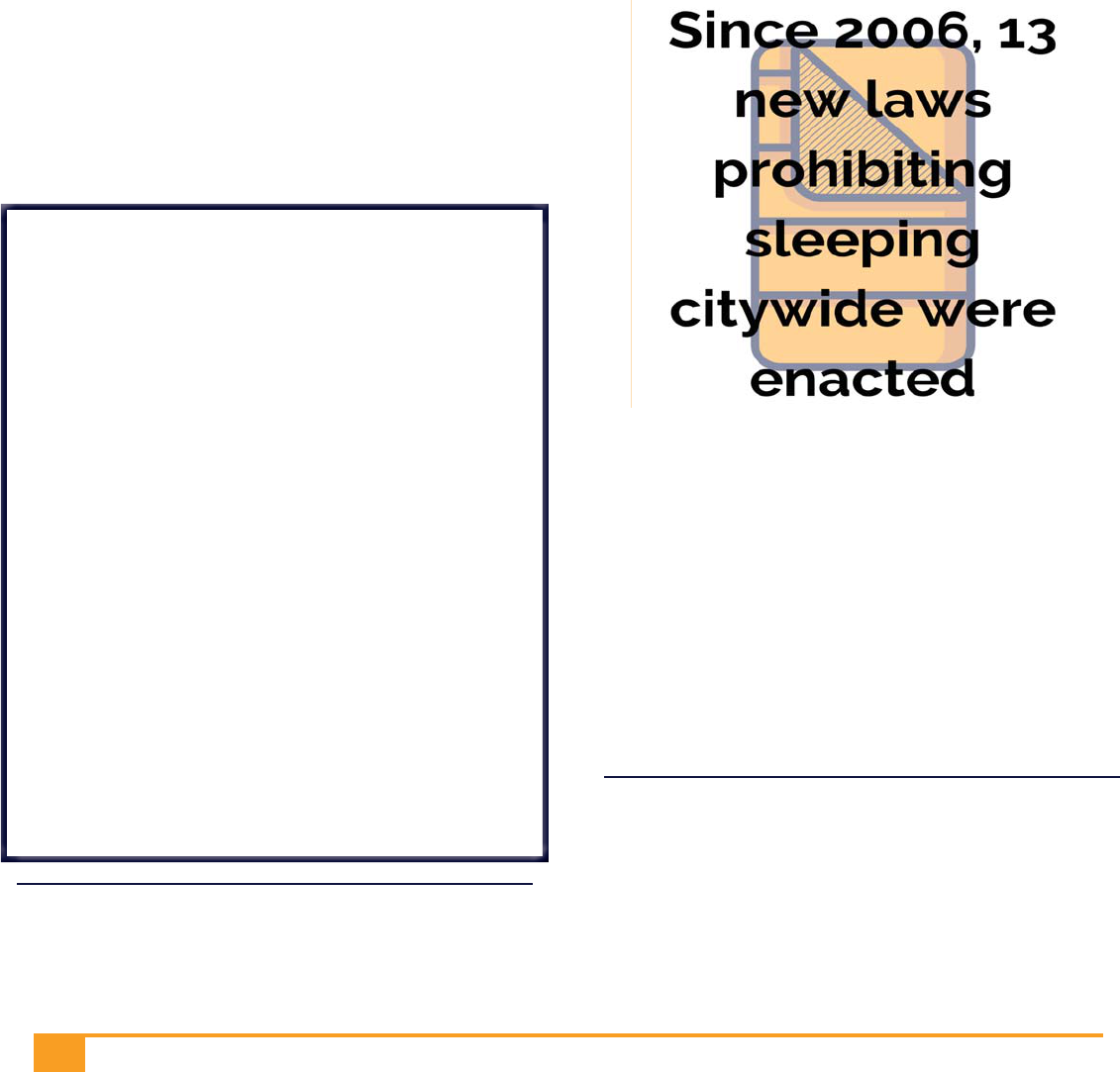
“Most individuals residing on the streets
considered property destruction the greatest
threat to their survival; this always involved
either a police presence, the threat of police
being called, or leveraging anti-homeless
ordinances to provide legal cover for property
confi scation. This fear pervaded daily routines.
In the camps I resided in, people would rotate
leaving the camp to work, attend
appointments, gather food or supplies, or go
to the toilet, leaving their belongings under the
watch of fellow campers. However, when a
camp clearance occurred, we were limited in
the amount of property we could salvage, as
sanitation workers and police would prevent
us from packing more than we could carry in a
single trip, and they sometimes barred us from
taking items that were not our own.”
– Chris Herring
In 2017, we released our report on governmental
approaches to encampments, Tent City, USA. We
reviewed our data set of 187 cities for policies governing
the clearing or authorizing of encampments. We found that
only a few municipalities follow federal guidance to allow
encampments to be cleared only if specifi ed alternative
shelter or housing is available for those who are to be
removed from the encampments.
Indeed, only 11% have ordinances or formal policies
requiring notice prior to clearing encampments, with some
requiring as little as 24 hours’ notice before encampments
are evicted.
10 3
Only 11% of cities require storage of
displaced people’s property, typically for between 30 and
90 days.
10 4
Even worse, only 3% have some requirement
that alternative housing or shelter be offered when a sweep
of an encampment is conducted
10 5
—and even this provision
is little guarantee that residents of homeless encampments
will actually receive it.
103 An additional 26 cities provided some notice informally,
including two providing more than a month. TENT CITY, USA, supra
note 12, at 8.
104 Id. at 8–9.
105 Id. at 8.
Indianapolis, Indiana, for example, enacted one of the
nation’s fi rst encampment policies requiring an offer of
alternative transitional or permanent housing before
evicting people from certain homeless encampments.
Unfortunately, the city has routinely used the emergency
exception to the housing offer requirement, sometimes on
dubious grounds.
10 6
SLEEPING BANS
Human beings must sleep in order to survive. It is a biological
fact. The effects of sleep deprivation are awful and even
recognized as a form of torture.
10 7
Yet, many cities outlaw
sleep when it is conducted in public space.
• Of the 187 cities surveyed for this report, our 2019
research reveals that:
• 51% of cities have at least one law prohibiting
sleeping in public.
• 21% of cities have one or more laws prohibiting
sleeping in public citywide.
• 39% of cities have one or more laws prohibiting
sleeping in particular public places.
106 Maureen C. Gilmer, City Ousts Homeless From Camps Under
Bridges, Citing ‘Risk to Public Safety’, INDYSTAR (Aug. 10, 2017,
5:41 PM), https://www.indystar.com/story/news/2017/08/10/
city-ousts-homeless-camps-under-downtown-bridges-citing-risk-
public-safety/555889001/.
107 Jacqueline Stroka, There’s a Reason Why Sleep Deprivation
is Classified as a Form of Torture, HUFFPOST (Sept. 24, 2015, last
updated Dec. 7, 2017), https://www.huffpost.com/entry/theres-
a-reason-why-sleep-deprivation-is-classified-as-a-form-of-
torture_b_8188090.
41

• Both categories have signifi cantly increased over the
past 13 years:
• Since 2006, 13 new laws prohibiting sleeping
citywide were enacted, representing a 50%
increase. Since we released our last national report
on the criminalization of homelessness in 2016, six
such laws were enacted, representing an increase
of 18%.
• Since 2006, 16 new laws prohibiting sleeping
in particular places were enacted, representing
a 29% increase. Since 2016, 22 such laws were
enacted, representing a 44% increase.
Laws banning sleeping in public create the same problems
as camping bans, and they may be written to prohibit
that biological activity outright at any time of day. In
Atlanta, Georgia, it is unlawful to sleep—or even to make
preparations to sleep—on any public street, sidewalk, or
right of way.
10 8
Other sleeping bans limit when sleep may occur. In Louisville,
Kentucky, the city’s disorderly conduct law includes a
prohibition against sleeping in public “during the hours of
darkness.”
10 9
While this law does not technically prohibit
a homeless person from sleeping at some point each day,
it does force human beings, who are diurnal by nature,
to sleep during the day or not sleep at all—a physically
impossible task.
108 ATLANTA, GA. CODE § 106-12 (2017)
109 L
OUISVILLE-JEFFERSON CTY., KY. CODE § 132-03(A)(18) (2018)
BANS ON SITTING AND LYING DOWN
Bans on sitting or lying down in public, sometimes called
“sit/ lie” laws, are another common form of criminalization
ordinances. Although every human being must occasionally
rest, laws restricting sitting and lying down punish homeless
people for resting in various public places.
• Of the 187 cities surveyed for this report, our 2019
research reveals that:
• 55% of cities have one or more laws prohibiting
sitting and/or lying down in public.
• Such laws have signifi cantly increased over the past
13 years:
• Since 2006, 45 new laws prohibiting sitting and/or
lying down in public were enacted, representing a
78% increase. Since we released our last national
report on the criminalization of homelessness in
2016, 15 such laws were enacted, representing a
17% increase.
Sometimes these laws are written to explicitly restrict the
acts of sitting or lying down. About 7% of our surveyed
cities prohibit sitting or lying down anywhere in public
space.
In Honolulu, Hawaii it is unlawful to “sit or lie” on public
sidewalks in multiple locations throughout the city during
the hours of 5am to 11pm.
110
A person who lacks regular
access to indoor space cannot possibly avoid violating
such a law, since it is impossible to sustain perpetual
movement.
Bans on sitting and lying down are also enforced under
laws prohibiting “obstructions” of public space. In Richmond,
Virginia, it is unlawful to “sit or lie upon” any public place
so as to obstruct the “normal fl ow” of pedestrian traffi c.
111
While these laws can serve legitimate purposes, they are
vague enough to allow for selective enforcement and
authorize citations and arrests of homeless people who
are occupying, but not actually obstructing, pedestrian
traffi c.
110 H ONOLULU, HI CODE § 29-15A.
111 R
ICHMOND, VA. CODE § 19-110 (2004).
42

Proponents of sit/lie laws argue that such laws are
necessary to protect or improve economic activity in parts
of the city where visibly homeless people are present.
However, a study done by University of California Berkeley
Law’s Policy Advocacy Clinic found that a sit/lie ban had no
effect on economic activity, but instead cost public money
in implementation and enforcement of the law.
11 2
RESTRICTIONS ON LIVING IN VEHICLES
Sleeping in one’s own vehicle is often a last resort for
people who would otherwise be forced to sleep on the
streets. A dramatically growing number of cities across the
nation, however, have chosen to impose criminal or civil
punishments on people who live in their own vehicles,
despite their lack of housing options.
• Of the 187 cities surveyed for this report, our 2019
research reveals that:
• 50% of cities have one or more laws restricting
living in vehicles.
• Such laws have signifi cantly increased over the past
13 years:
• Since 2006, 64 new laws restricting living in
vehicles were enacted, representing a 213%
increase. Since we released our last national report
on the criminalization of homelessness in 2016, 22
such laws were enacted, representing an increase
of 31%.
112 See Joseph Cooter, et al., Will Berkeley’s “Measures” Increase
Economic Activity and Improve Services to Homeless People?,
BERKELEY L. POLICY ADVOCACY CLINIC 2 (2012), available at https://
www.researchgate.net/publication/272300620_Does_Sit-
Lie_Work_Will_Berkeley’s_’Measure_S’_Increase_Economic_
Activity_and_Improve_Services_to_Homeless_People.
The cost of housing has forced a growing number of
individuals and families into vehicles as a last resort
before living on the streets. In Los Angeles, one third of
the estimated 39,000 people who are unsheltered within
the County’s Continuum of Care live in vehicles—nearly
double the amount of those who live in tents and other
encampments. 50% of all children who are unhoused in Los
Angeles County live in vehicles.
113
Similarly, people who
live in vehicles make up 53% of unsheltered people in King
County, Washington.
114
Vehicles offer privacy, security, and a level of stability not
available in temporary emergency shelters, tents, or other
makeshift shelters. Yet individuals living in their vehicles can
be at constant risk of losing their vehicle-homes because of
laws restricting their use as shelter. 51% of laws prohibiting
living in vehicles explicitly prohibit using a vehicle as shelter.
In San Antonio, Texas, it is unlawful to use a vehicle “for
living accommodation” in “any public place.”
115
Other laws do not explicitly ban living in vehicles, but instead
make doing so practically impossible by preventing people
who live in vehicles from lawfully parking them anywhere
within a city. 35% of laws restricting living in vehicles are
parking regulations that make it diffi cult or impossible to
lawfully reside in one’s vehicle. In San Diego, California, it is
unlawful to park RVs or other oversized vehicles, commonly
used for shelter by people who cannot afford housing,
anywhere on public property between the hours of 2am
and 6am.
116
Other laws limit parking in one place beyond a specifi ed
time period. In Seattle, Washington, it is unlawful to leave a
vehicle parked in a single location for more than 72 hours,
and violation of that law carries a hefty fi ne and the risk of
losing one’s vehicle to impoundment. In addition to having
nowhere to sustainably move to, compliance with this
law can be especially diffi cult for extremely poor people
who are more likely to own older, less functional vehicles
and who have fewer resources to repair them when they
become inoperable.
113 W. C TR. ON LAW & POVERTY, TOWED INTO DEBT: HOW TOWING
P
RACTICES IN CALIFORNIA PUNISH POOR PEOPLE 19 (2019), https://wclp.
org/wp-content/uploads/2019/03/TowedIntoDebt.Report.pdf.
114 A
LL HOME, COUNT US IN 77 (2018), http://allhomekc.
org/wp-content/uploads/2018/05/FINALDRAFT-
COUNTUSIN2018REPORT-5.25.18.pdf.
115 S
AN ANTONIO, TEX. CODE § 21-28 (2005).
116 S
AN DIEGO, CAL. CODE § 86.0139(a) (2016).
43

Enforcement of laws restricting living in vehicles can
result in arrest and incarceration. In Las Vegas, Nevada,
it is a misdemeanor punishable by up to six months in
jail to “take up temporary or permanent residence” in a
vehicle.
117
Enforcement may also include expensive tickets and
related fi nes and fees, which can increase in cost after they
remain unpaid for a period of time. Unpaid fi nes can result
in a number of negative consequences, including driver’s
license suspension, inability to lawfully register the vehicle,
or even vehicle tow and impoundment.
Everyone loses when vehicle shelters are towed. The cost of
retrieving a vehicle after a tow is unaffordable to many, and
this can result in the permanent loss of the vehicle and any
personal property it contained.
118
This loss makes it likely
that people will end up living with less adequate shelter
on the streets. Indeed, a recent study by the Economic
Roundtable in Los Angeles found that vehicle tows result in a
likelihood that people will end up living in a tent after a year
of living in their vehicle.
119
Moreover, the loss of a vehicle for
transportation can interfere with employment and access to
education and medical care.
12 0
Taxpayers are also harmed when vehicle shelters are
towed. An analysis of thousands of vehicle tows and lien
sales in multiple California cities suggests that this practice
costs more than cities recoup in tickets or revenue fl owing
from sales of impounded vehicles.
121
117 L AS VEGAS, NEV. CODE § 10.82.020 (1986
118 The average price an individual must pay after a debt-
collection tow is over $1,100. W. CTR. ON LAW & POVERTY, supra note
113 , a t 4 .
119 W. CENTER ON L. & POVERTY, TOWED INTO DEBT: HOW TOWING
PRACTICES IN CALIFORNIA PUNISH POOR PEOPLE (2019), https://wclp.
org/wp-content/uploads/2019/03/TowedIntoDebt.Report.pdf.
120 Id. Loss of a vehicle can also severely limit employment
options, potentially prolonging or even cementing someone’s
homelessness. Today, less than half of all Americans live within a
quarter mile of any sort of public transit stop. As a result, vehicles are
critical to transportation needed to get to and from employment, or
to use as a form of employment through ride share, delivery, or other
opportunities for earning an income. Indeed, one study indicated
that car ownership plays a bigger role in getting a job than having
a high school diploma. Id. at 16 (internal citation omitted).
121 Id. at 12.
BEGGING BANS
In the absence of employment opportunities or other
sources of income, begging may be a homeless person’s
best option for obtaining the money that they need to
purchase food, public transportation fare, medication, or
other necessities.
• Of the 187 cities surveyed for this report, our 2019
research reveals that:
• 83% of cities have at least one law restricting
begging in public.
• 38% of cities have one or more laws prohibiting
begging citywide.
• 65% of cities have one or more laws prohibiting
begging in particular public places, making it the
most common type of criminalization law.
• Both categories have signifi cantly increased over the
past 13 years:
• Since 2006, 36 new laws prohibiting begging
citywide were enacted, representing a 103%
increase. Since we released our last national report
on the criminalization of homelessness in 2016, 21
such laws were enacted, representing an increase
of 42%.
• Since 2006, 14 new laws prohibiting begging in
particular places were enacted, representing a
13% increase. Since 2016, eight such laws were
enacted, representing a 7% increase.
Some panhandling laws prohibit begging outright,
while others place strict limitations on how the action is
performed. In Baltimore, Maryland, it is unlawful to request
“an immediate donation of money or other thing of value
from another or others in person” within ten feet of ATM
machines, at public transportation stops, and in other
locations.
12 2
Laws prohibiting “aggressive panhandling” are another
common version of panhandling ban. Though these laws
are purportedly aimed at curbing threatening or intimidating
122 BALT. MD. POLICE ORDINANCe § 47 (1976).
44

behavior that may accompany panhandling, some laws
are designed to ban even innocuous and inherently
harmless behavior. In Lafayette, Louisiana, it is considered
unlawful “aggressive” begging if a person asks for “money
or anything of value” within “an arm’s length” of passersby
without their consent.
123
Even where cities have chosen to limit their prohibition of
panhandling to particular places, the impact can be as
great as that of a city-wide ban. This is because commercial
and tourist districts, the areas where panhandling is most
likely to be prohibited, are often the only places where
homeless people have regular access to passersby and
potential donors. Some laws only restrict begging within
25 feet of parking meters, ATMs, or bus stops, but these
“buffer zones” collectively add up to effectively banning
the practice in the entire city.
123 LAFAYETTE, LA. CODE § 62-71 (2007).
BANS ON LOITERING, LOAFING, AND
V
AGRANCY
Laws prohibiting loitering, loafi ng, or vagrancy are common
throughout the country. Because the defi nitions of these
actions can be very broad, these ordinances grant police
a lot of discretion to exclude visibly poor and homeless
people from public places.
124
• Of the 187 cities surveyed for this report, our 2019
research reveals that:
• 35% of cities have one or more laws
prohibiting loitering, loafi ng, and/or vagrancy
citywide.
• 60% of cities have one or more laws prohibiting
loitering, loafi ng, and/or vagrancy in particular
public places.
• Both categories have signifi cantly increased over the
past thirteen years:
• Since 2006, 33 new laws prohibiting loitering,
loafi ng, and/or vagrancy citywide were enacted,
representing a 103% increase. Since we released
our last national report on the criminalization of
homelessness in 2016, six such laws were enacted,
representing an increase of 10%.
• Since 2006, 25 new laws prohibiting loitering,
loafi ng, and/or vagrancy in particular places
were enacted, representing a 28% increase. Since
2016, 13 such laws were enacted, representing an
13% increase.
124 See JAVIER ORTIZ & MATTHEW DICK, THE WRONG SIDE OF HISTORY:
A COMPARISON OF MODERN AND HISTORICAL CRIMINALIZATION LAWS
(Sara Rankin ed., 2015), https://papers.ssrn.com/sol3/papers.
cfm?abstract_id=2602533.
45
Sue Wells, a currently
homeless member of the
Homeless Union of
Greensboro,
North Carolina, explained,
“We don’t panhandle
because we want to. We
do it because all of us need
to put food in our stomachs.
Most of the time, people
are just trying to pay rent,
or pay a bill or get bus
fare.”

Loitering laws are often written to capture a wide range of
innocent activities under vague descriptions of prohibited
conduct. In Toledo, OH, loitering is defi ned to mean,
“remaining idle in essentially one location and includes the
colloquial expression ‘hanging around.’”
125
Under this law, it is illegal to “loiter” in a way that creates
an, “unreasonable annoyance to the comfort and repose
of any person.” This vague language gives little guide
to law enforcement about when a person is innocently
present in public space versus when they are violating the
law. Without adequate guidance, there is risk of selective
enforcement against people who are disfavored simply
because they appear to be poor and homeless.
RESTRICTIONS ON FOOD SHARING
Cities across the country have restricted sharing free food
in public. People experiencing homelessness often lack
reliable access to food, in part due to a lack of any place to
refrigerate or store food supplies. Despite the fact that food
access is extremely limited for homeless people, a growing
number of cities have restricted free food sharing.
• Of the 187 cities surveyed for this report, our 2019
research reveals that:
• 9% of cities have one or more laws restricting food
sharing.
While the Law Center has not collected data on this
category for as long as the categories of laws listed above,
our research shows a 42% increase since the release of
our last report on the criminalization of homelessness in
2016.
Many cities have chosen to restrict homeless people’s
access to food under the fl awed premise that providing
homeless people with free food encourages them to remain
homeless. But this theory is not founded on evidence or on
common sense. Restricting access to free, safe food will do
nothing to end homelessness, which is rooted in a lack of
access to affordable housing; instead restrictions on sharing
drive hungry people to search for food in unsanitary places
or causes them to spend their meager income on food
rather than saving it for housing.
125 Toledo Municipal Code - CHAPTER 509 - Disorderly Conduct
and Peace Disturbance - Sec. 509.08.-Loitering
OTHER COMMON CRIMINALIZATION LAWS
The Law Center has not consistently tracked laws prohibiting
the following conduct since 2006, but we surveyed our set
of 187 cities for such laws in 2019.
Storing personal property in public
Our research reveals that 55% of cities restrict storing
property in public space. In Sacramento, California, it
is unlawful to “store personal property, including camp
paraphernalia” on any public property.
12 6
“Personal
property” under this law is undefi ned, allowing for broad
offi cer discretion in enforcement, particularly since “store”
is defi ned to include merely placing an item on public
property, e.g., setting down a purse or backpack.
These laws can have an extremely harmful impact on people
experiencing homelessness who lack access to a housing
or affordable storage options. Without adequate space to
store belongings, people experiencing homelessness are
at risk of losing property needed for survival, such as warm
clothing, camping gear, or even medications and medical
equipment. Lost property may also include irreplaceable
mementos, like family pictures or wedding rings. It is also
common for people to lose critical legal documents, like
birth certifi cates, passports and/or photo identifi cation, and
social security cards. The loss of these documents leaves
people unable to prove identity, citizenship or legal status,
and/or residency, and it can prevent them from accessing
public benefi ts, housing, and employment. Moreover, it can
be very diffi cult to replace identifi cation documents once
they are lost — costs may be prohibitive, and often one form
of ID is required in order to replace another. If a person
has lost everything due to lack of storage options, it can be
impossible to obtain a new ID.
126 SACRAMENTO, CAL. CODE § 12.52.040
46

Urination/Defecation
83% of cities prohibit public urination and/or defecation. In
Glendale, Arizona, it is a class I misdemeanor punishable
by jail to do so.
12 7
In many cities, public restrooms are not available overnight
or not available at all. In other cities, the few public toilets
that are available are not enough to meet the demand. In
Skid Row in Los Angeles, for example, there are only fi ve
portable toilets—which are frequently locked or out of
order—to serve approximately 15,000 unhoused people
living in the area;
12 8
this is 382 toilets short of meeting the
United Nations minimum for refugee camps.
12 9
Lack of access to toilets can be especially problematic for
people with medical conditions that cause incontinence.
Some studies also suggest that people are likelier to skip
doses of necessary medication if the side effects include
frequent urges to use the restroom.
13 0
Women are disparately impacted by lack of access to
toilets. Women’s toilet facilities are subject to longer lines
than toilets available to males, as women take about 50%
longer to use the bathroom than men do.
131
Some of this
increased length is due to factors like the accompaniment
of children on trips to the bathroom, which may include
changing diapers or breast feeding. Women who are
menstruating need access to toilets, as do pregnant women
who are subject to increased urges to urinate. Moreover,
women forced to expose themselves to urinate or defecate
may have an increased risk of sexual assault.
Trans women, who are nearly four times as likely to
experience extreme poverty than cisgender women, have
even fewer options for using toilets. Indeed, recent years
has seen the enactment of laws that, “enforce restroom
segregation by gender assigned at birth.”
13 2
A collateral consequence of the lack of adequate public
restrooms is that in some cases, homeless people forced to
urinate or defecate in public are also charged with public
127 GLENDALE, ARIZ. CODE § 26-72 (1989).
128 Natalie Shure, The Politics of Going to the Bathroom, NATION
(May 23, 2019), https://www.thenation.com/article/toilet-
urination-disability-access/.
129 Id.
130 Id.
131 Id.
132 Id.
exposure or public indecency. These may be charged as
sex crimes which can come with sex offender registration
requirements as well as bans from living in broad areas
of many cities.
13 3
Once forced into this system, fi nding
available housing may be nearly impossible. Again, this
is counter-productive, because it only prolongs these
individuals’ homelessness and ensures they will urinate and
defecate in public again.
Without any other options, people experiencing
homelessness are forced to use public spaces to defecate
and urinate. While cities have a legitimate interest in
preventing the accumulation of urine and feces in public
space, such interests cannot be met by criminalizing
unavoidable bodily functions. If people do not have regular
access to toilets, they will expel their human waste in areas
other than toilets—they have no choice.
Rummaging/Scavenging/Dumpster
Diving
76% of cities prohibit rummaging, scavenging, or dumpster
diving.
In Boston, Massachusetts, for example, a person cannot
rummage through any rubbish or refuse that is on public
property. If someone violates this law, they are subject to a
hefty fi ne that perpetuates a vicious cycle of poverty and
homelessness.
While cities do have a legitimate interest in prohibiting
these activities for public health reasons, they must also
recognize that when people experiencing homelessness
resort to these activities, it is an act of desperation. Many
people experiencing homelessness rummage, scavenge,
or dumpster dive for basic necessities such as food, clothes,
and shelter materials.
133 BANISHED, https://www.themarshallproject.
org/2018/10/03/banished (last visited Nov. 25, 2019).
47
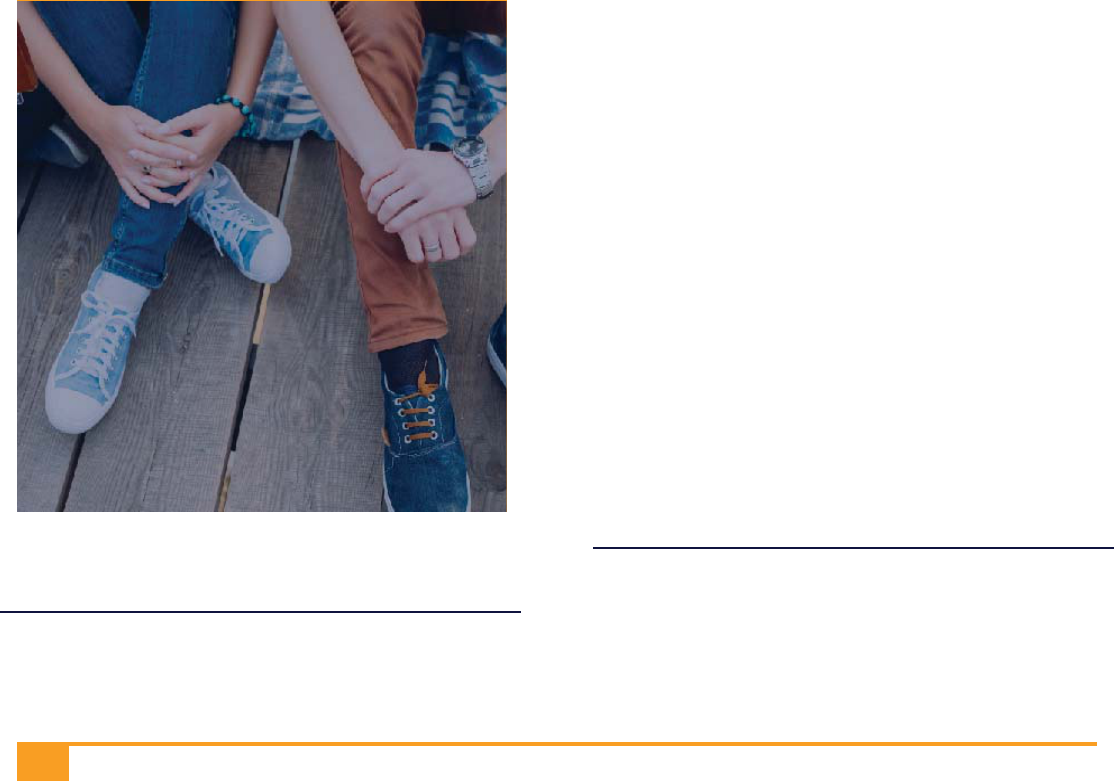
LAWS CRIMINALIZING HOMELESS YOUTH
An estimated 4.2 million youth and young adults up to age
24 experience homelessness each year in the United States,
usually due to problems within their families. Approximately
half of youth experience homelessness for the fi rst time
because they were asked to leave home by a parent or
caregiver, sometimes due to the youth’s sexual orientation.
Indeed, some 40% of homeless youth identify as LGBTQ+,
and many cite their families’ disapproval as a cause of their
homelessness. Physical abuse also contributes to youth
homelessness, with approximately a quarter of youth citing
family violence as the reason they left home.
13 4
Most do not
have the option to return home.
Homeless youth and children are subject to liability under
criminalization ordinances applicable to all age groups
as well as ordinances that apply uniquely to them, such
as status offenses. Schools also play a role in entangling
homeless children and youth with the juvenile and criminal
justice systems through harsh, zero-tolerance school
discipline policies.
134 U.S. INTERAGENCY COUNCIL ON HOMELESSNESS, HOMELESSNESS IN
AMERICA: FOCUS ON YOUTH 10–11 (2018), https://www.usich.gov/
resources/uploads/asset_library/Homelessness_in_America_
Youth.pdf [hereinafter FOCUS ON YOUTH].
Status Offenses
Status offenses are acts that are criminal only because
the perpetrator is a minor—running away from home,
skipping school, staying out past a city or county curfew,
and consumption of alcohol or tobacco. The Law Center
has surveyed state level (rather than municipal level) status
offense laws affecting unaccompanied homeless youth; the
numbers below refl ect these state policies. It is important
to note that many municipalities may also criminalize
these behaviors, but these are not captured in this data
set.
The second a youth walks out the door without the intent
to return, they may be committing an offense. It is a status
offense in 11 states for youths to run away from home—even
those who may be fl eeing homes where they have been
physically, sexually, or emotionally abused.
13 5
Likewise,
those trying to help these youth may be committing a crime
simply by letting them in their doors: 20 states criminalize
harboring a runaway youth or concealing a minor, making
it diffi cult for shelters, friends, and even relatives to take in an
unaccompanied homeless youth.
13 6
Curfew Laws
Curfew laws prohibit anyone under the age of 18 from
being in public spaces past a certain time at night. Many
states explicitly authorize curfews at the state level, and
many more cities and localities have them on their books.
Compliance with this law may be impossible for children
and youth experiencing homelessness with no ability to go
inside at night, particularly in communities with no shelters
where youth can go on their own (which is the case in many
communities).
135 NAT’L L. CTR. ON HOMELESSNESS & POVERTY, ALONE WITHOUT A
H
OME: A NATIONAL REVIEW OF STATE LAWS AFFECTING UNACCOMPANIED
YOUTH 11 (2019), http://nlchp.org/wp-content/uploads/2019/04/
AWAH-report.pdf.
136 TRUE COLORS FUND & NAT’L L. CTR. ON HOMELESSNESS & POVERTY,
S
TATE INDEX ON YOUTH HOMELESSNESS 3 (2018), https://drive.google.
com/file/d/14hCgF6gwxF7At2kanWLulciE1NPN-Z5C/view.
48

49
Truancy Laws
Truancy laws prohibit school-aged children from being out
of school. In seven states, truancy is a status offense that
can lead to fi nes or even jail time for parents or youth.
13 7
For homeless children, regular access to school may be
diffi cult, and the reason for being out of school may be
partly or completely attributable to their homelessness.
Under the federal McKinney-Vento Act, schools are
required to actively identify homeless students and ensure
their enrollment and participation. Some districts, however,
fail to allow homeless students to enroll or fail to provide
adequate transportation, making it impossible for students
to comply with truancy laws.
Laws criminalizing homeless youth restrict their rights, limit
their opportunities for education, housing, and employment,
and often put further barriers between them and a safe
and secure lifestyle. Moreover, these laws, policies, and
practices often entangle otherwise law-abiding youth
with the juvenile and criminal justice systems. Rather than
punishing them for behavior they often cannot avoid, states
and localities should fi nd ways to divert homeless youth to
social supports and services, minimize civil or criminal court
involvement, and foster positive school climates to keep
homeless youth safe at school.
137 Id.

50
E
nforcement of criminalization laws takes many forms.
Many policies prescribe criminal punishments that may
result in arrest, incarceration—sometimes for as long
as six months in jail per violation—probation, and court-
imposed costs and fees. Sometimes enforcement results in
purely civil penalties, at least initially, such as unaffordable
tickets and other fi nes. These civil penalties may result in
collateral consequences, such as damage to credit, driver’s
license suspensions, and/or towing and impoundment of
one’s vehicles. They also often open the door to criminal
punishments, such as for failure to pay fi nes, which can be
the basis for criminal liability on its own, and/or for failure
to appear in court to explain why the fi nes are unpaid,
which can result in warrants for arrest.
Some common methods of criminalization law
enforcement are:
ARREST AND INCARCERATION
Criminalization laws contribute to grossly disproportionate
rates of arrest and incarceration among homeless people.
Nationwide, a person experiencing homelessness is up to
11 times more likely to be arrested than a housed person. In
2016, one in six arrest bookings in Los Angeles, California,
were of homeless people.
13 8
In 2017 in Portland, Oregon,
homeless people made up nearly 50% of all people
arrested or cited, even though they only comprise 3% of the
city’s population. In 2018, data collected from the Seattle
Police Department showed similar disproportionality: 20%
of arrest bookings were homeless people, who make up
only 1% of the general population.
13 9
138 Gale Holland & Christine Zhang, Huge Increase in Arrests of
Homeless in L.A.—But Mostly for Minor Offenses, L.A. TIMES (Feb. 4,
2018, 8:20 AM), https://www.latimes.com/local/politics/la-me-
homeless-arrests-20180204-story.html.
139 David Croman, In Seattle, 1 in 5 People Booked into
Jail Are Homeless, CROSSCUT (Feb. 19, 2019), https://crosscut.
com/2019/02/seattle-1-5-people-booked-jail-are-homeless.
ENFORCEMENT OF CRIMINALIZATION POLICIES
Building Opportunities for Self-Suffi ciency™
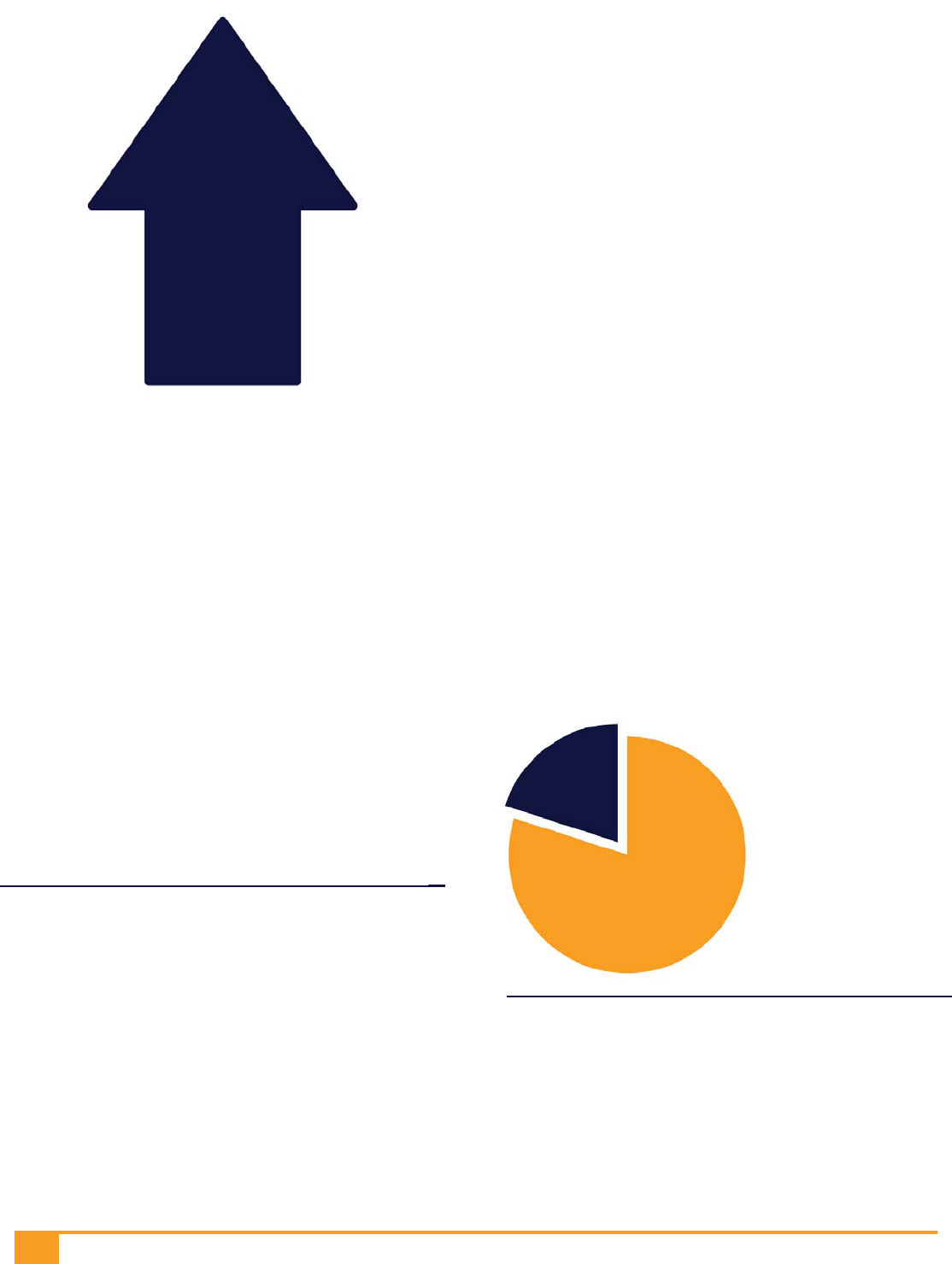
51
Disproportionate arrests of homeless people contribute to
the problem of mass incarceration, the criminalization of
poverty, and racial inequality.
14 0
Today more than 700,000
people are released each year from jails and prisons into
their communities, a tenfold increase since 1980.
141
Indeed,
“[a]s annual funding for public housing
plummeted from $27 billion in 1980 to $10
billion at the decade’s end, corrections
funding surged from nearly $7 billion to
$26.1 billion transforming the U.S. prison
system into the primary provider of affordable
housing and many of its jails into the largest
homeless shelters in town.”
142
The boom in jail and prison populations has been
disproportionately experienced by poor communities
of color. A 2018 nationwide survey of misdemeanor
140 A non-refundable cash extraction of $6,157,093 was
withdrawn from community in exchange for pre-trial freedom
for those booked by Metro from 2012-2017. I
SAAC BRYAN ET
AL., MILLION DOLLAR HOODS, THE LOS ANGELES POLICE DEPARTMENT’S
M
ETROPOLITAN DIVISION (2019), http://milliondollarhoods.org/wp-
content/uploads/2019/04/LAPD_Metropolitan_Division_Final_
revised_4-8-19.pdf.
141 Danya E. Keene et al., Navigating Limited and Uncertain
Access to Subsidized Housing After Prison, 28 H
OUSING POL’Y DEBATE
199, 199 (2018), https://w ww.ncbi.nlm.nih.gov/pmc/articles/
PMC5894879/pdf/nihms920887.pdf.
142 Chris Herring et al., Pervasive Poverty: How the
Criminalization of Poverty Perpetuates Homelessness, SOC’Y
FOR THE STUD. OF SOC. PROBS. 1, 2 (2019), https://static1.
squarespace.com/static/5b391e9cda02bc79baffebb9/
t/5cc1c0569140b7fb43b1af44/1556201561950/
Pervasive+Penality+social+problems+%281%29+%281%29.pdf.
prosecutions found that racial disproportionality in
enforcement of misdemeanors is large and has remained
constant since 1980, especially for offenses with greater
discretion in enforcement.
14 3
The Black arrest rate for
offenses like vagrancy, for example, is at least twice as high
as the White arrest rate.
14 4
We see these disparities in local arrest data. In Los Angeles,
CA, Black residents make up 46% of all area arrests and
bookings.
14 5
Homeless people accounted for 19% of all
metro arrests.
14 6
A study in San Francisco, CA, showed
similar results: Black people, Native Americans, Asian/
Pacifi c Islanders, and other people of color are cited,
searched, and have property taken at higher rates than
White people.
14 7
People with mental disabilities are also
approached by police at disproportionate rates.
14 8
In this way, criminalization of homelessness policies
contribute directly to racial inequity in the criminal justice
system. And, because a conviction on one’s record—
even for misdemeanors—can make a person ineligible
for employment, housing, and services, it also can bar
homeless people—who are already disproportionately
people of color, people with disabilities, and members of
other marginalized groups—from becoming rehoused. One
nationwide survey found that 79% of returning prisoners
were denied housing or deemed ineligible for it at some
point upon re-entry.
14 9
143 Megan T. Stevenson & Sandra G. Mayson, The Scale of
Misdemeanor Justice, 98 B.U. L. Rev. 731 (2018).
144 Id. at 759.
145 BRYAN ET AL., supra note 140.
146 Id.
147 Herring et al., supra note 142, at 7.
148 Id. at 9.
149 Brentin Mock, Should People With Criminal Histories Be
Banned From Public Housing?, C
ITYLAB (Sept. 18, 2015), https://
www.citylab.com/equity/2015/09/should-people-with-criminal-
histories-be-banned-from-public-housing/406015/.
700,000+
people
-----
are released
each year
from jails and
prisons in their
communities.
llee
ee
ss
tt
e
n
es
or
w
a
w
as s
o
m
o
m
E
T
E
T
N
T
N
T’S’S
ww
p-p-
ll
79% of returning
prisoners were
denied housing
or deemed
ineligible for it
at some point
upon re-entry.

52
FINES, FEES, AND DEBTORS PRISON
The issuance of tickets or other civil penalties, including the
towing and impoundment of homeless people’s vehicles,
is another common method of law enforcement.
15 0
There
is no comprehensive data on the extent of criminal justice
debt owed by poor people, but experts estimate that these
fi nes amount to billions of dollars.
151
These fi nes, if unpaid,
can result in incarceration, even though so-called debtor’s
prisons have been ruled unconstitutional by the U.S.
Supreme Court.
15 2
People who are homeless as a symptom of their poverty
lack the means to pay tickets they receive, which can result
in a cascade of harmful consequences including increased
fi nes, driver’s license suspensions, poor credit, warrants for
arrest, or even criminal liability and incarceration for failing
to pay. It also results in extreme fi nancial hardship among
people who already struggle to pay for food, medication,
or transportation, causing them to trade necessities to try and
avoid the harms of leaving fi nes unpaid. Among the harmful
consequences is a prolonged period of homelessness.
Indeed, legal fi nancial obligations can signifi cantly prolong
the time a person experiences homelessness.
15 3
150 See Chris Herring, Dilara Yarbrough, and Lisa Marie Altorre,
Pervasive Penalty: How Criminalization of Poverty Perpetuates
Homelessness, Social Problems 5 (2019), https://academic.
oup.com/socpro/advance-article/doi/10.1093/socpro/
spz004/5422958. “As several recent studies have revealed, the
ubiquitous policing of marginal groups has impacts on the policed
beyond incarceration and these effects are not captured in official
statistics of the state (Desmond and Valdez 2013; Goffman 2014;
Rios 2011). Most closely related to the homeless/penal nexus
are recent studies carried out by Beckett and Herbert (2011) on
municipal ordinances of banishment in Seattle, Stuart’s (2016)
study of hyper-policing on LA’s Skid Row, and the work of Robinson
(2017), and of Langegger and Koester (2017) on the policing of
homelessness in Denver.” Id.
151 Matthew Shaer, How Cities Make Money by Fining the Poor,
N.Y. T
IMES (Jan. 8, 2019), https://w ww.nytimes.com/2019/01/08/
magazine/cities-fine-poor-jail.html.
152 See e.g., M
YESHA BRADEN AT AL., LAW. COMMITTEE FOR C. R.
UNDER L., TOO POOR TO PAY: HOW ARKANSAS’S OFFENDER-FUNDED JUSTICE
SYSTEM DRIVES POVERTY & MASS INCARCERATION 2 (2019), https://
adobeindd.com/view/publications/f3b39ab5-1da5-409e-
97a6-a0b060d2f578/1/publication-web-resources/pdf/FINAL_
ARReport_Draft1_031419.pdf.
153 Jessica Mogk et al., Court-Imposed Fines as a Feature of the
Homelessness-Incarceration Nexus: A Cross-Sectional Study of the
Relationship Between Legal Debt and Duration of Homelessness
in Seattle, Washington, USA, J. OF. PUB. HEALTH (2019), https://
academic.oup.com/jpubhealth/advance-article/doi/10.1093/
pubmed/fdz062/5510723.
WARRANTS
People without a mailing address often do not, or even
cannot, receive notice of court dates requiring their
attendance, which will typically result in warrants for arrest.
In addition to the lack of regular access to mail, lack of
transportation, lack of any place to store belongings, and
fear of property loss, and other barriers can keep unhoused
people from attending mandatory court hearings.
Many citations received by homeless people result in
warrants. According to data from the Downtown Austin
Community Court, for example, nearly six in 10 citations
issued for sitting or lying down, camping, or panhandling
resulted in the issuance of warrants.
15 4
Police may enter into encampments and emergency shelters
to fi nd people with warrants, which can prevent people
from seeking the community or services that they need.
Warrants also directly hinder solutions to homelessness
because warrants disqualify people from subsidized
housing, and even drug and mental health treatment.
15 5
Warrants also can result in the suspension of benefi ts. And,
because they typically show up in background checks,
they can disqualify someone from needed private market
housing and/or employment.
154 Andrew Weber, Most Tickets for Homelessness Result in Arrest
Warrants. That Can Make Finding Housing Hard., K
UT 90.5 (June
20, 2019), https://www.kut.org/post/most-tickets-homelessness-
result-arrest-warrants-can-make-finding-housing-hard.
155 Herring et al., supra note 142, at 13
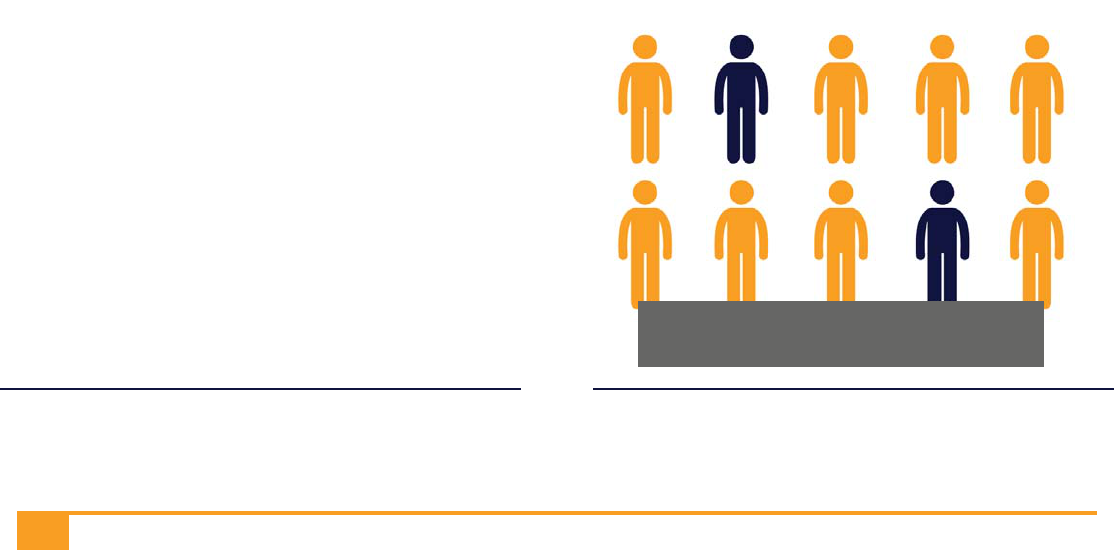
53
ORDERS TO “MOVE ALONG” FROM PUBLIC
S
PACE
Data on citations, arrests, and incarceration underrepresent
the experience of homeless people in enforcement of anti-
homeless laws. It is also common for enforcement to come
in the form of a so-called “move along” order, or threat of
enforcement without any citation or arrest ever being made.
A survey of homeless people in San Francisco, California,
found that nearly nine in 10 people living on the streets
reported being forced to “move” at least once in the prior
year; the same was true for eight in 10 people who live in
their vehicles.
15 6
The lack of paper trail often associated with move-along
orders means that this form of punishment is often “invisible”
to lawmakers and harder for advocates to track and study.
Orders to “move on” are seen as non-punitive alternatives
to arresting or citing homeless people. Still, the reality is
that orders to move on—with no housing or stable shelter
to move to—create a “pervasive penality” that produces
signifi cant harm.
15 7
Move along orders communicate to homeless people that
they are outlaws simply for being present in public space,
even when that space is open to the general public and/or
the person ordered to “move on” is doing nothing inherently
threatening, dangerous, or different from what other people
in the same public space are doing. This creates and
exacerbates trauma and stress and also leads to other,
numerous harms.
“Move along” orders may result in the loss of homeless
people’s few personal possessions. It may also destroy
their communities; interrupt their relationships; create new
barriers to employment, housing, and/or treatment; and
displace homeless people into more dangerous areas
and situations.
15 8
Moreover, the constant displacement
of people through move-along orders provokes confl ict
among individuals struggling for survival in public space.
It undermines their trust in government and the public at
large.
15 9
156 Id. at 7.
157 See id. at 2.
158 Id. at 7.
159 Id. at 16.
STAY AWAY ORDERS AND BANISHMENT
FROM PUBLIC SPACE
Enforcement of criminalization policies can also result in
banishment from some or all public space within a given
city, often as a term of pre-trial release bond and/or court-
ordered probation.
These orders may cover vast amounts of public space
or even an entire community. In Wilmington, DE, people
accused of panhandling are given a “no contact” order –
typically reserved for crimes with a specifi c victim, such as a
robbery or an assault – requiring them to have “no contact”
with the entire city. The police have been arresting homeless
residents for misdemeanor crimes such as loitering and
aggressive panhandling, argued the victim of these crimes
is the City of Wilmington, and requested a judge issue a
no contact order with the City of Wilmington accordingly.
These no contact orders prohibit the accused from direct or
indirect contact with the City of Wilmington, the “alleged
victim.” Vulnerable residents are thus forced to choose
between agreeing to conditions such as these no contact
orders, or remaining in jail until their case is resolved.
Furthermore, police enforced violations of these no contact
orders with further arrests.
A related, but distinct, tactic was used in Sacramento,
CA, when the city fi led a lawsuit against seven homeless
individuals arguing that the men are public nuisances that
should be excluded from a large section of town – at all
times and for all purposes.
16 0
160 Michelle Wiley, Why is Sacramento Trying to Ban 7 Men
From Entering 1 Neighborhood?, KQED (Aug. 26, 2019), https://
www.kqed.org/news/11769864/why-is-sacramento-trying-to-
ban-7-men-from-entering-1-neighborhood.
times
and
for
all
purposes.
forced to MOVE.

54
PRIVATIZATION OF PUBLIC SPACE
Public space is increasingly becoming privatized as a result
of business improvement districts. Business improvement
districts (“BIDs”) are private entities, often concentrated
in downtown business areas, funded by local property
assessments, including from public properties.
161
These
compulsory assessments can produce millions in revenue.
In California, for example, the state’s approximately 200
BIDs collect hundreds of millions of dollars each year.
162
An in-depth study of 11 such BIDs revealed that BIDs use
their revenue for a number of anti-homeless activities—
including by lobbying for new or harsher criminalization
laws, which may help to explain the strong correlation
between the growth of BIDs and the marked increase in
laws criminalizing homelessness.
16 3
BIDs often coordinate closely with police to increase law
enforcement activity in the BID area, and they may even
use revenue raised from mandatory property assessments
to pay for extra police patrol hours. BIDs also participate
directly in criminalization law enforcement through private
security personnel, who may be off-duty police offi cers and
who are tasked with excluding or removing visibly homeless
people from their business districts.
16 4
BIDs and state level
Chambers of Commerce have also opposed proposed
state bills in California, Oregon, and Colorado to prohibit
the criminalization of homelessness.
While most BIDs promote short-sighted punitive approaches
to homelessness, at least one has taken a more constructive
approach. In Washington, DC, the Downtown DC BID has
helped to develop and fund housing fi rst approaches. The
BID partners with Pathways to Housing DC, along with other
non-profi t and public agencies, to provide outreach, food
services, and housing to people experiencing homelessness
in DC.
161 Jeffrey Selbin et al., Homeless Exclusion Districts: How
California Business Improvement Districts Use Policy Advocacy and
Policing Practices to Exclude Homeless People from Public Space,
UC BERKELEY PUB. L. & LEGAL THEORY (2019), https://papers.ssrn.com/
sol3/papers.cfm?abstract_id=3221446.
162 Id.
163 Id.
164 Id.
To date, the BID has helped to move at least 114 people
into permanent supportive housing.
16 5
It also manages
DC’s Downtown Day Services Center, which will serve at
least 100 people per day with meals, showers, laundry
facilities, and access to computers.
16 6
But even within DC
this sentiment is unfortunately the exception rather than the
rule.
Business groups have also fi led lawsuits to encourage
punitive approaches to homelessness. In Olympia,
Washington—the state’s capital city—local businesses
fi led a lawsuit against the city for opening a sanctioned
encampment for unhoused people rather than aggressively
enforcing the city’s trespassing and nuisance laws.
16 7
Moreover, business groups have taken steps to limit
constructive alternatives to criminalizing homelessness.
In San Francisco, two business groups and an anti-tax
organization fi led a lawsuit to oppose Proposition C, a voter
approved measure to tax the city’s biggest corporations in
order to fund housing and homelessness services.
HOSTILE ARCHITECTURE AND LANDSCAPING
Cities also spend tens or hundreds of thousands of dollars
on fences, bars, rocks, spikes, other “hostile” or “aggressive”
architecture, deliberately making certain areas of their
community inaccessible to homeless persons without
shelter. A spokesperson for the California Department
of Transportation (DOT), which placed large boulders
in locations where people experiencing homelessness
were known to camp, admitted that it uses, “fencing and
landscaping elements to prevent and discourage.... illegal
encampments.”
16 8
165 Downtown Business Improvement District Champions
Innovative Homeless Housing Initiatives, DOWNTOWN DC (Oct. 13,
2008), https://www.downtowndc.org/press_release/downtown-
business-improvement-district-champions-innovative-homeless-
housing-initiatives/.
166 Mayor Bowser Announces $1.7 Million Grant for Downtown
Day Services Center to Support Individuals Experiencing
Homelessness, OFFICE OF THE MAYOR (Aug. 23, 2018), https://
mayor.dc.gov/release/mayor-bowser-announces-17-million-grant-
downtown-day-services-center-support-individuals.
167 Nadia Romero, Businesses Sue City of Olympia for How
it Handles Homeless Problem, Q13 FOX (June 4, 2019, 5:43
PM), https://q13fox.com/2019/06/04/businesses-sue-city-of-
olympia-for-how-it-handles-homeless-problem/.
168 Rick Paulas, Photos of the Most Egregious ‘Anti-Homeless’
Architecture, VICE (June 25, 2019, 12:00 PM), https://www.vice.
com/en_us/article/kzm53n/photos-of-the-most-egregious-anti-
homeless-architecture.

55
As with criminalization policies, hostile architecture and
landscaping does nothing to address the underlying causes
of homelessness, yet it costs taxpayers signifi cant sums of
money that could be better spent on housing and services.
Spokane, WA, for example, spent $150,000 to install rocks
under the city’s overpasses. City Council President, Ben
Stuckart later apologized for the expensive tactic, stating,
“I chose an expedient and strong-armed
solution instead of the collaborative and
holistic approach… the homeless citizens
relocated from their community deserved an
outstretched hand from their elected officials
instead of a hammer and a bunch of rocks.”
Other cities, like Chicago, Illinois, have fenced off areas
under bridges to prevent homeless persons from sheltering
there, and even redesigned sidewalks to make them less
accessible.
Sometimes the hostile environment takes audio form. The City
of West Palm Beach, FL, made headlines when it blared the
ubiquitous children’s tune, “Baby Shark,” on repeat outside
of an event center to deter people from sleeping in the area
at night.
16 9
Other cities have been reported to use high-
pitched beeping, recordings of chain saws, or even high-
frequency sounds to make being in the area intolerable.
170
169 Nicholas Bogel-Borroughs, A Playlist to Deter the Homeless:
‘Baby Shark’ and ‘Raining Tacos’, N
EW YORK TIMES (July 18, 2019),
https://www.nytimes.com/2019/07/18/us/baby-shark-homeless.
html.
170 Id.
Baby shark
doo doo doo
doo doo

56
COMPLAINT ORIENTED POLICING
No matter whether criminalization policies are enforced by
arrest, a fi ne, or an order to “move along”, it is likely to be
triggered by a complaint about homeless people’s visible
presence.
171
Citizen complaints generate tremendous pressure on
cities to use police and other public resources to resolve
complaints about homelessness, even if the strategies for
doing so will clearly fail to address the underlying problems
driving the complaints. And, while a rise in complaints is
often thought to correlate with a rise in homelessness, that
is not always the case. In San Francisco, for example,
police dispatches for “homeless concerns” increased by
72% between 2013 and 2017, even though the unsheltered
homeless population remained the same over the same
period.
172
In addition to driving enforcement of criminalization policies,
citizen complaints also contribute to the enactment of new
punitive policies—even when governments attempt to move
away from punitive approaches to homelessness. In August
2018, after a federal court enjoined San Francisco from
enforcing its vehicle habitation ban pursuant to litigation
fi led by the Law Center and others
173
, the city council
unanimously repealed that law.
174
Shortly thereafter, the city
received numerous complaints from community residents
who claimed that the number of people living in vehicles
near the expensive beach areas of the city had created a
public safety and sanitation crisis.
175
171 See Herring, supra note 97.
172 Id. at 3.
173 Bloom v. City of San Diego is being litigated by the Law
Center, Disability Rights California, Disability Rights Advocates,
Fish & Richardson, [BFFB], and the Dreher Law Firm on behalf of
a putative class of people who live in vehicles in the City of San
Diego.
174 David Garrick, Judge Orders San Diego to Stop Ticketing
Homeless Living in Vehicles, THE SAN DIEGO UNION-TRIBUNE (Aug. 22,
2018, 5:00 PM), https://www.sandiegouniontribune.com/news/
politics/sd-me-homeless-vehicle-20180822-story.html.
175 David Garrick, Repeal of Vehicle Habitation Law
Prompts Outcry Among San Diego’s Beach Residents, T
HE SAN
D
IEGO UNION-TRIBUNE (Feb. 26, 2019, 3:50 PM), https://www.
sandiegouniontribune.com/news/politics/sd-me-homeless-car-
beach-20190226-story.html.
Demands from other governmental agencies can also
trigger enforcement. Government personnel responsible
for street cleaning or park management often draw heavily
on police resources during routine cleaning activities,
and/or during evictions of homeless encampments.
176
There are even examples of other branches of government
encouraging criminalization policies and practices.
For example, heads of the Washington State House and
Senate transportation committees submitted a joint letter in
May 2019 to the head of the Washington State Department
of Transportation (WSDOT) and the Washington State
Patrol to “strongly encourage’ them to sweep homeless
encampments along state highways.
17 7
The letter pointed to Washington state law and
WSDOT’s guidelines regarding illegal encampments as
providing “ample authority to take immediate action to
address situations where activity poses a clear emergency
as an imminent threat to public health and safety alongside
active highway operations”, which, per the letter, include
“any right-of-way area deemed unsafe by a WSDOT
Regional Administrator.”
178
Millions of state tax dollars were
approved for this purpose.
Complaints from business interests, homeowner associations,
and other organizations also drive criminalization law
enforcement. Between 2013 and 2018 in San Francisco,
for example, BIDs accounted for as much as 32% of all 911
dispatches related to homelessness, even though the City’s
BIDs cover only 5% of its land area.
17 9
Pressure to respond to complaints is harmful to homeless
people, and also frustrating to many police who recognize
that homeless people need housing and services, not
temporary stints in jail or tickets that they cannot afford
to pay. Instead, it involves police offi cers in a perpetual
game of moving homeless people from the location where
the complaint was generated to another where a future
complaint awaits them.
176 See Herring, supra note 97.
177 Matt Markovich, ‘We Have to Take a Proactive Approach’:
State Moves to Clear Highway Homeless Camp, KOMO NEWS
(May 22, 2019), https://komonews.com/news/project-seattle/
decision-on-who-removes-highway-homeless-camps-in-seattle.
178 Bipartisan Letter Encouraging WSDOT Property Cleanup,
KOMO N
EWS (May 8, 2019), https://www.scribd.com/
document/411050216/Bipartisan-letter-encouraging-WSDOT-
property-cleanup#from_embed.
179 Herring, supra note 97, at 13.
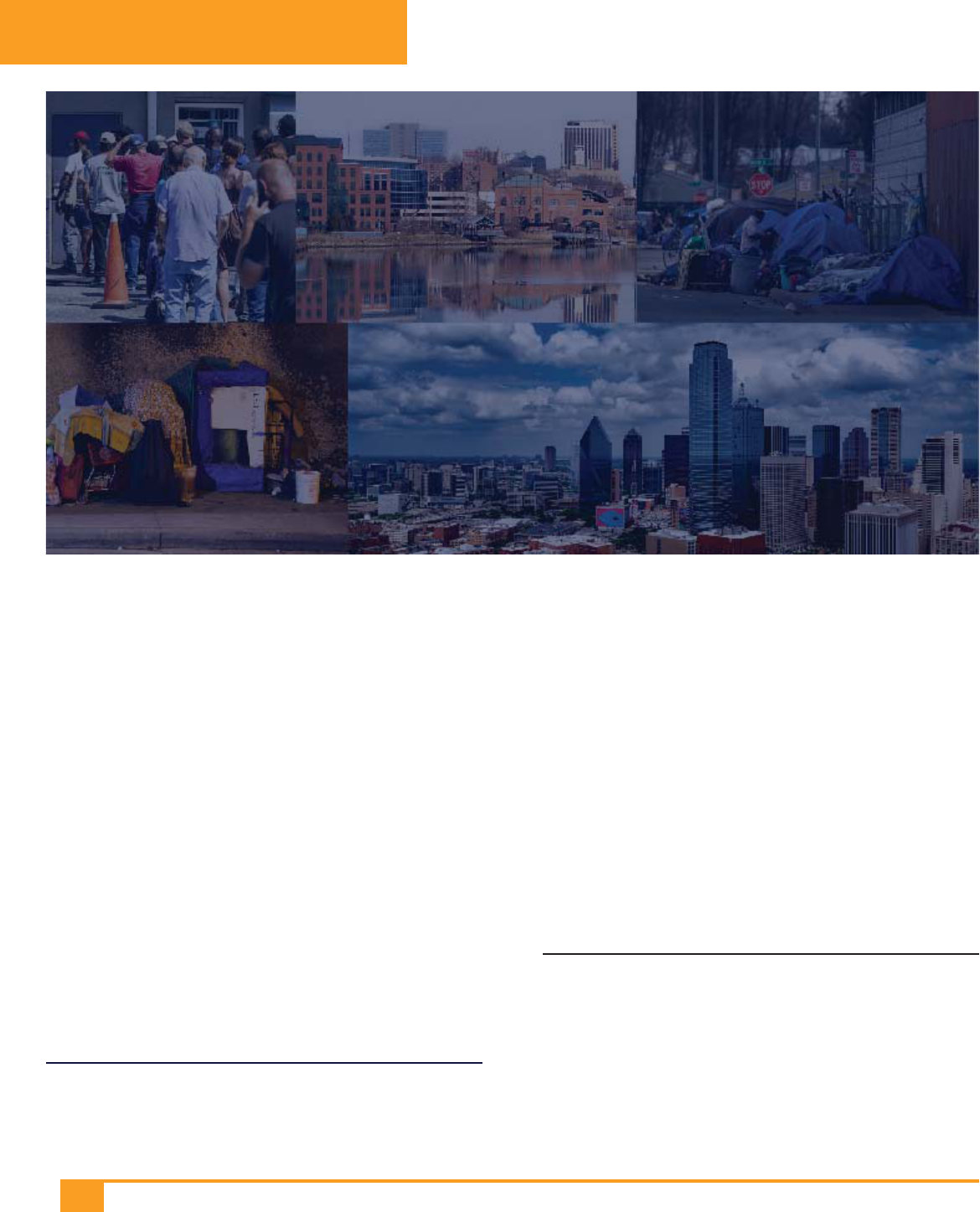
57
T
he Law Center recognizes that communities
struggle with difficult policy choices over how
to reduce homelessness and often pursue
a combination of good (constructive) and bad
(destructive) policies. Rather than call out individual
governments for being the best or worst, we have
identified particularly bad policies and/or practices of
certain governments to include in our Hall of Shame.
OCALA, FL: AGGRESSIVE ANTI-
H
OMELESSNESS POLICING
In Ocala, Florida, homeless people are strictly policed in
accordance with Ocala’s strict anti-homeless ordinances
and the explicit directives of Mayor Guinn, who promotes
“broken windows” policing,
176
a discredited policing model
which asserts that open signs of disorder such as broken
windows invite further crimes when left unaddressed.
17 7
176 Mayor Kent Guinn: “Broken Windows” Policing in Ocala, OCALA
https://www.ocalafl.org/Home/Components/News/News/9072/ (Sep.
25, 2018, 3:52 PM).
17 7 What is Broken Windows Policing, CENTER FOR EVIDENCE-BASED
Mayor Quinn explicitly considers panhandling a broken
window in need of redress.
178
Under Ocala’s “Trespass
and unlawful lodging” ordinance, it is illegal to “rest while
awake or sleep” in the open on public property. Ocala
seeks to enforce this law through deployment of a “vagrant
patrol” that aggressively enforces the city’s anti-homeless
laws with the intent of driving homeless people out of the
city. These aggressive police tactics led to “Operation
Street Sweeper,” a city-sponsored police patrol that has
made over 200 “quality-of-life” arrests between December
3, 2018 and April 1, 2019.
17 9
According to a federal lawsuit
fi led by Southern Legal Counsel, merely three of the City’s
unhoused residents, who are named plaintiffs in the action,
have collectively spent 210 days in jail and been assessed
over $9,000 in fi nes, fees, and costs due to enforcement of
the trespass and unlawful lodging ordinance alone.
18 0
CRIME POLICY, https://cebcp.org/evidence-based-policing/what-works-in-
policing/research-evidence-review/broken-windows-policing/ (last visited
Nov. 25, 2019).
178 Mayor Kent Guinn: “Broken Windows” Policing in Ocala, OCALA
https://www.ocalafl.org/Home/Components/News/News/9072/ (Sep.
25, 2018, 3:52 PM).
179 Andy Fillmore, Homeless Advocates Sue Ocala in Federal
Court, OCALA (Sep. 19, 2019, 10:47 AM), https://www.ocala.com/
news/20190919/homeless-advocates-sue-ocala-in-federal-court.
180 Complaint, McArdle v. Ocala, Case No. 5:19-cv-461 (M.D. Fla.
HALL OF SHAME
CALLING OUT BAD POLICIES
AND PRACTICES

58
contact orders with further arrests.
187
Wilmington Mayor
Mike Purzycki has since called for repeal of Wilmington’s
panhandling ban, however that repeal has not yet
happened.
KANSAS CITY, MO:
FOOD-SHARING REGULATIONS
Health department offi cials in Kansas City, Missouri came
under fi re in November 2018 for pouring bleach on food
being given to homeless people.
18 8
Health department
offi cials stated their purpose for soaking chili, soup, and
sandwiches being offered to homeless residents by the
organization Free Hot Soup in bleach was to deter people
from eating food it considered to be a safety hazard.
However, these actions simply caused hungry residents to
eat the bleach-covered food instead. Then-mayor Sly James
posted on Twitter in support of the actions conducted by the
health department offi cials.
18 9
While the Law Center is not
aware of this highly publicized incident being repeated,
its especially egregious nature has landed Kansas City,
Missouri, in our Hall of Shame.
REDDING, CA: PROPOSED INVOLUNTARY
DETENTION OF HOMELESS PEOPLE
Redding, California, is a rural community in northern
California’s Shasta County, which is home to some 827
homeless people, and far fewer emergency shelter beds.
In response to rising homelessness, Redding Mayor Julie
Winter sent a letter to California Governor Gavin Newsom
asking for him to declare a state of emergency over
homelessness and calling for the ability to, “hold [homeless]
individuals accountable” by, “[requiring] mental health
treatment for the severely mentally ill, up to and including
conservatorship until such time as the individual has
demonstrated the ability to care for themselves including
managing their fi nances.”
19 0
In an interview with Jefferson
Public Radio about the letter, Mayor Winter elaborated by
187 Id.
188 Alexandra Klausner, Health Department Poured Bleach on Food
Meant for the Homeless, NY POST (Nov. 12, 2018, 4:41 PM), https://nypost.
com/2018/11/12/health-department-poured-bleach-on-food-meant-for-
the-homeless/.
189 @MayorSlyJames, TWITTER (Nov. 5, 2018), https://twitter.com/
MayorSlyJames/status/1059549161945743375.
190 Letter from Julie Winter, Mayor of City of Redding, to Honor-
able Gavin Newsom, Governor of State of California, CITY OF REDDING
(Nov. 19, 2019), available at https://drive.google.com/file/d/1l-
R0NSzB4B-Hr-SZHWuqYg8Vvlnug17ug/view.
SACRAMENTO, CA: AGGRESSIVE SWEEPS
AND BANISHMENT OF HOMELESS PEOPLE
The City of Sacramento consistently engages in practices
that seek to isolate and disperse homeless people, even
in the absence of adequate housing alternatives or even
available shelters.
181
According to a federal lawsuit fi led
by Legal Services of Northern California, Sacramento
“dweployed a fl eet of Sheriff’s Deputies, some of whom were
outfi tted with batons and riot gear, and at least 15 Sheriff
vehicles” to displace over 100 residents of a homelessness
encampment.
182
In doing so, the City of Sacramento seized
and destroyed encampment residents’ personal property,
and caused some of the residents personal injury.
18 3
Worse
yet, Sacramento fi led its own lawsuit seeking to declare
certain homeless individuals as public nuisances and have
them banned from a large amount of public space.
18 4
WILMINGTON, DE: IMPROPER USE OF NO
CONTACT / STAYAWAY ORDERS
Wilmington, Delaware, has engaged in practices with
the intention of keeping its homeless residents away from
certain parts of town, but instead of physically removing
them, it seeks a “no contact” order with the entire city as a
condition of bail.
18 5
In Wilmington, the police have arrested
homeless residents for misdemeanor crimes such as loitering
and aggressive panhandling, and requested that judges
issue “no contact” orders prohibiting the accused from
direct or indirect contact with the entire City of Wilmington,
the “alleged victim.”
18 6
Vulnerable residents are thus forced
to choose between agreeing to unreasonable conditions
of release or remaining in jail until their case is resolved.
Furthermore, police enforced violations of these no
2019).
181 Responding to Homelessness in the County of Sacramento, SACRA-
MENTO COUNTY, https://www.saccounty.net/Homelessness/Pages/default.
aspx (last visited Nov. 25, 2019).
182 Complaint, Rios v. County of Sacramento, Case No. 2:10-cv-
00922-KJM-DB (E.D. Cal. 2019).
18 3 Id.
184 Sam Stanton et al., Drugs, Thefts, Assaults: Sacramento Wants
to Ban 7 People from Prominent Business Corridor, THE SACRAMENTO BEE
(Aug. 16, 2019, 11:48 AM), https://www.sacbee.com/news/local/arti-
cle234082757.html.
185 Christina Jedra, Loitering, Panhandling Can Get You Banned from
Wilmington, DELAWARE ONLINE (Dec. 5, 2018, 2:11 PM), https://www.dela-
wareonline.com/story/news/2018/12/05/accused-loiterers-and-panhan-
dlers-getting-banned-wilmington/2190018002/.
186 Id.

59
saying she wishes to build a shelter where she can force
people experiencing homelessness to stay for up to 90
days: “[It] might be a low-security facility, but it’s not a facility
you could just leave because you wanted to…You need to
get clean, you need to get sober, you need to demonstrate
self-suffi ciency. And once you do that, you’re free to go.”
191
STATE OF TEXAS: FORCING PUNITIVE
APPROACHES TO HOMELESSNESS
Austin, TX amended its ordinances against camping in June
2019.
19 2
While the amendment allowed police to enforce
the city’s camping ordinance against unhoused people
even in the absence of adequate alternatives, it required
that police fi rst determine that the camping presented an
actual public health or safety risk.
19 3
Texas Governor Greg
Abbott rebuked Austin for the positive law changes, and
threatened to intervene if the city did not return to the more
draconian version of the ban.
19 4
Governor Abbott warned
that “all state-imposed solutions are on the table including
eliminating local sovereign immunity for damages and
injuries” allegedly caused by Austin’s “reckless homeless
policy.”
19 5
Political pressure from Governor Abbott
contributed to Austin’s decision to again amend its camping
ban to reduce the standard for illegal camping and to ban
sitting and lying down in a large swath of Austin’s public
space. The Governor then ordered Texas Department
of Transportation staff to sweep homeless encampments
from underneath state-owned highways, despite a lack of
alternative places to go. The sweeps have continued on a
weekly basis since the Governor fi rst ordered them to begin
on November 4, 2019.
19 6
191 Emma Ockerman, This California City Wants to Build a Homeless
Shelter That’s Basically a Jail, VICE (Nov. 22, 2019, 4:39 PM), https://www.
vice.com/en_us/article/mbmz94/a-california-mayor-wants-to-build-a-
homeless-shelter-thats-basically-a-jail.
192 Andrew Weber, Austin Has New Rules on Panhandling, Camping
and Resting in Public. Here’s What That Means., KUT 90.5 (July 1, 2019),
https://www.kut.org/post/austin-has-new-rules-panhandling-camping-
and-resting-public-heres-what-means.Since that time, Austin has revised its
policies again. Andrew Weber, Austin Reinstates Limited Bans On Camping
and Resting in Public, KUT 90.5 (Oct. 17, 2019), https://www.kut.org/post/
austin-reinstates-limited-bans-camping-and-resting-public.
193 See id.; see also AUSTIN, TEX. CODE §9-4-11 – Camping in Public
Area Prohibited.
194 Andrew Weber, Gov. Abbott Threatens State Intervention (Again)
Unless Austin Reinstates its Camping Ban, KUT 90.5 (OCT. 10, 2019),
https://www.kut.org/post/gov-abbott-threatens-state-intervention-again-un-
less-austin-reinstates-its-camping-ban.
195 @GregAbbott_TX, TWITTER (July 1, 2019), https://twitter.com/Gre-
gAbbott_TX/status/1145930019451146245.
196 Austin Sanders, TxDOT to Begin Clearing Encampments Under
Highways, AUSTIN CHRONICLE (Nov. 1, 2019), https://www.austinchronicle.
THE U.S. GOVERNMENT: CREATING AND
WORSENING THE NATION’S HOMELESS
C
RISIS
Dramatic cuts to federal funding for subsidized housing
led to the modern homeless crisis, and today funding is so
inadequate that only 1 in 4 people who are eligible for
housing supports actually receives it. In September 2019,
the Trump Administration’s Council of Economic Advisors
released a white paper claiming that homeless people
remain so because they are “too comfortable” living on the
streets, and calling for policing as a tool, “to help move
people off the street and into shelter or housing…”
19 7
Most
worrisome is that this white paper appears to lay a policy
basis for what Trump is reportedly considering - razing
encampments and forcibly removing unhoused people
off the streets to vacant federal properties.
19 8
One of the
locations that the Trump Administration has reportedly shown
interest in forcibly relocating homeless people to is the
Hawthorne Federal Building - a vacant federal property that,
ironically, homeless service providers previously attempted
to acquire through Title V of the McKinney-Vento Homeless
Assistance Act to provide voluntary homeless services.
19 9
That application, like the vast majority of applications
under Title V, was denied.
200
The federal government’s
disinvestment in subsidized housing, its reported plan to
“crack down” on homelessness,
201
and its failure to use the
real property assets at its disposal to constructively address
the homeless crisis earn the U.S. Government a place on
our Hall of Shame.
com/news/2019-11-01/txdot-to-begin-clearing-encampments-under-high-
ways/.
197 COUNCIL OF ECON. ADVISORS, THE STATE OF HOMELESSNESS IN AMERICA
(2019), https://www.whitehouse.gov/wp-content/uploads/2019/09/The-
State-of-Homelessness-in-America.pdf.
198 Kriston Capps, The Trump Administration Wants to Relocate Skid
Row to this Federal Building, CITYLAB (Sep. 17, 2019), https://www.citylab.
com/equity/2019/09/los-angeles-trump-homeless-crisis-shelter-haw-
thorne-building/597913/.
199 Title V of the McKinney-Vento Homeless Assistance Act grants
states, cites, and non-profit agencies with the ability to obtain unneeded
federal property for free to provide needed homeless housing and services.
200 Between January 2017 and today, a total of 24 applications for
vacant federal property were submitted, but only 7 were approved. There is
no administrative review procedure for application denials.
201 Jeff Stein, Tracy Jan, Josh Dawsey & Ashley Parker, Trump Pushing
for Major Crackdown on Homeless Camps in California, with Aides
Discussing Moving Residents to Government-Backed Facilities, WASH-
INGTON POST (Sept. 10, 2019), https://www.washingtonpost.com/busi-
ness/2019/09/10/trump-pushing-major-crackdown-homeless-camps-cali-
fornia-with-aides-discussing-moving-residents-government-backed-facilities/

60
C
riminalization laws refl ect deep-seated prejudice
against people experiencing homelessness.
Among the erroneous beliefs about homeless
people are that they are lazier, more dangerous, and/
or more likely to use addictive substances than people in
housing. These popular prejudices are unfounded, yet they
routinely inform homelessness policy making. This section
of the report corrects commonly held, but inaccurate
beliefs about people experiencing homelessness.
HOMELESS PEOPLE LIVE OUTSIDE BECAUSE
THEY LACK BETTER OPTIONS
The false narrative that homelessness is a choice, rather
than a refl ection of a lack of choices, leads to citizen
complaints about the mere presence of homeless people
in public space, along with extreme political pressure on
cities to remove homeless people from view. Inaccurate
bel iefs contribute to extreme frustration with outdoor
camping, which contributes to policies punishing outdoor
camping, even when there are insuffi cient and inadequate
alternatives for people without housing. In a poll of Seattle
residents, nearly half of people polled said they approved
a zero-tolerance approach to outdoor camping, with 35%
“strongly” approving of that approach.
202
A more recent
poll of Los Angeles residents found similar results, with some
60% of voters disapproving of allowing people to sleep
in public even while the region lacks enough housing and
shelters for those in need.
203
Proponents of criminalization laws point to empty shelter
beds as evidence that homeless people choose to be
outside, but that is an inaccurate and overly simplistic view
of the complex survival choices that homeless people are
forced to make each day. Moreover, it ignores the many
real barriers to shelter access that face people without
housing. In Houston, Texas, for example, people with limited
mobility and who need assistance getting in and out of bed
202 Vianna Davila & Vernal Coleman, In New Poll on Homelessness,
Seattle Area Favors Compassion But Distrusts Politicians, SEATTLE TIMES (Jan. 11,
2019, 6:00 AM), https://www.seattletimes.com/seattle-news/homeless/
homeless-poll-results/.
203 Benjamin Oreskes et al., 95% of Voters Say Homelessness is L.A.’s
Biggest Problem, Times Poll Finds. ‘You Can’t Escape It’, LA TIMES (Nov. 14,
2019, 6:41 AM), https://www.latimes.com/california/story/2019-11-14/
homeless-housing-poll-opinion.
UNFOUNDED AND
HARMFUL STEREOTYPES
CRIMINALIZING HOMELESSNESS
PERPETUATES UNFOUNDED AND
HARMFUL STEREOTYPES
KABC-TV
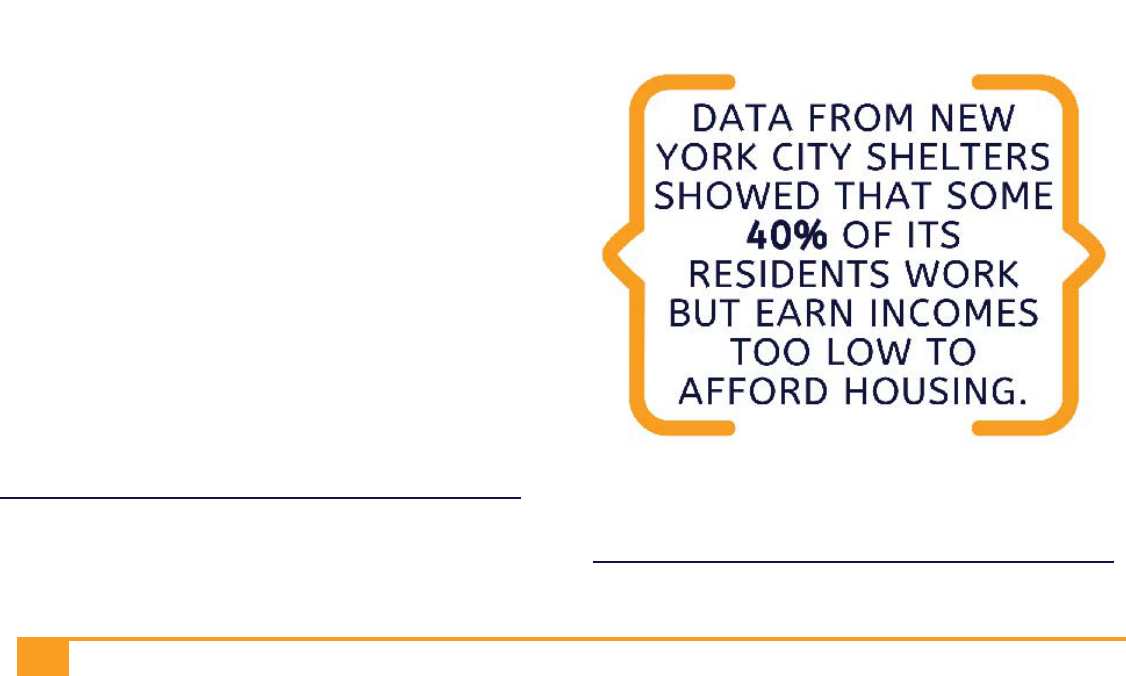
61
and on and off the toilet are turned away from shelter on
that basis.
Even if a shelter bed is available and someone can
physically access it, shelter beds may still be functionally
unavailable. In Martin v. City of Boise, the U.S. Court of
Appeals for the Ninth Circuit—the largest federal circuit
court in the nation—recognized that some people are
turned away from shelter even when there are empty beds,
like when they have stayed the maximum time allowed
under shelter rules for a given period or when they cannot
participate in religious programming.
People also point to the refusal of “services” as evidence
that people are choosing homelessness and do not want
help. But this is premised on the incorrect belief that offered
“services” are ones that can meaningfully address a person’s
homelessness. Offered “services” are usually only offers of
temporary emergency shelter or programming that may not
be relevant to the offeree’s housing status. For example,
offers of “services” may be offers to evaluate people for
entry into drug and alcohol treatment, yet the vast majority
of people experiencing homelessness do not abuse drug
and alcohol and cannot make use of that service.
In addition to driving criminalization policies, prejudice
against homeless people has limited attempts by cities to
pursue constructive alternative approaches to homelessness.
Residents in a number of communities have fi led lawsuits to
prevent cities from expanding service and housing options
for unhoused people. In Venice, California, the Venice
Stakeholders Association sued the city of Los Angeles and
the California Coastal Commission over a plan to establish
a shelter. The lawsuit is funded by over $200,000 raised
from individual donors in the area who state they do not
want a shelter located in their community.
204
HOMELESS PEOPLE WORK, BUT STILL
CANNOT AFFORD HOUSING
It is a common misconception, for example, that homeless
people are lazy and choose not to work, but many homeless
people do work. Data from New York City shelters showed
that some 40% of its residents work but earn incomes too
204 Elijah Chiland, Venice Neighborhood Group Raises $200K to
Fight Homeless Shelter, CURBED L.A. (Apr. 16, 2019, 12:25 PM), https://
la.curbed.com/2019/4/16/18410698/venice-homeless-shelter-law-
suit-fundraising.
low to afford housing. That a person can work full-time and
still be unable to afford housing should come as no surprise:
a worker earning the federal minimum wage must work 103
hours per week – the equivalent of 2.5 full time jobs – to
afford a one-bedroom apartment at the national average
market rent.
205
Recent media reports have highlighted the problem of
homelessness among America’s working poor. John Harris,
a San Francisco native, works for the city’s San Francisco
Human Services Agency, but he still cannot afford housing.
“I thought if I worked for the city and county I would for
sure have a place to live,” said Harris. Instead, he sleeps
in his truck in a church parking lot, where he volunteers in
exchange for access to an overnight parking space. “I’ve
been living in this truck for well over two years now,” said
Harris. “I get to work at 6:30 in the morning and I get off
at 3 p.m.” He has no criminal record, no disabilities, no
substance addiction, and he is thus ineligible for many
social programs. At 60, he is too young to qualify for senior
programs. He is also just over the income threshold for the
City’s single room occupancy units. His truck is his only
option for shelter, as there are over 1,000 people ahead
of him on San Francisco’s shelter waiting list. But the City
disallows living in vehicles and has cracked down on
working people like John—the City’s own employee.
205 OUT OF REACH, supra note 35.

62
The Washington Post featured the story of Monica Diaz,
who similarly works full-time at a Washington D.C.
restaurant yet has slept in a tent ever since the building
she was living in was condemned for non-payment of
utility services by the building’s owner.
206
Monica has
struggled to maintain employment while homeless because
keeping up appropriate hygiene is a daily struggle for
people unable to regularly access showers, laundry, or
even running water. But she has managed to stay working
despite the stress of living outside. Monica has been subject
to numerous encampment sweeps where she has lost
critical property, including identifi cation documents and her
tent. Indeed, at the time of her story’s publication, she was
living in her seventh tent, as all others had been trashed by
District employees. She is under constant threat of being
swept again—even when temperatures dip into the 30s
during the District’s cold winters. “I’m at my breaking point,”
she said in an interview with the Washington Post. “I’m so at
my breaking point, I don’t know what to do.”
206 Terrence McCoy, ‘This Is Not Me’, WASH. POST (Mar. 22, 2019),
https://www.washingtonpost.com/news/local/wp/2019/03/22/fea-
ture/homeless-living-in-a-tent-blocks-from-the-u-s-capitol-and-working-full-
time/?noredirect=on&utm_term=.aa7dd0e93bd6.
THE VAST MAJORITY OF HOMELESS PEOPLE
D
O NOT ABUSE ALCOHOL AND/OR
DRUGS
Another common misconception is that homeless people
are unhoused—and remain that way—because they are
addicted to drugs and/or alcohol. In a recent survey of
Seattle residents, 72% said they believed half of all people
living on the streets are addicted to drugs and alcohol.
207
Yet data from King County, where Seattle is located,
shows that the number of unhoused people struggling with
addiction is less than half of that.
208
Moreover, lost in the
discussion of addiction is the fact that many people using
drugs and alcohol on the streets are self-medicating in
response to untreated mental or physical illness or as a
coping mechanism against trauma.
207 Vernal Coleman, Frustrated King County Residents Want a Plan
to Address Homeless Crisis, New Poll Says, SEATTE TIMES (Apr. 2, 2019, 6:00
AM), https://www.seattletimes.com/seattle-news/homeless/frustrated-king-
county-residents-want-a-plan-to-address-homeless-crisis-new-poll-says/. A
survey paid for by the Bill & Melinda Gates Foundation, Campion Advocacy
Fund, Raikes Foundation, and Ballmer Group asked Seattle residents questions
designed to identify popular opinions about homelessness and solutions. Id.
208 Lola E. Peters, Seattle is Addicted to Bad Narratives About
Homelessness, CROSSCUT (Sep. 2, 2019), https://crosscut.com/2019/09/
seattle-addicted-bad-narratives-about-homelessness.
Stop stereotyping
homeless people.
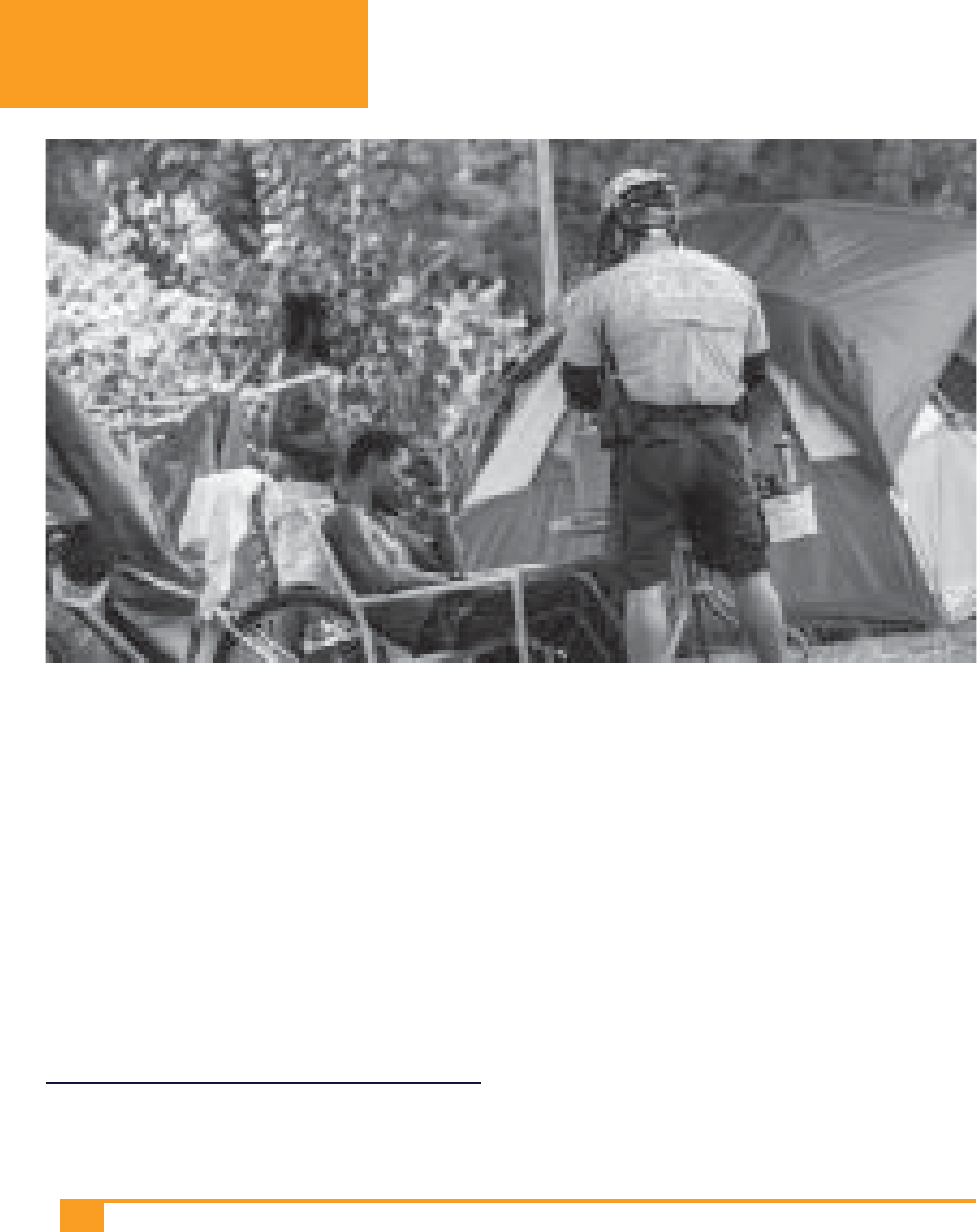
63
T
he rising cost of housing and systemic inequality have
led to an increase in unsheltered homelessness for three
straight years across the country. Yet, many Americans
fail to recognize the systemic causes of homelessness and
instead mistakenly believe that unsheltered homelessness is
a function of individual choice, rather than a lack of choices.
One of the destructive side effects of this false belief is that
it enables apathy about the urgent homelessness crisis.
209
It also contributes to complaints about the mere presence
of homeless people in public space, and creates political
pressure on cities to respond to those complaints by
enacting and enforcing policies that outlaw homelessness.
But, arresting and ticketing homeless people for living in
public space when they have no better options does not
reduce homelessness, nor does such enforcement serve
209 Ruth Gourevitch & Mary K. Cunningham, Dismantling the Harmful,
False Narrative that Homelessness Is a Choice, URBAN INST. (Mar. 27, 2019),
https://www.urban.org/urban-wire/dismantling-harmful-false-narra-
tive-homelessness-choice.
any constructive purpose. Instead, these punitive measures
make it more diffi cult for people to exit homelessness and
directly undermine positive governmental efforts to end
homelessness through housing and services. Criminalization
policies also stigmatize homeless people, fueling the
growing tide of private violence against homeless people.
CRIMINALIZATION POLICIES FAIL TO
ADDRESS THE CAUSES OF HOMELESSNESS,
AND INSTEAD WORSEN THE PROBLEM
Laws criminalizing homelessness authorize law enforcement
to remove people from public space for acts that are
inextricably linked to homeless status, such as sleeping
in public. While such laws allow law enforcement to
temporarily address complaints about homelessness, they
fail to address systemic homelessness because they do
nothing to address its underlying causes.
HARMFUL &
INEFFECTIVE
CRIMINALIZING HOMELESSNESS
IS INEFFECTIVE, HARMFUL, AND
EXPENSIVE PUBLIC POLICY
Benjamin Burgess

64
Instead, these laws accomplish temporary displacement of
one or more people experiencing homelessness from one
public space. Sometimes, people will return to the same
locations where they have been ticketed, cited, or arrested
in the past because they have family, friends, stored
property, or other draws to the area that are not trumped
by the risk of liability, which may exist in all parts of the city
under laws punishing unavoidable life-sustaining activities
citywide. Indeed, such laws have not been shown to even
reduce visible homelessness within a given area.
Even if people subject to enforcement leave a given area,
they typically remain in some public space for lack of other
options - inevitably leading to more complaints or even
an increase in complaints.
210
Indeed, enforcement patters
can even have the result of concentrating unsheltered
homelessness in smaller areas, contributing to the rise of
homeless encampments.
211
Moreover, laws criminalizing
homelessness make homelessness much harder to escape.
Criminal convictions, and their collateral consequences, can
bar access to employment and housing. When a homeless
person is arrested and jailed for harmless behavior like
sleeping in a public park, he or she will often miss work
– perhaps for an extended period of time – creating a
strong risk that the job will be lost. Even where there is not
a prolonged period of incarceration associated with the
arrest, homeless defendants who wish to exercise their
constitutional right to due process and defend against the
charge may be required to attend multiple court hearings,
missing additional time at work, before the cases are fi nally
resolved. Finally, court and probation fees associated
with resolving a criminal case can amount to hundreds, or
even thousands, of dollars. Without the resources to pay,
homeless people may be subject to additional jail time,
interrupting employment even after a criminal case has been
closed. Employment seekers are often required to disclose
any arrests or criminal convictions on job application forms.
Moreover, potential employers frequently run criminal
background checks and choose not to hire anyone with a
criminal past, even where the facts of the underlying crime
have no bearing on the person’s ability to perform the job.
In this way, an arrest or conviction can create a lifelong
barrier to obtaining employment, preventing homeless
210 Laura Waxman, Homeless Advocates Claim April Sweeps Led
to More Encampment Complaints, SAN FRANCISCO EXAMINER (May 25, 2018,
12:00 AM), https://www.sfexaminer.com/news/homeless-advocates-claim-
april-sweeps-led-to-more-encampment-complaints/.
211 See e.g., TENT CITY, USA, supra note 12.
persons from earning the income necessary to afford stable
housing.
Criminal convictions, even for minor crimes, can also make
someone ineligible for federally subsidized housing. Public
Housing Authorities (PHAs), the local administrators of
federally subsidized housing programs, are given broad
discretion to determine their own policies regarding the
eligibility of people with criminal records, and many PHAs
use overly exclusive policies that prohibit anyone with a
criminal record – even for minor offenses – from receiving
assistance.
Lengthy periods of incarceration under laws criminalizing
homelessness can also harm a person’s ability to access or
maintain housing. Incarceration beyond 90 days can cause
someone – even a person who has been without access
to housing for years – to lose their status as “chronically
homeless”, and the prioritization for housing supports that
often come along with it.
212
Incarceration and/or warrants
for some criminal offenses can also cause social security
benefi ts to be suspended.
213
While a disabled individual
is incarcerated, federal benefi ts that they rely upon to pay
for housing, such as Supplemental Security Income (“SSI”),
are suspended. And, if the period of incarceration extends
beyond one year, benefi ts are terminated and the recipient
must submit a new application. A new application does
not guarantee that benefi ts will be re-awarded, and even
when they are, the new application may take months or
even years to get approved. As a result, many ex-offenders
have no ability to pay for housing, leaving them prone to
homelessness.
Civil penalties carry similar consequences. Unaffordable
tickets lead to ruined credit which can serve as a direct bar
to housing access. Unpaid tickets can also lead to driver’s
license suspensions or loss of vehicles which can cost
people their jobs and limit their prospects for work.
214
212 ALLARD K. LOWENSTEIN INT’L HUMAN RIGHTS CLINIC, YALE LAW SCHOOL,
“FORCED INTO BREAKING THE LAW:” THE CRIMINALIZATION OF HOMELESSNESS IN CON-
NECTICUT 7, https://law.yale.edu/sites/default/files/area/center/schell/
criminalization_of_homelessness_report_for_web_full_report.pdf.
213 See e.g., Unresolved Court Problems Can Also Cause Problems
with Social Security, IOWA LEGAL AID, https://www.iowalegalaid.org/re-
source/unresolved-court-problems-can-also-cause-prob (last visited Nov.
25, 2019).
214 W. C TR. ON LAW & POVERTY, supra note 113, at 19.

65
CRIMINALIZATION OF HOMELESSNESS HARMS
PUBLIC SAFETY
Criminalization laws are alleged public safety measures,
but these policies actually undermine public safety. It does
not enhance public safety to cycle homeless people through
the criminal justice system when they have committed no real
crime, nor does it serve traditional criminal justice goals. A
person cannot be rehabilitated from their basic human
needs for shelter, rest, and other acts of survival. Instead,
these policies distort the role of law enforcement. As stated
by the U.S. Department of Justice, “[i]t is neither safe nor
appropriate to put law enforcement on the front lines to
resolve mental health, substance abuse, and housing crises
when what people experiencing homelessness really need
is housing and adequate services.”
215
It is also an unfair
burden on police to be tasked with trying to solve the social
crisis of homelessness.
Criminalization policies divert law enforcement resources
from true street crime, clog our criminal justice system with
unnecessary arrests, and fi ll already overcrowded jails. As
explained by Colorado Assistant District Attorney Jake Lilly,
“Every time police are called upon to arrest someone who
poses little threat to public safety, it takes police offi cers,
prosecutors and judges away from the cases where the
public needs us. It fi lls our jails with people who do not
need to be there, wasting taxpayer dollars. If we stopped
clogging the system with unnecessary arrests, we would
have more time to gather evidence, allowing us to solve
more serious crimes and focus on high-risk repeat offenders
who truly threaten our way of life.”
216
Criminalization Increases Recidivism
Because criminalization measures prolong and worsen
the problem of homelessness, they also increase the risk
of recidivism.
217
People leaving jails and prisons are 10
times more likely than the general population to experience
215 U.S. DEP’T OF JUST., COMMUNITY POLICING DISPATCH 2 (Dec. 2015); see
also Normore et al., supra note 56, at 137.
216 Jake Lilly, Op-Ed, As a Prosecutor, I Believe Denver Should Stop
Criminalizing Homelessness, WESTWORD (May 5, 2019, 6:55 AM), https://
www.westword.com/news/prosecutor-jake-lilly-argues-in-favor-of-den-
vers-initiative-300-11332945. Lilly is the Sex Assault Prosecutor for Colorado’s
Fifth Judicial District, responsible for prosecuting sexual abuse and violence
cases.
217 Stephen Metraux & Dennis P. Culhane, Homeless Shelter Use &
Reincarceration Following Prison Release, 3 CRIMINOLOGY & PUB. POL’Y 143
(2004).
homelessness.
218
Conversely, supportive housing services
have been shown to lower rates of recidivism and
homelessness.
219
For example, the Returning Home Ohio
Pilot Project, which provided program participants with
supportive housing services, reduced recidivism by
40%.
220
Milwaukee County, Wisconsin similarly found that
implementation of Housing First programming decreased
municipal violations by 82%.
221
Criminalization Policies Breed Distrust
Between Homeless Individuals and Law
Enforcement
Enforcement of criminalization laws erodes trust between
police and homeless people, which compromises public
safety in key ways. Homeless people are often witnesses
to street crime—62% of homeless adults surveyed in fi ve
U.S. cities said they witnessed a violent attack.
222
Distrust
between police and homeless people can slow criminal
investigations.
223
When homeless people become criminals
themselves simply for existing in public space, they are less
likely to make voluntary contact with police to report crime
or to cooperate as witnesses.
Distrust between homeless communities and police also
increases tension in street encounters, which in turn elevates
the risk of violent confrontation. In Albuquerque, a police
offi cer fatally shot a man he was attempting to detain for
camping in an unauthorized area.
224
In Coweta County,
Georgia, offi cers approached a sleeping man and shot
him, causing critical injury.
225
218 Kimberly Burrowes, Can Housing Interventions Reduce Incarcera-
tion and Recidivism, HOUSING MATTERS (Feb. 27, 2019), https://housingmatters.
urban.org/articles/can-housing-interventions-reduce-incarceration-and-re-
cidivism.
219 See e.g. Faith E. Lutze et al., Homelessness and Reentry: A Multisite
Outcome Evaluation of Washington State’s Reentry Housing Program for
High Risk Offenders, 41 CRIM. JUST. & BEHAV. 471 (2014).
220 Kimberly Burrowes, Can Housing Interventions Reduce Incarcera-
tion and Recidivism, HOUSING MATTERS (Feb. 27, 2019), https://housingmatters.
urban.org/articles/can-housing-interventions-reduce-incarceration-and-re-
cidivism.
221 Id.
222 Molly Meinbresse et al., Exploring the Experiences of Violence
Among Individuals Who Are Homeless Using a Consumer-Led Approach, 29
V
IOLENCE & VICTIMS 122, 125 (2014), https://www.nhchc.org/wp-content/
uploads/2014/08/vv-29-1_ptr_a8_122-136.pdf.
223 Lilly, supra note 220.
224 Rebecca R. Ruiz, New Mexico Officers Won’t Face Federal Charges in
Killing of Mentally Ill Man, N.Y. TIMES (July 18, 2017), https://www.nytimes.
com/2017/07/18/us/james-boyd-shooting-new-mexico-officers-not-
charged.html.
225 Matt Johnson, Dramatic Bodycam Video Shows Shooting that
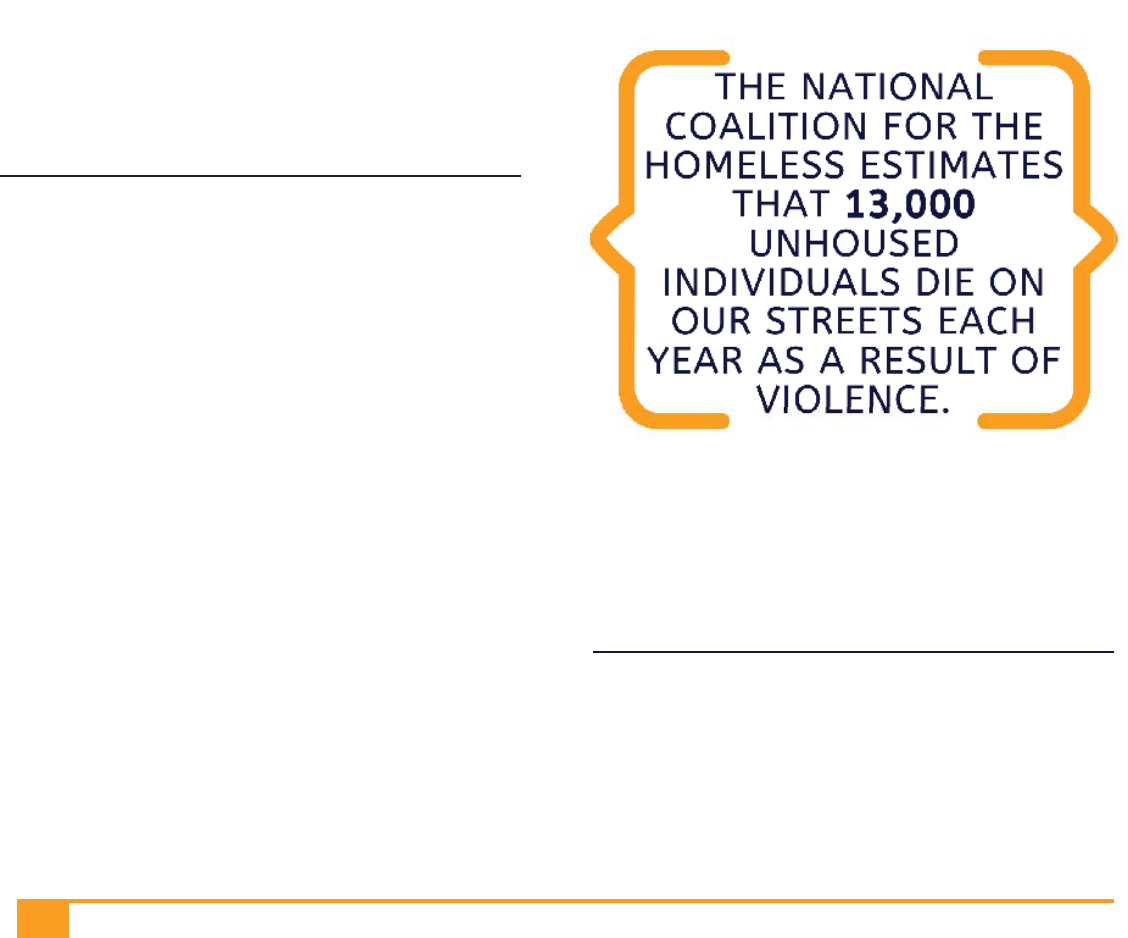
66
Criminalization Policies Increase the Risk of
Violence Against Homeless People
Research shows that enforcement of camping bans and
camp evictions heighten the risk of violent crime against
homeless people by forcing them into more secluded, less
familiar locations where they are more vulnerable.
226
A
survey of over 500 homeless people in Denver six months
after its camping ban passed showed that 66% of homeless
people moved to hidden, more dangerous areas.
227
Many homeless individuals reported being victimized in
those secluded locations,
228
and even violently attacked
following displacement caused by sweeps.
229
The National Coalition for the Homeless estimates that
13,000 unhoused individuals die on our streets each year
as a result of violence.
230
And it appears that the numbers
are going up. Nearly one-third of homicide victims in
Seattle were homeless individuals in 2018, according to the
county medical examiner—an increase in recent years.
231
In Denver, the number of reported crimes against homeless
victims in 2017 was 1008—an increase of 42% from 2013
to 2017.
232
In Los Angeles, between 2017 and 2018, Los
Angeles saw a 68% increase in the number of homeless
Critically Injured Homeless Man, WSB-TV ATLANTA (July 4, 2019, 10:03 AM),
https://www.wsbtv.com/news/local/coweta-county/dramatic-bodyc-
am-video-shows-shooting-that-critically-injured-homeless-man/963690287.
226 Samir Junejo et al, No Rest for the Weary: Why Cities Should
Embrace Homeless Encampments, HOMELESS RTS. ADVOC. PROJECT 6 (2016),
http://digitalcommons.law.seattleu.edu/hrap/4.
227 Tony Robinson, THE DENVER CAMPING BAN: A REPORT FROM THE STREET
8 (2014), available at https://denverhomelessoutloud.files.wordpress.
com/2016/03/camping-ban-report.pdf.
228 Sig Langegger & Stephen Koester, Dwelling Without a Home:
Denver’s Splintered Public Spaces, in O
RDER AND CONFLICT IN PUBLIC SPACE 140
(Mattias De Backer et al., eds., 2016).
229 Chris Herring, Complaint-Oriented Policing: Regulating Home-
lessness in Public Space, AMERICAN SOCIOLOGICAL REVIEW 23 (2019), https://
static1.squarespace.com/static/5b391e9cda02bc79baffebb9/t/5d73e-
7609b56e748f432e358/1567876975179/complaint-oriented+policing_
ASR.pdf.
230 ANNIE LEOMPORRA & MEGAN HUSTINGS, NAT’L COAL. FOR THE HOMELESS,
VULNERABLE TO HATE: A SURVEY OF BIAS-MOTIVATED VIOLENCE AGAINST PEOPLE EXPE-
RIENCING HOMELESSNESS IN 2016-2017, at 9 (2018), https://nationalhomeless.
org/wp-content/uploads/2018/12/hate-crimes-2016-17-final_for-web.
pdf.
231 Steve Kiggins, Officials: Nearly 1/3 of 2018 Seattle Homicide
Victims Were Homeless, Q13Fox (Apr. 2, 2019, 5:28 PM), https://q13fox.
com/2019/04/02/officials-nearly-1-3-of-2018-seattle-homicide-victims-
were-homeless/.
232 Tom McGhee, Crimes Against Homeless People Up 42 Per-
cent in Denver and Suburban Cops Say That’s Pushing Transients into Their
Towns, DENVER POST (Jan. 15, 2018, 7:32 AM), https://www.denverpost.
com/2018/01/14/crimes-against-homeless-people-up-42-percent-in-den-
ver-and-suburban-cops-say-thats-pushing-transients-into-their-towns/.
victims of Part I crimes, which include homicide, rape,
robbery, and aggravated assault.
233
The victimization of homeless individuals prolongs their
homelessness and causes physical and psychological
trauma.
234
Yet homeless people often do not seek help from
law enforcement when they are victimized because they
risk punishment under laws criminalizing their presence in
public space.
The dehumanization inherent in laws banishing homeless
people from public view contributes to growing vigilantism
against homeless people. Private individuals become
emboldened when homeless people are treated as outlaws,
and indeed vigilante groups often describe themselves as
enforcing the laws along with local police.
235
Despite their
lack of training and authority, civilians feel entitled to harass
and remove homeless people and their shelters from public
space under authority of laws that treat them as offenders
simply for existing.
236
The Western Regional Advocacy Project ( WRAP), the
National Coalition for the Homeless (NCH), and the Law
Center have documented complaints of vigilante activity
against homeless people on the streets and online. Vigilantes
are reported to have entered into people’s tents without
their permission or even destroy homeless people’s shelters
and property. Vigilantes may act alone as individuals, but
233 DOMINIC H. CHOI, L.A. POLICE DEP’T, 2018 4TH QUARTER REPORT ON
HOMELESSNESS 3 (2019), http://www.lapdpolicecom.lacity.org/031219/
BPC_19-0073.pdf.
234 Meinbresse et al., supra note 226, at 123.
235 See id.
236 Sara Shortt, We Don’t Need Protection from the Homeless. They
Need Protection from Us, L.A. TIMES (Oct. 15, 2018, 4:05 AM), https://www.
latimes.com/opinion/op-ed/la-oe-shortt-homeless-victims-20181015-story.
html.
py
sim
p
l
y
for existin
g
.
236
The Western Regional Advocacy Project ( WRAP), the
N ti l C liti f th H l (NCH) d th L
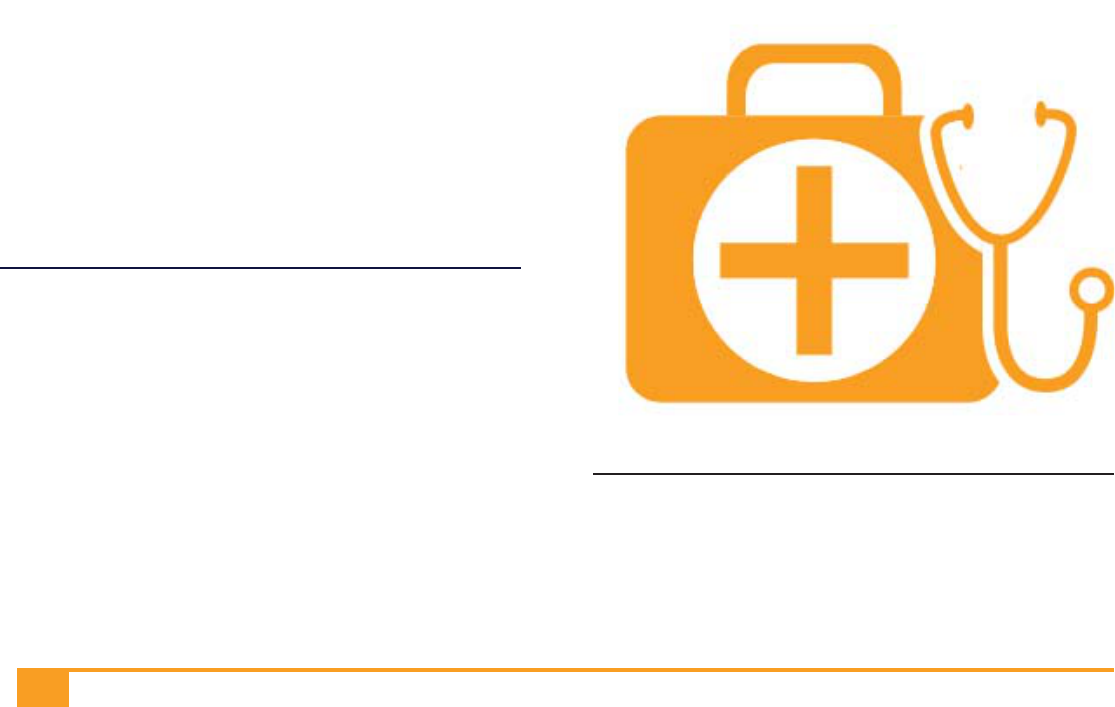
67
often they act as members of vigilante groups – sometimes
with the participation of local police. In Southern Humboldt
County, a local vigilante group known as SoHum Locals on
Patrol printed encampment eviction notices—co-branded
with the Southern Humboldt County’s Sheriff’s Offi ce—and
performed the eviction along with police.
There have also been reports of homeless individuals
being threatened at gunpoint, shot at, or even set on fi re
by civilians who believe police are not suffi ciently removing
the homeless from public space.
237
In August in Los Angeles,
a fi re started in a homeless encampment by two housed
men, including the son of a local chamber of commerce
president, resulted in two freeways being temporarily
closed down.
238
While some acts of violence are intended to cause serious
bodily harm, others are aimed at humiliating and excluding
homeless people from places where they are unwanted.
A viral video of a homeless customer having a pitcher of
water poured over his head by a Dunkin Donuts employee
is but one example.
239
Vigilantes have also used online chat forums and social
media platforms to mobilize and promote vigilante activity
against homeless people.
240
These forums are characterized
by deeply dehumanizing language discussing homeless
people, and individuals without housing are sometimes
identifi ed by name, picture, or license plate, along with
personal information about them—whether true or false.
It is common for online group members to share pictures
or videos of homeless people, taken without their consent,
sometimes featuring a confrontation initiated by the
photographer. Discussion threads are also characterized
by descriptions of homelessness as a nuisance and threat to
community safety, leading to the digital humiliation, taunting,
shaming, and derision of homeless people.
241
237 Allison Needles & Alexis Krell, ‘Into Our Own Hands.’ People Take
Aim at the Homeless, Worrying Police and Advocates, NEWS TRIBUNE (last up-
dated Mar. 24, 2019, 10:44 AM), https://www.thenewstribune.com/news/
local/article227461664.html.
238 Carla Green, ‘I Try Not to Sleep’: Vigilante Attacks on LA’s Home-
less Said to Increase, THE GUARDIAN (Oct. 4, 2019, 1:00 PM), https://www.
theguardian.com/us-news/2019/oct/03/i-try-not-to-sleep-attacks-on-
homeless-in-los-angeles-increase-over-past-year
239 Michael Gold, Dunkin’ Donuts Worker Dumps Water on Home-
less Man in Viral Video. He’s Fired., NY TIMES (Oct. 2, 2018), https://www.
nytimes.com/2018/10/02/nyregion/dunkin-donuts-homeless-man-video.
html.
240 Carla Green, ‘I Try Not to Sleep’: Vigilante Attacks on LA’s Home-
less Said to Increase, T
HE GUARDIAN (Oct. 4, 2019, 1:00 PM), https://www.
theguardian.com/us-news/2019/oct/03/i-try-not-to-sleep-attacks-on-
homeless-in-los-angeles-increase-over-past-year.
241 See e.g., Thacher Schmid, In Portland, A Neighborhood Watch
Members of law enforcement may be active participants
in or even administrators of these online groups. Local
law enforcement’s participation in these online groups
is especially harmful because their participation lends
legitimacy and authority to the egregiously anti-homeless
rhetoric and actions found on the online forums. Additionally,
local law enforcement should be the fi rst line of defense for
homeless individuals seeking reprieve from victimization.
With local law enforcement’s involvement in spaces that
facilitate anti-homeless vigilantism, homeless individuals
are unable to recognize local law enforcement as a
dependable source of protection.
CRIMINALIZATION LAWS HARM PUBLIC
HEALTH
Jurisdictions often justify punitive approaches to
homelessness as necessary to protect public health. Indeed,
many cities that limited the enforcement of their camping
bans in response to the Ninth Circuit’s ruling in Martin v.
City of Boise have nevertheless continued to prohibit tents
and outdoor encampments for purported public health
reasons. While homelessness is certainly a serious public
health concern,
242
punitive approaches to homelessness do
Group Stirs Debate Over How to Respond to the Homeless, LOS ANGELES
T
IMES (Dec. 29, 2018, 12:23 PM), https://www.latimes.com/nation/
la-na-portland-homeless-vigilantes-20181218-htmlstory.html.
242 Homelessness as a Public Health Problem, AM. PUB. HEALTH ASS’N
(Jan. 1, 1992), https://www.apha.org/policies-and-advocacy/pub-
lic-health-policy-statements/policy-database/2014/07/31/07/56/home-
lessness-as-a-public-health-problem.

68
not improve public health. To the contrary, they worsen the
health of unhoused populations and compromise general
public health.
Homelessness creates new health problems and worsens
existing ones.
243
Unhoused people have high rates of
chronic mental and physical health conditions, related
diseases and co-occurring disorders, and increased rates
of morbidity and mortality.
244
At least one study found that
the homeless population experiences diabetes and hepatitis
C at rates as much as 10 times higher as the general
population. Without access to running water, toilets, and
trash services, infectious diseases may spread. For example,
Hepatitis A outbreaks among homeless populations have
been reported from San Diego in 2017 to the Ohio Valley
in 2018, where unhoused people did not have access to
hand-washing stations or vaccinations.
245
And the homeless population experiences tuberculosis
at rates 40 times higher than the general population.
246
Homeless people also have higher rates of hypertension,
asthma, and HIV/AIDS.
247
As homeless individuals tend to
have compromised immune systems, they are at even higher
risk of contracting infectious diseases.
248
Homeless people also struggle to comply with prescribed
treatment.
249
Limits on shelter stays may interfere with one’s
243 NAT’L HEALTH CARE FOR THE HOMELESS COUNCIL, HOMELESSNESS &
HEALTH: WHAT’S THE CONNECTION? 1–2 (2019), https://www.nhchc.org/
wp-content/uploads/2019/02/homelessness-and-health.pdf.
244 Id.
245 Brett Kelman, Tennessee Hepatitis A Claims First Casualty; More
Than 440 Cases Statewide, TENNESSEAN (last updated Nov. 14, 2018,
9:03 PM), https://www.tennessean.com/story/money/2018/11/14/
tennessee-hepatitis-outbreak-claims-its-first-casualty/1999538002/; Mary
Meehan, Infection and Inequality: How the Income Gap Fuels Ohio Valley’s
Hep A Outbreak, OHIO VALLEY RESOURCE (July 27, 2018), https://ohiovalley-
resource.org/2018/07/27/infection-and-inequality-how-the-income-gap-
fuels-ohio-valleys-hep-a-outbreak/; Erica Wilson, et al., Notes from the Field:
Hepatits A Outbreak Associated with Drug Use and Homelessness, CDC
(Apr. 12, 2019), https://www.cdc.gov/mmwr/volumes/68/wr/mm6814a4.
htm.
246 Seena Fazel, MD et al., The Health of Homeless People in
High-Income Countries: Descriptive Epidemiology, Health Consequences,
and Clinical and Policy Recommendations, 384 LANCET 1529 (2014); Lillian
Gelberg et al., Prevalence, Distribution, and Correlates of Hepatitis C Virus
Infection Among Homeless Adults in Los Angeles, 127 PUB. HEALTH REP. 407
(2012), http://www.natap.org/2012/HCV/issueopen.pdf.
247 Cheryl Zlotnick & Suzanne Zerger, Survey Findings on Characteris-
tics and Health Status of Clients Treated by the Federally Funded (US) Health
Care for the Homeless Programs, 17 HEALTH & SOC. CARE IN THE COMM’Y 18
(2008).
248 Brodie Ramin & Tomislav Svoboda, Health of the Homeless and
Climate Change, 86 J. URB. HEALTH 654, 657–58 (2009).
249 Angela A. Aidala, Michael G. Wilson, Virginia Shubert, et al.,
ability to take regular medication or schedule follow up
health visits.
250
Diabetes, for example, is particularly diffi cult to manage on
the streets. Homeless people often lack a place to store
and refrigerate insulin—and without trash services, needles
may be discarded in public places. Sweeps of homeless
encampments can also deprive people of lifesaving
medications such as antibiotics or drugs to treat psychiatric
disorders or disease.
251
People without housing are fi ve times more likely to be
admitted to the hospital for physical illnesses, mental
illness, and substance abuse than other populations.
252
The
prevalence of chronic health conditions and limited ability to
treat them leaves homeless people vulnerable to repeated
hospitalizations and the overuse of emergency services. As
much as a third of homeless people are hospitalized during
a given year, and they often are served through emergency
rooms. People who experience homelessness as individuals
are more likely to have avoidable emergency room visits,
hospitalizations, and repeated stays in detox and crisis
treatment programs, and they are likely to stay longer
when they are admitted to a hospital or nursing home,
compared to people who have housing.
253
A national study
of emergency department use also showed that homeless
people are twice as likely as members of the general public
to return to emergency departments within only one week
of a hospitalization—often in an ambulance, contributing to
high treatment costs.
254
Housing Status, Medical Care, and Health Outcomes Among People Living
With HIV/AIDS: A Systematic Review, 106 AM. J. PUB. HEALTH e1 (2016).
250 Cheryl Zlotnick, Suzanne Zerger & Phyllis B. Wolfe, Health Care
for the Homeless: What We Have Learned in the Past 30 Years and What’s
Next, 103 AM. J. PUB. HEALTH S199 (2013).
251 Nuala Sawyer, Sweeps of Homeless Camps in S.F. Are Creating
a Public Health Crisis, CTR. FOR HEALTH JOURNALISM (Mar. 21, 2019), https://
www.centerforhealthjournalism.org/2019/03/14/sweeps-homeless-camps-
sf-are-creating-public-health-crisis.
252 Rebecca S. Bernstein, et al., Diabetes and Hypertension Prev-
alence in Homeless Adults in the United States: A Systematic Review and
Meta-Analysis, 105 AM. J. PUB. HEALTH e46, e47 (2015); Margot B. Kushel,
Eric Vittinghoff, Jennifer S. Haas, Factors Associated With the Health Care
Utilization of Homeless Persons, 285 J. AM. MED. 200 (2001); Sharon A. Salit
et al., Hospitalization Costs Associated with Homelessness in New York City,
338 NEW ENG. J. MED. 1734 (1998).
253 Lin WC et al., Frequent Emergency Department Visits and Hospital-
izations Among Homeless People with Medicaid: Implications for Medicaid
Expansion, 105 AM. J. PUB. HEALTH S716 (2015).
254 Margot B. Kushel, Emergency Department Use Among the Home-
less and Marginally Housed: Results From a Community-Based Study, 92
AM. J. PUB. HEALTH 778 (2002), https://www.ncbi.nlm.nih.gov/pmc/articles/
PMC1447161/pdf/0920778.pdf.

69
obesity, diabetes, hypertension, cardiovascular disease
and immune suppression. It also impairs cognitive functions,
resulting in memory loss, problems concentrating and
confusion, and compromised decision making. And chronic
sleep deprivation contributes to the much shorter life
expectancy among unsheltered people.
Unsheltered homelessness can be fatal, but stays in
emergency shelters also carry health risks. Congregate
emergency shelters expose people to communicable
disease, infestations, and parasites that are more easily
spread in crowded conditions.
262
Public health analyses
demonstrate that shelters frequently struggle with inadequate
ventilation, overcrowding, and insuffi cient procedures for
handling contagious clients.
263
According to the Center for
Disease Control, these factors contribute to the spreading
of airborne diseases such as tuberculosis and infl uenza.
264
From 2008 to 2017, there were a total of 110 outbreak-
related cases of antibiotic resistant tuberculosis in Atlanta
homeless shelters.
265
Hepatitis A, for which homeless
populations are a high-risk group, is also highly contagious
in indoor “high density living conditions.”
266
Sleep Problems with Stress and Health in Homeless, 41 AM. J. HEALTH BEHAV.
760 (2017).
262 Id.
263 Michelle Moffa et al., A Systematic Scoping Review of Environ-
mental Health Conditions and Hygiene Behaviors in Homeless Shelters, I
NT’L
J. HYGIENE & ENVTL. HEALTH, 335, 342 (2018).
264 TB in the Homeless Population, CTR. FOR DISEASE CONTROL, https://
www.cdc.gov/tb/topic/populations/homelessness/default.htm (last visited
June 20, 2019); CDC Guidance for Emergency Shelters for the 2009-2010
Flu Season, CTR. FOR DISEASE CONTROL, https://www.cdc.gov/h1n1flu/guid-
ance/emergencyshelters.htm (last visited June 20, 2019).
265 Ethan Covey, Resistant TB Outbreak Signals Need for Coordi-
nated Response, IDSE (Feb. 22, 2019), https://www.idse.net/Policy--Pub-
lic-Health/Article/02-19/Resistant-TB-Outbreak-Signals-Need-for-Coordi-
nated-Response/54194.
266 Greg McCann, Tuberculosis Remains a Public Health Concern
in Oklahoma, MIAMI NEWS-REC. (July 24, 2017, 8:20 AM), https://www.
miamiok.com/news/20170724/tuberculosis-remains-public-health-con-
cern-in-oklahoma; Preventing and Controlling Hepatitis A in Jails and Prisons,
NAT’L INST. CORRECTIONS, https://nicic.gov/preventing-and-controlling-hepati-
tis-jails-and-prisons-webinar (last visited June 28, 2019).
Exposure to the elements and inclement weather contribute
to this unhealthy and expensive cycle.
255
Exposure can
lead to serious harms, such as frostbite and amputation
of extremities, or hypothermia deaths. Frostbite leading to
amputations among homeless people in Denver increased
300% after the camping ban went into effect. Hypothermia
deaths are not limited to areas with relatively cold weather.
Sunny Los Angeles had more hypothermia deaths in 2018
than much colder New York City.
256
Hypothermia can
set in when temperatures are as high as 50 degrees.
Wet clothing (from exposure to rain, for example) can
signifi cantly intensify body heat loss,
257
as can the use of
psychiatric medications and/or alcohol.
258
Under these circumstances, it is unsurprising that the
unsheltered homeless have signifi cantly higher mortality
rates than housed people. Homeless people’s rates of
mortality are as much as 11.5 times higher than that of
the general population.
259
The National Coalition for the
Homeless has found that life expectancy for someone who
is homeless can be 20 to 30 years less than a housed
person’s life expectancy.
260
Bans on sleeping, sitting, and lying down also severely
limit the ability of homeless people to rest, leading to
chronic sleep deprivation and a host of related harms.
Sleep deprivation has been shown to induce psychosis-
like symptoms in even healthy individuals, and is linked
with poor mental health.
261
Sleeplessness is also linked to
255 Supporting a National Priority to Eliminate Homeless-
ness, AM. PUB. HEALTH ASS’N, (Jan. 1, 1997), https://www.apha.org/
policies-and-advocacy/public-health-policy-statements/policy-data-
base/2014/07/30/08/44/supporting-a-national-priority-to-elimi-
nate-homelessness.
256 Kelley Czajka, More Homeless People Are Dying of Hypothermia
in Los Angeles than in New York. Is Climate Change a Factor?, PAC. STANDARD
(Feb. 19, 2019), https://psmag.com/news/more-homeless-people-are-dy-
ing-of-hypothermia-in-los-angeles-than-in-new-york-could-climate-change-
be-to-blame.
257 Cold Exposure: Ways the Body Loses Heat, MICH. MED. (Sept. 23,
2018), https://www.uofmhealth.org/health-library/tw9037.
258 Cherryl Zonnenberg et al., Hypothermia Due to Antipsychotic
Medication: A Systematic Review, 8 FRONTIERS IN PSYCHOL. 1 (2017), https://
www.ncbi.nlm.nih.gov/pmc/articles/PMC5594062/pdf/fpsyt-08-00165.
pdf.
259 Merete Nordentoft & Nina Wandall-Holm, 10 Year Follow Up
Study of Mortality Among Users of Hostels for Homeless People in Copen-
hagen, 327 BMJ 81 (2003), https://www.ncbi.nlm.nih.gov/pmc/articles/
PMC164916/pdf/el-gp81.pdf.
260 NAT’L COAL. FOR THE HOMELESS, HEALTH CARE AND HOMELESSNESS
(2012), https://www.nationalhomeless.org/factsheets/health.html.
261 See generally Nadine Petrovsky et al., Sleep Deprivation Disrupts
Prepulse Inhibition and Induces Psychosis-Like Symptoms in Healthy Humans,
34 J. NEUROSCIENCE 9134 (2014); Lorraine Reitzel, Distress Tolerance Links
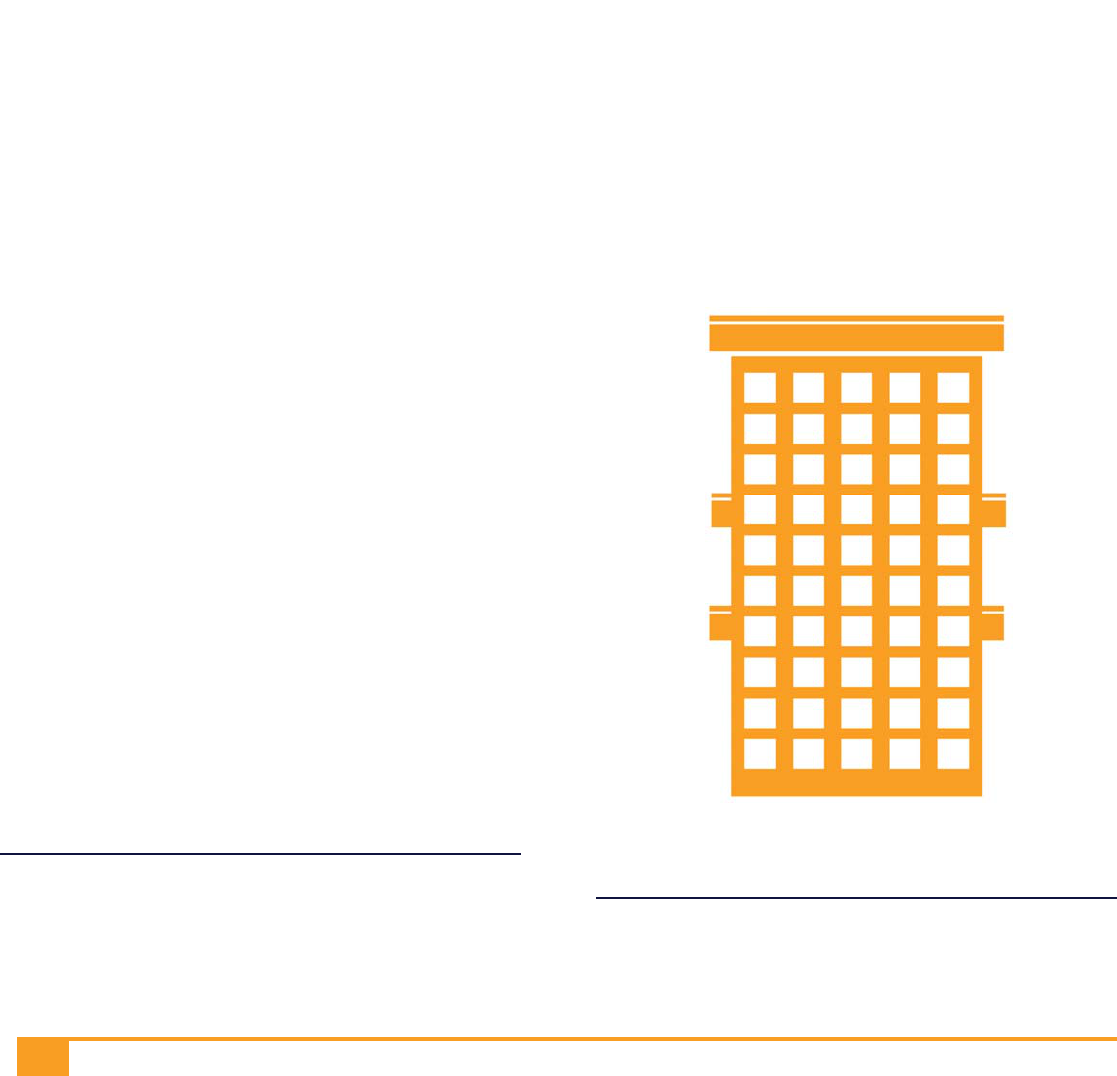
70
Those with mental health conditions may not feel safe in
emergency shelters. For example, people with schizophrenia
experience paranoia particularly in large groups of people,
and paranoia, anxiety, hallucinations, and hypervigilance
related to post-traumatic stress disorder may make it diffi cult
for people to cope with the noisy and crowded conditions
in shelters. Being surrounded by strangers at nighttime can
also induce stress in people with mental health conditions.
Substance use compounds these risks. Estimates vary,
but approximately one-third of people experiencing
homelessness are also dealing with substance use disorders
and illness related to substance use disorders.
267
For these
people, shelter may be impossible to access due to shelter
rules. If a person cannot leave a shelter to mitigate the
effects of withdrawal from alcohol or other substances, they
are unlikely to be able to safely stay in a shelter. Equally,
for people who use opioids, it is safer to do so in a setting
such as an encampment where they can be monitored by
peers who can administer naloxone if needed.
268
Indeed,
San Francisco cited 2018 encampment sweeps as partially
responsible for a rise in overdose deaths among the
homeless.
269
All of the health risks just discussed are reasons that even the
American Medical Association has now adopted offi cial
policy to:
• Support laws protecting the civil and human rights of
individuals experiencing homelessness.
• Oppose laws and policies that criminalize individuals
experiencing homelessness for carrying out life-
sustaining activities conducted in public spaces that
would otherwise be considered noncriminal activity
(i.e. eating, sitting or sleeping) when there is no
alternative private space available.
267 Laura Gillis et al., Recovery and Homeless Services: New Direc-
tions for the Field, 3 OPEN HEALTH SERVS. & POL’Y J. 71 (2010).
268 HOMELESS LINK, NALOXONE IN HOMELESSNESS SERVICES (2014), https://
www.homeless.org.uk/sites/default/files/site-attachments/Naloxone%20
in%20homelessness%20services%20April2018_0.pdf.
269 Id.
• Recognize that stable affordable housing is essential
to the health of individuals, families and communities.
• Support policies that preserve and expand affordable
housing across all neighborhoods.
270
This clear statement from the nation’s leading medical
organization undermines the case made by many
communities that criminalization policies are somehow
a necessary tool for addressing public health concerns
attending homelessness. As the AMA affi rms, the best
tool to resolve the public health problems associated with
unsheltered homelessness is housing.
270 Sara Berg, Homeless People Need More Help, Not Stays in
Jails, AM. MED. ASS’N (June 12, 2019), https://www.ama-assn.org/deliver-
ing-care/patient-support-advocacy/homeless-people-need-more-help-not-
stays-jail-ama.
The best tool to resolve
the public health problems
associated with unsheltered
homelessness is housing.

71
CRIMINALIZATION IS EXPENSIVE AND
WASTEFUL OF LIMITED PUBLIC RESOURCES
Homelessness is expensive. Chronic homelessness can cost
taxpayers some $83,000 per person per year.
271
A key
reason for this is the high cost of arresting and incarcerating
homeless people under laws that criminalize homelessness.
A comprehensive analysis of criminalization laws throughout
the state of Colorado done by the University of Denver Sturm
College of Law found that enforcement of criminalization
laws in just six Colorado cities cost cities at least fi ve million
dollars over a fi ve-year period.
272
Unhoused people are arrested at disproportionate
rates across the country, and they are as much as 11
times more likely than housed people to be jailed.
273
This
disproportionality is evident in local data. 2017 data from
Portland, Oregon revealed that over half of all people
arrested were people experiencing homelessness.
274
One
in fi ve people booked into jail in Seattle, Washington are
homeless.
275
Jails are also expensive. According to research by the
Vera Institute, the average cost of incarcerating a single
individual is $47,057 each year.
276
For these individuals,
even a week in jail could cost the equivalent of a studio
apartment for a month or more.
Yet, in many cases, the cost of punitive approaches to
homelessness are not considered at all. Some cities even
claim that proposed criminalization measures will have
no fi scal impact, yet the truth is that the public costs of
criminalization policies and practices are staggering. City
271 Lavena Staten & Sara Rankin, Penny Wise But Pound Foolish: How
Permanent Supportive Housing Can Prevent a World of Hurt (2019), avail-
able at https://papers.ssrn.com/sol3/papers.cfm?abstract_id=3419187.
272 Nantiya Ruan, Too High a Price: What Criminalizing Homelessness
Costs Colorado (2018), available at https://papers.ssrn.com/sol3/papers.
cfm?abstract_id=3169929.
273 Sara Rankin, Punishing Homelessness, 22 N
EW CRIMINAL LAW REVIEW
99 (2019), available at https://papers.ssrn.com/sol3/papers.cfm?abstract_
id=3410627.
274 Rebecca Woolington & Melissa Lewis, Portland Homeless
Accounted for Majority of Police Arrests in 2017, Analysis Finds, OREGON LIVE
(June 27, 2018, last updated Jan. 30, 2019), https://www.oregonlive.com/
portland/2018/06/portland_homeless_accounted_fo.html.
275 David Kroman, In Seattle, 1 in 5 People Booked Into Jail are
Homeless, CROSSCUT (Feb. 19, 2019), https://crosscut.com/2019/02/seat-
tle-1-5-people-booked-jail-are-homeless.
276 Christian Henrichson et al., The Price of Jails: Measuring the Tax-
payer Cost of Local Incarceration, VERA https://www.vera.org/publications/
the-price-of-jails-measuring-the-taxpayer-cost-of-local-incarceration.
data from Los Angeles, California, for example, found that
the city spends $100 million annually on homelessness, with
$87 million of that amount devoted to law enforcement,
leaving only $13 million for housing and services in the
city with the largest unsheltered homeless population in the
country.
277
A 2019 study of Santa Clara County, California
– the heart of the nation’s tech industry - estimated that 34%
of $520 million it spent on homelessness each year from
2007 to 2012 were for criminal justice related expenditures,
like probation, custody mental health care, and jail/court
costs.
278
Nearly half of those public service costs were
associated with only 5% of the homeless population.
279
In
comparison, social service programs constituted only 13%
of the total spent.
280
This problem is not limited to California;
it is true in all parts of the country. Salt Lake City, for example,
spends 85% of its homeless services budget on policing.
281
Indeed, Utah’s Operation Rio Grande – a large scale
homeless arrest campaign – cost a whopping $67 million,
which is nearly 500% more than what Salt Lake City spends
on emergency shelters and soup kitchens combined each
year.
282
Even when a person is not arrested, the costs of punitive
approaches to homelessness are massive. Sweeps drain
millions of dollars from governments across the country
each year. Los Angeles, for example, spends over $30
million per year on sweeps. These policies are not only
harmful; they are counterproductive and only increase
the costs of homelessness. Because there are too few
places for displaced people to go, sweeps achieve only
temporary clearing of one public space with an inevitable
move to another which will, in turn, need to be cleaned. The
cycle repeats in a downward spiral, expending resources
for no long-term gain, and, in fact, leaving many homeless
persons worse off for having lost their personal property,
as well as potentially a better location for privacy, quiet,
access to services, or safety, in the course of the sweep.
277 Gale Holland, L.A. Spends $100 Million a Year on Homelessness,
City Report Finds, L.A. TIMES (Apr. 16, 2015), https://www.latimes.com/lo-
cal/lanow/la-me-ln-homeless-cao-report-20150416-story.html.
278 B
AY AREA ECON. INST., supra note 29, at 17.
279 Id.
280 Id.
281 Nina Golgowski & Michael Hobbes, America’s Homeless Crisis
is Inspiring New Acts of Cruelty, HUFFPOST (Oct. 2, 2019, 8:00 AM), https://
www.huffpost.com/entry/cruel-ways-homeless-punished_n_5d35ee4ee4b-
004b6adb3cc7d.
282 Id.

72
The Solution is Cheaper Than the Problem
In comparison, housing unhoused people works to end
homelessness and also saves money. Indeed, investments
in permanent supportive housing have reduced chronic
homelessness by 26% since 2007.
283
Permanent supportive
housing keeps people off of the streets over the long term,
284
and reduces formerly homeless people’s involvement with
costly health care and criminal justice systems.
285
This not only produces signifi cant and enduring results for
homeless people, but it also helps to reduce public costs
associated with living without housing. Indeed, a 2019
report from the Homeless Rights Advocacy Project at Seattle
University School of Law found that permanent supportive
housing always results in gross savings when provided to
people experiencing chronic homelessness.
286
And, these
savings increase over time.
A growing body of research comparing the cost of
homelessness--including the cost of criminalization--with
the cost of providing housing to homeless people shows
that ending homelessness though housing is the most
affordable option over the long run. Indeed, the provision
of housing using a Housing First model, which focuses on
providing people with quick access to housing and any
needed services to maintain housing stability, is cheaper
and achieves better outcomes than all other strategies for
addressing homelessness. Each person housed is one less
who needs to make their home on the streets, reducing the
visible impacts of homelessness that housed residents and
business owners complain to their elected offi cials about.
Housing is a win for housed and unhoused persons alike.
The following are brief summaries of studies demonstrating
the cost ineffectiveness of criminalization approaches as
compared with housing solutions to homelessness:
• A study of Housing For Health, a division of the Los
Angeles County Department of Health Services that
provides supportive housing, evaluated participant
283 Permanent Supportive Housing, NATIONAL ALLIANCE TO END HOME-
LESSNESS, https://endhomelessness.org/ending-homelessness/solutions/
permanent-supportive-housing/ (last updated Jan. 2019).
284 PSH residents show housing retention rates of up to 96%. See
Lavena Staten & Sara Rankin, Penny Wise But Pound Foolish: How Permanent
Supportive Housing Can Prevent a World of Hurt (2019), available at
https://papers.ssrn.com/sol3/papers.cfm?abstract_id=3419187.
285 Id.
286 Id.
outcomes between 2012 and 2015. They found that
its Permanent Supportive Housing program not only
saved over $6.5 million dollars by the second year
of its implementation, but it also achieved a number
of other benefi ts, including reducing emergency room
visits by 70%. Nearly all of the program’s participants
(96%) remained stably housed.
287
• A 2015 report on permanent supportive housing
in Massachusetts showed that it is not only more
effective at ending homelessness and improving
formerly homeless persons’ life and health quality, but
it also is cost effective. Specifi cally, the report found
that Massachusetts saved an average of $9,339 per
formerly homeless person.
288
• A study of chronically homeless individuals in Seattle,
Washington, found that costs decreased by 60%
per individual after one year in housing—even after
factoring in the cost of providing housing and supportive
services. Researchers found that, “permanent, rather
than temporary housing may be necessary to fully
realize these cost savings, because benefi ts continued
to accrue the longer these individuals were housed.”
289
• A 2014 analysis by Creative Housing Solutions
evaluated the cost of homelessness in Central Florida
at $31,000 per year for law enforcement and
medical costs for each chronically homeless person;
permanent housing and case managers would cost
approximately $10,000 per year, saving $21,000
per year per individual housed, and collectively $149
million over the next decade.
290
• A cost benefi t analysis of the Albuquerque Heading
Home Initiative found that housing participants saved
an average of about $14,700 per person. When
that average is applied to the total number of eligible
participants in the program, the study shows Heading
287 SARAH B. HUNTER ET AL., RAND EVALUATION OF HOUSING FOR HEALTH
PERMANENT SUPPORTIVE HOUSING PROGRAM (2017), https://www.rand.org/
pubs/research_reports/RR1694.html.
288 MASS .HOUSING & SHELTER ALLIANCE, PERM. SUPPORTIVE HOUSING: A
SOLUTION DRIVEN MODEL, (Jan. 2015),http://www.mhsa.net/sites/default/
files/January%202015%20HHG%20Report.pdf.
289 MARY E. LARIMER, PHD; DANIEL K. MALONE, MPH; MICHELLE D. GARNER,
MSW, PHD, HEALTH CARE & PUBLIC SERVICE USE & COSTS BEFORE & AFTER PROVISION
OF HOUSING FOR CHRONICALLY HOMELESS PERSONS WITH SEVERE ALCOHOL
PROBLEMS, THE JAMA NETWORK, (Apr. 1, 2009), http://jamanetwork.com/
journals/jama/fullarticle/183666.
290 GREGORY A. SHINN, THE COST OF LONG-TERM HOMELESSNESS IN CEN-
TRAL FLORIDA: THE CURRENT CRISIS & THE COST OF PROVIDING SUSTAINABLE HOUSING
SOLUTIONS, (2014), http://shnny.org/uploads/Florida-Homelessness-Re-
port-2014.pdf.

73
Home resulted in a two to three-year savings of nearly
$5 million.
291
• A study by the University of North Carolina of
permanent supportive housing in Charlotte, North
Carolina found that providing just 85 units to homeless
residents saved taxpayers nearly $2 million dollars in
the fi rst year alone. The benefi ts of housing included a
78% reduction in the number of arrests and nearly 450
fewer emergency room visits.
292
COST SAVINGS ASSOCIATED WITH HOUSING
ARE GROSSLY UNDERESTIMATED
Most studies focus on only one or a few direct cost drivers
associated with chronic homelessness, and thus grossly
underestimate the actual cost benefi t of housing, not
handcuffs.
293
These studies, for example, do not account
for public resources wasted on sweeping encampments or
in deploying police to order unhoused people to “move
along” from public space. Moreover, these studies do not
evaluate the signifi cant psychological and physical health
impacts of homelessness.
Housing Saves Money by Improving
Physical and Mental Health
Living without housing is stressful on minds and bodies,
and it can create or exacerbate serious health conditions.
Homeless people are fi ve times more likely to visit an
emergency room and be admitted to a hospital than
housed people,
294
and also to stay hospitalized for longer
periods of time.
295
291 PAUL GUERIN & ANNE MINSSEN, CITY OF ALBUQUERQUE HEADING HOME
INITIATIVE COST STUDY REPORT FINAL, UNIVERSITY OF NEW MEXICO INSTITUTE FOR SOCIAL
RESEARCH (2016), http://isr.unm.edu/reports/2016/city-of-albuquerque-
heading-home-initiative-cost-study-report-final.pdf.
292 Scott Keyes, It Saves Millions to Simply Give Homeless People a
Place to Live, THINK PROGRESS (Mar. 24, 2014, 5:09 PM), https://thinkprog-
ress.org/it-saves-millions-to-simply-give-homeless-people-a-place-to-live-
e18ddbc1146d/.
293 Lavena Staten & Sara Rankin, Penny Wise But Pound Foolish: How
Permanent Supportive Housing Can Prevent a World of Hurt (2019), avail-
able at https://papers.ssrn.com/sol3/papers.cfm?abstract_id=3419187.
294 Rebecca S. Bernstein, et al., Diabetes and Hypertension Prev-
alence in Homeless Adults in the United States: A Systematic Review and
Meta-Analysis, 105 AM. J. PUB. HEALTH e46, e47 (2015); Margot B. Kushel,
Eric Vittinghoff, Jennifer S. Haas, Factors Associated With the Health Care
Utilization of Homeless Persons, 285 J. AM. MED. 200 (2001); Sharon A. Salit
et al., Hospitalization Costs Associated with Homelessness in New York City,
338 NEW ENG. J. MED. 1734 (1998).
295 Lin WC et al., Frequent Emergency Department Visits and Hospital-
In contrast, permanent housing with supportive services
protects and even improves mental and physical health,
reducing a person’s reliance on expensive hospital visits or
other medical treatment. Research shows that housing can
decrease emergency room visits by up to 81%, and also
reduce visits resulting in inpatient admissions by as much as
61%.
296
Housing also shortens the length of time someone
stays in a hospital, including psychiatric hospitalizations. A
study of 163 formerly chronically homeless people found
that permanent supportive housing reduced the cost of
psychiatric hospitalizations by 79% in just six months.
297
For these and other reasons, the American Medical
Association (“AMA”) recently passed a resolution stating
that it “(1) supports laws protecting the civil and human
rights of individuals experiencing homelessness and (2)
opposes laws and policies that criminalize individuals
experiencing homelessness for carrying out life-sustaining
activities conducted in public spaces that would otherwise
be considered non-criminal activity.”
298
The AMA further
noted that “While there are instances where the government
needs to act to protect public health and safety, such
as during an infectious disease outbreak, governments
should work to mitigate hazards and direct individuals to
resources and services outside of the criminal justice system.
Criminal sanctions should be a last resort.”
299
Rather, the
AMA recognizes that “stable, affordable housing as a fi rst
priority, without mandated therapy or services compliance,
is effective in improving housing stability and quality of life
among individuals who are chronically-homeless.”
300
Similarly, the American Public Health Association issued a
policy statement on Housing and Homelessness as a Public
Health Issue in 2017, stating, “criminalization measures
in effect across the United States that target activities
associated with homelessness are not only ineffective in
reducing homelessness and costly to enforce but serve as
izations Among Homeless People with Medicaid: Implications for Medicaid
Expansion, 105 AM. J. PUB. HEALTH S716 (2015).
296 Lavena Staten & Sara Rankin, Penny Wise But Pound Foolish: How
Permanent Supportive Housing Can Prevent a World of Hurt (2019), avail-
able at https://papers.ssrn.com/sol3/papers.cfm?abstract_id=3419187.
297 MELANY MONDELLO ET AL., MAINE HOUSING, COST OF RURAL HOME-
LESSNESS: RURAL PERMANENT SUPPORTIVE HOUSING 14 (2009), https://www.
mainehousing.org/docs/default-source/housing-reports/cost-of-rural-home-
lessness-5-2009.pdf?sfvrsn=af65d015_7.
298 Report of the Board of Trustees: Opposition to Measures that
Criminalize Homelessness (Resolution 410-A-18), AM. MED. ASS’N (2019),
https://www.ama-assn.org/system/files/2019-04/a19-bot28.pdf.
299 Id.
300 Id.
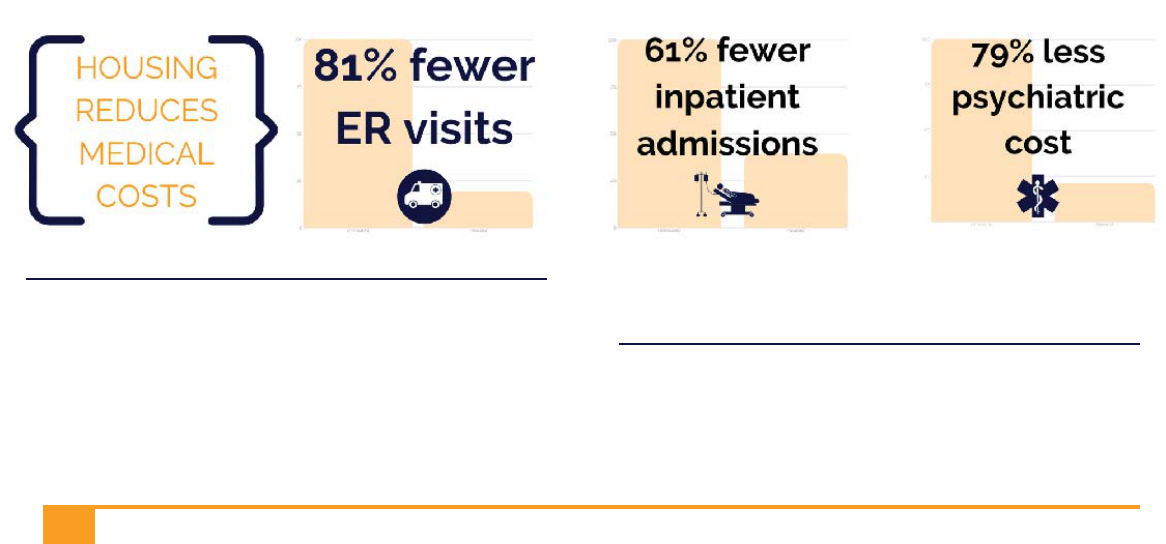
74
a barrier to income and housing stability.”
301
The statement
instead calls for evidence-based strategies to address
homelessness, including Housing First strategies to reduce
homelessness and increased funding for housing subsidies
and income supports to prevent and end it. Nowhere does
the statement indicate that criminalization measures are
needed to support public health, and indeed, it says:
[I]t is critical for communities in the United States to
adopt constructive alternatives to criminalizing basic life-
sustaining activities that individuals must perform in public
spaces if there is no shelter or housing available. The
housing-focused solutions detailed above are critical to
reducing the behaviors that these laws are designed to
deter. Individuals and families who have a safe, permanent
place to live will no longer need to sleep in public or be
targeted as loitering. However, while pursuing housing
is the ultimate goal, decriminalizing the life-sustaining
behaviors of people experiencing homelessness and
recognizing their fundamental human rights are essential.
Money spent on enforcement of these laws could instead
be spent on developing affordable housing options,
reinvesting in community services for homeless citizens, or
establishing street outreach teams to increase engagement
in services.
302
Finally, it “calls upon federal, state, and local agencies
to identify and adopt alternative solutions to criminalizing
homelessness, including adoption of a homeless bill of
rights.”
303
With the support of the two major national public
health organizations, it is clear that public health arguments
weigh against criminalization, rather than for it.
301 Housing and Homelessness as a Public Health Issue, AM. PUB.
HEALTH ASS’N (2017), https://apha.org/policies-and-advocacy/pub-
lic-health-policy-statements/policy-database/2018/01/18/housing-and-
homelessness-as-a-public-health-issue.
302 Report of the Board of Trustees: Opposition to Measures that
Criminalize Homelessness (Resolution 410-A-18), AM. MED. ASS’N (2019),
https://www.ama-assn.org/system/files/2019-04/a19-bot28.pdf.
303 Id.
Criminalization Policies Threaten Federal
Funding for Homeless Services
To encourage communities to invest in proven solutions
for ending homelessness, the Department of Housing
and Urban Development (HUD) created incentives for
communities to stop criminalizing homelessness through its
annual Continuum of Care (CoC) Program Competition,
which awards more than $2 billion in federal funds for
homeless housing and services each year.
304
This funding
is the single largest source of federal funding for local
communities to respond to homelessness, and funding
levels are determined through a competitive grant process.
In 2015, following years of advocacy by the Law Center
and its partners, HUD added Question 1-C6 which asks
about the applicant CoC’s efforts to end and prevent the
criminalization of homelessness in their geographic area.
It is scored on a two-point scale and can signifi cantly
affect the amount that grantees are awarded. As a result
of this funding incentive, CoCs reporting engagement and
education of local policy makers increased by 10.3% and of
law enforcement by 4.9%. CoCs reporting implementation
of community plans increased by 11.9%. Critically, the
number of CoCs reporting no strategies to prevent the
criminalization of homelessness reduced signifi cantly, from
nine to only one.
305
With state and local budgets stretched to their limit,
rational, cost-effective policies are needed – not ineffective
measures that waste precious taxpayer dollars.
304 NAT’L L. CTR. ON HOMELESSNESS & POVERTY, SCORING POINTS:
HOW ENDING THE CRIMINALIZATION OF HOMELESSNESS CAN INCREASE HUD
FUNDING TO YOUR COMMUNITY (2018), https://nlchp.org/wp-content/up-
loads/2018/10/NOFAtoolkit2018.pdf.
305 Id.

75
H
omeless individuals and service providers have
brought various legal challenges to municipal
ordinances or statutes that criminalize homelessness
in federal and state courts. The ultimate goal of litigation
against criminalization ordinances is not to protect the right
of people to live on the streets. Human beings deserve
and have a human right to housing. The aim of litigation is
rather to stop communities from using harmful, ineffective,
expensive ordinances that violate homeless people’s basic
human and constitutional rights so that sensible, humane, and
lawful policies can be pursued. Indeed, smart community
leaders should not view these constitutional decisions as
limitations on what they can do, but rather as an opportunity
to help mobilize public opinion to support the best-practice
solutions outlined elsewhere in this report that will truly solve
the issue of homelessness.
This section includes a brief discussion of some successful
legal challenges to common criminalization policies.
For a more detailed discussion of claims to challenge
criminalization policies and practices, please see our
report, Housing Not Handcuffs: A Litigation Manual, which
also includes summaries of relevant case law organized by
topic and federal circuit.
306
CHALLENGING CAMPING AND SLEEPING
BANS AND SWEEPS
Right to be Free from Cruel & Unusual
Punishment
Lawsuits challenging enforcement of camping bans against
homeless people who have no other options for shelter
have increased in recent years, and many have been
successful. Some courts have found that the criminalization
of necessary, life- sustaining activities such as sitting,
lying down, or sleeping in public, when done by people
involuntarily living outside, constitutes cruel and unusual
punishment under the Eighth Amendment.
306 NAT’L L. CTR. ON HOMELESSNESS & POVERTY, HOUSING NOT HAND-
CUFFS: A LITIGATION MANUAL (2018), https://nlchp.org/wp-content/up-
loads/2018/10/Housing-Not-Handcuffs-Litigation-Manual.pdf.
ILLEGAL POLICIES
POLICIES CRIMINALIZING
HOMELESSNESS ARE OFTEN ILLEGAL
Justin Sullivan

76
While the Martin decision has received signifi cant attention,
it is not the only decision recently issued by a federal
circuit court affi rming that the Eighth Amendment forbids
criminalizing acts inseparable from status. The U.S. Court
of Appeals for the Fourth Circuit similarly ruled in Manning
v. Caldwell that a Commonwealth of Virginia “habitual
drunkard” law was unconstitutionally applied to homeless
alcoholics because it criminalized an “involuntary symptom
of a status” in violation of the Eighth Amendment. While
Virginia’s law differs signifi cantly from Boise’s camping ban,
both punish involuntary conduct by people with no choice
but to live outside. Indeed, the Fourth Circuit explicitly noted
its agreement with the rationale in Martin in footnote 17.
314
The resolution of two recent cases in California highlight
how decisions like Martin can help to establish a fairer
approach to unsheltered homelessness. In Vannucci v.
County of Sonoma, plaintiffs sought relief from the closure
of a homeless encampment in Santa Rosa, California.
315
The
parties stipulated to a preliminary injunction, in effect until
June 30, 2020.
316
Included within the injunction is a limitation
against enforcing laws restricting camping against people
experiencing homelessness without fi rst offering them an
opportunity to be placed in adequate shelter or, if shelter
is refused, providing them with a reasonable opportunity to
relocate. Moreover, the injunction requires the establishment
of an operational grievance process allowing people to
contest the suitability of their shelter placement and/or the
reasonable accommodations that they were provided.
317
Similarly, a joint settlement agreement in Orange County
Catholic Worker v. the County of Orange
318
and Ramirez
v. County of Orange
319
limits anti-camping and loitering
enforcement against homeless people until cities within
Orange County establish suffi cient shelter space to meet
their needs. The offered shelter beds must be available within
the same zone of the county as where the person subject
to enforcement lives, and the offers must be appropriate to
the individual’s medical needs. The settlement also sets forth
countywide standards for shelters, including a grievance
process. “This is an exemplary document that the governor
314 Manning v. Caldwell, 930 F.3d 264 (4th Cir. 2019).
315 Vannucci v. County of Sonoma, Case No. 18-cv-01955-VC (N.D.
Ca. March 2018).
316 Vannucci v. County of Sonoma, Case No. 18-cv-01955-VC (N.D.
Ca. Jul. 12, 2019).
317 Id.
318 Settlement Agreement (July 2019), available at https://scng-dash.
digitalfirstmedia.com/wp-content/uploads/2019/07/Catholic-Work-
er-Ramirez-Settlement-with-Orange-County.pdf.
319 Id.
The Eighth Amendment states that “[e]xcessive bail shall
not be required, nor excessive fi nes imposed, nor cruel
and unusual punishments infl icted.”
307
The Supreme Court
has interpreted the Eighth Amendment to, among other
limitations, “[impose] substantive limits on what can be
made criminal and punished as such.”
308
In Robinson
v. California, the Supreme Court held that this limitation
includes a prohibition against criminalizing a person’s
status.
309
Subsequently, in Powell v. Texas, fi ve Justices, in
two separate writings, agreed that the Eighth Amendment
also imposes limits on the State’s ability to criminalize
conduct inseparable from an individual’s status.
310
Building
upon this precedent, multiple lower courts – including
multiple federal circuit courts – have found that the Eighth
Amendment is violated when governments impose criminal
punishments on people for engaging in involuntary conduct
that is inextricably linked to their homeless status.
311
In September 2018, the U.S. Court of Appeals for the Ninth
Circuit ruled in Martin v. City of Boise that that “the Eighth
Amendment prohibits the imposition of criminal penalties
for sitting, sleeping, or lying outside on public property for
homeless individuals who cannot obtain shelter….As long
as there is no option of sleeping indoors, the government
cannot criminalize indigent, homeless people for sleeping
outdoors, on public property, on the false premise they had
a choice in the matter.”
312
The City of Boise petitioned the
Ninth Circuit for en banc review, which was denied in April
2019. In denying Boise’s petition for rehearing en banc,
the panel amended its opinion fi led in September 2018,
emphasizing again its holding that, “municipal ordinances
that criminalize sleeping, sitting, or lying in all public spaces,
when no alternative sleeping space is available, violate the
Eighth Amendment.”
313
307 U.S. Const. Amend. VIII.
308 Ingraham v. Wright, 430 U.S. 651, 667 (1977).
309 Robinson v. California, 370 U.S. 660, 667 (1962) (criminalizing
the status of being addicted to drugs violates the Eighth Amendment).
310 Powell v. Texas, 392 U.S. 514 (1968).
311 See e.g. Pottinger v. City of Miami, 810 F. Supp. 1551 (S.D. Fla.
1992)(“As long as the homeless plaintiffs do not have a single place where
they can lawfully be, the challenged ordinances, as applied to them, effective-
ly punish them for something for which they may not be convicted under the
Eighth Amendment—sleeping, eating and other innocent conduct.”); Johnson
v. City of Dallas, 860 F. Supp. 344, 350 (N.D. Tex. 994), rev’d on other
grounds, 61 F.3d 442 (5th Cir. 1995) (“Because being does not exist without
sleeping, criminalizing the latter necessarily punishes the homeless for their sta-
tus as homeless, a status forcing them to be in public.”); Manning v. Caldwell,
930 F.3d 264, 283 (4th Cir. 2019)(Plaintiffs stated an Eighth Amendment
claim by alleging that a statutory scheme criminalizing possession of alcohol
by individuals for whom that conduct is “an involuntary manifestation of their
illness” and is, and that [wa]s otherwise legal for the general population.”
312 Martin v. City of Boise, 902 F.3d 1031, 1048 (9th Cir. 2018).
313 Martin v. City of Boise, 920 F.3d 584, 589 (9th Cir. 2019).

77
[of California] should know about,” stated presiding Judge
Carter. “It’s a role model for the state. It’s a role model
nationally.”
320
In addition to these positive case law outcomes, a growing
number of cities have stopped enforcement of their camping
bans against their homeless residents in response to Martin.
321
Unfortunately, that step forward has not meant the end of
criminalization of homeless persons’ resting activities. Some
cities, while refraining from camping ban enforcement,
have increased other enforcement activity against homeless
people. After the Martin ruling, for example, Sacramento,
California, stopped enforcement of its camping ban on
nights when emergency shelter is not available – a nightly
occurrence given that there are approximately 3,000
homeless people in the area and approximately shelter
700 beds. Yet, punishment of homelessness has increased
under other laws targeting related behavior.
322
Between
September 2018 and February 2019, the average number
of citations for infractions related to building structures or
tying ropes to trees (an activity associated with erecting
a temporary structure) have increased over a thousand
percent, according to ranger reports.
323
These citations
cost between $50 and $480 per violation.
324
Adding to its
punitive approach to homelessness, the City of Sacramento
fi led a lawsuit against seven homeless individuals seeking to
exclude them from a large section of the city on the argument
that their mere presence in public space constitutes a public
nuisance.
325
320 Nick Gerda, Homeless Settlement Limits South County An-
ti-Camping Enforcement, VOICE OF OC (July 23, 2019), https://voiceofoc.
org/2019/07/homeless-settlement-limits-south-county-anti-camping-en-
forcement/?utm_source=Voice+of+OC+Email+Newsletters&utm_cam-
paign=92f04aaa87.
321 Cites that have either repealed or amended ordinances, modified
policies or practices, and/or increased constructive approaches in response
to Martin, as gathered from public news sources includes: Aberdeen, WA,
Austin, TX, Berkeley, CA, Buena Park, CA, Costa Mesa, CA, Crescent City/
Del Norte County, CA, Englewood, CO, Eureka, CA, Grand Junction, CO,
Harrisonburg, VA, Honolulu, HI, Lacey, WA, Los Angeles, CA, Marysville/
Yuba County, CA, Minneapolis, MN, Modesto, CA, Moses Lake, WA,
Nevada County, NV, Oakland, CA, Orange County, CA, Olympia, WA,
Portland, OR, Redding, CA, Roseburg, OR, Sacramento, CA, San Clemente,
CA, San Francisco, CA, Santa Ana, CA, Santa Cruz, CA, Sutter County, CA,
Tacoma, WA, Thousand Oaks, CA, Turlock, CA, Ukiah, CA, and Visalia, CA.
The appearance of a city on this list does not indicate our opinion that the
modification is Martin-compliant.
322 Alexandra Yoon-Hendricks, Citations Soar for Homeless on Amer-
ican River Parkway After Ruling Halts Bans on Camping, THE SACRAMENTO BEE
(Apr. 7, 2019, 2:30 AM), https://www.sacbee.com/news/local/homeless/
article228738554.html.
323 Id.
324 Id.
325 Sacramento v. Conner et al., No. 34-2019-00262525 (Cal.
Cities’ mixed response to precedent like Martin demonstrates
the power of litigation to address criminalization measures,
but it also highlights the pervasive nature of criminalization
policies and the broad power of government to pursue
such strategies even when litigation against it is successful.
Property Rights and Due Process
Cities and other governments perform evictions of homeless
encampments, often called “sweeps” or “clean-ups”, in
areas where homeless individuals sleep, rest, and store
belongings. It is common for these evictions to result in
the loss of homeless persons’ valuable property – often
upon little to no notice. During sweeps, police or city
workers may confi scate and destroy belongings, including
unabandoned belongings that property owners rely upon
for survival, such as camping gear, warm clothing, or even
medication and medical equipment. Moreover, sweeps
can result in the loss of critical legal documents, such as birth
certifi cates and social security cards, that are necessary to
prove identity and to secure employment, public benefi ts,
and even the very housing that a person needs to escape
life on the streets.
The lack of policies to guide encampment evictions, and
the resulting loss of homeless persons camping gear and
other personal property, raise serious legal concerns
under the Fourth and Fourteenth Amendments to the U.S.
Constitution. The Fourth Amendment protects “[t]he right of
the people to be secure in their persons, houses, papers,
and effects, from unreasonable searches and seizures.”
326
Courts have recognized that homeless people have
a protected possessory interest in their property, and
unreasonable interference with this protected property
interest, such as through seizure and destruction of property
during encampment sweeps, may violate the Fourth
Amendment. In Lavan v. City of Los Angeles, for example,
the Ninth Circuit upheld a district court order restraining
the city from summarily destroying personal possession
temporarily left on Skid Row sidewalks.
327
Important to the
decision, plaintiffs were able to establish with specifi city the
importance of items lost, such as identifi cation documents,
medical supplies, and irreplaceable mementos.
2019).
326 U.S. Const. Amend. IV.
327 Lavan v. City of L.A., 693 F.3d 1022 (9th Cir. 2012).
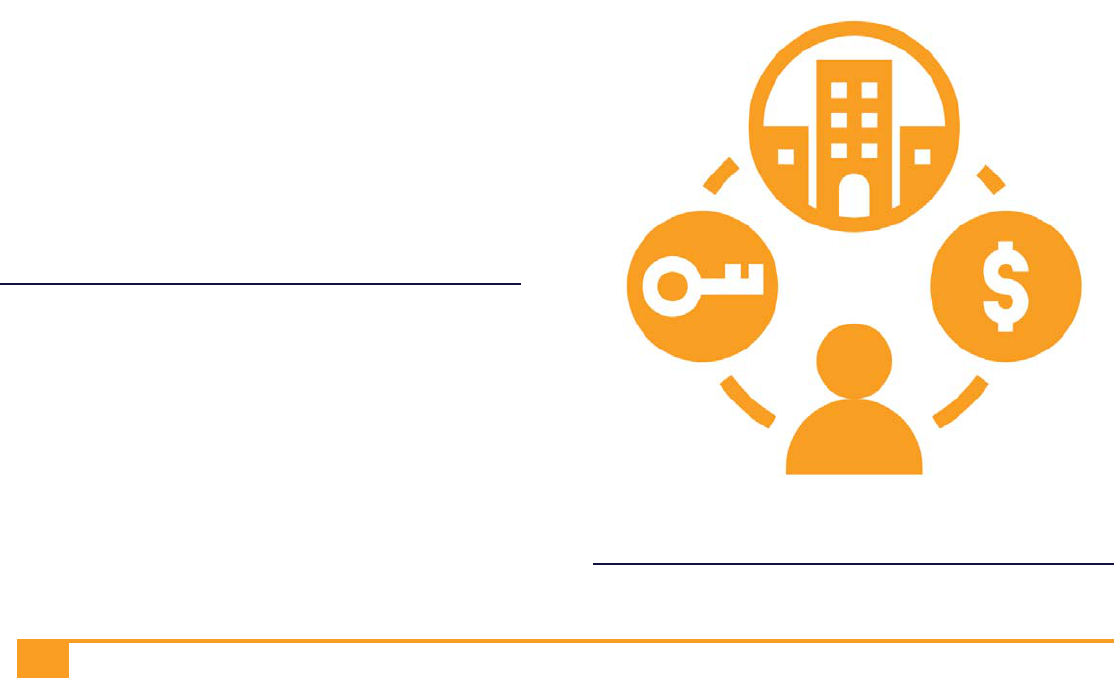
78
With respect to searches of property, some courts have
found that homeless people enjoy a right under the Fourth
Amendment or analogous state constitutional provisions
to privacy in their tents and/or temporary shelters,
328
and
in their belongings.
329
In determining whether a search of
homeless persons’ property is unreasonable, courts have
considered a number of factors, including whether the
property is located in an area where a person is legally
permitted to camp.
330
Sweeps are often done with little to no advance notice,
nor any opportunity for people living outside to contest
the destruction or trashing of their personal property.
331
The
Fourteenth Amendment to the U.S. Constitution prohibits a
state from depriving “any person of … property, without due
process of law.”
332
Due process requires , at minimum, notice
and an opportunity to be heard before fi nal deprivation
of a property interest. Notice is important as it provides
people with the opportunity to plan and make alternative
arrangements for where they will live and store property. It
also helps people to maintain connections to employment,
education, health care, child care, and case management
services.
The lack of due process has been successfully challenged
in litigation, and has even resulted in positive changes in
statutory law. In January 2016, for example, the City of
Charleston, West Virginia, ordered the dismantling of an
encampment known as “Tent City” without prior notice to
the homeless residents living there.
333
Six months later, the
residents, with assistance from Mountain State Justice,
Inc., fi led a lawsuit against the Mayor of Charleston, the
City of Charleston, and the Charleston Police Department,
alleging search and seizure violations as well as violations
of procedural and substantive due process.
334
Less than six
months after the lawsuit was fi led, as a result of settlement
discussions among the parties, the City Council enacted the
328 See, e.g., State v. Pippin, 200 Wn. App. 826, 841, 403 P.3d 907,
915 (2017) (holding warrantless search of homeless person’s tent unconsti-
tutional); State v. Wyatt, 187 Wn. App. 1004 (2015) (unpublished opinion)
(same).
329 Pottinger v. City of Miami, 810 F. Supp. 1551 (S.D. Fla. 1992).
330 See e.g., U.S. v. Sandoval, 200 F.3d 659, 661 (9th Cir. 2000).
331 TENT CITY, USA, supra note 12.
332 U.S. Const. Amend. XIV.
333 Erin Beck and Elaina Slauber, Charleston Mayor Orders “Tent
City” Dismantled, CHARLESTON GAZETTE-MAIL, (Jan. 19, 2016), https://www.
wvgazettemail.com/news/charleston-mayor-orders-tent-city-dismantled/
article_b764d542-5e1d-52aa-a795-350850c890a2.html.
334 Complaint, Curtright v. Jones, Case No. 2:16-cv-06346, ¶6-7
(July 2016).
“City of Charleston Homeless Encampment and Transient
Outdoor Living Policy” (the “Charleston Encampment
Ordinance”), and committed to opening a storage facility
for homeless individuals.
335
The Charleston Encampment
Ordinance sets forth required procedures for closing
homeless encampments, including at least 14 days written
notice to residents of camps located on public property,
and additionally to local service providers and Mountain
State Justice, Inc. within 48 hours after being posted. The
Ordinance also requires (i) providing outreach workers
on-site to assist residents with temporary shelter and
emergency service needs, (ii) providing transportation
to such shelters and emergency services, (iii) providing
residents of the camp with at least 60 minutes to collect
their belongings, and (iv) providing specifi c procedures for
documenting and cataloguing unclaimed personal items
at the encampment and providing for the storage of those
items at an established location for at least 14 days after
the eviction. If shelter is not available for an encampment
resident that has requested it, the resident is allowed to
remain on-site at the encampment until shelter is made
available or another reasonable solution is determined.
335 TENT CITY, USA, supra note 12.

79
Right to Free Exercise of Religion
When governments act against homeless individuals
encamped on the property of religious institutions with the
permission of those institutions, they may infringe on the
institutions’ First Amendment right to free exercise of religion.
In Fifth Avenue Presbyterian Church, the Second Circuit
upheld a district court grant of a preliminary injunction
against the city preventing them from dispersing homeless
individuals sleeping on church property. The Second Circuit
found that the church was likely to prevail on the merits on
its free exercise claim because preventing the church from
using its own property to provide shelter for the homeless
burdened its protected religious activity, and the city failed
to show a compelling interest suffi cient to outweigh this
protected interest.
State constitutional arguments may also provide protection
to faith organization’s right to host an outdoor encampment
as part of its free religious exercise. In 2009, the Washington
State Supreme Court found that the city’s refusal to process
land use applications and allow a church to host an
encampment on its property placed a substantial burden
on the church’s right to free exercise of religion under the
Washington State Constitution.
336
Some of these protections
were later codifi ed by the state legislature into statute. You
can fi nd more information about this in our report, Tent City
USA.
337
CHALLENGING RESTRICTIONS ON LIVING IN
VEHICLES
Right to Due Process
Sleeping in one’s own vehicle is often a last resort for
people who would otherwise be forced to sleep on the
streets. A dramatically growing number of cities across the
nation, however, have chosen to impose criminal or civil
punishments on people who live in their private vehicles,
despite their lack of housing options.
Laws prohibiting living in vehicles have been successfully
challenged as being unconstitutionally vague under the
Fourteenth Amendment to the U.S. Constitution.
338
The void
336 City of Woodinville v. Northshore United Church, 211 P.3d 406
(2009).
337 TENT CITY, USA, supra note 12, at 70.
338 See e.g. Desertrain v. City of Los Angeles, 754 F. 3d 1147 (9th Cir.
2014); Bloom v. City of San Diego, 2018 WL 9539239 (S.D. Cal. Aug. 21,
for vagueness doctrine may invalidate a law because the
law: 1) fails to provide notice that will enable ordinary
people to understand what conduct it prohibits and/or
2) authorizes or encourages arbitrary and discriminatory
enforcement.
339
In Desertrain v. City of Los Angeles, the Ninth Circuit struck
down a Los Angeles law prohibiting car camping, protecting
residents in Venice and other areas whose only safe place
to live was in their car. The court found the statute to be
overly vague, as it allowed police to use the presence in a
vehicle of items such as a cooler as evidence that someone
was living in the car, when in fact having a cooler in their
car could have just been a sign that someone was going to
the beach. In Bloom v. City of San Diego, a lawsuit fi led by
the Law Center, Disability Rights California, Disability Rights
Advocates, and pro bono counsel,
340
the U.S. District Court
for the Southern District of California relied upon Desertrain
to preliminarily enjoin the City of San Diego from enforcing
its vehicle habitation ordinance because plaintiffs showed
a likelihood of success on the merits of their claim that the
ordinance is unconstitutionally vague, “because it fails to
alert the public what behavior is lawful and what behavior
is prohibited” and invites selective enforcement.
341
Other Theories to Challenge Vehicle Tows
and Impoundment
Towing and impoundment of homeless people’s vehicles
has also been successfully challenged on Fourteenth
Amendment grounds, Eighth Amendment grounds, and
also under state law. In Smith v. Reiskin, a case fi led on
behalf of a man who was staying at a homeless shelter
when his vehicle was towed for unpaid tickets, the Superior
Court of California found that a “serious question” justifying
preliminary relief was present because “[i]t is not clear…
that Defendants can justify the seizure and retention of a
vehicle if its owner cannot afford the parking tickets levied
upon the vehicle solely on the basis offered here, that the
seizure is reasonable in an effort to secure repayment of
thedebt owed.”
342
2018).
339 City of Chicago v. Morales, 527 U.S. 41, 56 (1999).
340 Bloom v. City of San Diego is being litigated by the Law Center,
Disability Rights California, Disability Rights Advocates, Fish & Richardson P.C,
Dreher Law Firm, and Bonnett Fairbourn Friedman & Balint PC.
341 Bloom v. City of San Diego, 2018 WL 9539239 (S.D. Cal. Aug.
21, 2018). Unfortunately, the City enacted a replacement ordinance in May
2019, which the plaintiffs in Bloom seek to challenge in an amended com-
plaint.
342 Smith v. Reiskin, No. C18-01239 JSW (N.D. Cal. Oct. 10, 2018).
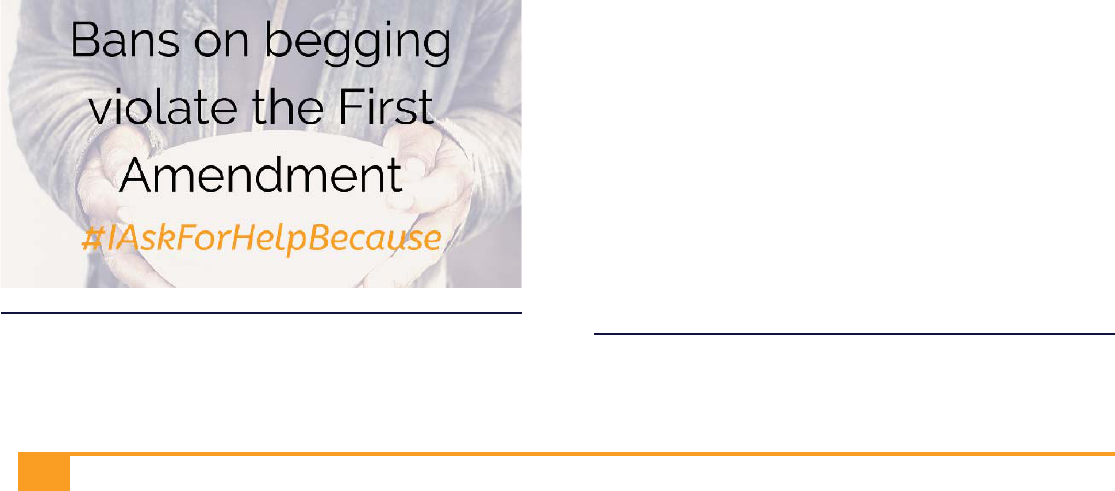
80
In Long v. City of Seattle, the King County Superior
Court in Washington found that fees associated with the
impoundment of a homeless man’s vehicle that had been
parked in a single location in excess of 72 hours violated the
Excessive Fines Clause of the Eighth Amendment. The court
also found that the attachment of the vehicle, which was
used as his home, violated Washington State’s Homestead
Act.
CHALLENGING LOITERING, LOAFING, AND
VAGRANCY LAWS
Laws prohibiting loitering, loafi ng, or vagrancy, are common
throughout the country. Similar to historical Jim Crow, Anti-
Okie, and Ugly laws, these modern-day ordinances grant
police a broad tool for excluding visibly poor and homeless
people from public places. Municipalities have used
broadly-worded loitering ordinances to target homeless
individuals in public spaces, and these may violate homeless
persons constitutional rights under the void for vagueness
doctrine described above.
343
In City of Chicago v. Morales,
for example, the Supreme Court held that an Illinois loitering
ordinance aimed at keeping gang members from loitering
in public places was unconstitutionally vague because the
ordinance failed to provide adequate notice of prohibited
conduct and failed to establish minimal guidelines for
enforcement.
344
Moreover, the court concluded that “the
freedom to loiter for innocent purposes is part of the ‘liberty’
protected by the Due Process Clause of the Fourteenth
Amendment.”
345
Vagrancy ordinances have also been successfully
challenged on vagueness grounds.
346
343 See, e.g., Kolender v. Lawson, 461 U.S. 352, 358 (1983).
344 City of Chicago v. Morales, 527 U.S. 41, 60 (1999).
345 Id. at 53.
346 Papachristou v. City of Jacksonville, 405 U.S. 156 (1972).
CHALLENGING BEGGING BANS
Right to Free Speech
In the absence of employment opportunities or other
sources of income, begging may be a homeless person’s
best option for obtaining the money that they need to
purchase food, public transportation fare, medication,
or other necessities. Laws prohibiting begging are often
unconstitutional under the First Amendment right to free
speech. Charitable solicitation is recognized by courts as
protected speech under the First Amendment.
347
Supreme
Court precedent in Reed v. Town of Gilbert, found that
a restriction on speech is content-based triggering strict
judicial scrutiny when a law is content based on its face
and/or when the purpose and justifi cation for the law are
content based.
348
To determine whether a speech restriction
is content based, courts must consider whether the face of
the ordinance draws regulatory distinctions based on the
message a speaker conveys. If a speech restriction, such
as a restriction on begging, is found to be content-based,
then it must be narrowly tailored to achieve a compelling
governmental interest to survive strict judicial scrutiny.
349
Applying the test in Reed, a large number of courts
across the country have held that begging bans are
unconstitutional under the First Amendment. The fi rst case
to do so was Norton v. City of Springfi eld, a case brought
by local counsel, Latham & Watkins, and the Law Center,
which struck down a ban on vocal solicitations of cash
donations. Since that time, every challenge to an ordinance
explicitly targeting panhandling since Norton, including
so-called “aggressive panhandling” bans, has resulted
in either the ordinance being struck down or repealed.
Building on this momentum, the Law Center organized the
national #IAskForHelpBecause campaign, working with
state-level partners in a coordinated effort to strike down or
stop enforcement of more than 70 additional panhandling
ordinances.
Even where a restriction is content neutral, a panhandling
ordinance may still be unlawful if it restricts more speech
than is necessary to achieve a legitimate government
interest or it fails to leave open ample alternative channels
for begging speech.
347 See e.g., Speet v. Schuette, 726 F.3d 867 (6th Cir. 2013).
348 Reed v. Town of Gilbert, Ariz., 135 S. Ct. 2218, 2228 (2015).
349 Id.

81
CHALLENGING FOOD SHARING
RESTRICTIONS
Right to Free Religious Exercise
Many homeless persons living outdoors have no access to
safe food. Seeing this need, community volunteers – often
but not always from religious organizations – bring meals to
people living on the street. A number of cities have banned
public food sharing, arguing (despite a lack of evidence)
that this poses a public health hazard for homeless persons.
More than limiting food availability to homeless people,
food sharing laws also expose individuals or organizations,
often faith-based organizations, to fi nes or criminal liability
for feeding poor and hungry persons.
These laws may violate the right to religious expression
under the First Amendment, and federal courts have struck
down city ordinances restricting food sharing with homeless
persons under state religious freedom statutes. In Big Hart
Ministries vs. City of Dallas, the U.S. District Court for the
Northern District of Texas denied the City of Dallas’ motion
for summary judgment because the religious ministry
challenging the food sharing restriction had adequately
alleged that the law imposed a substantial burden on
the plaintiffs’ religious expression protected under Texas’
Religious Freedom Restoration Act, and were not justifi ed as
the least restrictive means required to meet the claimed state
interest in ensuring food safety. This is a higher standard
than courts would apply in a First Amendment challenge,
where the state would merely have to demonstrate that
restrictions on food sharing were reasonable time, place,
and manner regulations.
Right to Expressive Conduct
Food sharing has also been found to be protected
expressive conduct under the First Amendment. To determine
whether conduct is suffi ciently expressive to warrant First
Amendment protection, courts must determine: 1) whether
there is an “intent to convey a particularized message”; and
(2) whether “the likelihood was great the message would
be understood by those who viewed it.”
350
In Ft. Lauderdale Food Not Bombs v. City of Ft. Lauderdale,
the Eleventh Circuit Court of Appeals reversed the lower
350 Texas v. Johnson, 491 U.S. 397, 404 (1989).
court’s grant of summary judgment because it found that Ft.
Lauderdale Food Not Bombs (“FLFNB”), an organization
that conducts weekly food sharing events at a large park
in the city, was engaged in protected expressive conduct.
The court found that FLFNB does not serve food as a
charity, but rather shares food in a highly visible location
to communicate that message that, “all persons are equal,
regardless of socio-economic status, and that everyone
should have access to food as a human right.”
351
The court
ultimately concluded that the nature of the activity and
the factual circumstances surrounding the food sharing
established that FLFNB engaged in protected expression.
CHALLENGING THE HUMAN RIGHTS
VIOLATIONS OF CRIMINALIZATION
In 2012, the U.S. Interagency Council on Homelessness
(USICH) issued a report, Searching Out Solutions,
confi rming from a federal perspective what the Law
Center had long been arguing: “In addition to violating
domestic law, criminalization measures may also violate
international human rights law, specifi cally the Convention
Against Torture and the International Covenant on Civil and
Political Rights.”
352
This was the fi rst time a federal agency
report has addressed a domestic practice as a potential
treaty violation.
353
Since then, thanks to further advocacy
by the Law Center, both HUD and DOJ have incorporated
references to the criminalization of homelessness as a human
rights violation in offi cial materials, indicating a culture
shift within the federal government itself and its comfort
with addressing criminalization in human rights terms.
354
Even more importantly, both HUD and DOJ have actually
taken concrete actions to end criminalization—providing
funding incentives to communities to stop the practice,
355
351 Id.
352 UNITED STATES INTERAGENCY COUNCIL ON HOMELESSNESS, SEARCHING OUT
SOLUTIONS: CONSTRUCTIVE ALTERNATIVES TO THE CRIMINALIZATION OF HOMELESSNESS, 8
(2012), https://www.usich.gov/tools-for-action/searching-out-solutions.
353 NAT’L L. CTR. ON HOMELESSNESS & POVERTY, HUMAN RIGHTS TO HUMAN
REALITY: A TEN-STEP GUIDE TO STRATEGIC HUMAN RIGHTS ADVOCACY (2014), https://
nlchp.org//wp-content/uploads/2018/10/Human_Rights_to_Human_Re-
ality-1.pdf.
354 See Alternatives to Criminalizing Homelessness, U.S. DEPT. OF
HOUSING & URBAN DEVELOPMENT (last visited Nov. 26, 2019), https://www.
hudexchange.info/homelessness-assistance/alternatives-to-criminaliz-
ing-homelessness/; U.S. DEPT. OF JUSTICE COMMUNITY ORIENTED POLICING
SERVICES, Community Policing Dispatch, Vol. 8, Issue 12 (Dec. 2015), https://
cops.usdoj.gov/html/dispatch/12-2015/index.asp.
355 U.S. Dept. of Housing & Urban Development, NOTICE OF FUNDING
AVAILABILITY FOR THE 2016 CONTINUUM OF CARE PROGRAM COMPETITION, 35 (2016),
https://www.hudexchange.info/resources/documents/FY-2016-CoC-Pro-
gram-NOFA.pdf; (hereinafter “HUD NOFA”); NAT’L L. CTR. ON HOMELESSNESS

82
fi ling a statement of interest brief in a case against
criminalization,
356
and supporting a bill to constructively
address encampments
357
—that directly implemented
recommendations from human rights treaty bodies.
Additionally, visits from UN human rights offi cials to the U.S.
have put an international spotlight on the criminalization
of homelessness, and advocates have utilized these
opportunities to push federal and local policy.
358
These
explicit acknowledgements by federal agencies that
governments have duties under human rights treaties that
may be violated by criminalization practices, as well as the
further commentary by other human rights offi cials, provides
signifi cant persuasive weight for advocates who want to
incorporate international standards into their advocacy
inside and outside the courtroom.
Beyond just stopping criminalization, domestic human rights
advocacy is leading to the day when housing is recognized
as a basic human right in America. In 2019, human rights
framing around housing and homelessness broke through
to the political mainstream, with fi ve leading candidates
for president explicitly calling housing a human right.
359
Other elected offi cials are also addressing housing as a
human right, and even introducing legislation to ratify the
& POVERTY, The Cost of Criminalizing Homelessness Just Went Up By $1.9
Billion (2015), http://www.nlchp.org/press_releases/2015.09.18_HUD_
NOFA_criminalization.
356 Bell v. Boise, et. al., 1:09-cv-540-REB, Statement of Interest of the
United States (Aug. 6, 2015); DEPT. OF JUSTICE, OFFICE OF PUBLIC AFFAIRS, Justice
Department Files Brief to Address the Criminalization of Homelessness (Aug.
6, 2015), http://www.justice.gov/opa/pr/justice-department-files-brief-ad-
dress-criminalization-homelessness.
357 Letter from Lisa Foster, Director, to Seattle City Councilors, OFF. FOR
ACCESS TO JUSTICE, U.S. DEP’T OF JUST. (Oct 13., 2016), https://assets.docu-
mentcloud.org/documents/3141894/DOJ-ATJ-Letter-to-Seattle-City-Coun-
cil-10-13-2016.pdf.
358 See, e.g., Gale Holland, U.N. Monitor on Extreme Poverty Tours
Skid Row in L.A., LOS ANGELES TIMES (Dec. 11, 2017), https://www.latimes.
com/local/lanow/la-me-ln-un-skid-row-20171211-story.html; Editorial Board,
Trump’s Vague Plans on Homelessness, N.Y TIMES (Sept. 12, 2019), https://
www.nytimes.com/2019/09/12/opinion/trump-homeless-california.html.
359 See Veronica Rocha and Brian Ries, Elizabeth Warren CNN
Town Hall, CNN (Mar. 18, 2019), https://www.cnn.com/politics/
live-news/elizabeth-warren-town-hall-mississippi/h_f01c5bc2f286a7ed-
c3815ed7c28947d3; Mark Paul, Sanders Calls for a National Right
to Housing, FORBES (Sept. 18, 2019), https://www.forbes.com/sites/
washingtonbytes/2019/09/18/sanders-calls-for-a-national-right-to-hous-
ing/#153166474e76; Chris Mills Rodrigo, Julian Castro Rolls Out First Part
of Housing Reform Platform, THE HILL (June 17, 2019), https://thehill.com/
homenews/campaign/448908-julian-castro-rolls-out-housing-reform-
platform; Kate Sullivan and Rebecca Buck, Cory Booker Unveils Plan to
Combat Housing Affordability Crisis, CNN (June 7, 2019), https://us.cnn.
com/2019/06/05/politics/cory-booker-affordable-housing-plan/index.
html; NATIONAL LOW INCOME HOUSING COALITION, Senator Harris Calls Housing
a “Fundamental Human Right” at Forum (Apr. 8, 2019), https://nlihc.org/
resource/senator-harris-calls-housing-fundamental-human-right-forum.
International Covenant on Economic, Social, and Cultural
Rights.
360
Human rights theories provide useful tools when challenging
ordinances criminalizing homelessness. While human rights
treaties may not be enforceable on their own in domestic
courts, judges in both state and federal settings have
looked to human rights law and jurisprudence in a number
of cases.
361
Supreme Court cases, as well as rulings by
lower federal and state courts, have particularly relied on
international standards and rulings as persuasive authority,
as sources of the “opinions of mankind” in evaluating
“evolving standards of decency” in interpreting the Eighth
Amendment.
362
Legal arguments supported by human
rights treaties ratifi ed by the U.S. can be used to ensure
domestic law complies with human rights treaties, which
have the same binding force as federal law.
363
Further,
under international law, once the U.S. merely signs a treaty,
it is obligated not to pass laws that would “defeat the object
and purpose of [the] treaty.”
364
The United States, for example, ratifi ed the International
Covenant on Civil and Political Rights (ICCPR) in 1992, and
the ICCPR is one of the foundational human rights treaties
of modern international human rights law. The ICCPR does
not enumerate a right to housing, but it includes other rights
that are implicated in situations faced by persons living in
tent cities or homeless encampments. This includes the right
to be free from cruel, inhuman, and degrading treatment or
punishment, closely parallel to our out Eighth Amendment
standard of freedom from cruel and unusual punishment.
In its March 2014 review of U.S. compliance with the
ICCPR, the Human Rights Committee, which oversees the
implementation of the treaty, stated:
“…the Committee is concerned about reports of
criminalization of people living on the street for everyday
activities such as eating, sleeping, sitting in particular
360 Patrick Sisson, Alexandria Ocasio-Cortez’s Latest Legislation?
Housing Justice For All, CURBED (Sept. 25, 2019), https://www.curbed.
com/2019/9/25/20882120/aoc-alexandria-ocasio-cortez-just-soci-
ety-legislation-housing; Jeff Andrews, Housing Proposal Backed by AOC and
the Squad Takes Aim at Affordability Crisis, CURBED (Sept. 10, 2019), https://
www.curbed.com/2019/9/10/20859661/squad-aoc-ocasio-cortez-gar-
cia-pressley-tlaib-affordable-housing-crisis.
361 See Opportunity Agenda, Human Rights in State Courts (2014),
http://opportunityagenda.org/human_rights_state_courts_2014.
362 See, e.g. Roper v. Simmons, 125 S. Ct. 1183, 1198 (2005).
363 U.S. Const. art. VI, § 2; Id. art. II, § 2, cl. 2.
364 The Vienna Convention on the Law of Treaties, May 23, 1969, art.
18(a), 1155 U.N.T.S. 331.

83
areas etc. The Committee notes that such criminalization
raises concerns of discrimination and cruel, inhuman, or
degrading treatment…the State party should…abolish the
criminalization of homelessness laws and policies at the
state and local levels…”
365
The Law Center has strategically built up this commentary
from the Human Rights Committee and numerous other
U.N. human rights monitors addressing criminalization of
homelessness as cruel, inhuman, and degrading treatment
- to provide evidence of an international norm that can
guide judges to make similar fi ndings domestically.
366
The Committee on the Elimination of Racial Discrimination
(CERD), also specifi cally condemned the criminalization
of homelessness in the U.S. and called on the U.S. to
“[a]bolish laws and policies making homelessness a
crime.” The Committee Against Torture, considered such
recommendations at its review of U.S. compliance in
November 2014, and asked the U.S. to address the issue at
its next review scheduled for 2018 (but the U.S. is overdue in
fi ling its report, so its review has been delayed).
367
The U.S.
365 Human Rights Committee, Concluding Observations, CCPR/C/
USA/CO/4, ¶ 19, Apr. 23, 2014
366 See U.N. Human Rights Committee, Concluding Observations on
the Fourth Report of the United States of America, ¶ 19, U.N. Doc. CCPR/C/
USA/CO/4 (2014); U.N. Human Rights Council, Report of the Special Rap-
porteur on Adequate Housing as a Component of the Right to an Adequate
Standard of Living, and on the Right to Non-Discrimination in this Context,
Raquel Rolnik, Mission to the United States of America, ¶ 95, U.N. Doc. A/
HRC/13/20/Add.4 (Feb. 12, 2012) [hereinafter UNHRC, Report of Raquel
Rolnik]; U.N. Human Rights Council, Final Draft of the Guiding Principles on
Extreme Poverty and Human Rights, Submitted by the Special Rapporteur on
Extreme Poverty and Human Rights, Magdalena Sepúlveda Carmona, ¶¶
65, 66(c), U.N. Doc. A/HRC/21/39 (July 18, 2012); U.N. Human Rights
Council, Report of the Special Rapporteur on Extreme Poverty and Human
Rights, ¶¶ 48-50, 78(c), U.N. Doc. A/67/278 (Aug. 9, 2012); Special
Rapporteurs on the Rights to Adequate Housing, Water and Sanitation, and
Extreme Poverty and Human Rights, USA: “Moving Away from the Crimi-
nalization of Homelessness, A Step in the Right Direction” (Apr. 23, 2012),
http://www.ohchr.org/en/NewsEvents/Pages/DisplayNews.aspx?News-
ID=12079&LangID=E; UNHRC, Report of the Special Rapporteur on the
Human Right to Safe Drinking Water and Sanitation, Catarina de Albuquer-
que, Addendum, Mission to the United States of America, A/HRC/18/33/
Add.4, Aug. 2, 2011; Special Rapporteur on the Human Right to Safe Drinking
Water and Sanitation, Stigma and the Realization of the Human Rights to Wa-
ter and Sanitation, U.N. Doc. A/HRC/21/42 (July 2, 2012); U.N. Human
Rights Council, Report of the Special Rapporteur on Contemporary Forms of
Racism, Racial Discrimination, Xenophobia and Related Intolerance, Doudou
Diéne, Mission to the United States of America, U.N. Doc. A/HRC/11/36/
Add.3 (Apr. 28, 2009) [hereinafter UNHRC, Report of Diéne].
367 Committee Against Torture, Summary Record of the 1264th Session,
CAT/C/SR.1264, ¶ 37, Nov. 17, 2014, https://tbinternet.ohchr.org/Treaties/
CAT/Shared%20Documents/USA/CAT_C_SR_1264_22881_E.pdf; Com-
mittee Against Torture, List of Issues Prior to Submission of the Sixth Periodic
Report of the United States of America, CAT/C/USA/QPR/6, ¶ 46, Dec.
19, 2016, https://tbinternet.ohchr.org/_layouts/15/treatybodyexternal/
Download.aspx?symbolno=CAT%2fC%2fUSA%2fQPR%2f6&Lang=en.
also received, and accepted, a recommendation from its
2015 Universal Periodic Review by the U.N. Human Rights
Council to “amend laws that criminalize homelessness and
which are not in conformity with international human rights
instruments,”
368
Taken together, the three major human rights
treaty bodies, the Universal Periodic Review, plus a wide
range of other human rights offi cials have created a clear
and consistent standard establishing that criminalization of
homelessness violates human rights norms, which should
be given persuasive weight in evaluating the “opinions of
mankind.”
Rather than simply enjoining such laws only to see
communities make minimal changes to the laws but continue
criminalizing practices, international law may also provide
support for more expansive remedies – such as provision of
housing – to address underlying constitutional violations.
369
Given that the U.S. has ratifi ed the ICCPR, the Convention
Against Torture, and the Convention on the Elimination of
Racial Discrimination (CERD), and is a signatory to the
International Covenant on Economic, Social, and Cultural
Rights (ICESCR), the Convention on the Rights of the Child
(CRC), and the Convention on the Rights of Persons with
Disabilities (CRPD), the U.S. has affi rmative obligations not
to infringe upon certain freedoms of homeless individuals.
Under its international legal obligations, many policies in
the United States that currently relate to both homelessness
in general and to tent cities and encampments in particular
violate international law. Forced evictions against tent city
residents and tent city closures without the provision of
adequate alternative or emergency housing—or even the
existence of tent cities instead of adequate housing—may
violate international law. Beyond the above-described
freedom from cruel, inhuman, and degrading treatment,
the ICCPR also recognizes the right to life, which has been
interpreted by the Human Rights Committee, to include the
right to shelter oneself from the elements.
370
368 Report of the Working Group on the Universal Periodic Review,
United States of America, A/HRC/30/12, ¶ 176.309 (July 20, 2015);
Report of the Working Group on the Universal Periodic Review, United States
of America, Addendum, Views on Conclusions and/or Recommendations,
Voluntary Commitments and Replies Presented by the State Under Review, A/
HRC/30/12/Add.1, ¶ 12 (Sept. 14, 2015).
369 Eric Tars, Heather Maria Johnson, Tristia Bauman & Maria Fos-
carinis, Can I Get Some Remedy? Criminalization of Homelessness and the
Obligation to Provide an Effective Remedy, 45 Col. HRLR 738 (2014), http://
nlchp.org/documents/HLRL_Symposium_Edition_Spring2014_Can_I_Get_
Some_Remedy.
370 Human Rights Committee, General Comment No. 36: Article 6:
Right to Life, CCPR/C/GC/36 (Sept. 3, 2018), ¶26, http://docstore.ohchr.
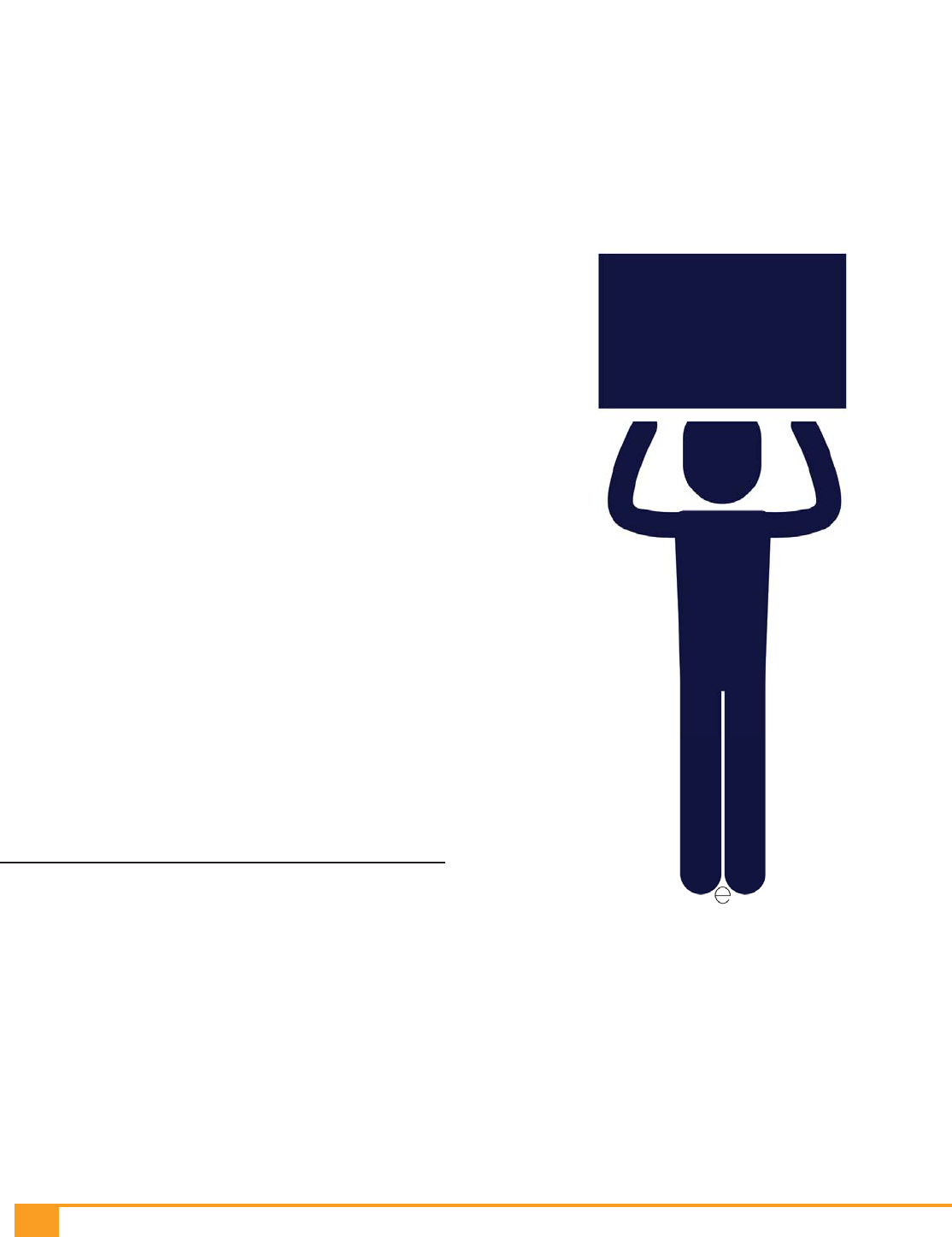
84
Other treaty rights, such as the right to housing, freedom of
movement and the right to travel, freedom from arbitrary
arrest and interference with one’s home, as well as
property rights have been violated regularly, often by law
enforcement or local government offi cials. The rights of
certain subgroups of the population to non-discrimination
under international law, such as children, people with
disabilities, and racial minorities, are also implicated by the
adverse treatment of homeless people and those living in
encampments.
In addition to making the case in the courts, U.N. human
rights offi cials are more frequently visiting and commenting
on issues of housing and homelessness in the U.S., and
being widely covered by national and local media.
371
Smart advocates are taking advantage of the international
spotlight they are able to bring to help amplify their causes
and reframe the local and national conversation to one
where human rights standards are the new baseline, such
as hosting a Congressional briefi ng following the issuance
of the report of the U.N. Special Rapporteur on Extreme
Poverty and Human Rights.
372
By making human rights a
consistent part of our message, in the courtroom and in the
court of public opinion, we can move our country forward
to a place where homelessness, let alone its criminalization,
is no longer acceptable.
org/SelfServices/FilesHandler.ashx?enc=6QkG1d%2fPPRiCAqhKb7yhs-
rdB0H1l5979OVGGB%2bWPAXhNI9e0rX3cJImWwe%2fGBLmVrGm-
T01On6KBQgqmxPNIjrIIC8tda7SSsz61JFriKPz7wCqsecsmPJbWRhCR9U-
rpE.
371 See, e.g. Philip Alston, Extreme Poverty in America: Read the UN
Special Monitor’s Report, THE GUARDIAN (Dec. 15, 2017), https://www.
theguardian.com/world/2017/dec/15/extreme-poverty-america-un-spe-
cial-monitor-report; Gary Warth, ‘It’s As Bad, If Not Worse, Than I Anticipat-
ed’ — UN Appointee Gets a Look at San Diego Homelessness, SAN DIEGO
UNION-TRIBUNE (Aug. 15, 2019), https://www.sandiegouniontribune.com/
news/homelessness/story/2019-08-15/un-rapporteur-visits-san-diego-to-
learn-about-areas-homeless.
372 USHRN Presents at Congressional Briefing in Washington, D.C.,
US HUMAN RIGHTS NETWORK (Jan. 28, 2019), https://ushrnetwork.org/
news/32/100/USHRN-presents-at-Congressional-Briefing-in-Washing-
ton-D.C.
Homelessness
is a global issue
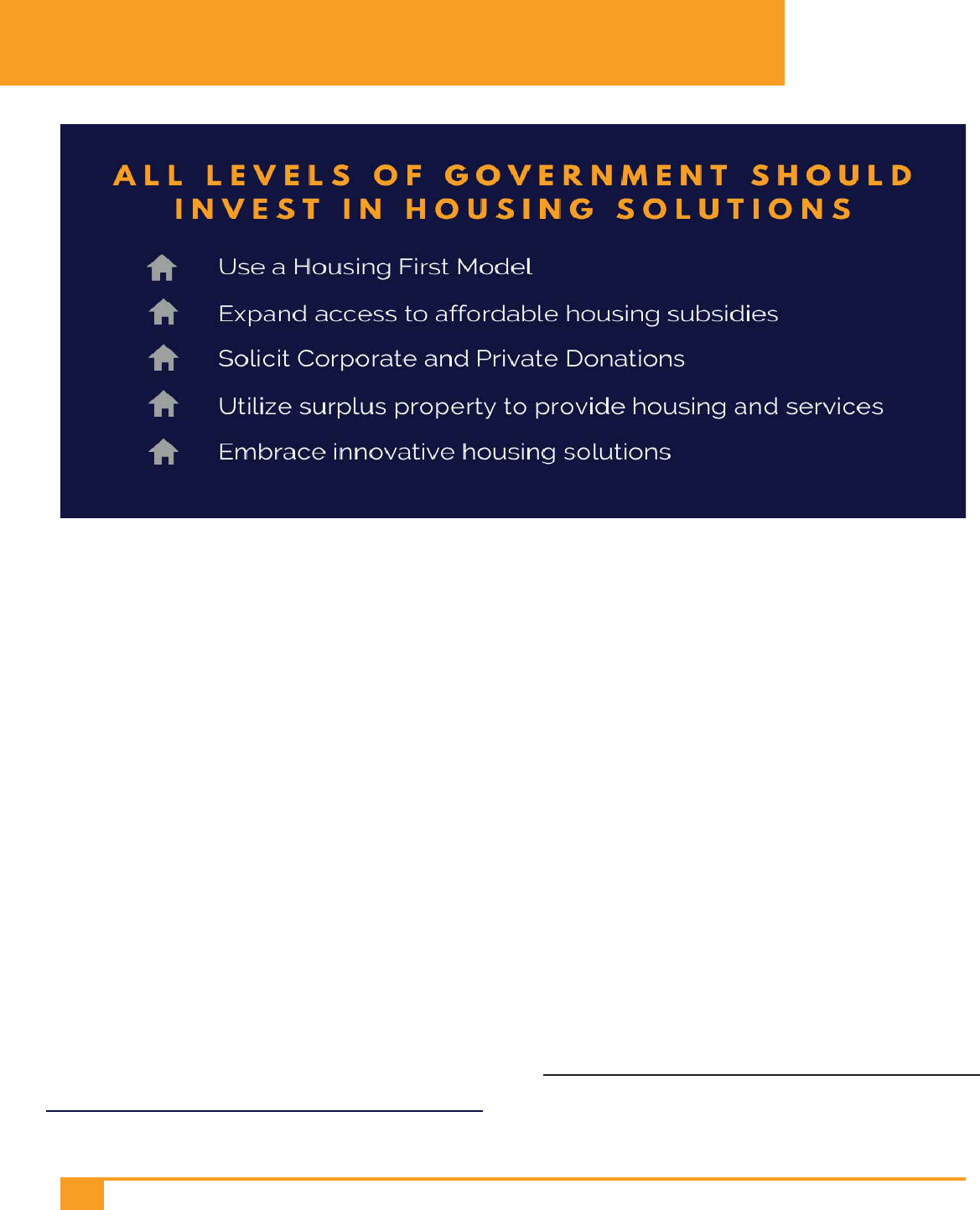
85
H
omelessness is a solvable problem, but only if we
pursue policies that work to end homelessness.
Criminalization policies are ineffective, harmful,
expensive, often unconstitutional, and inconsistent with
federal recommendations and human rights norms. Yet,
these policies persist due, in part, to a lack of awareness of
constructive alternative solutions to homelessness. Instead
of criminalizing the life-sustaining conduct of homeless
people, all levels of government should institute policies that
work to end homelessness and save public resources. The
following are recommendations for ending homelessness
with housing, not handcuffs.
CITIES SHOULD INVEST IN PERMANENT
HOUSING SOLUTIONS USING A HOUSING
FIRST MODEL
Housing is a proven solution to homelessness. Indeed,
at least 78 communities and three states have effectively
ended veteran homelessness by putting in place a system
that prevents homelessness or, when it cannot be prevented,
ensures that it is rare, brief, and non-recurring.
373
Using the
373 See Communities that Have Ended Homelessness, UNITED STATES
INTERAGENCY COUNCIL ON HOMELESSNESS, https://www.usich.gov/communities-
same criteria, at least four of those communities have also
ended chronic homelessness. In contrast, no city has ended
homelessness with criminalization policies.
Fundamental to the success of communities that have ended
homelessness for veterans and chronically homeless people
is the implementation of the Housing First model. Housing
First is premised on the idea that pairing homeless people
with immediate access to their own apartments—without
barriers and without mandated compliance with services—
is the best way to sustainably end their homelessness. It is a
philosophy that, “values fl exibility, individualized supports,
client choice, and autonomy.”
374
Under this model, homeless
people are quickly placed into permanent housing,
supplemented by any supportive services necessary to help
them maintain housing stability.
According to the U.S. Interagency on Homelessness
(“USICH”), communities must use a system-wide
Housing First approach to succeed in ending chronic
that-have-ended-homelessness/ (last visited Nov. 5, 2019).
374 N
AT’L ALL. TO END HOMELESSNESS, What Housing First Really Means
(Mar. 18, 2019), https://endhomelessness.org/what-housing-first-really-
means/.
WE SHOULD SOLVE HOMELESSNESS
NOT
PUNISH IT

86
homelessness.
375
The emphasis must be on quick access
to permanent housing, and that requires reducing and
removing barriers to housing, such criminal records and/
or poor credit—two direct consequences of policies
criminalizing homelessness.
Marin County provides a good example of the results that
Housing First approaches to homelessness can produce
in a relatively short time. Since 2017, the Marin County
Department of Health and Human Services and its partners
have reduced chronic homelessness by an impressive
28% and overall homelessness by 7% using a system-wide
Housing First approach.
376
Permanent Supportive Housing
One housing model that has shown tremendous potential
for ending homelessness is Permanent Supportive Housing
(“PSH”). PSH combines affordable housing assistance with
voluntary support services as needed to help people ive
independently.
377
375 10 STRATEGIES TO END CHRONIC HOMELESSNESS, UNITED STATES
INTERAGENCY COUNCIL ON HOMELESSNESS, HTTPS://WWW.USICH.GOV/RESOURCES/
UPLOADS/ASSET_LIBRARY/10_STRATEGIES_TO_END_CHRONIC_HOMELESSNESS.PDF (APR.
2016).
376 ASHLEY HART MCINTYRE, CHRONIC HOMELESSNESS FALLS 28% IN MARIN:
LARGE DROPS RECORDED IN OTHER SUB-POPULATIONS, COUNTY OF MARIN (MAY 08,
2019), HTTPS://WWW.MARINCOUNTY.ORG/MAIN/COUNTY-PRESS-RELEASES/PRESS-
RELEASES/2019/HHS-PITCOUNT-050819.
377 PERMANENT SUPPORTIVE HOUSING, NAT’L ALL. TO END HOMELESSNESS,
HTTPS://ENDHOMELESSNESS.ORG/ENDING-HOMELESSNESS/SOLUTIONS/PERMANENT-
SUPPORTIVE-HOUSING/ (LAST UPDATED JAN. 2019).
Residents of PSH nationwide have housing retention rates
of up to 96%, meaning that people who become housed
stay housed, sustainably reducing the number of people
living in public space. Indeed, PSH has helped to decrease
the number of chronically homeless individuals counted in
HUD’s PIT counts by 26% since 2007.
PSH also carries a host of other benefi ts.
378
Ample research
demonstrates that permanent supportive housing can
dramatically improve health. Indeed, permanent housing
reduces emergency room visits by up to 81 percent, lowers
hospital admissions by up to 61 percent, and even shortens
hospital stays by up to 80 percent.
379
Permanent supportive
housing has also been shown to increase engagement in
substance abuse treatment.
Permanent supportive housing has also been shown to
reduce resident’s criminal justice involvement. In Charlotte,
North Carolina, for example, permanent supportive housing
reduced arrests of residents by 82%.
380
Flowing from reductions in high cost health care and
criminal justice systems, PSH also saves money. In fact, PSH
always produces gross savings for chronically homeless
populations.
381
In addition to savings associated with
378 LAVENA STATEN & SARA RANKIN, PENNY WISE BUT POUND FOOLISH: HOW
P
ERMANENT SUPPORTIVE HOUSING CAN PREVENT A WORLD OF HURT 252-255 (2019),
AVAILABLE AT HTTPS://PAPERS.SSRN.COM/SOL3/PAPERS.CFM?ABSTRACT_ID= 3 41918 7.
379 ID.
380 MARK PRICE, UNC CHARLOTTE REPORT: HOMELESS PROJECT SAVED CITY
$2.4 M
ILLION, THE CHARLOTTE OBSERVER (MAY 4, 2015, 2:00 AM), HTTPS://
WWW.CHARLOTTEOBSERVER.COM/NEWS/LOCAL/ARTICLE20155044.HTML.
381 LAVENA STATEN & SARA RANKIN, PENNY WISE BUT POUND FOOLISH: HOW
PERMANENT SUPPORTIVE HOUSING CAN PREVENT A WORLD OF HURT (2019), AVAILABLE
We can either pay more to
react to people’s homelessness,
endlessly chasing them through
the expensive rotating doors of
the criminal justice system and
emergency rooms, or we can
decide that we all need to step up
and invest in fi nally ending chronic
homelessness, once and for all,
through the proven intervention of
supportive housing.

87
individuals, PSH generates as much as $7,600 in net saving
per formerly homeless family each year, as compared with
leaving families homeless.
382
Because PSH is effective and also produces cost-
savings, it is rapidly gaining favor with lawmakers and
even members of the business community. The Third Door
Coalition, based in Seattle, Washington, provides a good
example.
383
The Third Door Coalition combines business
leaders, service providers, and researchers to work on
data-driven approaches to ending chronic homelessness in
the greater Seattle area, with a focus on PSH investment.
384
It is estimated that the PSH plan advocated for by the Third
Door Coalition would save Seattle and King County at
least $30,000 each year per person.
385
GOVERNMENTS SHOULD EXPAND ACCESS
TO AFFORDABLE HOUSING SUBSIDIES
As homelessness resulted in large part from federal
disinvestment in federally subsidized housing, homelessness
in America is unlikely to sustainably end without major
reinvestment from the federal government. Rental subsidies,
such as Housing Choice Vouchers (“HCVs”) where tenant
rent is capped at 30% of household income, can address
this problem.
Rent subsidies, like HCVs work to lift people out of poverty
and end homelessness.
386
The clearest example of this is the
reduction of veteran homelessness following the expansion
of federal housing supports to veterans
experiencing homelessness. Moreover, vouchers provided
at emergency shelters have been shown to reduce the
proportion of families with subsequent shelters stays by
some 75%.
387
AT HTTPS://PAPERS.SSRN.COM/SOL3/PAPERS.CFM?ABSTRACT_ID= 3 41918 7.
382 ID. AT 230.
383 S
TEPHANIE KLEIN, THIRD DOOR COALITION PLANS TO END CHRONIC
H
OMELESSNESS IN KING COUNTY IN 5 YEARS, MYNORTHWEST (MAY 13, 2019),
HTTPS://MYNORTHWEST.COM/1381535/THIRD-DOOR-COALITION-CHRONIC-HOMELESS-
SEATTLE/?.
384 S
ARA RANKIN, SEATTLE HAS THE SOLUTION TO CHRONIC HOMELESSNESS–
WE JUST NEED TO BRING IT TO SCALE, THE URBANIST (APR. 1, 2019), HTTPS://
WWW.THEURBANIST.ORG/2019/04/01/SEATTLE-HAS-THE-SOLUTION-TO-CHRONIC-
HOMELESSNESS-WE-JUST-NEED-TO-BRING-IT-TO-SCALE/.
385 ID.
386 NAT’L LOW INCOME HOUS. COALITION, HOUSING SUBSIDIES LIFT 2.9
M
ILLION OUT OF POVERTY, HTTPS://NLIHC.ORG/RESOURCE/HOUSING-SUBSIDIES-LIFT-
29-
MILLION-OUT-POVERTY (SEPT. 17, 2018).
387 THE OREGON COMMUNITY FOUNDATION, HOMELESSNESS IN
THE PORTLAND REGION: A REVIEW OF TRENDS, CAUSES, AND THE OUTLOOK
AHEAD 28 (2018), HTTPS://WWW.OREGONCF.ORG/TEMPLATES/MEDIA/FILES/
PUBLICATIONS/HOMELESSNESS_IN_PORTLAND_REPORT.PDF.
But there are far too few vouchers to meet the end. Only
one in four people eligible for housing subsidies like HCVs
actually receives them, and waiting lists in many cities
number in the tens of thousands, or are closed. Congress
should fund HUD at a level necessary to grant supports to
all people who qualify for them. Legislation such as H.R.
1856, the Ending Homelessness Act of 2019
388
, introduced
by Congresswoman Maxine Waters (D-CA), Chairwoman
of the House Financial Services Committee, is an example
of how this can be accomplished. The bill,
which has broad support
389
from homeless and housing
organizations, would provide $13.27 billion in mandatory
emergency relief funding over fi ve years for housing and
homelessness prevention.
388 CHAIRWOMAN WATERS INTRODUCES BILL TO END HOMELESSNESS
IN AMERICA, U.S. HOUSE COMMITTEE ON FINANCIAL SERVICES,
HTTPS://FINANCIALSERVICES.HOUSE.GOV/NEWS/DOCUMENTSINGLE.
ASPX?DOCUMENTID=402520 (MAR. 26, 2019).
389 T
HIS BILL IS SUPPORTED BY THE CENTER FOR SUPPORTIVE HOUSING,
COMMUNITY SOLUTIONS, COUNCIL OF LARGE PUBLIC HOUSING AUTHORITIES, DRUG
P
OLICY ALLIANCE, LAWYERS’ COMMITTEE FOR CIVIL RIGHTS UNDER LAW, LEADING AGE,
LOCAL INITIATIVES SUPPORT CORPORATION, NATIONAL ALLIANCE ON MENTAL ILLNESS,
NATIONAL ALLIANCE TO END HOMELESSNESS, NATIONAL ASSOCIATION OF HOUSING
AND REDEVELOPMENT OFFICIALS, NATIONAL COALITION FOR HOMELESS VETERANS,
N
ATIONAL HOUSING CONFERENCE, NATIONAL HOUSING LAW PROJECT, NATIONAL
H
OUSING TRUST, NATIONAL LAW CENTER ON HOMELESSNESS & POVERTY, NATIONAL
LOW INCOME HOUSING COALITION, NATIONAL RURAL HOUSING COALITION,
PATH (PEOPLE ASSISTING THE HOMELESS), PUBLIC HOUSING AUTHORITY DIRECTORS
ASSOCIATION, STEWARDS FOR AFFORDABLE HOUSING FOR THE FUTURE, AND TELACU
R
ESIDENTIAL MANAGEMENT.
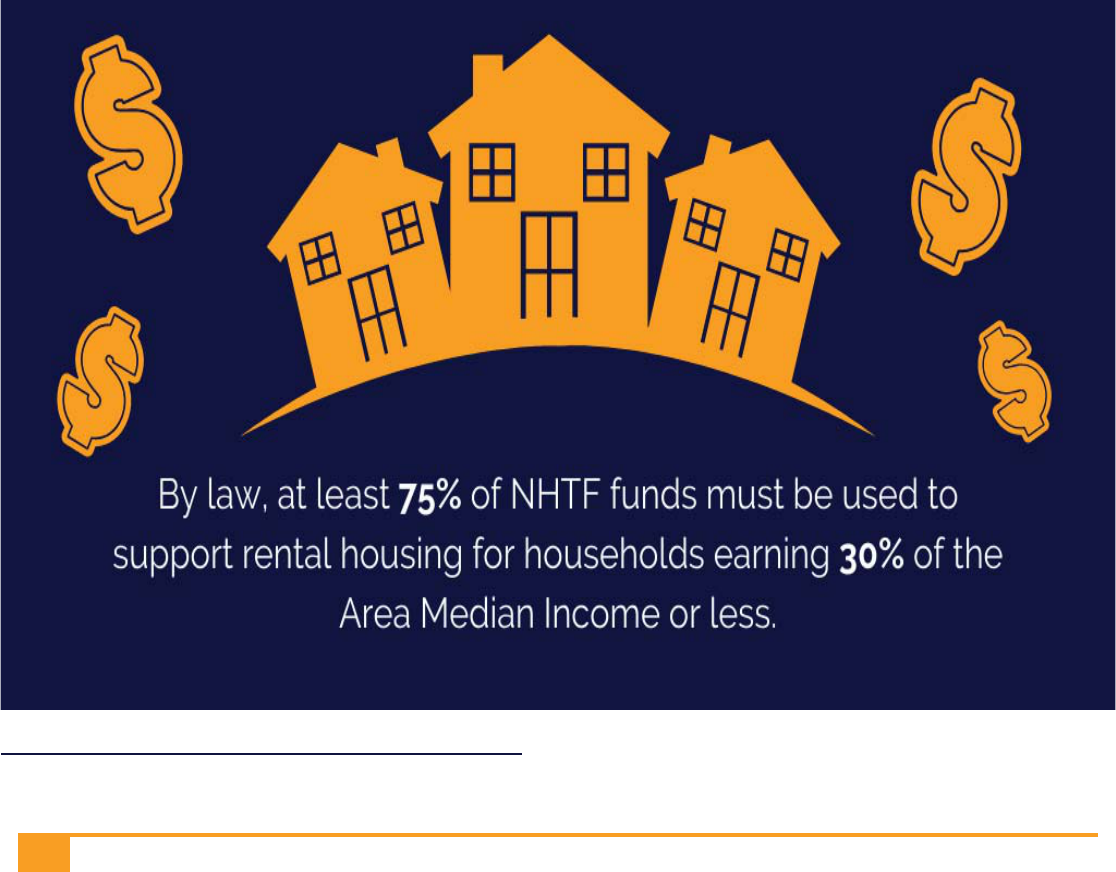
88
The federal government should also fully fund the National
Housing Trust Fund (“NHTF”). The NHTF is a HUD
administered block grant to states, designed to increase
the amount of affordable housing stock to extremely low-
income households. It is designed to help build and preserve
affordable housing, and it is funded by statute from profi ts
from Freddie Mac and Fannie Mae, and thus is not subject
to the annual appropriations process. By law, at least 75%
of NHTF funds must be used to support rental housing for
households earning 30% of the Area
Median Income or less.
390
While the fi rst $174 million was
allocated to states in 2016, a signifi cantly larger amount is
needed.
It is not enough, however, to simply provide new housing
subsidies. Housing and income subsidies should be
indexed to actual housing costs in a given area. As with
inadequate minimum wages to meet local housing costs,
390 HTF: THE HOUSING TRUST FUND, NATIONAL LOW INCOME COALITION,
HTTPS://NLIHC.ORG/SITES/DEFAULT/FILES/HTF_FACTSHEET.PDF (MAR. 10, 2017).
individuals relying on Supplemental Security Income (SSI)
or Social Security Disability Insurance (SSDI) often fi nd
housing costs consume their entire supplement check,
leaving them no money for even utilities, let alone food or
other necessities. Indexing the SSI or SSDI payment itself to
local housing costs would prevent the need for additional
subsidies and be a cost-effective strategy for states and the
federal government to ensure housing affordability for low-
income Americans.
In addition, and as discussed in more detail below,
governments should prevent source of income discrimination
to prevent landlords from unfairly excluding people with
vouchers from rental housing.

89
GOVERNMENTS SHOULD EXPAND ACCESS
TO AFFORDABLE HOUSING SUBSIDIES
This can be accomplished in a number of ways, and we
highlight only a few examples here.
Tax on gross receipts of large companies
In November 2018, San Francisco approved Proposition
C, which places an average 0.5% gross receipts tax on
companies earning in excess of $50 million each year to
fund homeless housing and emergency services. The voter
measure passed with a healthy 61% of the vote, and it is
estimated to raise as much as $300 million each year in
homeless programming from as many as 400 companies.
391
At least half of the amount raised must be spent on housing
for homeless people, with remaining funds going toward
mental health services and emergency services.
The successful voter initiative was the result of organizing by
the San Francisco Coalition on Homelessness. The measure
was also publicly supported by billionaire Salesforce
founder and CEO Marc Benioff, who devoted millions to the
campaign.
392
A legal challenge delayed implementation
of Proposition C, but defenders of the voter-initiated tax
were successful in defending against the lawsuit, which
ultimately resulted in a court ruling upholding the validity of
the measure.
393
Sales Tax
Miami-Dade County’s Homeless and Domestic Violence
Tax is a dedicated revenue stream to fund homeless services
that imposes a 1% tax on all food and beverage sales by
establishments licensed by the state to serve alcohol on
the premises, excluding hotels and motels. 85% of the tax
receipts go to the Miami-Dade County Homeless Trust,
which coordinates the County’s efforts to end homelessness.
391 KEVIN FAGAN, SF PROP. C HOMELESS TAX – MEASURE TO RAISE $300
MILLION A YEAR WINS WITH 60%, SAN FRANCISCO CHRONICLE (NOV. 7, 2018),
HTTPS://WWW.SFCHRONICLE.COM/POLITICS/ARTICLE/SF-PROP-C-HOMELESS-TAX-
MEASURE-TO-RAISE-300-13369555.PHP?PSID=IZXFC.
392 ID.
393 A
DAM BRINKLOW, COURT RULES SF CAN TAX BUSINESSES FOR
H
OMELESS FUNDS, CURBED SAN FRANCISCO (JULY 8, 2019), HTTPS://SF.CURBED.
COM/2019/7/8/20686450/PROP-C-LAWSUIT-HOMELESS-SAN-FRANCISCO-
HOWARD-JARVIS-HERRERA-UPHOLDS.
The food and beverage tax raises some $20 million a year,
helping to fund emergency, supportive and transitional
housing, and other homeless services within Miami-Dade
County.
Measure H in Los Angeles, a sales tax approved by voters
in 2017, provides another good example. Measure H
raises sales tax by one-quarter of a cent, and it is expected
to raise about $355 million annually for ten years to fund
homeless services, including health care and job training.
The measure also calls for the creation of an oversight
board to review spending twice per year.
Social Impact Bonds
Social Impact Bonds are tools that allow governments to
partner with private investors to address social needs.
394
For example, Denver, Colorado, partnered with eight
private investors in 2016 to develop a supportive housing
program.
395
Relying on support from these private investors
as well as other partner organizations, Denver sought to
create a housing support program to “stabilize people
caught in a homelessness-jail cycle through housing and
intensive services, leading to increased housing stability
and decreased jail stays.”
396
Through this social impact
bond, Denver is able to provide 170 apartment homes to
250 homeless residents, while also providing referrals to
other services, including psychiatric, legal, and substance
use.
397
394 SOCIAL IMPACT BONDS, GOLDMAN SACHS, HTTPS://WWW.
GOLDMANSACHS.COM/INSIGHTS/PAGES/SOCIAL-IMPACT-BONDS.HTML (OCT. 2, 2014).
395 S
ARAH GILLESPIE ET AL., URBAN INSTITUTE, DENVER SUPPORTIVE HOUSING
SOCIAL IMPACT BOND INITIATIVE: HOUSING STABILITY OUTCOMES 1, HTTPS://WWW.
URBAN.ORG/SITES/DEFAULT/FILES/PUBLICATION/94141/DENVER-SIB-OUTCOME-
REPORT_0.PDF.
396 Id.
397 PROGRAM OVERVIEW, COLORADO COALITION FOR THE HOMELESS, HTTPS://
WWW.COLORADOCOALITION.ORG/SOCIAL-IMPACT-BOND-INITIATIVE (LAST VISITED NOV. 19,
2019).

SOLICIT CORPORATE AND PRIVATE
DONATIONS
In recent years, a number of the nation’s largest corporations
have pledged large sums of money for affordable housing
and homelessness measures. While these donations alone
do not offset the effect that these companies have on the
cost of housing in the markets where they operate and
gentrifi cation, they are still helpful sources of revenue for
needed housing and homeless services. Some examples
include:
• In 2018, Kaiser Permanente, one of the nation’s
largest not-for-profi t health plans, launched a $200
million Thriving Communities Fund to address housing
instability and homelessness.
398
Through the fund,
Kaiser Permanent established a $100 million loan
fund to create and preserve housing for low-income
renters.
399
It is also spending millions of dollars to
fi ght gentrifi cation and end chronic homelessness for
500 individuals in Oakland, California, where Kaiser
Permanente is headquartered.
400
• In November 2019, Apple announced a $2.5 billion
plan to address housing affordability in California,
particularly in the Bay Area where Apple is based.
401
$1 billion will go to an affordable housing fund for
the development of new low to moderate-income
housing.
402
Another $1 billion will provide fi rst-time
homebuyer mortgage assistance, with an emphasis on
increasing homeownership access to school employees,
veterans, and essential service personnel. The remaining
millions will be aimed at additional affordable housing
development and homelessness prevention, including
a $50 million donation to Destination:Home, a public-
private partnership organization that works to end
homelessness in Santa Clara County, California.
• Microsoft has pledged $500 million for affordable
housing and homeless services in Seattle, Washington
and the greater Puget Sound area.
403
$250 million will
398 $200M FOR OUR FIGHT AGAINST HOMELESSNESS, KAISER PERMANENTE,
HTTPS://ABOUT.KAISERPERMANENTE.ORG/WHO-WE-ARE/FAST-FACTS/AT-A-
GLANCE/200-MILLION-FIGHT-HOMELESSNESS (LAST VISITED NOV. 19, 2019).
399 ID.
400 ID.
401 A
PPLE COMMITS $2.5 BILLION TO COMBAT HOUSING CRISIS
IN CALIFORNIA, APPLE (NOV. 4, 2019), HTTPS://WWW.APPLE.COM/
NEWSROOM/2019/11/APPLE-COMMITS-TWO-POINT-FIVE-BILLION-TO-COMBAT-
HOUSING-CRISIS-IN-CALIFORNIA/.
402 ID.
403 M
ICROSOFT PLEDGES $500 MILLION TO ADDRESS HOMELESSNESS,
A
FFORDABLE HOUSING IN THE SEATTLE AREA, THE WASHINGTON POST (JAN. 16, 2019),
HTTPS://WWW.WASHINGTONPOST.COM/BUSINESS/2019/01/17/MICROSOFT-
PLEDGES-MILLION-ADDRESS-HOMELESSNESS-AFFORDABLE-HOUSING-SEATTLE-AREA/.
90
be dedicated to supporting low-income housing in King
County, where Microsoft is based.
404
Another $225
million will support development and preservation of
middle-income housing in the county, and the remaining
$25 million will fund homeless programming, including
a United Way program providing legal representation
to people at risk of homelessness.
405
• Google has pledged $1 billion in funding for housing
in the Bay Area of California, where the company is
headquartered.
406
The goal of the funding is to create
20,000 homes, including by establishing a $250
million investment fund to incentivize developers to build
at least 5,000 affordable housing units in the area.
407
Also, $50 million will be granted to nonprofi ts working
on homelessness and housing displacement.
408
404 ID.
405 ID.
406 GOOGLE’S $1 BILLION ATTEMPT TO FIX BAY AREA HOUSING CRISIS, FORBES
(J
ULY 1, 2019), HTTPS://WWW.FORBES.COM/SITES/KORIHALE/2019/07/01/
GOOGLES-1-BILLION-ATTEMPT-TO-FIX-BAY-AREA-HOUSING-CRISIS/#A19 D22095849.
407 ID.
408 ID.
“This unparalleled fi nancial
commitment to affordable
housing, and the innovative
strategies at the heart of this
initiative, are proof that Apple
is serious about solving this
issue. I hope other companies
follow their lead,” said
Gavin Newsom, governor of
California.

91
GOVERNMENTS SHOULD UTILIZE SURPLUS
PROPERTY TO PROVIDE HOUSING AND
SERVICES
All levels of government own real property that is vacant
and/or that they do not need to execute their governmental
duties. These unused assets can be turned to productive use
if they are made available to provide needed housing,
shelter, and services to people experiencing homelessness.
One model for using surplus government property in this
way is the federal Title V program, authorized under the
McKinney-Vento Homeless Assistance Act. Under the
Title V program, eligible homeless service providers –
including state and local governments and private non-
profi t organizations – are granted a right of fi rst refusal to
receive unneeded federal buildings and land before such
property can be otherwise transferred or sold. Critically,
title to these properties is provided for free to successful
applicants, which has enabled resource limited homeless
service providers to create or expand services in over 30
states across the country. While the program has not been
adequately implemented by the federal government, over 2
million homeless and formerly homeless people are housed,
sheltered, or otherwise served by programs operating
in Title V properties each year. All levels of government
should assess their real property holdings, determine which
unneeded properties are suitable for homeless use, and
develop a legal framework for transforming these properties
into homeless housing, shelter, and/or services as needed.
In 2016, Congress enacted the Federal Assets Sale Transfer
Act (“FASTA”) which made some important improvements
to the Title V program, including making permanent housing
for homeless people an eligible use of vacant federal
properties. The FASTA also established a Public Buildings
Reform Board (“PBRB”) that is tasked with reviewing and
recommending certain federal government’s real property
holdings for disposal. If there is a federal property in your
community that you think could be useful for housing and/
or serving homeless people, you can contact the PBRB here
to recommend the property for disposal under Title V.
409
Local governments can also put their vacant properties
to good use. Philadelphia, Pennsylvania, for example,
409 U.S. GEN. SERV. ADMIN., FEDERAL ASSETS SALE TRANSFER ACT, HTTPS://
WWW.GSA.GOV/POLICY-REGULATIONS/POLICY/REAL-PROPERTY-POLICY/ASSET-
MANAGEMENT/FEDERAL-ASSETS-SALE-TRANSFER-ACT-FASTA (LAST VISITED NOV. 26, 2019).
provided a vacant police headquarters in its subway
system to a local service organization, Project HOME, to
open a day center for people experiencing homelessness
called the Hub of Hope.
410
The Hub provides a place to
sit, charging stations, free coffee, medical and legal clinics,
washers and dryers, and showers for people experiencing
homelessness, and has greatly reduced the number of
homeless persons otherwise occupying the corridors of the
subway station.
411
In Portland, Oregon, several business owners came
together to offer vacant spaces in their properties for
use as temporary shelters.
412
Now the joint city-county
homeless services offi ce has stepped in to help facilitate
other businesses with properties that will not be used for
several months.
413
The offi ce will inspect the property, and
if it is safe and otherwise adequate for the shelter needs of
at least 100 people, the city or a nonprofi t operator will
provide upgrades to get the property into usable condition,
and the city’s liability insurance will cover the facility.
414
This
is an excellent model for engaging businesses that often
complain about the existence of homelessness in downtown
areas in becoming part of the solution, and getting people
off the street immediately as longer term solutions are
implemented.
Organizations can also offer their unused property as
safe places for people without housing to shelter, rest, or
park. In San Diego, a local church calls its effort to build
some 16 affordable housing units in its private parking lot is
being called “Yes In God’s Backyard” or YIGBY.
415
Pastor
Jonathan Doolittle explained that “There’s lots of places
with unused land and it’s a way to take advantage of the
resources congregations have in order to make better use
for the whole community.”
416
410 NINA FELDMAN, EXPANDED HUB OF HOPE HOMELESS SHELTER OPENING
U
NDER SUBURBAN STATION, WHYY (JAN. 30, 2018), HTTPS://WHYY.ORG/ARTICLES/
EXPANDED-HUB-HOPE-HOMELESS-CENTER-OPENING-SUBURBAN-STATION/.
411 T
HE HUB OF HOPE, HTTPS://WWW.PROJECTHOME.ORG/HUBOFHOPE
HTTPS://WWW.PROJECTHOME.ORG/HUBOFHOPE (LAST VISITED NOV. 11, 2019).
412 MOLLY HARBARGER, PORTLAND DEVELOPERS TRY TO EASE HOMELESS CRISIS
THEY HELPED CREATE, THE OREGONIAN (JULY 23, 2017), HTTPS://WWW.OREGONLIVE.
COM/PORTLAND/2017/07/BUSINESS_COMMUNITY_TAKES_BIGGE.HTML.
413 S
EE ID.
414 SEE ID.
415 MELISSA ADAN, ‘YES IN GOD’S BACKYARD:’ LOCAL CHURCH PROPOSES
AFFORDABLE HOUSING PLAN, NBC SAN DIEGO (JUN. 6, 2019, LAST UPDATED
J
UN. 7, 2019), HTTPS://WWW.NBCSANDIEGO.COM/NEWS/LOCAL/A-LOCAL-
C
HURCH-IS-PROPOSING-AN-AFFORDABLE-HOUSING-PLAN-CALLED-YES-IN-GODS-
BACKYARD-510943761.HTML.
416 ID.

92
GOVERNMENTS SHOULD EMBRACE
INNOVATIVE HOUSING SOLUTIONS
There are a number of innovative housing models that
communities can use to temporarily, or even permanently,
address shortages in their affordable housing markets.
While some of the models described below fall short of truly
adequate housing, they all have the advantage of giving
people access to private shelter and a stable environment
while more traditional housing is developed. As such, each
of the following models can be an important part of any
communities housing continuum, and we recommend that
they be pursued simultaneously with permanent housing
development.
Accessory Dwelling Units
Declines in average household size and interest in
environmentally sustainable housing have created a market
for smaller housing, and accessory dwelling units (“ADUs”)
can meet this contemporary housing need while also
expanding a community’s affordable housing stock.
417
ADUs are independent living units sited on the property
of a single-family home.
418
In addition to providing an
affordable housing option, ADUs can also increase access
to high-quality neighborhoods near to educational and
employment opportunities and public transportation.
The BLOCK Project in Seattle is a good example of an
ADU model that takes a community-building approach to
homeless housing by placing a pre-fabricated tiny home
on single-family residential lots.
419
The tiny homes are 125
square feet and designed to be self-suffi cient, including a
kitchen, bathroom, sleeping area, solar-panels, greywater
system, and composting toilet. Because the homes are no
larger than a storage shed and need no connection to
the grid, they are legal in residentially zoned areas. The
BLOCK project relies on volunteer homeowners, and uses
a questionnaire to match hosts and residents and provides
ongoing support through a social worker. Residents have
an indefi nite rental contract, allowing them to take as much
time as they need to transition to other housing, or to stay if
417 T RAN DINH ET AL., YES, IN MY BACKYARD: BUILDING ADUS
TO ADDRESS HOMELESSNESS, HOMELESS RIGHTS ADVOCACY PROJECT
(2018),
HTTPS://DIGITALCOMMONS.LAW.SEATTLEU.EDU/CGI/VIEWCONTENT.
CGI?ARTICLE=1014&CONTEXT=HRAP.
418 ID.
419 TENT CITY, USA, SUPRA NOTE 12 .
they need to. Residents will pay 30 percent of their income
on rent, divided between the host family, a maintenance
program, and reinvestment into building new homes. The
BLOCK project placed its fi rst housing resident in housing
in 2017.
Multnomah County, Oregon has a similar program.
420
Multnomah County offers to build a full tiny home in
homeowners’ back yards. The homeowner will receive the
tiny home for free after fi ve years of allowing a homeless
family to live there. Each unit is 200 square feet, will be
connected to both electrical and plumbing grids. The county
aim to fi t them within Portland’s accessory-dwelling unit
allowance of the zoning code or some other pre-existing
legal setting, which will also help avoid the pushback often
experienced in attempting to site homeless facilities or
affordable housing into neighborhoods. Residents may be
expected to pay 30 percent of their income into a savings
account to be used for moving into permanent housing at
the end of their stay. More than 800 potential hosts have
indicated interest.
Many cities restrict ADU development, but communities
should consider whether ADUs can provide a simple and
relatively inexpensive way to expand affordable housing
stock and, if so, adjust any policy or regulatory barriers to
their development.
420 ID.
“By bringing together an
entire block to unite around
a vision of lifting someone
out of homelessness, not
only will that individual
benefi t, but the entire
neighborhood will be
stronger.” - Mike O’Brien,
Seattle City Councilmember

93
Tiny Home Communities
As discussed in the context of ADUs, so-called tiny homes
can be relatively quick and inexpensive to build. In addition
to siting tiny homes on residential properties, tiny homes can
be built as communities. While many tiny homes often lack
the amenities of higher quality housing, such as working
toilets and cooking facilities, they also provide many of
the attributes cherished in housing: privacy, dignity, and
autonomy.
For example, the City of Seattle maintains nine villages of
tiny homes as part of a multifaceted partnership with faith-
based organizations, building trade organizations, and the
Low Income Housing Institute.
421
These villages allow the
City of Seattle to house 283 homeless residents and boast
exit rates to permanent housing comparable to other shelter
programs.
422
Furthermore, tiny villages offer residents spaces
that are often more comfortable and private than traditional
shelters, are more fl exible to construct, signifi cantly less
expensive, and require less land.
423
In October 2019, following years of advocacy by local
homeless organizers Denver Homeless Out Loud, the
Denver City Council unanimously voted to allow 70 square
foot tiny home communities in most of Denver.
424
With a
willing property owner, a tiny home “village” is permissible
as a matter of right in industrial, commercial, and mixed-use
areas. Church parking lots and residential areas can also
host a village, and permits can be renewed yearly at the
same location for up to four years, after which they village
must move to a new location.
421 SEE TINY HOUSES, LOW INCOME HOUSING INSTITUTE, HTTPS://LIHI.ORG/
TINY-HOUSES/ (LAST VISITED NOV. 19, 2019); CITY-PERMITTED VILLAGES, SEATTLE.GOV,
HTTPS://WWW.SEATTLE.GOV/HOMELESSNESS/CITY-PERMITTED-VILLAGES (LAST VISITED
N
OV. 19, 2019).
422 I
D.
423 SHARON LEE, TINY HOUSE VILLAGES IN SEATTLE: AN EFFICIENT
RESPONSE TO OUR HOMELESSNESS CRISIS, SHELTERFORCE, HTTPS://SHELTERFORCE.
ORG/2019/03/15/TINY-HOUSE-VILLAGES-IN-SEATTLE-AN-EFFICIENT-RESPONSE-TO-OUR-
HOMELESSNESS-CRISIS/ (MAR. 15, 2019).
424 A
NDREW KENNEY, DENVER OPENS THE DOOR FOR TINY HOMES. WILL
MOBILE HOMES BE NEXT?, DENVER POST (OCT. 7, 2019, 8:08 PM), HTTPS://WWW.
DENVERPOST.COM/2019/10/07/DENVER-TINY-HOMES-VILLAGE-MOBILE-HOMES/.
Community Land Trusts
Community land trusts are deliberate investments by
community-oriented organizations to safeguard residents
against rising land costs or increased rent.
425
In Washington,
DC, the Douglass Community Land trust “is a key
recommendation” of a neighborhood development plan
that was designed to promote community development
and ensure that residents are able to remain part of their
neighborhood.
426
This process includes creating and
maintaining affordable housing. The Douglass Community
Land Trust purchased a 65-unit apartment complex as
part of its commitment to community control, intending to
“provide ways for folks to be in charge in directing the way
their development occurs around them.”
427
Community
land trusts act as ways for local organizations to “manage
gentrifi cation” by promoting affordable housing options.
428
425 SEE PETER JAMISON, COULD A COMMUNITY LAND TRUST HELP SOLVE D.C.’S
GENTRIFICATION CRISIS?, THE WASHINGTON POST (OCT. 2, 2019), HTTPS://WWW.
WASHINGTONPOST.COM/LOCAL/DC-POLITICS/COULD-A-COMMUNITY-LAND-TRUST-HELP-
SOLVE-DCS-GENTRIFICATION-CRISIS/2019/10/01/BBA990FC-DE11-11E9-8DC8-
498
EABC12 9 A0_STORY.HTML.
426 DOUGLASS COMMUNITY LAND TRUST, HTTP://DOUGLASSCLT.ORG/#ORIGINS
(LAST VISITED NOV. 19, 2019)
427 MEENA MORAR, THE DOUGLASS COMMUNITY LAND TRUST IS MAKING
I
TS FIRST INVESTMENT TO SUPPORT COMMUNITY CONTROL AMONG NEW HOUSING
D
EVELOPMENT IN WARD 8, STREET SENSE MEDIA (JUN. 26, 2019), HTTPS://WWW.
STREETSENSEMEDIA.ORG/ARTICLE/PERMANENT-AFFORDABILITY-HOUSING/#.XBHSGLVKIUK.
428 ID.
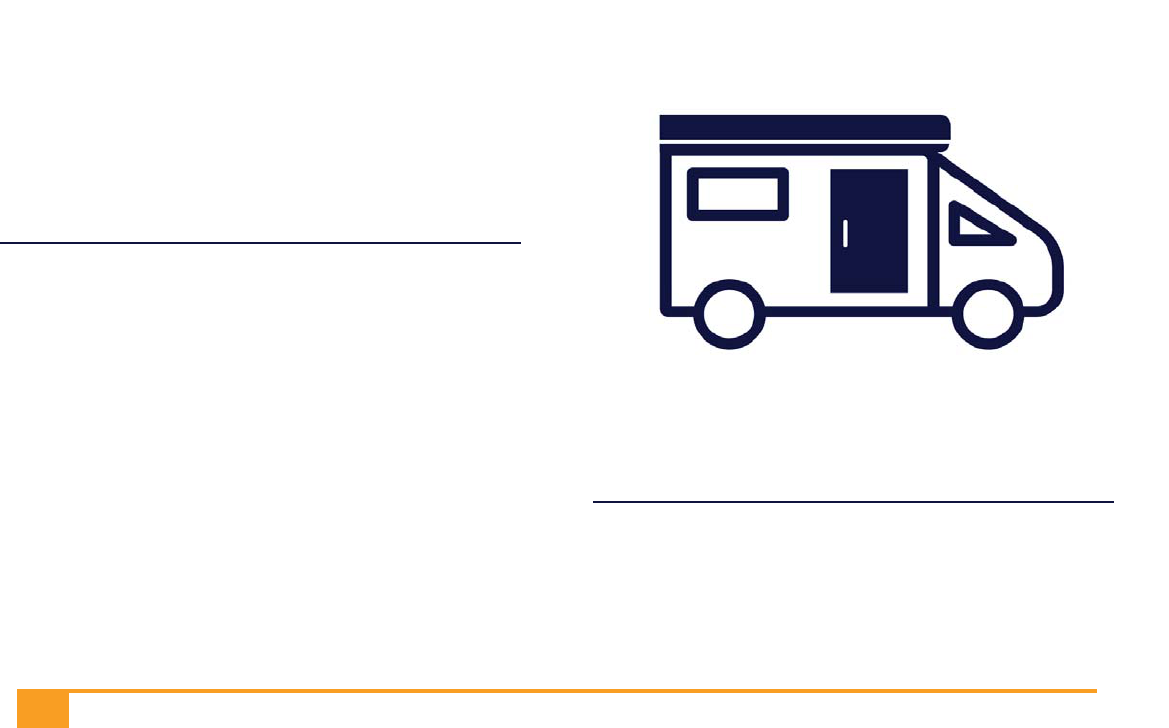
94
Vehicle and RV Parking Options
After housing is lost, people may seek shelter in their vehicles,
and the number of people doing so has increased.
429
Vehicles can provide shelter from the elements, secure
storage for personal belongings, as well as transportation
to employment or other services. Certain vehicles, such as
RVs, also have amenities offered in traditional housing, such
as toilets, running water, and lighting. To accommodate
the growing number of people residing in vehicles, some
communities have taken initial steps to provide safe, legal
lots for people living in vehicles to park them.
430
Since at least 1997, Eugene Oregon has allowed public
and private entities, including non-profi ts, businesses,
or religious organizations, to host vehicles for overnight
parking.
431
The current version of the car camping
ordinance grants permission for up to six vehicles to park
at each site overnight, which must ensure availability of
sanitary facilities, garbage disposal services, and a storage
area for campers to store any personal items so that they
are not visible from any public street.
432
St. Vincent de Paul
Church provides siting and camper screening , and also
takes care of portable restrooms and garbage disposal for
sites that choose to participate in their program, although
some hosts provide their own sanitation services.
433
St.
Vincent de Paul currently operates more than 70 spots at 43
addresses, and other churches, non-profi ts, and business
host additional spots.
434
Additionally, Eugene allows
single-family homeowners in residential districts to host one
vehicle in their driveway or one tent in their backyard.
435
While most parking programs do not accept RVs, some
do. The City of Oakland, California established the fi rst
429 SEE, E.G., ELIZABETH CHOU & SUSAN ABRAM, WHERE DO THE HOMELESS
S
LEEP? LA COUNTY NOW KNOWS, DAILY NEWS (AUG. 28, 2017), HTTP://WWW.
DAILYNEWS.COM/2017/07/28/WHERE-DO-THE-HOMELESS-SLEEP-LA-COUNTY-NOW-
KNOWS/.
430 T
ENT CITY, USA, SUPRA NOTE 12 .
431 SEE EUGENE, OR ORDINANCE NO. 20097 (1997), HTTP://COEAPPS.
EUGENEOR.GOV/CMOWEBLINK/DOCVIEW.ASPX?ID=363273&SEARCHID=FABD64D5-
E09E-4BE3-A78E-BCCFDA48E319 & DBID=0.
432 EUGENE, OR ORDINANCE NO. 20517, HTTP://COEAPPS.EUGENE-OR.
GOV/ CMOWEBLINK/DOCVIEW.ASPX?ID=981598&SEARCHID=FABD64D5-E09E4BE3-
A78E-BCCFDA48E319 & DBID=0.
433 C
AR CAMPING PROGRAM, EUGENE, OR, HTTPS://WWW.EUGENE-OR.
GOV/3703/CAR-CAMPING-PROGRAM (LAST VISITED NOV. 19, 2019).
434 THE CAR CAMPING PROGRAM, HTTPS://WWW.EUGENE-OR.GOV/
DOCUMENTCENTER/VIEW/36022/CAR-CAMPING-FLYER?BIDID= (LAST VISITED NOV.
19, 2019).
435 EUGENE, OR ORDINANCE NO. 20517, HTTP://COEAPPS.EUGENE-OR.
GOV/ CMOWEBLINK/DOCVIEW.ASPX?ID=981598&SEARCHID=FABD64D5-E09E4BE3-
A78E-BCCFDA48E319 & DBID=0.
Safe Lot for RVs in the Bay Area in June 2019.
436
The new
city-sponsored lot will host as many as 50 RVs for up to six
months, and it provides hookups for electricity and water. It
also has on-site toilets and security.
437
More locations are
being developed.
Cities and counties should stop punishing people for living
in their vehicles when they lack housing options and, until
housing options are suffi ciently available, governments
should establish adequate parking options. California bill
AB 891 required cities and counties with a population
greater than 330,000 to establish a safe parking program
for individuals and families living in their vehicles. While
the bill passed through the state legislature, California
Governor Newsome vetoed the bill in October 2019.
In addition to establishing suffi cient and adequate places
where unhoused people can lawfully park, governments
should stop towing and impounding vehicles used as shelter
for unpaid parking or traffi c tickets, in the absence of any
urgent purpose. AB 516 in California would have ended
these so-called “poverty tows”
438
and required advance
notice before tows can occur. Unfortunately, the bill did not
pass.
436 LAURA ANTHONY, NEW CITY-SANCTIONED ‘SAFE RV LOT’ OPENS IN
OAKLAND, ABC 7 NEWS (JUNE 21, 2019), HTTPS://ABC7NEWS.COM/SOCIETY/NEW-
CITY-SANCTIONED-SAFE-RV-LOT-OPENS-IN-OAKLAND/5357751/.
437 I
D.ID.
438 W
ESTERN CTR. ON L. & POVERTY, TOWED INTO DEBT: HOW TOWING
PRACTICES IN CALIFORNIA PUNISH POOR PEOPLE (2019), HTTPS://WCLP.ORG/WP-
CONTENT/UPLOADS/2019/03/TOWEDINTODEBT.REPORT.PDF.

95
GOVERNMENTS SHOULD STOP USING PUNITIVE
APPROACHES TO HOMELESSNESS
As we discuss in detail above, punitive approaches to
homelessness do not work to end homelessness, and they
make it harder for individual’s saddled with unaffordable
fi nes, criminal records, and/or warrants to exit. They
cause extreme harm, and waste limited public resources.
Moreover, laws criminalizing homelessness directly
undermine government’s investments in housing and
services, threatening to doom those constructive efforts.
Repeal, defund, and stop enforcing laws
that criminalize homelessness
The laws, policies, and practices that prohibit or limit the
use of public space by homeless people for life-sustaining
activities should be repealed and defunded. Homeless
people should not be subject to, or threatened with, civil or
criminal sanctions by governmental actors and/or private
security personnel for conducting life-sustaining activities
in public places. In addition, homeless persons’ personal
property should not be subject to unreasonable searches
and seizures.
Prosecutors should exercise their discretion not to charge
homeless people for crimes related to their outdoor survival
activities, and they should dismiss existing cases brought
under laws penalizing homelessness, including those
with outstanding warrants. Moreover, prosecutors can
champion methods for allowing people to receive notice of
court hearings by text or email, rather than by regular mail,
to reduce the number of warrants issued to people with no
regular mailing address.
In 2016, San Francisco threw out 66,000 arrest warrants
issued for violations of criminalization policies, like sleeping
in public, and judges stopped issuing bench warrants for
unpaid tickets issued for those offenses.
439
Los Angeles
recently announced a similar plan to erase hundreds of
thousands of minor citations and warrants. While the aim of
Los Angles’ plan is to relieve pressure on the overburdened
court system and to help stop the cycle of debt and arrests
of Los Angeles’ poorest citizens, the plan has been criticized
as not going far enough to make a signifi cant impact.
440
First, Los Angeles plans to continue writing citations under
its numerous criminalization of homeless policies, and also
to issue warrants and $300 civil fi nes for homeless people
who fail to appear in court.
441
Moreover, the amnesty
program does not include citations and warrants issued in
the past fi ve years.
442
Criminal justice professionals can also support diversion
programs that can keep people experiencing homelessness
out of the criminal justice system. A nationally recognized
example of this is the Law Enforcement Assisted Diversion
program (“LEAD”),
443
which started in Seattle, Washington.
LEAD is the ”result of a unique collaboration between
police, district attorneys, civil rights advocates and public
defenders, political leaders, mental health and drug
treatment providers, housing providers and other service
agencies, and business and neighborhood leaders—all
working together to fi nd new ways to solve real problems
for individuals who did not respond well to a criminal justice
system driven approach that relies on arrest, prosecution,
and punishment.”
444
The goal of the program is to divert
people from the traditional criminal justice system to
community-based programs for individually tailored
439 BOB EGELKO, SF JUDGE EXPLAINS WHY 66,000 ARREST WARRANTS WERE
DISCARDED, SF GATE (DEC. 7, 2016, 11:11 AM), HTTPS://WWW.SFGATE.COM/
CRIME/ARTICLE/S-F-JUDGE-EXPLAINS-WHY-66-000-ARREST-WARRANTS-10645460.PHP.
440 GALE HOLLAND, L.A. VOIDED MILLIONS OF OLD TICKETS AND WARRANTS.
H
ERE’S WHY IT WON’T HELP HOMELESS PEOPLE, LA TIMES (NOV. 4, 2019), HTTPS://
WWW.LATIMES.COM/CALIFORNIA/STORY/2019-11-04/HOMELESS-COURT-WARRANTS-
CITATIONS-AMNESTY-CRIMINALIZATION.
441 ID.ID.
442 ID.
443 T
HE LEAD NATIONAL SUPPORT BUREAU, HTTPS://WWW.LEADBUREAU.ORG/
(
LAST VISITED NOV. 26, 2019).
444 PUBLIC DEFENDER ASS’N, HTTP://DEFENDER.ORG/PROJECTS/LEAD (LAST
VISITED NOV. 26, 2019).
The National Law Center on
Homelessness & Poverty, National
Coalition for the Homeless, and
more than 100 other organizations
launched the Housing Not
Handcuffs campaign in 2016 to
place emphasis on housing as a
solution to homelessness instead
of punishing homeless people with
arrests, incarcerations, and/or fi nes
and fees. For more information on the
Housing Not Handcuffs Campaign,
visit www.housingnothandcuffs.org.

96
services, ranging from housing to mental health care to drug
treatment. A growing number of cities
445
and the states of
California and Colorado have already taken steps to follow
Seattle’s LEAD program, and dozens more jurisdictions are
considering it.
446
Prohibit the criminalization of homelessness
through legislation
Cities using the criminal justice system to effectively push
homeless people out of their city can lead to a “race to the
bottom” where cities compete to make their communities
so inhospitable to homeless people that they will relocate
elsewhere. State governments should enact legislation to
prevent this domino effect. One model of such legislation is
the Right to Rest Act, a model bill developed by the Western
Regional Advocacy Project and their homeless organizing
members. The aim of the proposed legislation, which was
developed based on thousands of surveys of people
experiencing homelessness in those states, is to prohibit
governments from punishing people without housing for
certain survival activities in public space, including resting.
State-specifi c versions of the Right to Rest Act have been
introduced and debated in the Colorado, California, and
Oregon legislatures, but none has yet been enacted.
A similar state bill was introduced in Washington State
by Rep. Mia Gregorson, D-Seatac, in 2019.
447
The bill,
HB 1591, would have prohibited cities and counties from
criminalizing homelessness, prohibited discrimination based
on housing status, and provided funding for legal services
in housing related cases.
448
Representative Gregerson cited
the Martin v. City of Boise decision as the backdrop for her
bill, which did not make it out of the state house.
Private citizens do not have to depend on lawmakers
to enact legislation prohibiting the criminalization of
homelessness. They can also make use of the voter initiative
process. Denver Homeless Out Loud and other homeless
advocates gathered nearly 10,000 signatures to place the
Right to Survive Initiative on Denver’s May 2019 ballot. The
Right to Survive initiative, the fi rst of its kind in the nation,
would have made it unlawful to prohibit non-obstructive
445 EXAMPLES INCLUDE SANTA FE, NM, ALBANY, NY, FAYETTEVILLE, NC,
PORTLAND, OR, HUNTINGTON, WV, CHARLESTON, WV AND BALTIMORE, MD.
446 THE LEAD NATIONAL SUPPORT BUREAU, HTTPS://WWW.LEADBUREAU.ORG/
(
LAST VISITED NOV. 26, 2019).
447 W
ASHINGTON STATE LEGISLATURE, HB 1591 – 2019-20, HTTPS://APP.LEG.
WA.GOV/BILLSUMMARY?BILLNUMBER=1591&YEAR=2019.
448 ID.
camping in spaces open to the public, among other
needed protections for people experiencing homelessness
in Denver. While early polls indicated voter approval,
the initiative was ultimately defeated after the Right to
Survive Campaign was outspent 25 to 1, with opponents
of the initiative raising over $2 million in donations from
developers and business interests.
449
Still, 33,685 Denver
residents voted in favor of the initiative, which garnered
notable law enforcement support and endorsements from
civil rights groups like the ACLU of Colorado and the Center
for Constitutional Rights.
In addition to repealing and defunding criminalization laws,
governments should also take steps to amend the broad
authority of BIDs to collect and spend mandatory property
assessment money on lobbying for and enforcing punitive
approaches to homelessness. Also, governments should
regulate and provide oversight of BID activities within their
jurisdictions to ensure that funds are not being spent on
punitive approaches to homelessness.
449 CHASE WOODRUFF, AFTER HEAVY DEFEAT, RIGHT TO SURVIVE SUPPORTERS
V
OW TO FIGHT ON, WESTWORD (MAY 8, 2019, 6:26 AM), HTTPS://WWW.
WESTWORD.COM/NEWS/AFTER-HEAVY-DEFEAT-RIGHT-TO-SURVIVE-SUPPORTERS-VOW-TO-
FIGHT-ON-11336115.
“I support the Right to Survive because
it will help get people off the streets. As
a former law enforcement professional,
with a focus on corrections, my
experience has taught me that homeless
people are in need of housing and
services - not jail. By eliminating
criminal punishment for simply being
homeless, the Right to Survive will
help law enforcement play a more
productive role in ending homelessness.
We can build trust, which helps us to
successfully connect homeless people
to services and treatment.” - Carrie
Roberts, Former Offi cer and Sheriff’s
Deputy, Colorado Department of
Corrections, Parker, CO

97
Stop sweeping encampments without
offering adequate alternatives
Sweeps of encampments are traumatizing, and often result
in the permanent loss of homeless people’s few possessions.
They are ineffective. They are expensive. Moreover, sweeps
frequently destroy the relationships that outreach workers
have built with residents, and that residents have built with
each other, again, putting further barriers between residents
and permanent housing.
Ending the harmful process of seizing and destroying
homeless people’s property helps to retain homeless
people’s sense of security and stability. It also lessens the
chances that people will be displaced into less familiar,
more dangerous parts of the city where they have no
community or sense of connection.
This is not to say that cities cannot clean public spaces.
Indeed, they should, but cities do not need to permanently
displace unhoused people to clean the outdoor spaces
where they live. Instead, cities can clean at regular times
and/or give people advance notice to temporarily move
when necessary so that the location can be cleaned,
following which they are permitted to return. Moreover,
cities can provide homeless people with basic trash and
sanitation services so that people can keep the outdoor
spaces where they live free of debris and human waste.
Cities should also eliminate police involvement in cleaning
of public space. While police should be involved if there is
criminal activity or genuine safety risks involved, clean-ups
do not ordinarily raise such concerns.
Stop relying on police to be fi rst responders
to homelessness
Homelessness is a social crisis which cannot be solved with
a criminal justice approach. Yet, law enforcement offi cers
are tasked with receiving and responding to complaints
about homelessness, even when there is no attendant
public safety issue. This is an ineffective and inappropriate
use of limited law enforcement resources. It can also be
actively harmful to homeless people who may fi nd the mere
presence of police to be intimidating or even traumatizing.
Outreach workers, including medical and mental
health professionals, are preferable fi rst-responders
to homelessness as they have professional expertise
and knowledge of a community’s homeless housing
and resources that police may not. Outreach workers
should be dedicated staff who meet homeless people
in the places where they are, and their efforts should be
aimed at connecting with and building trust with people
experiencing homelessness. Moreover, outreach should
be housing focused. Deploying outreach workers to offer
“services” that may not actually be helpful to ending one’s
homelessness does not accomplish anything constructive. To
the contrary, refusal of unhelpful “services” can exacerbate
distrust between homeless people and the governments
and/or organizations aiming to help them, and fuel punitive
approaches to homelessness.
An example of constructive street outreach is the Crisis
Assistance Helping Out On The Streets (“CAHOOTS”)
model in Eugene, Oregon. CAHOOTS uses teams made up
of a medic and a mental health professional to respond to
emergency calls about people experiencing homelessness.
It was developed with community involvement, and it
emphasizes offering services, like temporary shelter and a
respite clinic, while maintaining homeless people’s dignity.
When police are deployed as fi rst responders to
homelessness, it is important for these efforts to be done
in combination with homeless service providers. In August
2018, the U.S. Interagency Council on Homelessness
(“USICH”) and The Council of State Governments Justice
Center held a convening to discuss how law enforcement
and service providers can effectively partner to address
homelessness.
450
One recommendation that emerged from
450 JUSTICE CENTER, THE COUNCIL OF STATE GOVERNMENTS, STRENGTHENING
PARTNERSHIPS BETWEEN LAW ENFORCEMENT AND HOMELESSNESS SERVICES SYSTEMS
(JUNE 2019), HTTPS://WWW.USICH.GOV/RESOURCES/UPLOADS/ASSET_LIBRARY/LAW-
Outreach workers, including
medical and mental
health professionals, are
preferable fi rst-responders
to homelessness

98
that meeting is for law enforcement offi cers and homeless
service providers to, “establish the foundation of a strong
partnership by identifying [their] shared goals, metrics for
tracking and assessing progress over time, and clear roles
for each system’s involvement.”
451
Written memoranda of
understanding outlining when and how police can connect
people experiencing homelessness to more appropriate
outreach workers is useful in this process, and they should
be developed.
Improve police training and enforcement
protocols
It is important for communities to provide law enforcement
offi cers with adequate training and written protocols and
policies that can guide police interactions with people
experiencing homelessness. Written protocols should be
developed in partnership with experts from local homeless
services and behavioral health systems, and they should be
paired with basic training for all offi cers on issues ranging
from homelessness to de-escalation techniques.
Miami-Dade County, Florida found that providing mental
health de-escalation training to their police offi cers and
911 dispatchers enabled them to divert more than 10,000
people to services or safely stabilizing situations without
arrest.
452
The jail population fell from over 7,000 to just
over 4,700, and the county was able to close an entire jail
facility, saving nearly $12 million a year.
453
Stories like this
led to the White House launching the Data-Driven Justice
Initiative in June 2016, and now more than 130 jurisdictions
are participating in the effort to use data-driven strategies
to reduce unnecessary incarceration and provide housing
and services instead.
454
The Washington Legal Clinic for the Homeless has also
provided effective training for the DC Metropolitan Police
Department for the last twenty years.
455
The purpose of
ENFORCEMENT-AND-HOMELESSNESS-SERVICE-PARTNERSHIP-2019.PDF.
451 I
D.ID.
452 WHITE HOUSE, FACT SHEET: LAUNCHING THE DATA-DRIVEN JUSTICE INITIATIVE:
DISRUPTING THE CYCLE OF INCARCERATION (2016), HTTPS://OBAMAWHITEHOUSE.
ARCHIVES.GOV/THE-PRESS-OFFICE/2016/06/30/FACT-SHEET-LAUNCHING-DATA-
DRIVEN-JUSTICE-INITIATIVE-DISRUPTING-CYCLE.
453 I
D.
454 ID.; SEE ALSO, DATA-DRIVEN JUSTICE, NATL. ASS’N OF COUNTIES, HTTPS://
WWW.NACO.ORG/RESOURCES/SIGNATURE-PROJECTS/DATA-DRIVEN-JUSTICE (2019).
455 MARCIA BERNBAUM, WASHINGTON LEGAL CLINIC FOR THE HOMELESS
C
ASE STUDY WITH A FOCUS ON THE ‘COMMUNITY EDUCATION AND
ENGAGEMENT’ (M
AY 2018), HTTPS://WWW.LEGALCLINIC.ORG/WP-CONTENT/
UPLOADS/2019/04/A-FOCUS-ON-COMMUNITY-EDUCATION-AND-ENGAGEMENT-BY-
MARCIA-BERNBAUM-PHD.PDF.
the training was to “ensure that law enforcement offi cers
understood some of the challenges that people experiencing
homelessness face; the causes of homelessness; and that
simply because some of the people they engage with are
experiencing homelessness doesn’t mean they shouldn’t be
treated with the same respect that everyone deserves.”
456
As
a result of these trainings, in 2011 the Assistant Police Chief
Diane Groomes issued an order establishing that MPD
policy is “to treat homeless persons in a manner that protects
their needs, rights and dignity, while providing appropriate
law enforcement services to the entire community.”
457
GOVERNMENTS SHOULD HELP HOMELESS
PEOPLE MEET BASIC HUMAN NEEDS UNTIL
HOUSING IS AVAILABLE.
People without housing have the same basic human needs
as housed people, but they often lack any safe, stable, and
lawful place to meet those needs. Some of this is attributable
to the fear that, by helping people to meet their basic needs
on the streets, homelessness will be normalized or, worse
yet, enabled. But those unfounded fears ignore the stark
reality: all people must eat, rest, go to the bathroom, and
sleep somewhere. When they cannot do those things
indoors due to a lack of adequate housing and accessible
shelter, then they will do them outside - there simply is no
other choice.
The following recommendations are not housing, and thus
none of them is a solution to homelessness. But they will help
to people without housing to meet their basic human needs
while housing options are pursued, and simultaneously
improve quality of life in communities by reducing trash,
human waste, and personal property stored in public
space.
456 ID.
457 G
ENERAL ORDER, INTERACTIONS WITH HOMELESS PEOPLE, METROPOLITAN
POLICE DISTRICT OF COLUMBIA (OCT. 31, 2011), HTTPS://GO.MPDCONLINE.COM/
GO/GO-OPS-308-14.PDF.

99
Establish places where people can store
their property
One main driver of complaints about homelessness is the
presence of homeless people’s personal property in public
space. These complaints lead to sweeps and property
destruction, and also to laws outlawing storing property in
public, even though there is no reasonable way for people
without housing to comply. As discussed above, the threat
of property loss is signifi cant for homeless people, and it
can affect whether they are able to attend appointments,
hold a job, or even get needed medical treatment. Rather
than essentially outlawing property possession—which is
impractical, expensive to enforce, and may be illegal—
cities would be far better off establishing places where
homeless people can securely store their possessions.
This not only meets the needs of homeless people, it also
provides a constructive response to complaints.
Some cities offer storage facilities, sometimes established
pursuant to settlement agreement. Most recently, in Lyall v.
City of Denver, a settlement agreement established notice
and property storage protocols as a resolution to a class
action brought on behalf of unhoused people in Denver
subject to the city’s ongoing sweeps. Per the agreement,
any items of property “that could reasonably be assumed to
have value to any person will be collected and stored.”
458
The storage facility is required to be open at least three
days per week as early as 6am, and at least one day until
6pm. The settlement agreement also requires the city to
make an estimated 200 storage lockers available for use,
which may be used for up to thirty days.
459
Merely requiring temporary storage of homeless people’s
property does not guarantee, however, that their property
will be safeguarded or returned. Due care for individual’s
property, no or low identifi cation requirements, and
appropriate siting of the storage facility—which will likely
be accessed by foot or public transit—is critical. Moreover,
storage facilities should be open daily and not limited only
to normal
458 SEE FULL AND FINAL RELEASE AND SETTLEMENT AGREEMENT (FEB. 2019),
AVAILABLE AT HTTPS://DENVERHOMELESSOUTLOUD.FILES.WORDPRESS.COM/2019/04/
LYALL-ET-AL.-V.-DENVER-COMPLETE-FINAL-SETTLEMENT-AGREEMENT-1.PDF.
459 ID.
Provide access to toilets
All people dispel human waste, and most of us do multiple
times a day. People with certain medical conditions,
pregnant women, and others may urinate and defecate
even more frequently than normal. Yet, homeless people
often lack access to toilets where they can safely deposit
their human waste, leading inevitably to urine and feces in
outdoor places where they do not belong. The accumulation
of human waste in public is more than just unsightly and
malodorous; it can be threatening to public health.
The best solution to reducing human waste in outdoor
locations is to expand access to toilets. In many cities, there
are no public bathrooms that are regularly accessible to
homeless people. Cities should expand access to regularly
serviced toilets in locations where homeless people can
readily access them.
Provide unhoused people with trash
services
People who live outside often lack access to trash cans,
yet all human beings produce trash waste. With nowhere
to deposit that waste, people who live outside quickly
become surrounded by trash, which can lead to expensive,
harmful, and futile sweeps. Rather than wasting energy and
money on punishing homeless people for disposing of trash
in public when there are no other options, cities should
invest trash services to people living outside. An example of
how this can work in practice is the Triangle Works cleaning
program in Denver, Colorado, which is a fi ve-person crew
responsible for cleaning the streets near a park where many
homeless people stay outside.
460
That cleaning crew has
not only made a positive impact by providing trash services
to certain encampments, it also helps to keep public areas
clean, reducing the likelihood of spread of disease and
improving aesthetics.
Along with general trash services, cities should consider
offering “sharps” containers for safe disposal of needles
discarded by diabetics, substance users, and others.
460 DENVER HOMELESS OUT LOUD, FIRST 100-DAY PLAN FOR 2019 DENVER
M
UNICIPAL GOVERNMENT ACTION PLAN FOR RIGHTS, DIGNITY, AND HOUSING
(2019),HTTPS://DENVERHOMELESSOUTLOUD.FILES.WORDPRESS.COM/2019/07/100-
DAY-ACTION-PLAN.PDF.

100
The reduction of needles strewn in public space carries
obvious benefi ts to all users of public space, and it also
directly responds to a common complaint about homeless
encampments.
Provide people with shower and laundry
services
The inability to stay clean for lack of sanitation facilities is
demoralizing to people, and it contributes to anti-homeless
stigma. It limits job prospects, and even can be the basis for
a person to be excluded from public transit, public libraries,
and other locations available to the rest of the public. It is
also a dangerous proposition for people who, without the
ability to stay clean, are at heightened risk of becoming
sick and/or developing infections. To assist people with
their hygiene needs, cities should provide access to places
where homeless people can shower and do laundry.
Local governments should take steps to ensure that
existing public shower facilities are accessible to people
experiencing homelessness. They should also expand
access by, for example, offering shower trucks. An example
of a highly successful and well-regarded mobile shower
truck program is Shower to the People, operating in St. Louis,
Missouri. At least four times a week in the evening, the truck
is available in various locations around St. Louis to typically
serve as many as 50 unhoused people who would otherwise
not have access to a way to get clean. The program got
started when one local pastor, John Austin, purchased a
1998 GMC box truck, relying on donations secured from
social media. An RV center outside of St. Louis agreed to
outfi t the truck with plumbing and shower amenities for free
in support of the mission. Now, the program is supported by
grants and donations and is fi nancially independent.
461
The
program has been so successful that it is expanding services
to add additional shower stalls, and to include washers,
dryers, and a barber station for haircuts and shaves. It also
offers needed hygiene products, like soap, toothbrushes
and toothpaste, and feminine hygiene products. Key to the
success of the program is the program’s approach to their
clientele as friends and neighbors, and not just a number to
be served. Also key has been the support of the city, which
provided free water to the program. The goal is to expand
the system to additional cities across the country by the end
of 2020.
Local governments should also offer access to laundry
services. As with mobile shower programs, laundry trucks
can help to meet that need. A good example is the Laundry
Truck LA program, which is a mobile laundry services
operating multiple days a week in the Los Angeles area.
462
The program is meant to help provide people with a free way
to wash their clothes, which is an important accompaniment
to shower services, and also to provide people with a
sense of community while they do their laundry. Detergent is
provided to help reduce the amount of things that homeless
people must carry to and from the service.
463
HELP PEOPLE MEET THEIR NEED FOR SHELTER
FROM THE ELEMENTS
Low-Barrier Emergency Shelters
Emergency shelters are not housing, and thus they are not
a solution to homelessness. But, providing access to low-
barrier emergency shelters is one way that cities can help
people without housing to meet their basic human need for
shelter until housing is available.
As described in detail above, many emergency shelters
provide only temporary accommodation, sometimes for a
single night at a time. Such arrangements, while helpful to
461 RENE DELGADILLO, AFTER A YEAR OF HELPING ST. LOUIS’ HOMELESS
G
ET SHOWERS, FOUNDER SEEKS EXPANSION, ST. LOUIS POST-DISPATCH (AUG. 4,
2017), HTTPS://WWW.STLTODAY.COM/NEWS/LOCAL/METRO/AFTER-A-YEAR-OF-
HELPING-ST-LOUIS-HOMELESS-GET-SHOWERS/ARTICLE_495D570C-E0FB-502F-BFB3-
C8097E7FCBC3.HTML.
462 L
AUNDRY TRUCK LA HELPS GIVE HOMELESS PEOPLE A FRESH START, INVISIBLE
P
EOPLE, HTTPS://INVISIBLEPEOPLE.TV/LAUNDRY-TRUCK-LA-HELPS-GIVE-HOMELESS-PEOPLE-A-
FRESH-START/ (LAST VISITED NOV. 26, 2019).
463 ID.
“[Shower to the People has]
been such a blessing, I can’t
even tell you. I wish we had
about fi ve more trucks. People
in the streets want to be clean,
it’s almost as important as the
food we eat.” – Regina Coey,
user of service
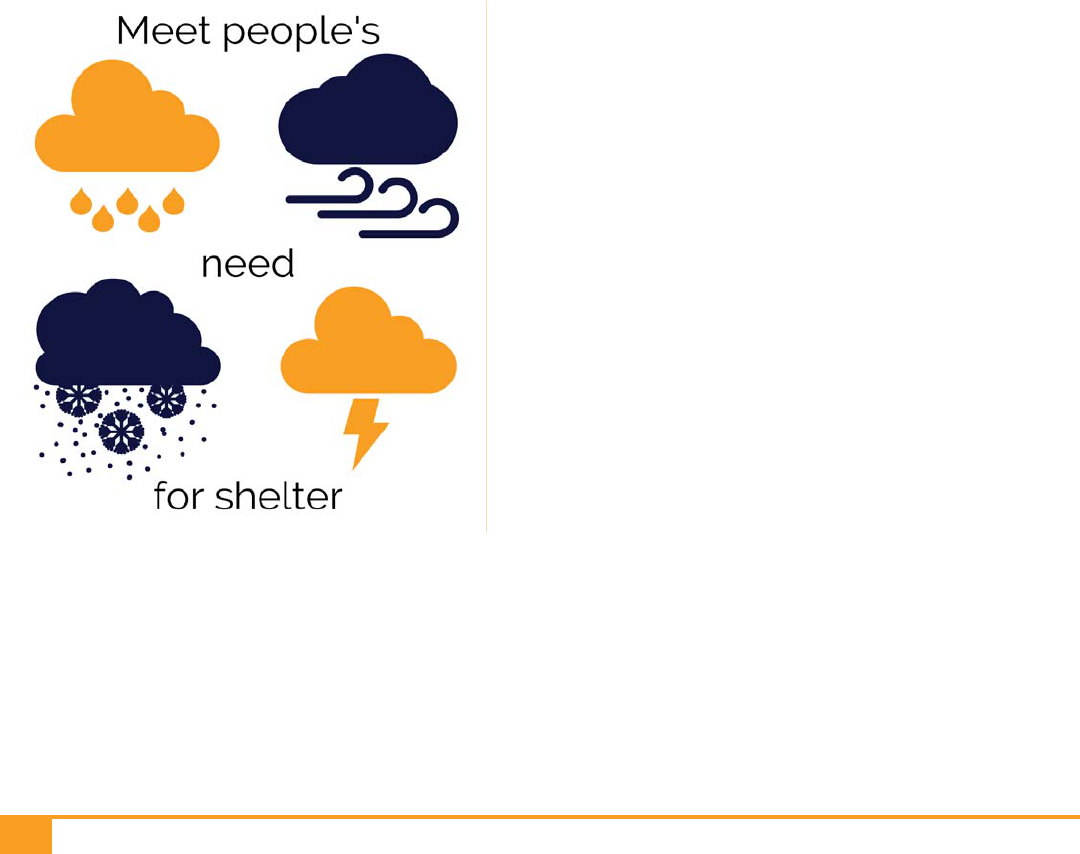
101
some each night, cannot be relied upon by an individual
for regular shelter access, nor can it be accessed at all by
people who work in the evenings or at night. Moreover,
congregate shelter settings may be medically intolerable
to people with certain disabilities. Indeed, shelters without
appropriate medical staff may exclude people based on
their lack of mobility and/or mental health.
Still, low-barrier emergency shelters can play an important
role in a city’s homeless services continuum, and local
governments, faith organizations, and non-profi ts offering
emergency shelter services should adopt a low-barrier
shelter model. A feature of this model is to meet the needs of
all household members, and not require self-defi ned family
members to separate from each other. Other key criteria for
low-barrier shelters include not making access contingent
on minimum income requirements, lack of criminal history,
or sobriety, and to allow people to enter with their pets and
personal property.
Emergency shelters should be focused on exits to permanent
housing. Policies should also promote dignity and respect for
people using the facility, including by offering a grievance
and appeal process for people to use when they have a
complaint about mistreatment.
Shelter environments should be safe, clean, and
accessible to the fullest extent possible to people with
disabilities and/or who have experienced trauma. But, it
is important to recognize that even the best congregate
shelter environments are not appropriate for all people
experiencing homelessness. Shelters also do not offer the
privacy and/or autonomy enjoyed by people in private
homes, such as the ability to enter and exit at will. Thus,
cities should not rely on temporary, congregate shelters as
adequate alternatives to housing, or even to people’s tents
and vehicle homes.
Communities should not attempt to force people into using
low-barrier shelters under pain of arrest or fi nancial penalty.
Doing so perpetuates harmful, punitive approaches to
homelessness, and also fails to produce the positive results
fl owing from investment in permanent housing using a
Housing First model.
Authorized Encampments
As with emergency shelters, authorized encampments are
not a permanent solution to homelessness. Housing is the
only permanent solution. But safe and lawful homeless
encampments can be a critical interim measure for helping
to unhoused people while housing options are pursued.
Local governments should develop constructive
encampment policies, including designating a suffi cient
number of adequate areas where homeless people may
safely and lawfully camp and store their belongings. To
reduce harm to homeless residents and the surrounding
communities, encampments should be provided with trash
service, water service, and other necessary services, like
toilets.
In addition, local governments should develop constructive
policies for addressing existing homeless encampments
modeled on federal guidance and our Encampment
Principles and Best Practices. At a minimum, state and local
governments should develop policies for cleaning public
places that do not displace homeless people from public
lands, nor result in the destruction of their belongings, when
there is no adequate housing alternative. Our Encampment
Principles are available in Appendix B of this report.

102
Safe Parking Lots
Beyond establishing encampment communities, cities can
also engage homeowners to establish places for people
living in tents or RVs to temporarily live. Hawaii’s Yard Rental
Proposal, HB 968, provides an example of how this can be
done. The bill would grant homeowners the ability to rent
yard or driveway space to people living in tents or RVs, and
provides an exemption to any zoning ordinances unless the
lease would violate health or safety regulations or other
private agreements. The bill ultimately failed to pass, but it
can still be a useful model to other communities.
Help people access income
People living without housing have diffi culty getting and
maintaining employment, limiting their access to needed
cash. To meet the need for cash that can be used to
purchase necessities, such as medication and access
to transportation, some people will panhandle. As an
alternative to panhandling, some communities have
implemented day labor programs to provide income and
access to services for people who would otherwise beg.
Albuquerque, New Mexico, operates the There’s a Better
Way campaign to offer panhandlers day labor, which
typically includes landscaping work under the supervision
of the city’s Solid Waste Department.
464
Syracuse, New
york operates a similar program. Three days a week the
city’s Hire Ground van picks up panhandlers to offer them
lunch, access to a social worker, and $50 cash at the end
of a day of labor.
465
While these programs are helpful for getting people access
to much needed cash, these programs do not provide
incomes suffi cient to regain housing.
464 ‘THERE’S A BETTER WAY’, HOPE WORKS, HTTPS://WWW.HOPEWORKSNM.
ORG/PROGRAMS-AND-SERVICES/THERES-A-BETTER-WAY/
465
HTTPS://WWW.SYRACUSE.COM/NEWS/2019/05/PANHANDLERS-WOULD-
RATHER-WORK-FOR-THEIR-MONEY-NEW-SYRACUSE-DAY-LABOR-EFFORT-FINDS.HTML (LAST
VISITED NOV. 26, 2019).
GOVERNMENTS SHOULD ENACT POLICIES
TAILORED TO HOMELESS YOUTH NEEDS
Most states do not allow minors to sign themselves into
a shelter for more than 72 hours without parental consent
or the intervention of law enforcement or child welfare.
466
Under a typical state law or licensing requirement, when
a youth arrives at a shelter the provider has a certain time
period, usually 48 to 72 hours, in which the shelter must notify
the youth’s parent or guardian or, in some circumstances
child protective services and/or law enforcement, of the
youth’s admission to the shelter. As a result, a youth under
18 may be incentivized to stay on the streets of another
unsafe environment rather than access area services. To
help address this problem,
Texas enacted a state law allowing unaccompanied youth
ages 16 and over to stay in a transitional living program
without parental consent.
467
State laws limit housing options other than shelters, as well.
Statutes that prohibit harboring a runaway impose potential
liability on any adult who provides a runaway minor with a
place to stay, even if that place is safe and far superior to
the child’s family home and/or the streets.
Also, it is diffi cult for minors to access permanent housing
on their own behalf, as they have no legal right to enter
contracts. This makes a lease between a minor and a
landlord unenforceable in many states. Oregon took steps
to address this problem by enacting a law that allows youth
age 16 and over to enter into binding leases and utility
services agreements independently and without parental
consent.
466 TRUE COLORS FUND, STATE INDEX ON YOUTH
H
OMELESSNESS (2018), AVAILABLE AT HTTPS://DRIVE.GOOGLE.COM/FILE/
D/14HCGF6GWXF7AT2KANWLULCIE1NPN-Z5C/VIEW.
467 TEXAS FAMILY CODE §32.203.

103
GOVERNMENTS SHOULD PREVENT
HOMELESSNESS BEFORE IT HAPPENS
Infl ows into homelessness exceed the pace at which
homeless people become rehoused. To end our
homelessness crisis, we must prevent housing loss before
it happens.
Enact “Just Cause” eviction protections and
rent stabilization laws
In many states, renters in privately owned rental housing
may be evicted after their lease has expired, even if they
are responsible tenants. No reason or “just cause” is
needed before someone can be forced from their housing,
usually upon as little as 30 days’ notice, which may not
be enough time to fi nd adequate alternative housing. These
evictions without cause are particularly problematic in tight,
expensive rental markets where landlords may displace
existing tenants in favor of new renters who can afford
higher rents. Just cause eviction laws, which limit the reasons
by which renters may be legally evicted from their housing,
are important for protecting renters’ security of tenure.
Just cause eviction protections are most effective when
paired with rent stabilization policies which protect renters
by limiting annual rent increases to a reasonable amount. In
February 2019, the Oregon state legislature enacted Senate
Bill 608—the fi rst statewide just cause and rent stabilization
law in the country. The bill limits rent increases to 7% each
year, and it requires landlords to have good cause for
evicting renters. California followed suit in October 2019
by enacting its own statewide rent control policy, Assembly
Bill 1482, which limits rent increases to 5%, plus the local
rate of infl ation.
Prohibit discriminatory housing policies
Housing discrimination creates barriers to housing access
that contribute to and perpetuate homelessness. Denial of
housing based on an individual’s criminal, eviction, or credit
history is common, and is often a proxy for discriminating
against poor people of color. It can also unfairly prevent
people who were unjustly arrested or evicted from gaining
access to housing through no fault of their own. States
and local governments should enact laws that prohibit
discrimination based upon an individual’s criminal, eviction,
or credit history that is unrelated to the individual’s future
ability to abide by reasonable terms of tenancy.
Refusal to rent to people based upon their sources of
income is a common and discriminatory housing practice
that disproportionately harms elderly, disabled, and other
vulnerable groups of people. Policies that reject recipients
of social security, child support, federal income supports,
or Section 8 housing vouchers, should be outlawed and
enforced to ensure that discrimination based on legitimate
sources of income do not unfairly deny housing access to
poor people.
Criminal records—even for minor and/or non-violent
offenses—can also bar someone from accessing rental
housing under rental admission policies that exclude
people on the basis of their criminal histories. Even when the
tenant can demonstrate an ability to pay rent, they may be
left without housing by virtue of their backgrounds. Matthew
Charles, a man released from prison under the First Step
Act as a result of advocacy by famous socialite and reality
tv star, Kim Kardashian, encountered this problem when his
application for a Tennessee apartment was denied—even
though Kardashian offered to pay his fi rst six months’ rent in
advance.
468
468 KAYLA EPSTEIN, WHY THIS FORMER INMATE IS STRUGGLING TO RENT A
H
OME, EVEN WITH KIM KARDASHIAN’S HELP, MERCURY NEWS (MAR. 19, 2019,
5:32 AM), HTTPS://WWW.MERCURYNEWS.COM/2019/03/19/FORMER-INMATE-
STRUGGLES-TO-RENT-HOME-EVEN-WITH-KIM-KARDASHIANS-HELP/.
Denial of housing
based on an
individual’s criminal,
eviction, or credit
history is common, and
is often a proxy for
discriminating against
poor people of color.
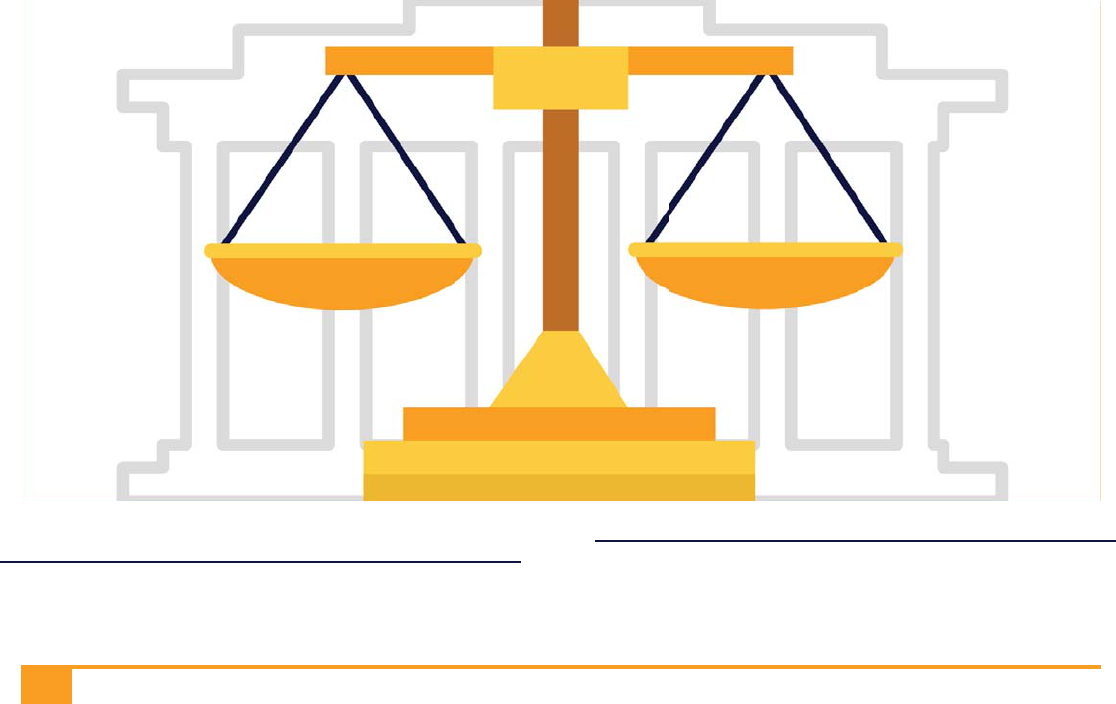
The City of Seattle has taken a constructive policy step by
passing the Fair Chance Housing legislation.
469
The law,
which went into effect in February 2018, prevents landlords
from automatically or categorically denying applicants
with criminal histories, including records of arrest and/
or conviction. It is enforced by the Seattle Offi ce for Civil
Rights.
Guarantee a right to counsel in housing
cases
Access to counsel in cases involving housing rights is critical
to addressing the homelessness crisis. Attorneys can help
negotiate additional time to move out, secure the return of
deposits and prepaid rents, and/or help renters to avoid
default judgments against them. Moreover, counsel helps to
even the power imbalance in housing courts where 90% of
landlords are represented by counsel, but roughly the same
percentage of tenants are not.
Yet, access to counsel is elusive for poor people as legal aid
offi ces are unable to meet the need for services to defend
against evictions. Although roughly one in fi ve Americans
469 FAIR CHANCE HOUSING, SEATTLE.GOV, HTTPS://WWW.SEATTLE.GOV/
CIVILRIGHTS/CIVIL-RIGHTS/FAIR-HOUSING/FAIR-CHANCE-HOUSING (LAST VISITED NOV. 26,
2019).
qualify for free legal assistance, most are turned away due t
to a lack of available resources. In addition, many millions
more do not qualify for free services, yet they are still too
poor to afford legal representation.
Laws that guarantee a right to counsel in eviction cases
can address this gap in services, prevent unnecessary
eviction, and also save taxpayer dollars. Mandatory legal
representation for evictions has proven effective in New
York City where 84% of tenants remain in their homes.
Moreover, a study done on behalf of the New York City
Bar Association’s Pro Bono and Legal Services Committee
found that providing free legal counsel to low-income
tenants at risk of eviction would result in a net savings to the
city of $320 million each year.
To assist with right to counsel advocacy, the National
Coalition for a Civil Right to Counsel and Washington
Appleseed developed a manual for organizations wishing
to create pilot projects that are designed to generate
statistical data demonstrating the benefi ts – including cost
savings – of providing a right to counsel.
470
470 WASHINGTON APPLESEED, DEVELOPING CIVIL RIGHT TO COUNSEL PILOT
P
ROJECTS: A RESOURCE FOR DESIGNING AND IMPLEMENTING EFFECTIVE PROGRAMS
(2012), HTTP://CIVILRIGHTTOCOUNSEL.ORG/UPLOADED_FILES/117/DEVELOPING_CIVIL_
RIGHT_TO_COUNSEL_PILOT_PROJECTS__WA_APPLESEED_.PDF.
104
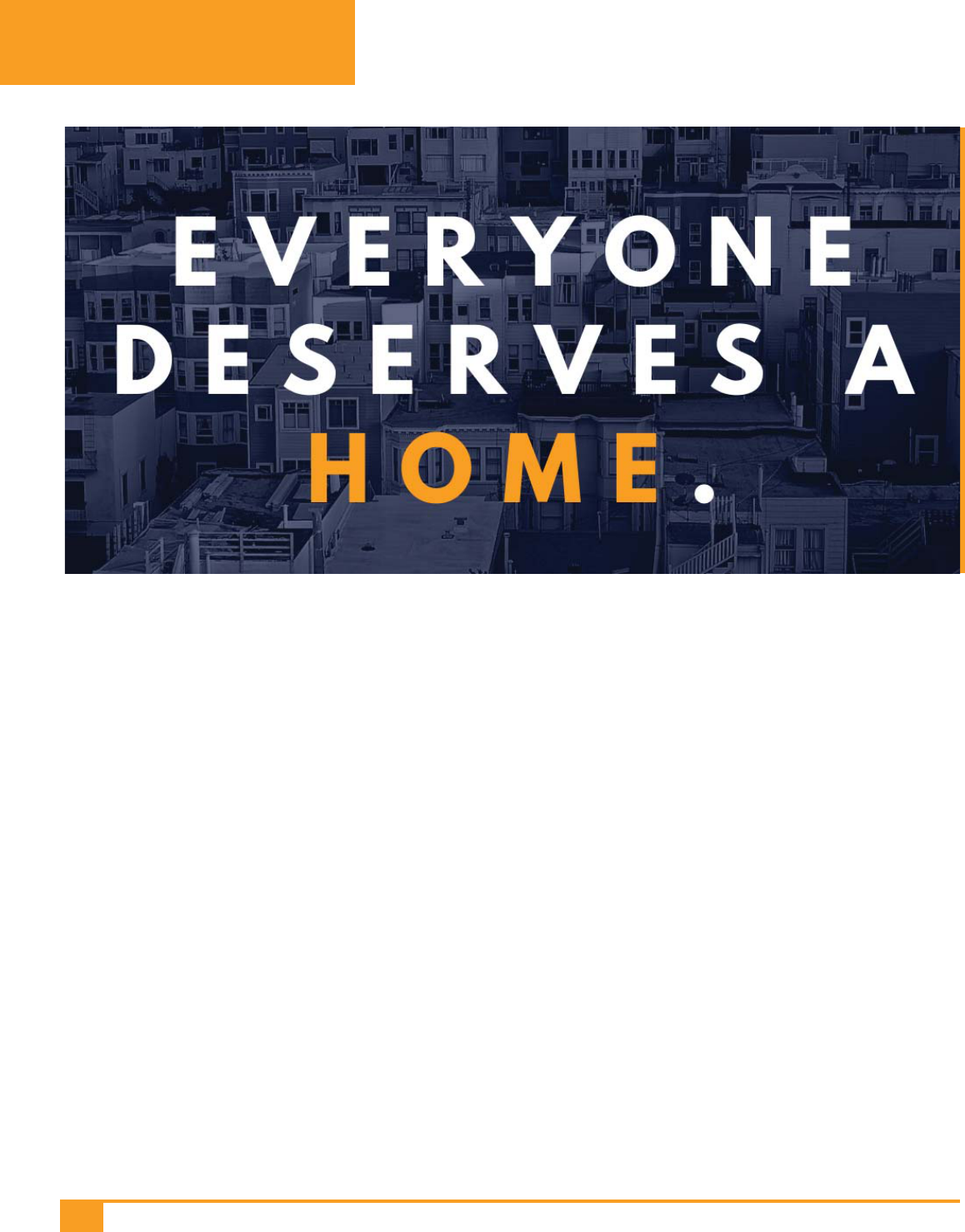
O
ver the past thirteen years, there has been a
dramatic increase in criminalization laws, yet
access to affordable housing grows ever more
elusive.
Criminally and civilly punishing homeless people for
engaging in life-sustaining activities in public space does
not solve the underlying causes of homelessness, but
rather exacerbates them by creating barriers to housing,
employment, and services needed to escape life on the
streets. Moreover, these laws waste precious and limited
community resources by temporarily cycling homeless
people through the costly criminal justice system to no effect
– and at great taxpayer expense.
Instead of relying upon ineffective, expensive, and potentially
illegal criminalization laws to address homelessness,
communities should pursue constructive policy solutions that
work to prevent and end homelessness. Most importantly,
federal, state, and local governments should invest in
affordable housing at the
CONCLUSION
level necessary to meet the human need, and eliminate
barriers to housing access imposed by discriminatory
housing practices.
We can end homelessness in America and, in doing
so, improve the quality of life for everyone. This will not
happen, however, as long as communities continue to rely
upon misguided criminalization policies that punish people
for being homeless, without offering real solutions to the
problem.
105

2019 Prohibited Conduct Chart
Location Sleeping, Camping, Lying and Sitting, and Vehicle Restrictions Loitering and Vagrancy Begging
Food
Sharing
State City
Sleeping in
public city-
wide
Sleeping in
particular
public places
Camping in
public city-
wide
Camping in
particular
public places
Sitting/lying
in particular
public places
Lodging, living, or
sleeping in vehicles
(or parking a
vehicle used as a
lodging/living
accommodation)
Loitering/
Loafi ng/
Vagrancy
city-wide
Loitering/
Loafi ng in
particular
public places
Begging in
public places
city-wide
Begging in
particular
public places
Food Sharing
city-wide or
in particular
public places
(i.e. bans)
Total number of surveyed cities
with this type of ordinance
39 72 69 107 103 93 64 113 69 121 17
Percent of surveyed cities with
this type of ordinance
21% 39% 37% 57% 55% 50% 34% 60% 37% 65% 9%
AK Anchorage
xxx x x
AK Fairbanks
x
AK Juneau
xxxxx
AL Mobile
xxx x
AL Montgomery
xx xxx
AR Fayetteville
xx x
AR Little Rock
xxx xxx
AR
North Little
Rock
x
AZ Glendale
xx x x
AZ Mesa
xxxx xxx
AZ Phoenix
xxxxxx
AZ Scottsdale
xxx x x
APPENDIX A
105

2019 Prohibited Conduct Chart
Location Sleeping, Camping, Lying and Sitting, and Vehicle Restrictions Loitering and Vagrancy Begging
Food
Sharing
State City
Sleeping in
public city-
wide
Sleeping in
particular
public places
Camping in
public city-
wide
Camping in
particular
public places
Sitting/lying
in particular
public places
Lodging, living, or
sleeping in vehicles
(or parking a
vehicle used as a
lodging/living
accommodation)
Loitering/
Loafi ng/
Vagrancy
city-wide
Loitering/
Loafi ng in
particular
public places
Begging in
public places
city-wide
Begging in
particular
public places
Food Sharing
city-wide or
in particular
public places
(i.e. bans)
AZ Tempe
xx x x xx
AZ Tucson
xxx xx
CA Bakersfi eld
xxx x xxx
CA Berkeley
xxx x
CA El Cajon
xxxxx x x x x
CA Fresno
xxx x x
CA Long Beach
xxx x x x
CA Los Angeles
xxx xxx
CA Modesto
xxx x x x
CA Oakland
xxxxxx
CA
Redondo
Beach
xx x xxx
CA Sacramento
xxx x x
CA San Bruno
xx x
CA San Diego
xx x x
106

2019 Prohibited Conduct Chart
Location Sleeping, Camping, Lying and Sitting, and Vehicle Restrictions Loitering and Vagrancy Begging
Food
Sharing
State City
Sleeping in
public city-
wide
Sleeping in
particular
public places
Camping in
public city-
wide
Camping in
particular
public places
Sitting/lying
in particular
public places
Lodging, living, or
sleeping in vehicles
(or parking a
vehicle used as a
lodging/living
accommodation)
Loitering/
Loafi ng/
Vagrancy
city-wide
Loitering/
Loafi ng in
particular
public places
Begging in
public places
city-wide
Begging in
particular
public places
Food Sharing
city-wide or
in particular
public places
(i.e. bans)
CA San Francisco
xx x xx
CA San Jose
xx x x x
CA
San Louis
Obispo
xx x xxx
CA Santa Barbara
xxxxx x xx
CA Santa Cruz
xxxxx x
CA
South Lake
Tahoe
xxxx x x
CA Tracy
xxx x x x
CA Ukiah
xxx
CA Union City
xxxx x
CO Boulder
xxxxx x
CO
Colorado
Springs
xxxx xx
CO Denver
xxx xx
CO Lakewood
xxx
CT Hartford
xx
107

2019 Prohibited Conduct Chart
Location Sleeping, Camping, Lying and Sitting, and Vehicle Restrictions Loitering and Vagrancy Begging
Food
Sharing
State City
Sleeping in
public city-
wide
Sleeping in
particular
public places
Camping in
public city-
wide
Camping in
particular
public places
Sitting/lying
in particular
public places
Lodging, living, or
sleeping in vehicles
(or parking a
vehicle used as a
lodging/living
accommodation)
Loitering/
Loafi ng/
Vagrancy
city-wide
Loitering/
Loafi ng in
particular
public places
Begging in
public places
city-wide
Begging in
particular
public places
Food Sharing
city-wide or
in particular
public places
(i.e. bans)
CT New Haven
xxx x x
CT Norwalk
xxx
CT Stamford
xx
DC Washington
xx x x x xx
DE Dover
xxx
DE Wilmington
xxx
FL Bradenton
xx
FL Clearwater
xxxxxx x
FL
Daytona
Beach
xx x x
FL
Fort
Lauderdale
xxxxxxx
FL Fort Myers
xx x xx
FL Gainesville
xx x xxx
FL
Hallandale
Beach
xxxx x x x
FL Jacksonville
xxxx xx
108

2019 Prohibited Conduct Chart
Location Sleeping, Camping, Lying and Sitting, and Vehicle Restrictions Loitering and Vagrancy Begging
Food
Sharing
State City
Sleeping in
public city-
wide
Sleeping in
particular
public places
Camping in
public city-
wide
Camping in
particular
public places
Sitting/lying
in particular
public places
Lodging, living, or
sleeping in vehicles
(or parking a
vehicle used as a
lodging/living
accommodation)
Loitering/
Loafi ng/
Vagrancy
city-wide
Loitering/
Loafi ng in
particular
public places
Begging in
public places
city-wide
Begging in
particular
public places
Food Sharing
city-wide or
in particular
public places
(i.e. bans)
FL Key West
xxxxx x
FL Lake Worth
xxxx x xxxx
FL Miami
xxxxxxxx
FL Naples
xxx
FL Orlando
xxxxx x x
FL Palm Bay
xx xxxx
FL Sarasota
xxxxx x x x
FL St. Augustine
xx x xxx
FL Tampa
xxxx x x x
GA Albany
xxx xx
GA Athens
xx x x x
GA Atlanta
xxxxx xx
GA Augusta
xx xx x
GA Brunswick
xx x x x
109

2019 Prohibited Conduct Chart
Location Sleeping, Camping, Lying and Sitting, and Vehicle Restrictions Loitering and Vagrancy Begging
Food
Sharing
State City
Sleeping in
public city-
wide
Sleeping in
particular
public places
Camping in
public city-
wide
Camping in
particular
public places
Sitting/lying
in particular
public places
Lodging, living, or
sleeping in vehicles
(or parking a
vehicle used as a
lodging/living
accommodation)
Loitering/
Loafi ng/
Vagrancy
city-wide
Loitering/
Loafi ng in
particular
public places
Begging in
public places
city-wide
Begging in
particular
public places
Food Sharing
city-wide or
in particular
public places
(i.e. bans)
GA Columbus
xxxxxx
GA Savannah
xxx
GA Statesboro
xxx
GA
Stone Moun-
tain
xxxxx
GA Washington
x
HI Honolulu
xxx xx
HI Maui County
xxx x
IA Bettendorf
xx x
IA Cedar Rapids
xx x x xxx
IA Davenport
xx xx xx
IA Des Moines
xx xxxx
IA Waterloo
xxx x xx
ID Boise
xxxx x xxx
ID Idaho Falls
xx
11 0

2019 Prohibited Conduct Chart
Location Sleeping, Camping, Lying and Sitting, and Vehicle Restrictions Loitering and Vagrancy Begging
Food
Sharing
State City
Sleeping in
public city-
wide
Sleeping in
particular
public places
Camping in
public city-
wide
Camping in
particular
public places
Sitting/lying
in particular
public places
Lodging, living, or
sleeping in vehicles
(or parking a
vehicle used as a
lodging/living
accommodation)
Loitering/
Loafi ng/
Vagrancy
city-wide
Loitering/
Loafi ng in
particular
public places
Begging in
public places
city-wide
Begging in
particular
public places
Food Sharing
city-wide or
in particular
public places
(i.e. bans)
ID Pocatello
xx
IL Chicago
xxx
IL Evanston
xxxx
IL Woodstock
x
IN Bloomington
xx
IN Indianapolis
xxxxx
IN Jeffersonville
xx
IN South Bend
xx xxx
KS Lawrence
xx xxx
KS Topeka
xxx
KS Wichita
xxx xxxx
KY Covington
xx xxx
KY Lexington
xx x
KY Louisville
xx x x
111

2019 Prohibited Conduct Chart
Location Sleeping, Camping, Lying and Sitting, and Vehicle Restrictions Loitering and Vagrancy Begging
Food
Sharing
State City
Sleeping in
public city-
wide
Sleeping in
particular
public places
Camping in
public city-
wide
Camping in
particular
public places
Sitting/lying
in particular
public places
Lodging, living, or
sleeping in vehicles
(or parking a
vehicle used as a
lodging/living
accommodation)
Loitering/
Loafi ng/
Vagrancy
city-wide
Loitering/
Loafi ng in
particular
public places
Begging in
public places
city-wide
Begging in
particular
public places
Food Sharing
city-wide or
in particular
public places
(i.e. bans)
LA Baton Rouge
xx
LA Lafayette
xx xx
LA New Orleans
xxx xx
LA Shreveport
xxx xx
MA Boston
xx xxx
MA Fall River
xx x
MA Worcester
x
MD Baltimore
xxxxxx
MD Elkton
xxx
MD Frederick
xxx xxx
ME Augusta
xxx
ME Bangor
xxx x
ME Portland
xxxx xx
MI Detroit
xxxxx
112

2019 Prohibited Conduct Chart
Location Sleeping, Camping, Lying and Sitting, and Vehicle Restrictions Loitering and Vagrancy Begging
Food
Sharing
State City
Sleeping in
public city-
wide
Sleeping in
particular
public places
Camping in
public city-
wide
Camping in
particular
public places
Sitting/lying
in particular
public places
Lodging, living, or
sleeping in vehicles
(or parking a
vehicle used as a
lodging/living
accommodation)
Loitering/
Loafi ng/
Vagrancy
city-wide
Loitering/
Loafi ng in
particular
public places
Begging in
public places
city-wide
Begging in
particular
public places
Food Sharing
city-wide or
in particular
public places
(i.e. bans)
MI Kalamazoo
xxx
MI Pontiac
xxxx
MN Minneapolis
xxx x xx x
MN St. Paul
xx x xxxx
MO Kansas City
xxxxxx
MO St. Louis
xxxx
MS Biloxi
xxxx
MT Billings
xx x
NC Asheville
xxx xxx
NC Charlotte
xxx x x x
NC Raleigh
xx xxx
ND Fargo
x
ND Grand Forks
xx x
NE Lincoln
xxxx
11 3

2019 Prohibited Conduct Chart
Location Sleeping, Camping, Lying and Sitting, and Vehicle Restrictions Loitering and Vagrancy Begging
Food
Sharing
State City
Sleeping in
public city-
wide
Sleeping in
particular
public places
Camping in
public city-
wide
Camping in
particular
public places
Sitting/lying
in particular
public places
Lodging, living, or
sleeping in vehicles
(or parking a
vehicle used as a
lodging/living
accommodation)
Loitering/
Loafi ng/
Vagrancy
city-wide
Loitering/
Loafi ng in
particular
public places
Begging in
public places
city-wide
Begging in
particular
public places
Food Sharing
city-wide or
in particular
public places
(i.e. bans)
NE Omaha
xxx
NH Concord
xxx x x x
NH Manchester
xx xx x x x
NJ Atlantic City
xx x x x x
NJ Newark
xxxx
NJ Trenton
xxxx
NM Albuquerque
xx x x x
NM Santa Fe
xxxxx x x
NV Las Vegas
xxxx xx
NV
North Las
Vegas
xxx x
NV Pahrump
xxxxx
NV Reno
xx x xxx
NY Buffalo
xx x xx
NY New York
xx x xxx
114

2019 Prohibited Conduct Chart
Location Sleeping, Camping, Lying and Sitting, and Vehicle Restrictions Loitering and Vagrancy Begging
Food
Sharing
State City
Sleeping in
public city-
wide
Sleeping in
particular
public places
Camping in
public city-
wide
Camping in
particular
public places
Sitting/lying
in particular
public places
Lodging, living, or
sleeping in vehicles
(or parking a
vehicle used as a
lodging/living
accommodation)
Loitering/
Loafi ng/
Vagrancy
city-wide
Loitering/
Loafi ng in
particular
public places
Begging in
public places
city-wide
Begging in
particular
public places
Food Sharing
city-wide or
in particular
public places
(i.e. bans)
NY Rochester
xx xx
OH Cincinnati
xxx xx
OH Cleveland
xx xx
OH Columbus
xx x x x
OH Dayton
xx xx
OH Toledo
xxxx
OK
Oklahoma
City
xx xx
OK Tulsa
xx x x x
OR Beaverton
xxx x
OR Corvallis
xxxxx x x
OR Eugene
xxx x x
OR Portland
xxxxx x
PA Allentown
xx xxxx
PA Philadelphia
xx xxx
11 5

2019 Prohibited Conduct Chart
Location Sleeping, Camping, Lying and Sitting, and Vehicle Restrictions Loitering and Vagrancy Begging
Food
Sharing
State City
Sleeping in
public city-
wide
Sleeping in
particular
public places
Camping in
public city-
wide
Camping in
particular
public places
Sitting/lying
in particular
public places
Lodging, living, or
sleeping in vehicles
(or parking a
vehicle used as a
lodging/living
accommodation)
Loitering/
Loafi ng/
Vagrancy
city-wide
Loitering/
Loafi ng in
particular
public places
Begging in
public places
city-wide
Begging in
particular
public places
Food Sharing
city-wide or
in particular
public places
(i.e. bans)
PA Pittsburgh
xx
RI Newport
xxxxx
RI Providence
xx xx
SC Charleston
xxxxxx
SC Columbia
xx x x xx
SD Pierre
xx x x x
SD Rapid City
xxx x
SD Sioux Falls
xxx
TN Memphis
xx
TN Nashville
x
TX Amarillo
xxx x x
TX Austin
xxx x x
TX Corpus Christi
xxx
TX Dallas
xx xx
11 6

2019 Prohibited Conduct Chart
Location Sleeping, Camping, Lying and Sitting, and Vehicle Restrictions Loitering and Vagrancy Begging
Food
Sharing
State City
Sleeping in
public city-
wide
Sleeping in
particular
public places
Camping in
public city-
wide
Camping in
particular
public places
Sitting/lying
in particular
public places
Lodging, living, or
sleeping in vehicles
(or parking a
vehicle used as a
lodging/living
accommodation)
Loitering/
Loafi ng/
Vagrancy
city-wide
Loitering/
Loafi ng in
particular
public places
Begging in
public places
city-wide
Begging in
particular
public places
Food Sharing
city-wide or
in particular
public places
(i.e. bans)
TX El Paso
xx xx
TX Fort Worth
xxx
TX Houston
xx x xx
TX San Antonio
xxx x xxx
UT Salt Lake City
xx x xx
VA Norfolk
xx x x x
VA Richmond
xx xxxx
VA Roanoke
x
VA Suffolk
xx
VA Virginia Beach
xxx x x x x
VT Burlington
xxxx
VT Montpelier
x
WA Olympia
xxxx x
WA Seattle
xx x x
117

2019 Prohibited Conduct Chart
Location Sleeping, Camping, Lying and Sitting, and Vehicle Restrictions Loitering and Vagrancy Begging
Food
Sharing
State City
Sleeping in
public city-
wide
Sleeping in
particular
public places
Camping in
public city-
wide
Camping in
particular
public places
Sitting/lying
in particular
public places
Lodging, living, or
sleeping in vehicles
(or parking a
vehicle used as a
lodging/living
accommodation)
Loitering/
Loafi ng/
Vagrancy
city-wide
Loitering/
Loafi ng in
particular
public places
Begging in
public places
city-wide
Begging in
particular
public places
Food Sharing
city-wide or
in particular
public places
(i.e. bans)
WA Spokane
xxx x
WA Woodinville
xxx
WI Eau Claire
xx xx
WI Madison
xx xx
WI Milwaukee
xx
WV Charleston
xxx
WY Cheyenne
xx
11 8

119
B
ased on input from federal, state, and local
representatives, service providers, and people
experiencing homelessness, as well as relevant
domestic and international laws, our initial findings
revealed certain key principles and corresponding
practices that appear to be important for successful
interventions to end encampments in our communities.
These principles and practices are excerpted from
TENT CITY, USA: The Growth of America’s Homeless
Encampments and How Communities are Responding
(https://www.nlchp.org/Tent_City_USA_2017),
which also includes numerous case studies of
communities implementing these best practices. As
a caution, we note that while incorporating interim
encampments into a plan to end homelessness may
provide homeless individuals with an improvement in
their quality of life and reduce calls for criminalization,
the community must also have a serious and funded
long-term plan that ensures the availability of
permanent, adequate, appropriate housing for all, so
encampments do not become a permanent feature of
our cities and towns.
Encampment Principles and
Practices
Principle 1: All people need safe, accessible, legal
place to be, both at night and during the day, and a
place to securely store belongings— until permanent
housing is found.
• Determine the community’s full need for housing
and services, and then create a binding plan
to ensure full access to supportive services and
housing affordable for all community members so
encampments are not a permanent feature of the
community.
• Repeal or stop enforcing counterproductive
municipal ordinances and state laws that criminalize
sleeping, camping, and storage of belongings.
• Provide safe, accessible, and legal places to sleep
and shelter, both day and night. Provide clear
guidance on how to access these locations.
• Create storage facilities for persons experiencing
homelessness, ensuring they are accessible–close
to other services and transportation, do not require
ID, and open beyond business hours.
Principle 2: Delivery of services must respect the
experience, human dignity, and human rights of those
receiving them.
• Be guided by frequent and meaningful consultation
with the people living in encampments. Homeless
people are the experts of their own condition.
• Respect autonomy and self-governance for
encampment residents.
• Offer services in a way that is sensitive and
appropriate with regard to race, ethnicity, culture,
disability, gender identity, sexual orientation,
and other characteristics. Use a trauma-informed
approach.
Principle 3: Any move or removal of an encampment
must follow clear procedures that protect residents.
Create clear procedures for ending homelessness for
people living in pre-existing encampments, including:
• Make a commitment that encampments will not be
removed unless all residents are first consulted and
provided access to adequate alternative housing
or—in emergency situations—another adequate
place to stay.
• If there are pilot periods or required rotations of
sanctioned encampments, ensure that residents
have a clear legal place to go and assistance with
the transition. Pilot periods or requiring rotation of
legal encampments/parking areas on a periodic
basis (e.g., annually or semi-annually) can help
reduce local “not-in-my-back-yard” opposition, but
shorter time periods hinder success.
APPENDIX B
ENCAMPMENT PRINCIPLES & BEST
PRACTICES

12 0
• Adequate housing must be:
• Safe, stable, and secure: a safe and private
place to sleep and store belongings without fear
of harassment or unplanned eviction;
• Habitable: with services (electricity, hygiene,
sanitation), protection from the elements and
environmental hazards, and not overcrowded;
• Affordable: housing costs should not force people
to choose between paying rent and paying for
other basic needs (food, health, etc.);
• Accessible: physically (appropriate for residents’
physical and mental disabilities, close to/
transport to services and other opportunities)
and practically (no discriminatory barriers, no
compelling participation in or subjection to
religion).
Principle 6: Law enforcement should serve and
protect all members of the community.
• Law and policies criminalizing homelessness,
including those criminalizing public sleeping,
camping, sheltering, storing belongings, sitting,
lying, vehicle dwelling, and panhandling should be
repealed or stop being enforced.
• Law enforcement should serve and protect
encampment residents at their request.
• Law enforcement officers—including dispatchers,
police, sheriffs, park rangers, and private business
improvement district security—should receive crisis
intervention training and ideally be paired with
fully-trained multi-disciplinary social service teams
when interacting with homeless populations.
Beyond these specific recommendations, in order to
create the long-term housing solutions communities
needed to permanently end encampments, we also
encourage individuals and organizations to look
at the model policies of the Housing Not Handcuffs
Campaign: housingnothandcuffs.org.
• Provide sufficient notice to residents and healthcare/
social service workers to be able to determine
housing needs and meet them (recommended
minimum 30 days, but longer if needed).
• Assist with moving and storage to enable residents
to retain their possessions as they transfer either to
housing, shelter, or alternative encampments.
Principle 4: Where new temporary legalized
encampments are used as part of a continuum of
shelter and housing, ensure it is as close to possible to
fully adequate housing.
• Establish clear end dates by which point adequate
low-barrier housing or appropriate shelter will be
available for all living in the legal encampments.
• Protect public health by providing access to water,
personal hygiene (including bathrooms with hand
washing capability), sanitation, and cooking
services or access to SNAPS hot meals benefits.
• Provide easy access to convenient 24-hour
transportation, particularly if services are not co-
located.
• Statutes and ordinances facilitating partnerships
with local businesses, religious organizations, or
non-profits to sponsor, support or host encampments
or safe overnight parking lots for persons living in
their vehicles can help engage new resources and
improve the success of encampments.
• Do not require other unsheltered people
experiencing homelessness to reside in the
encampments if the facilities do not meet their
needs.
Principle 5: Adequate alternative housing must be a
decent alternative.
• Ensure that emergency shelters are low-barrier,
temporary respites for a few nights while homeless
individuals are matched with appropriate permanent
housing; they are not long-term alternatives to
affordable housing and not appropriate in the short
term for everyone. Low-barrier shelter includes the
“3 P’s”—pets, possessions, and partners, as well as
accessible to persons with disabilities or substance
abuse problems.
